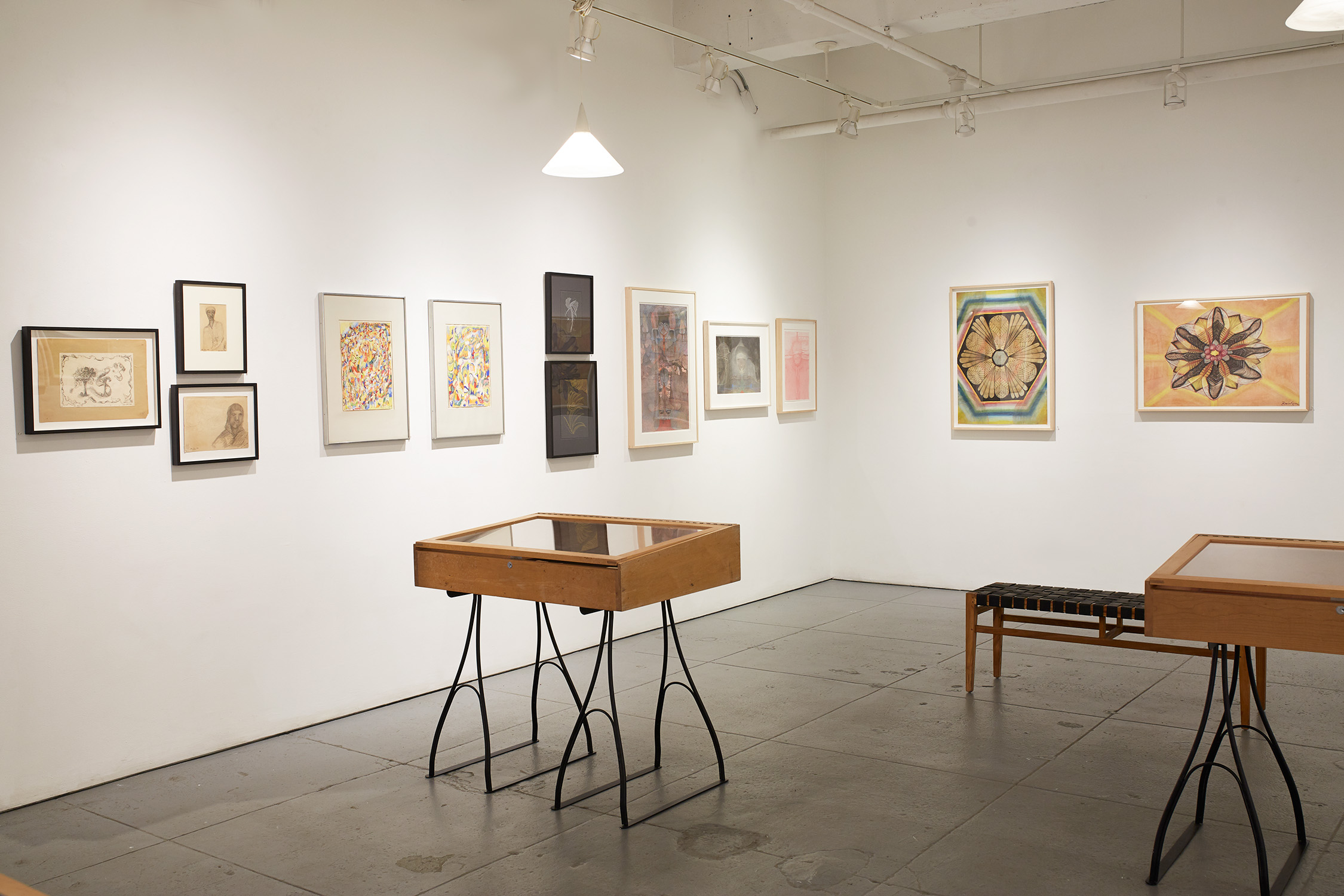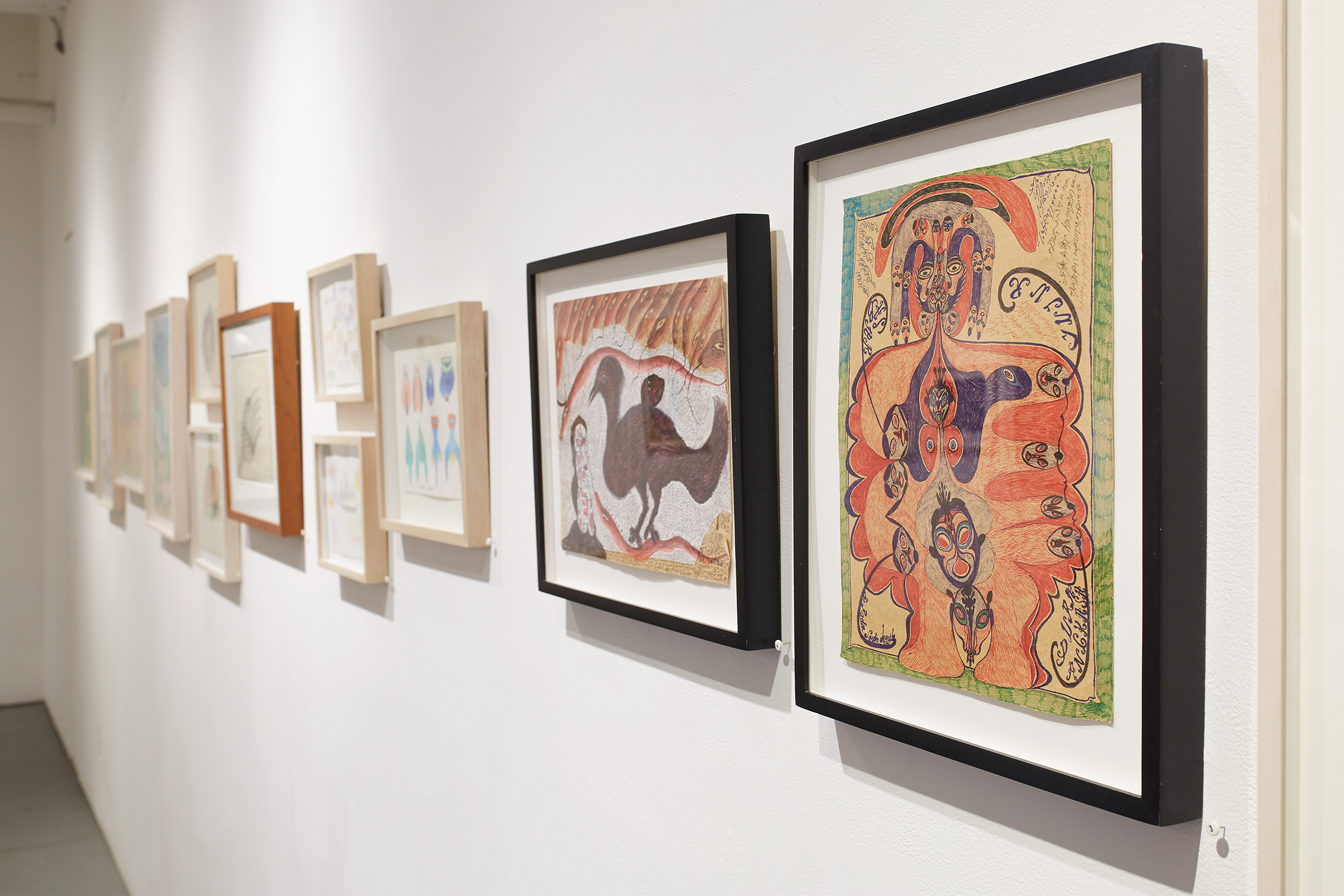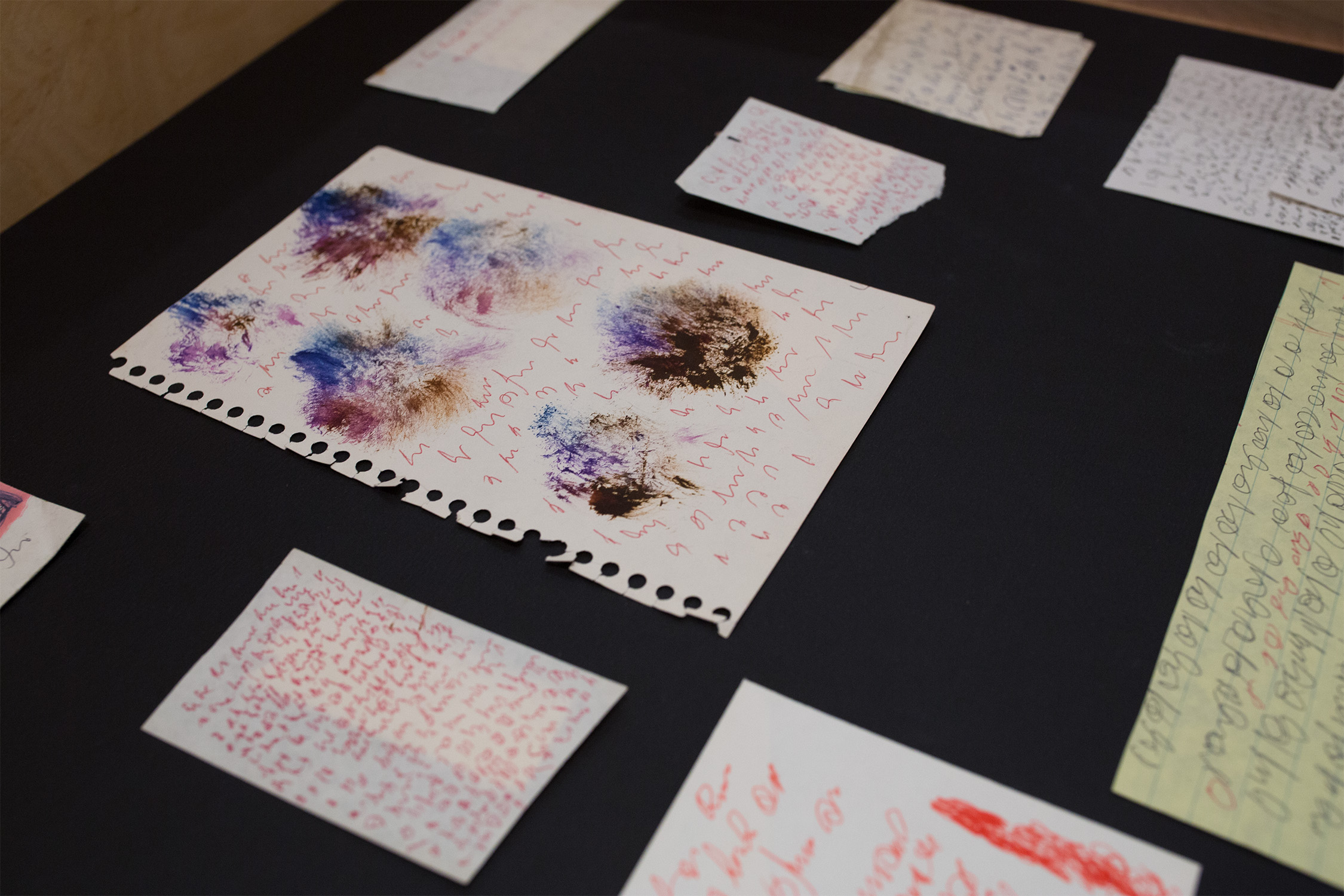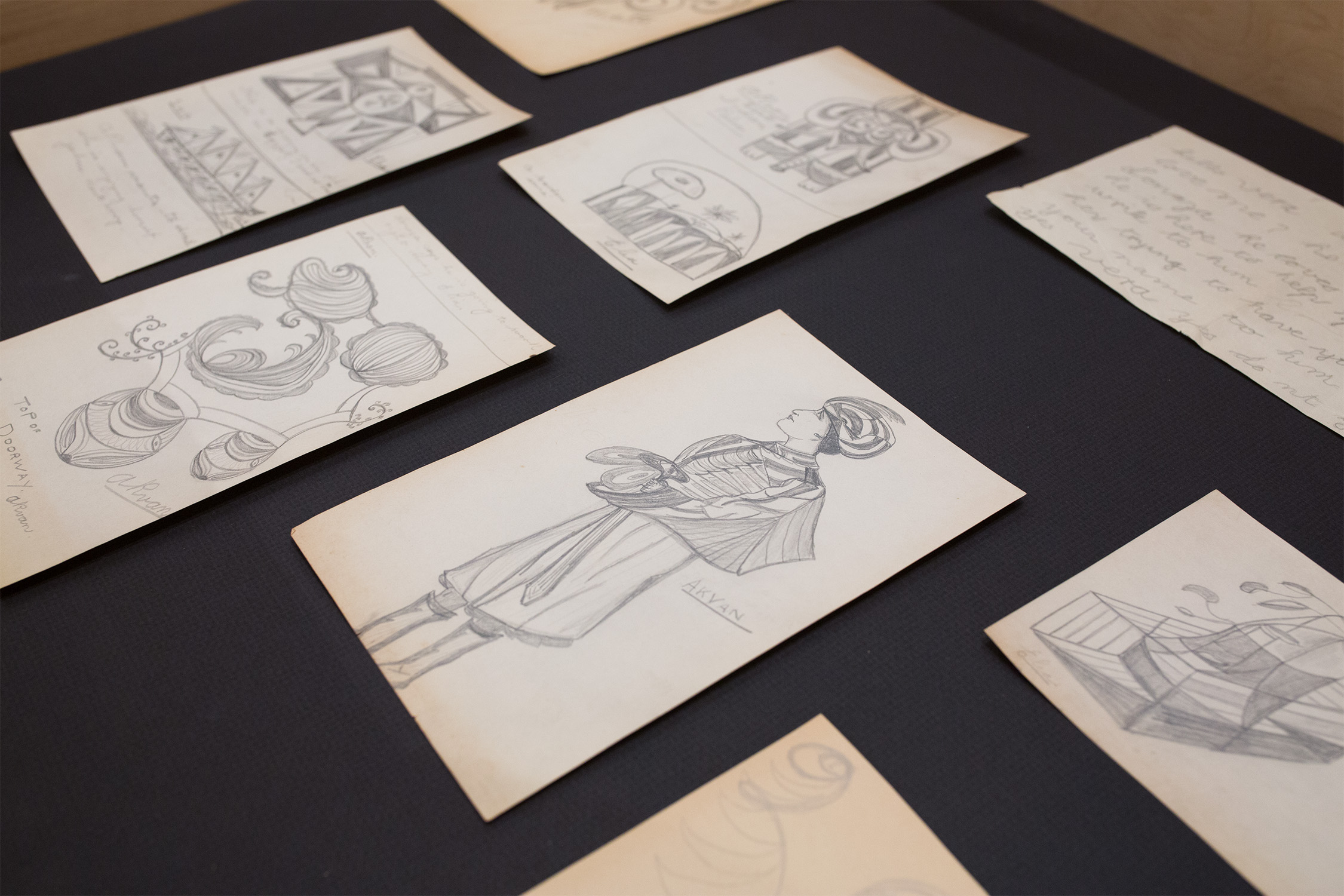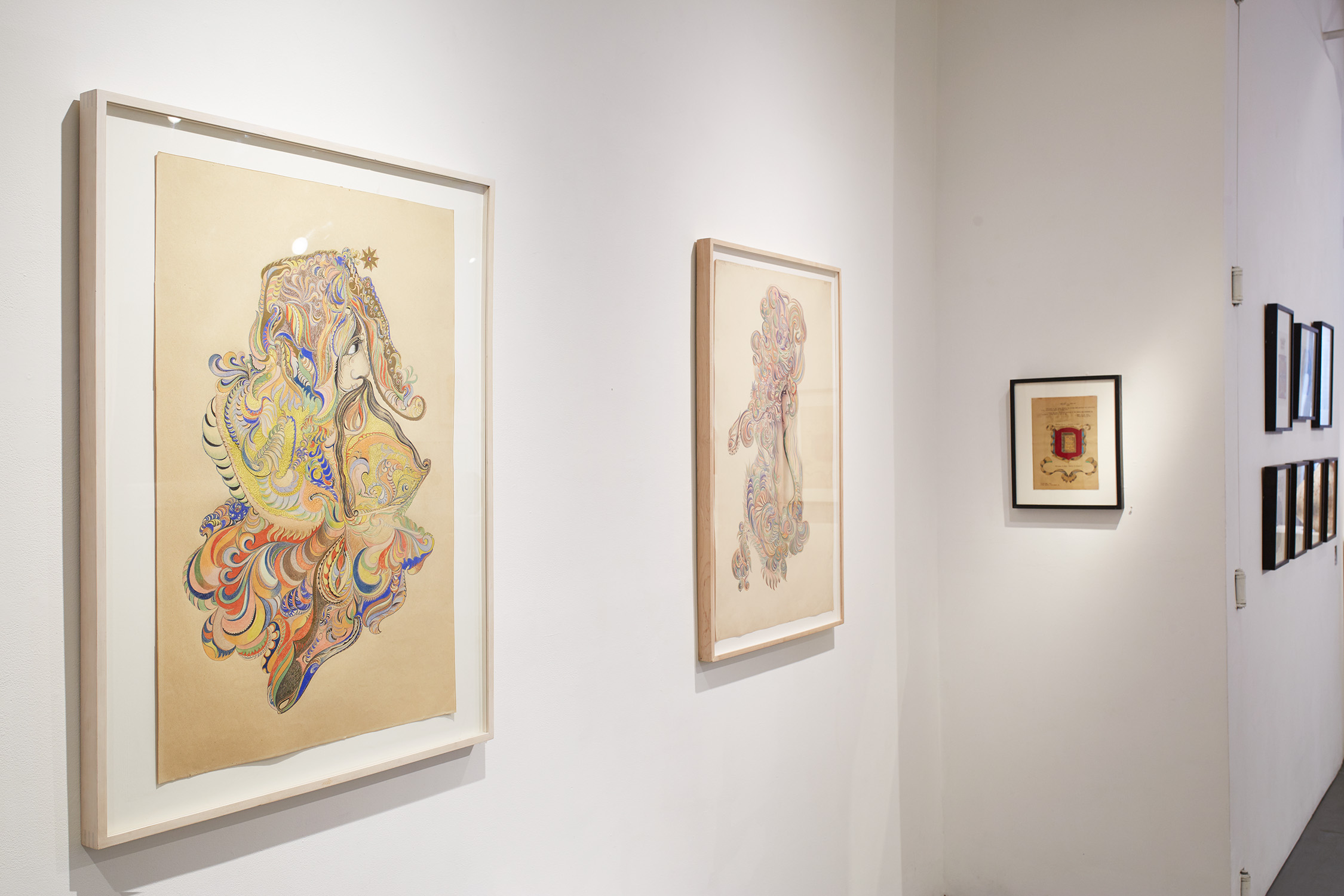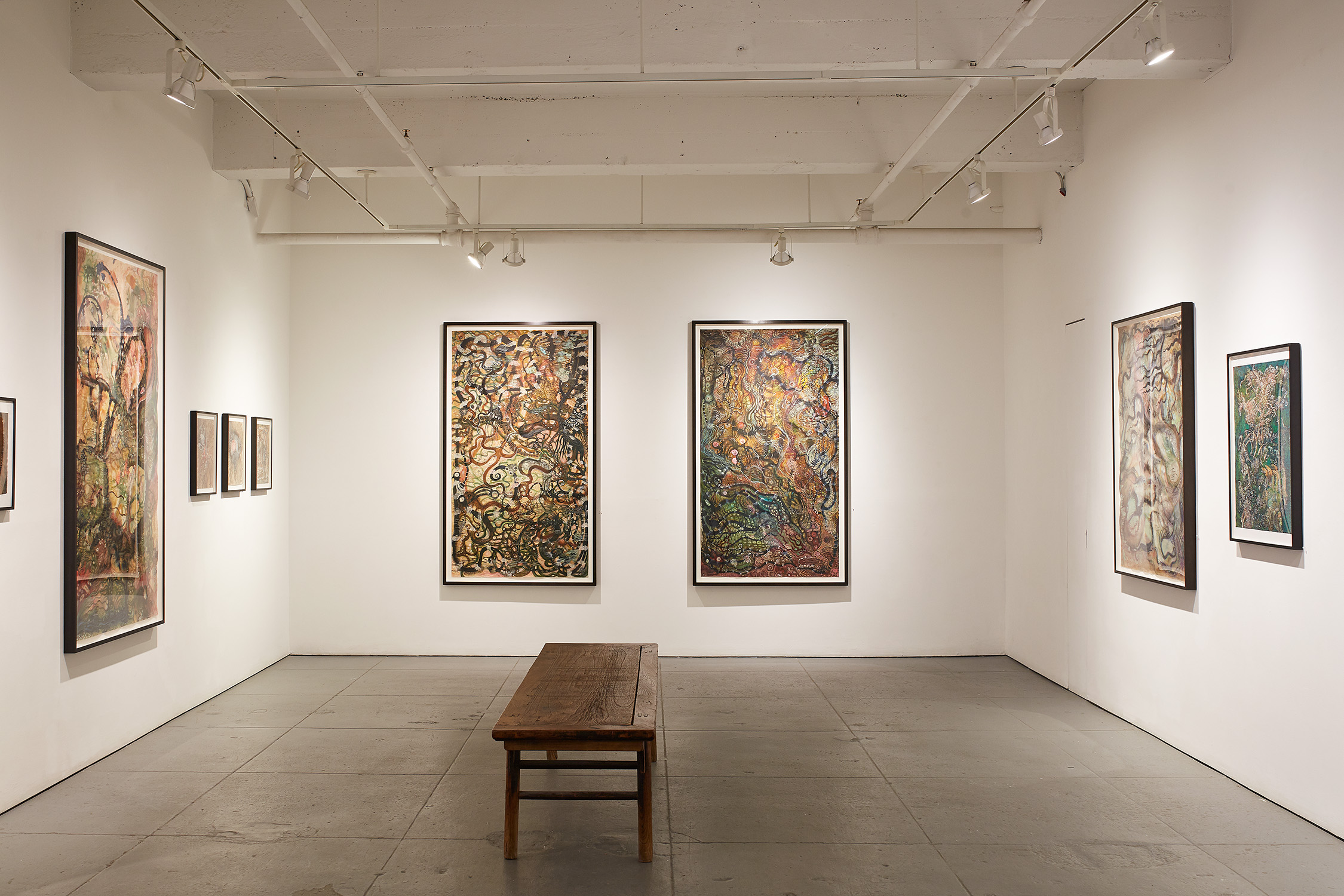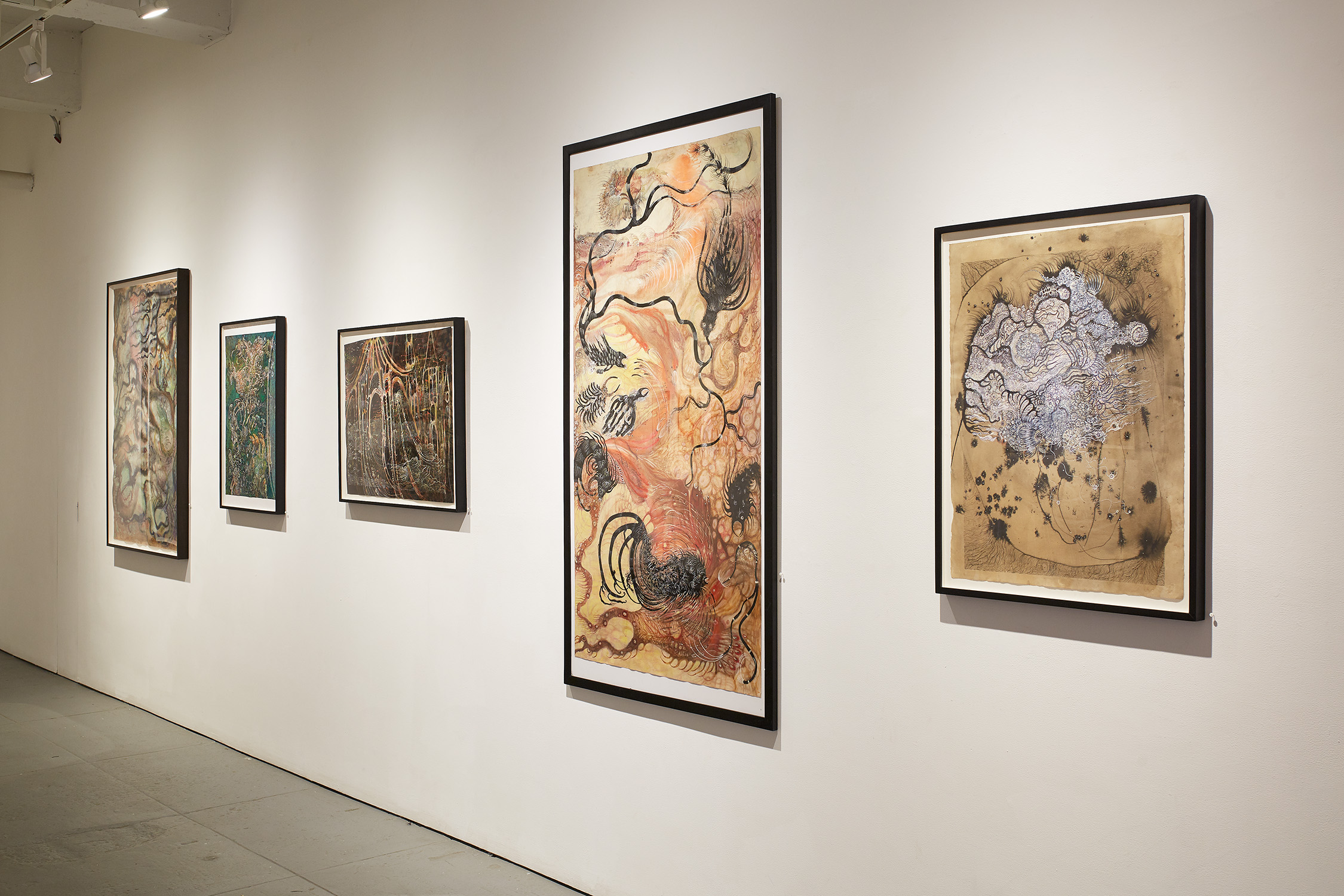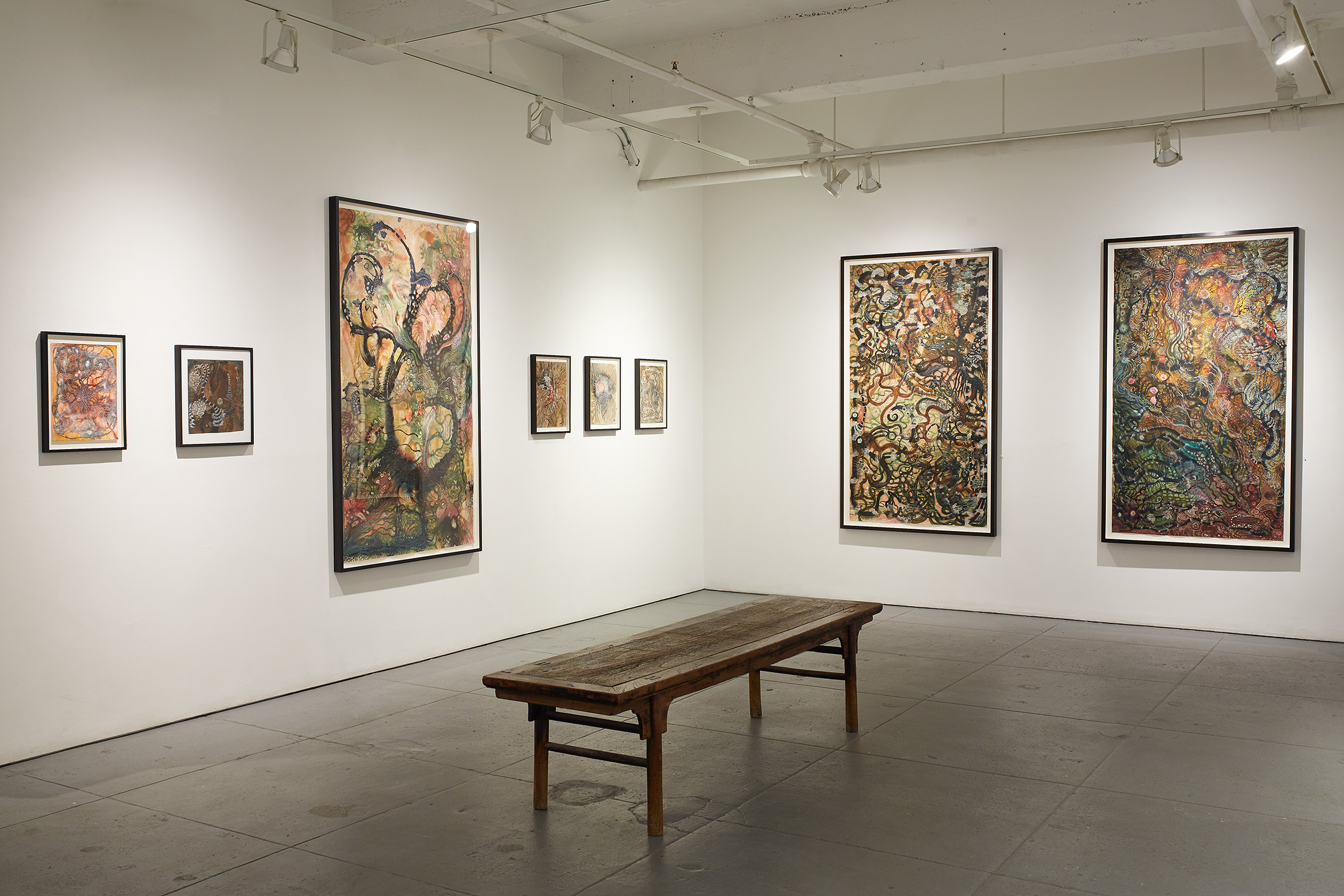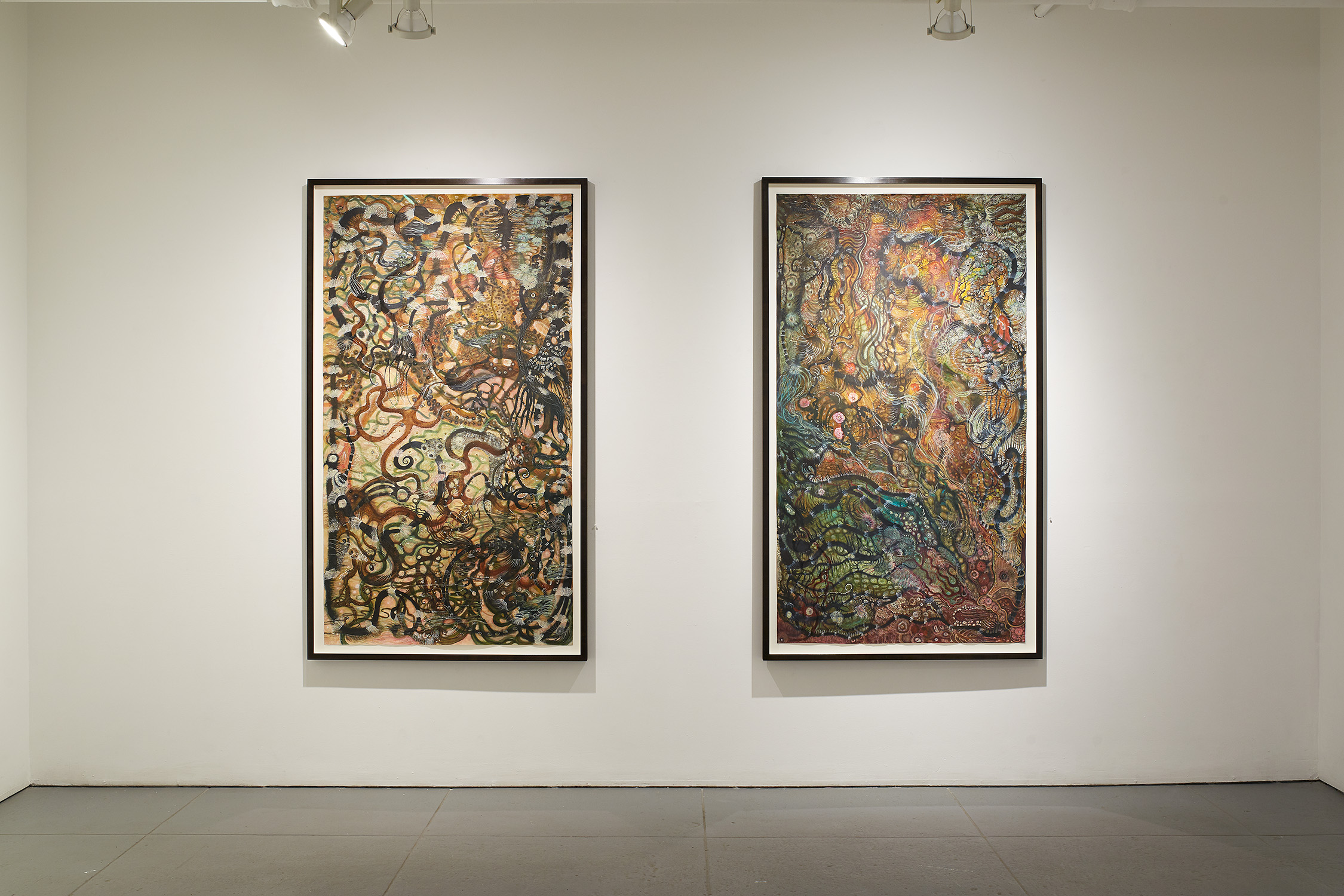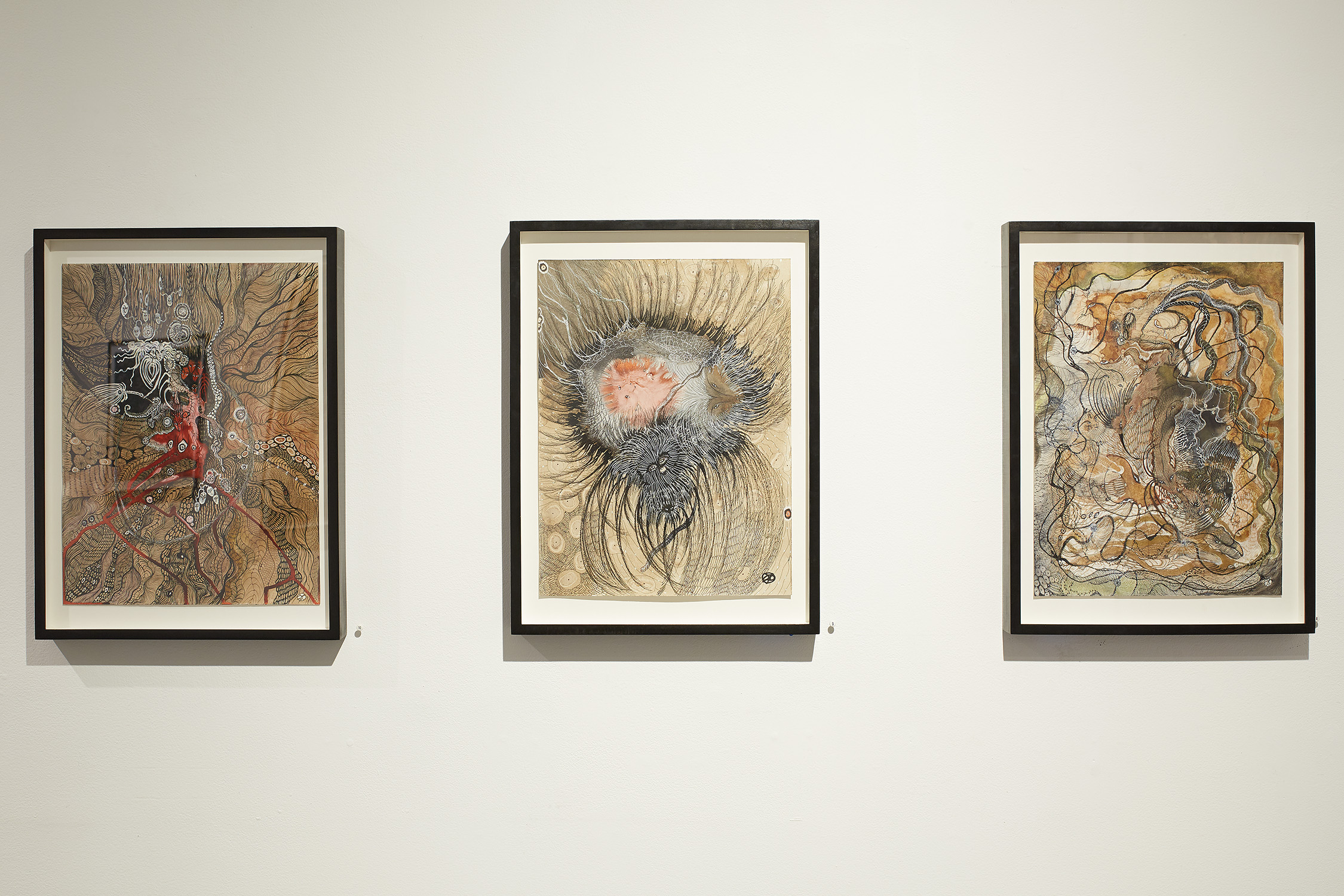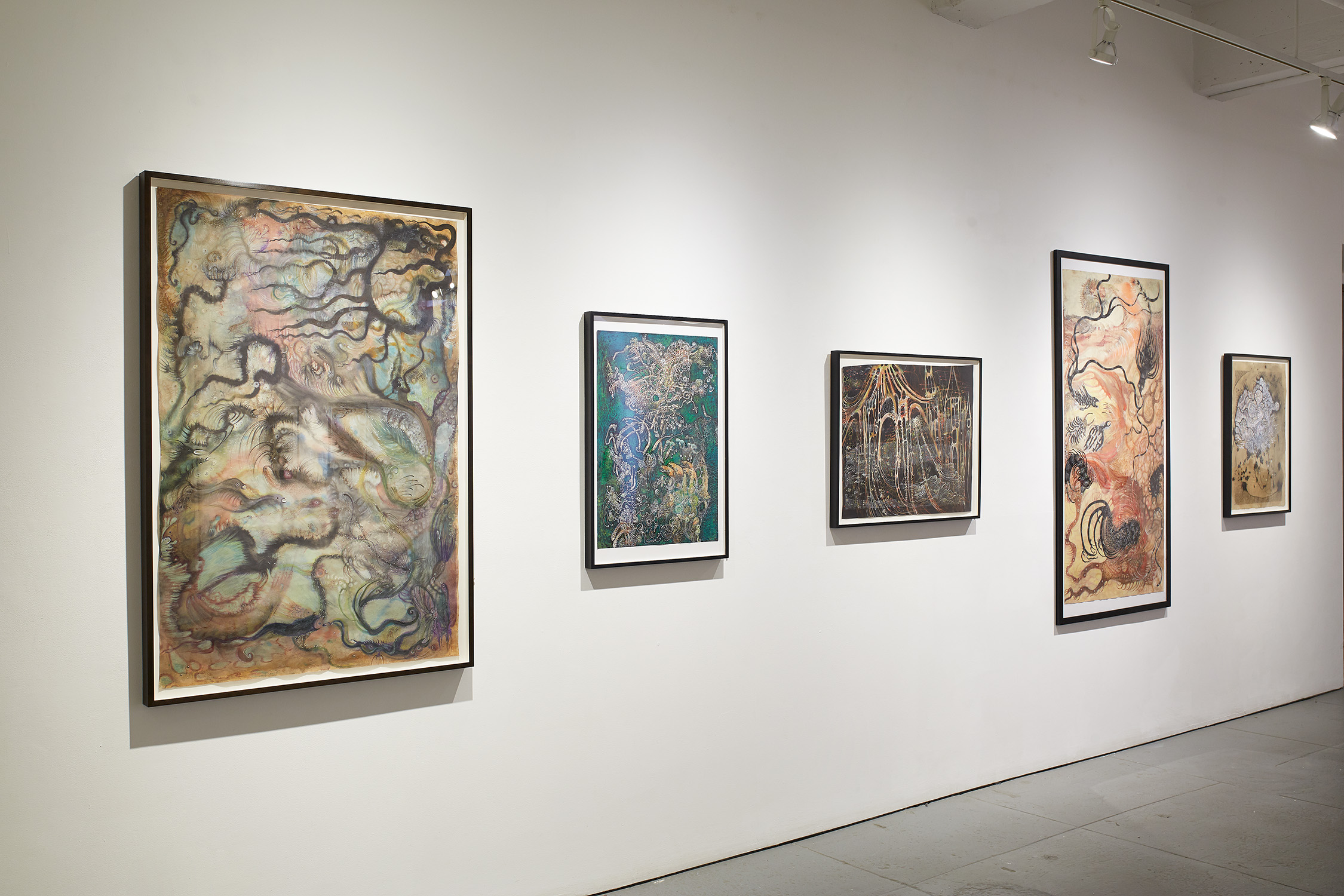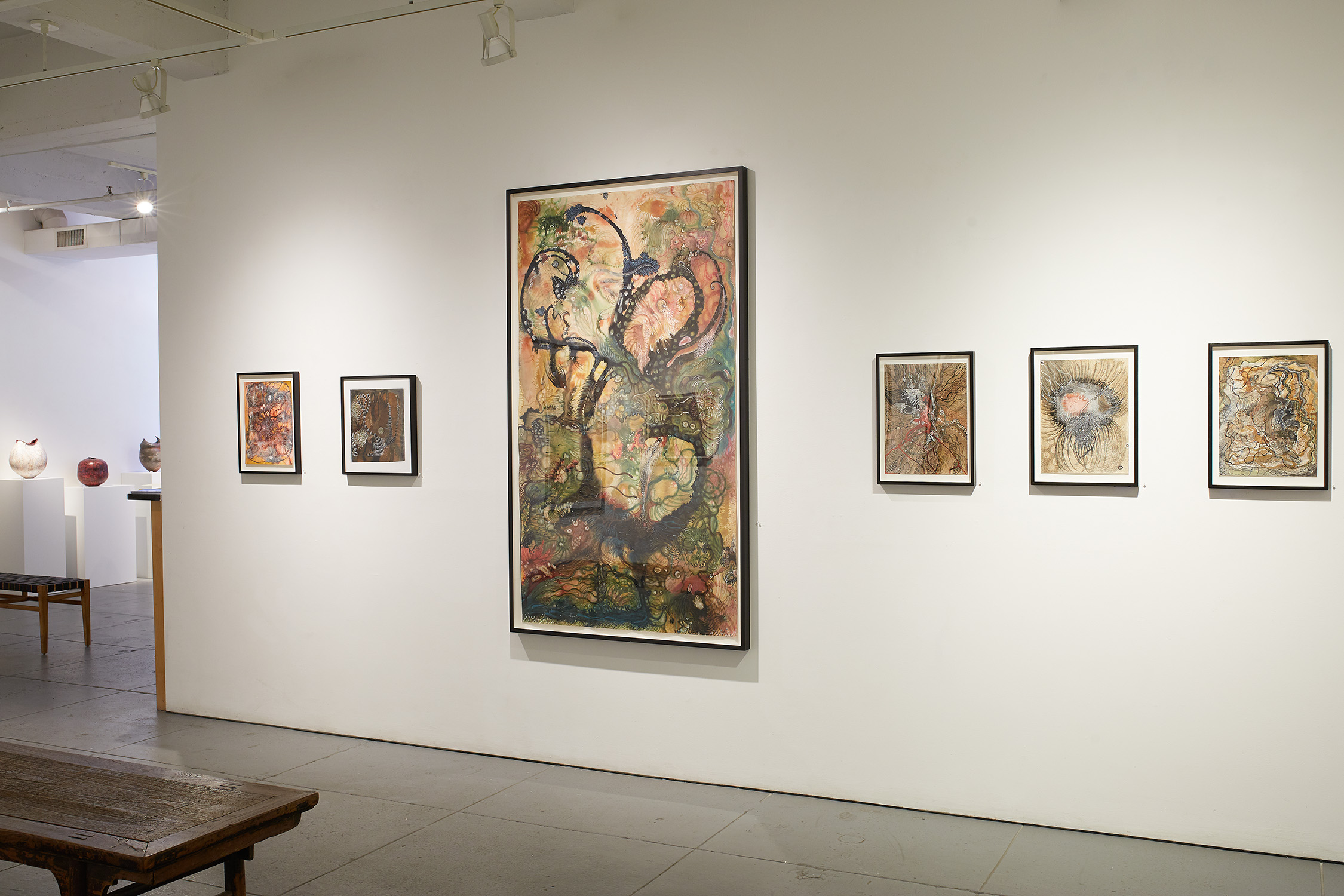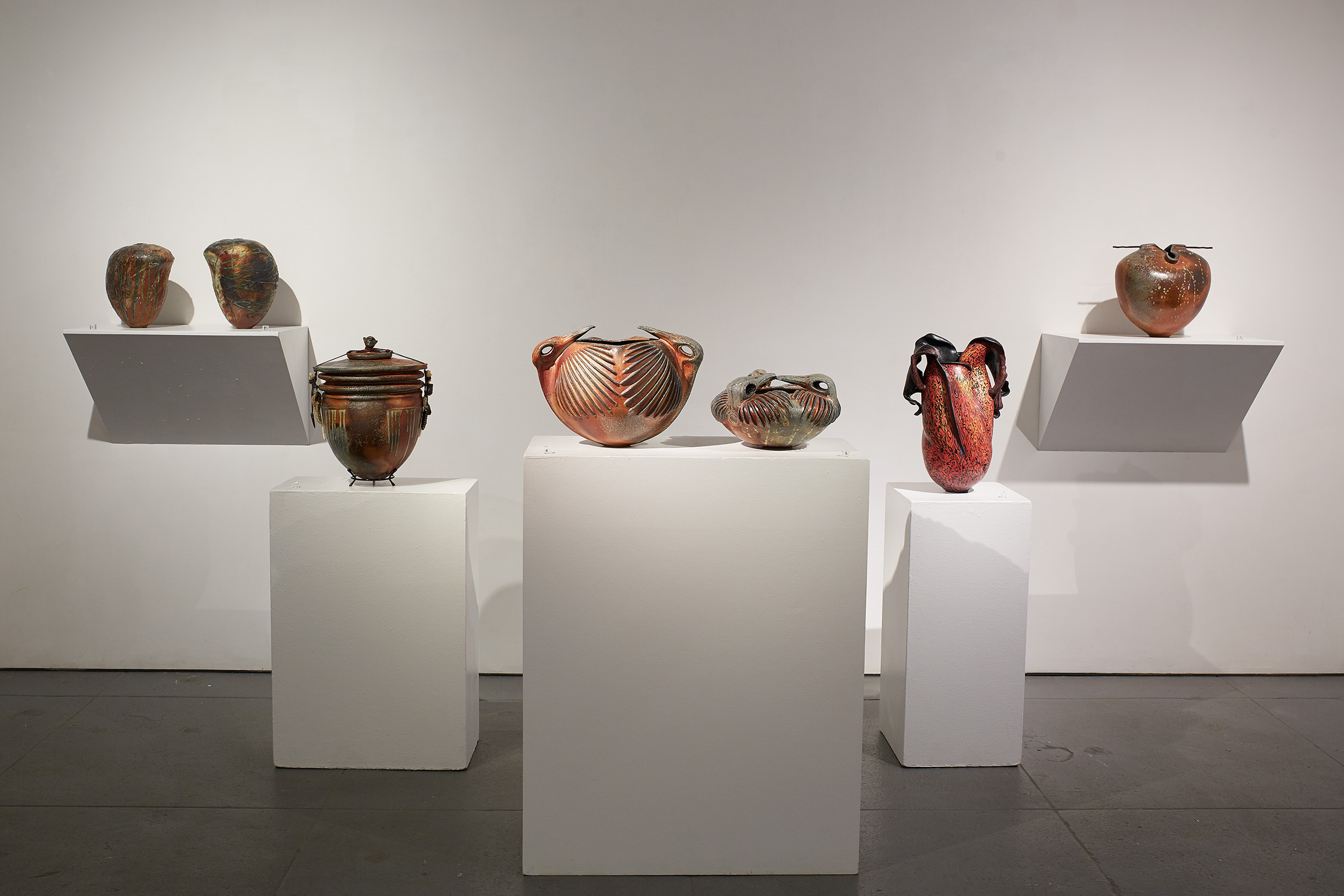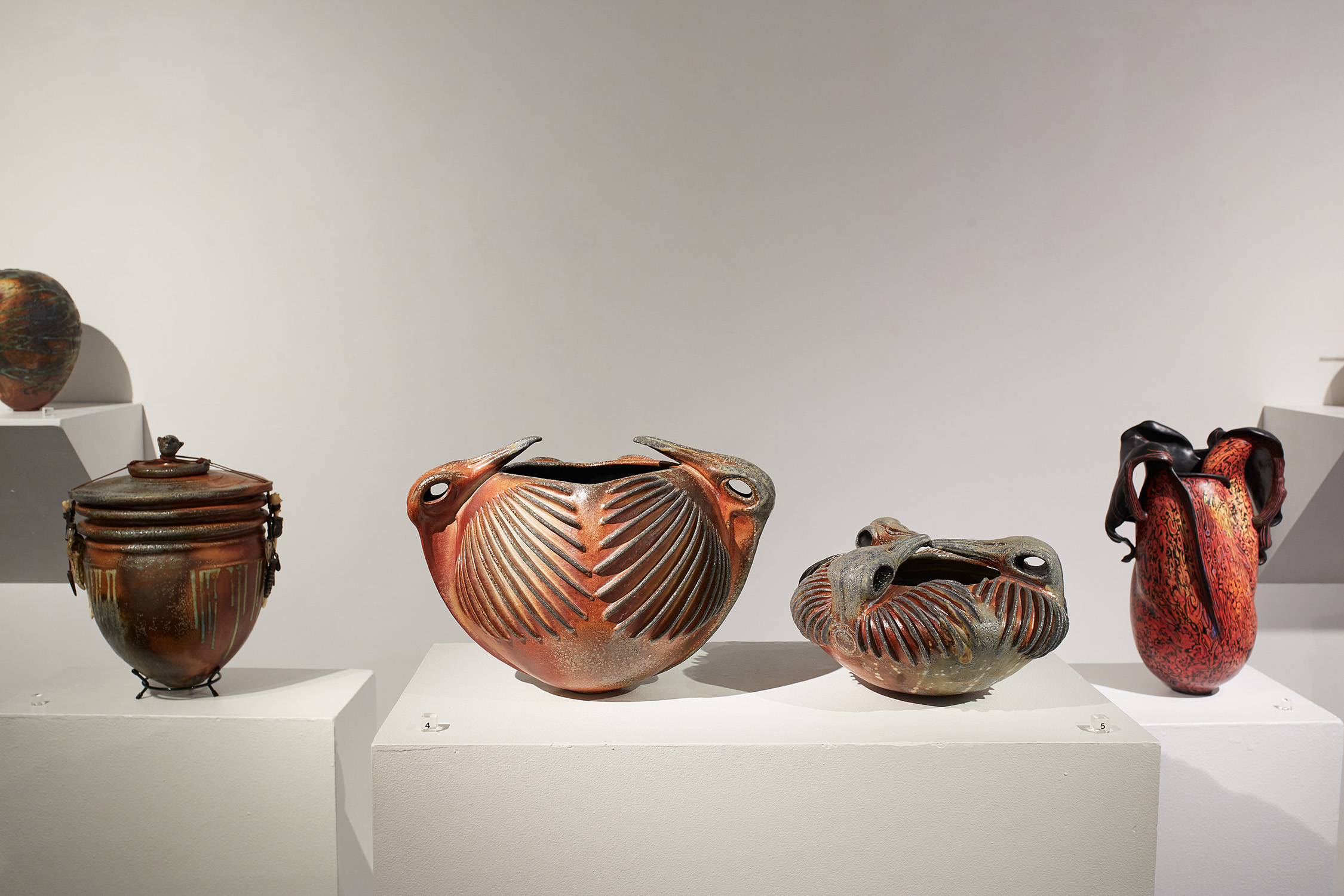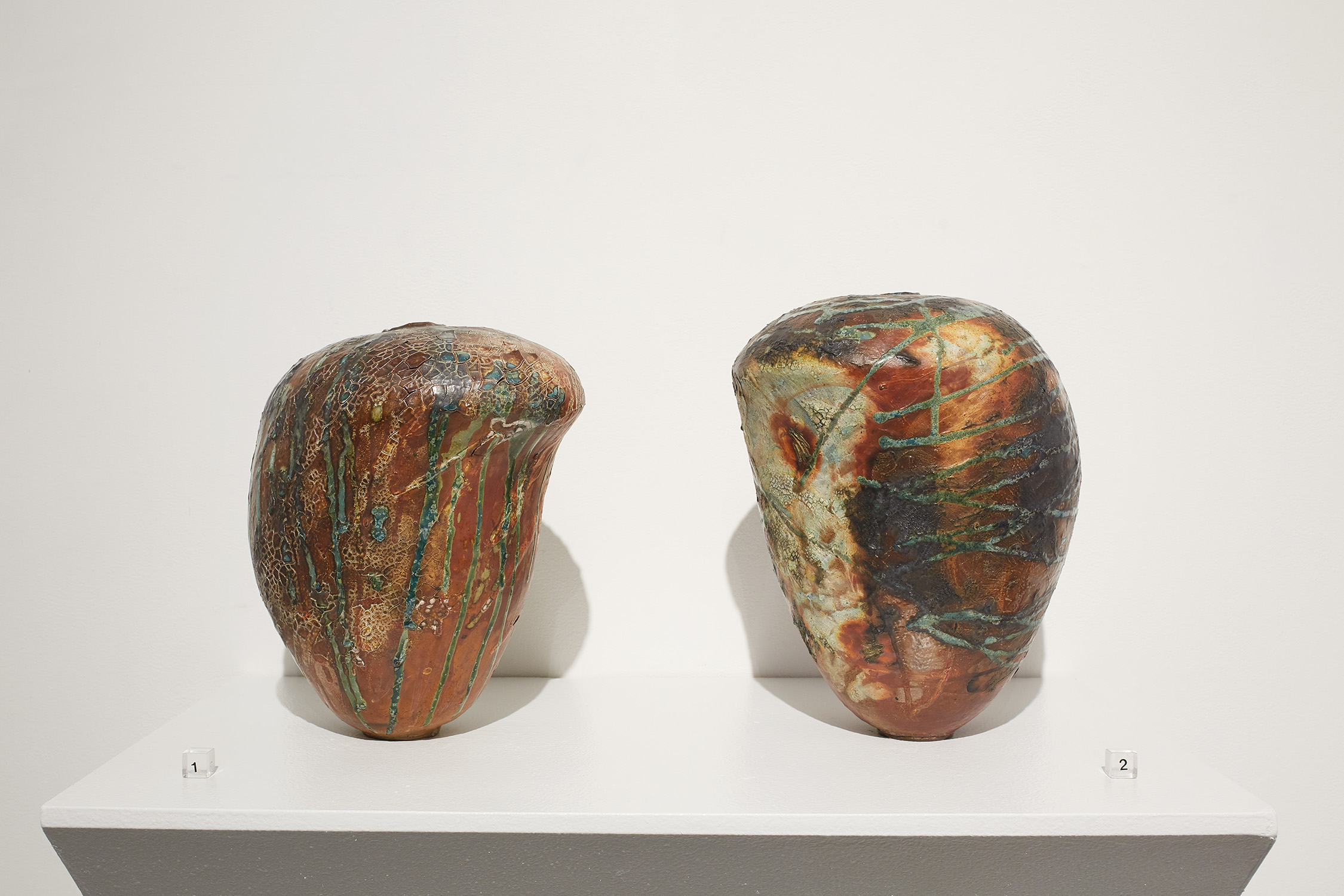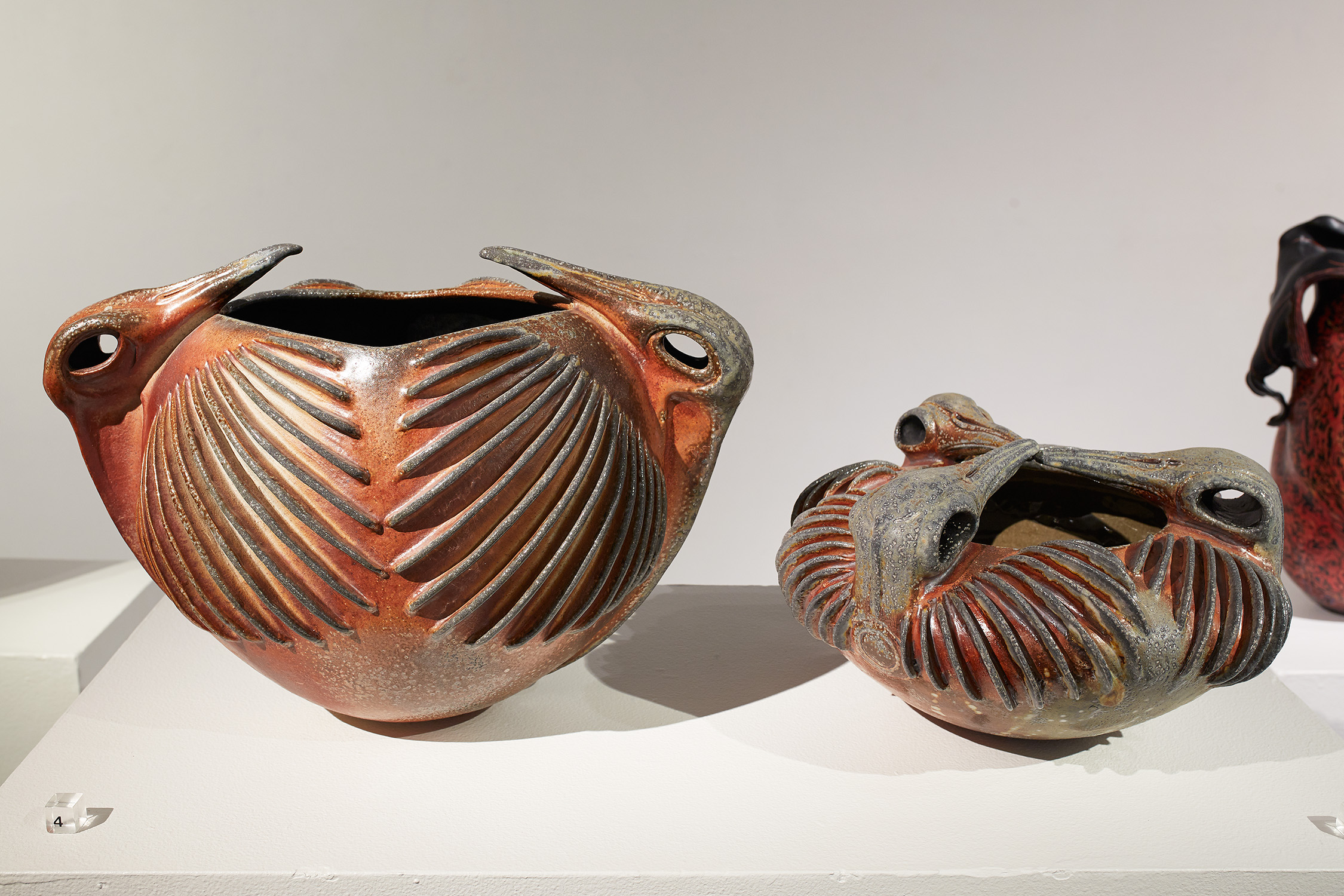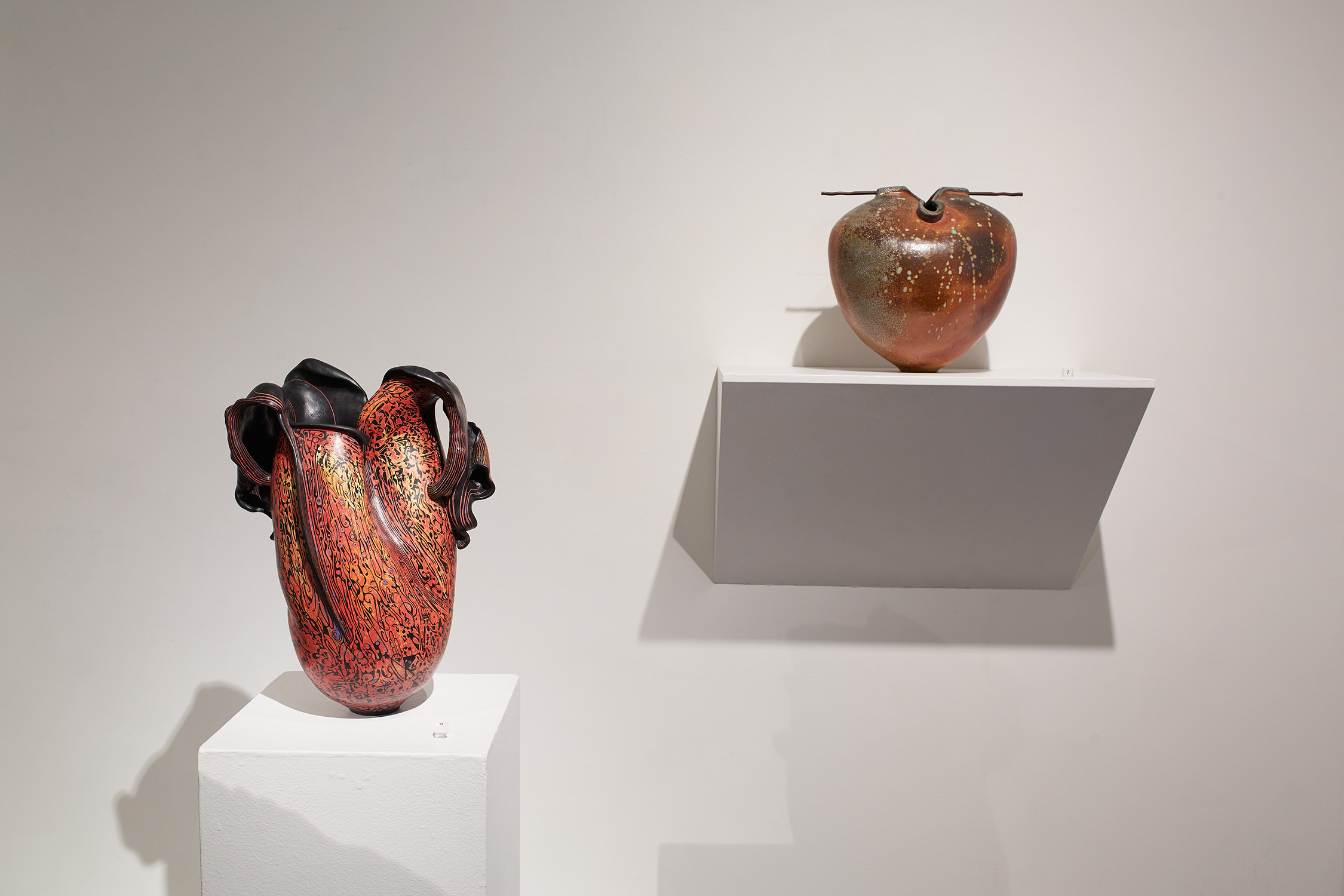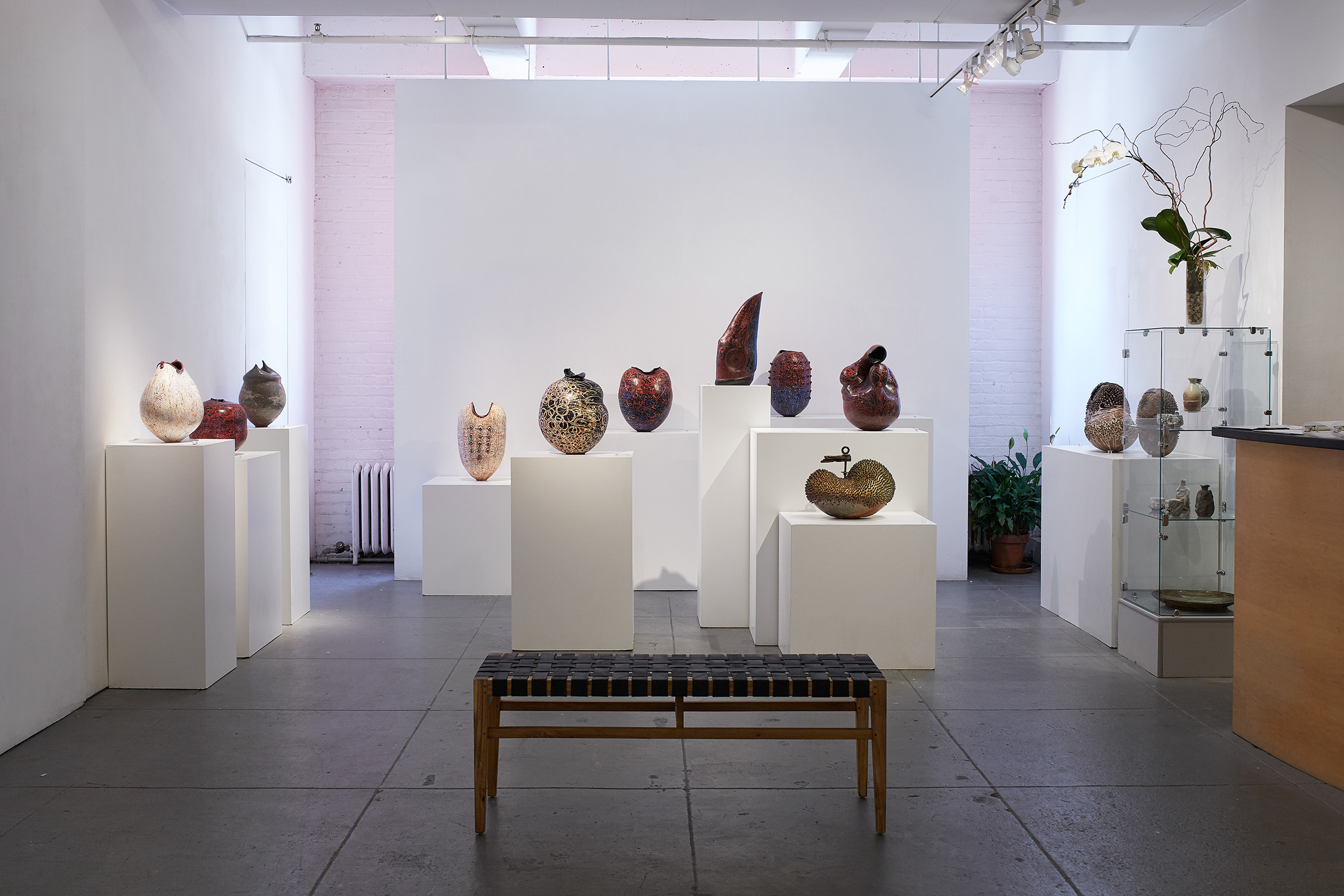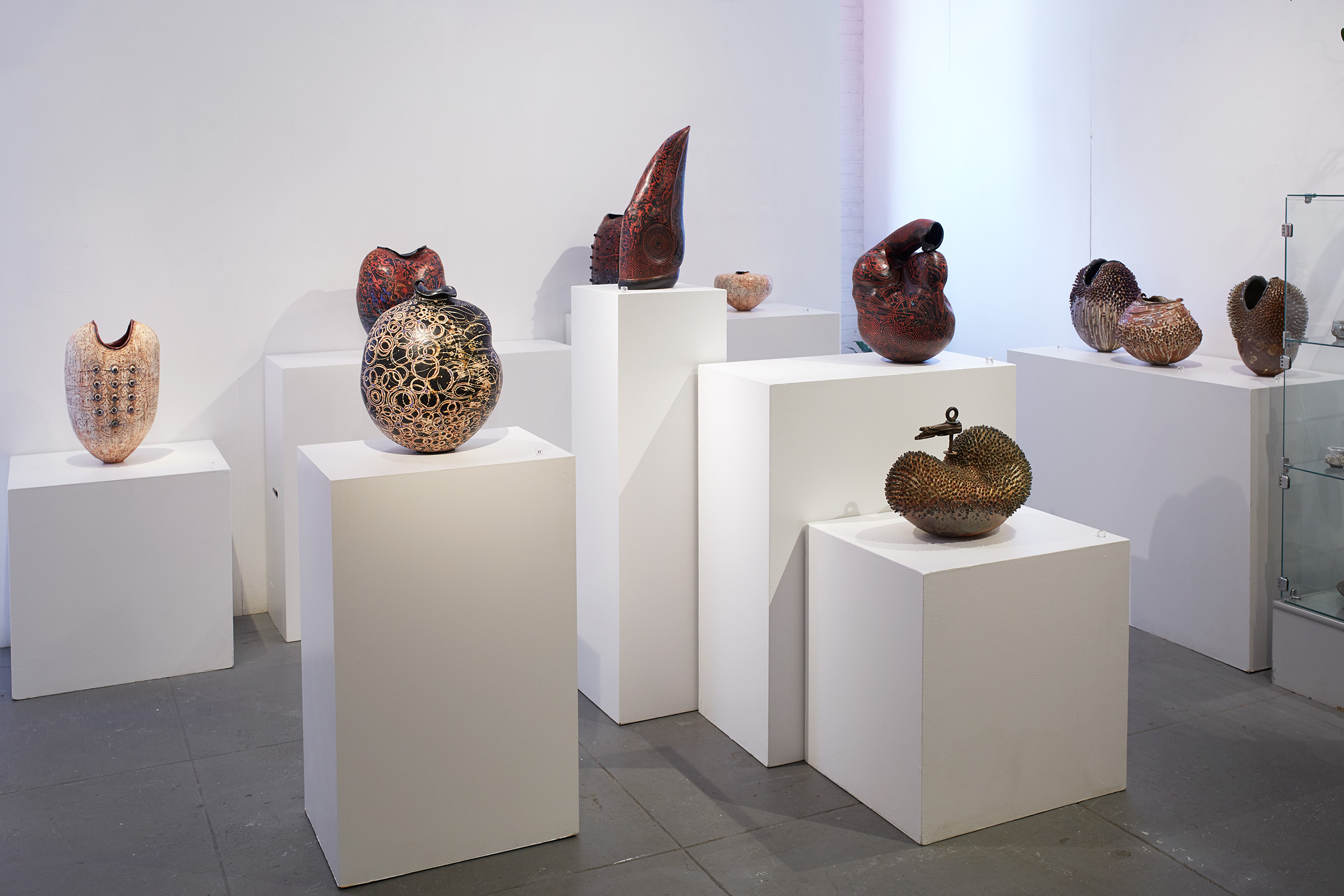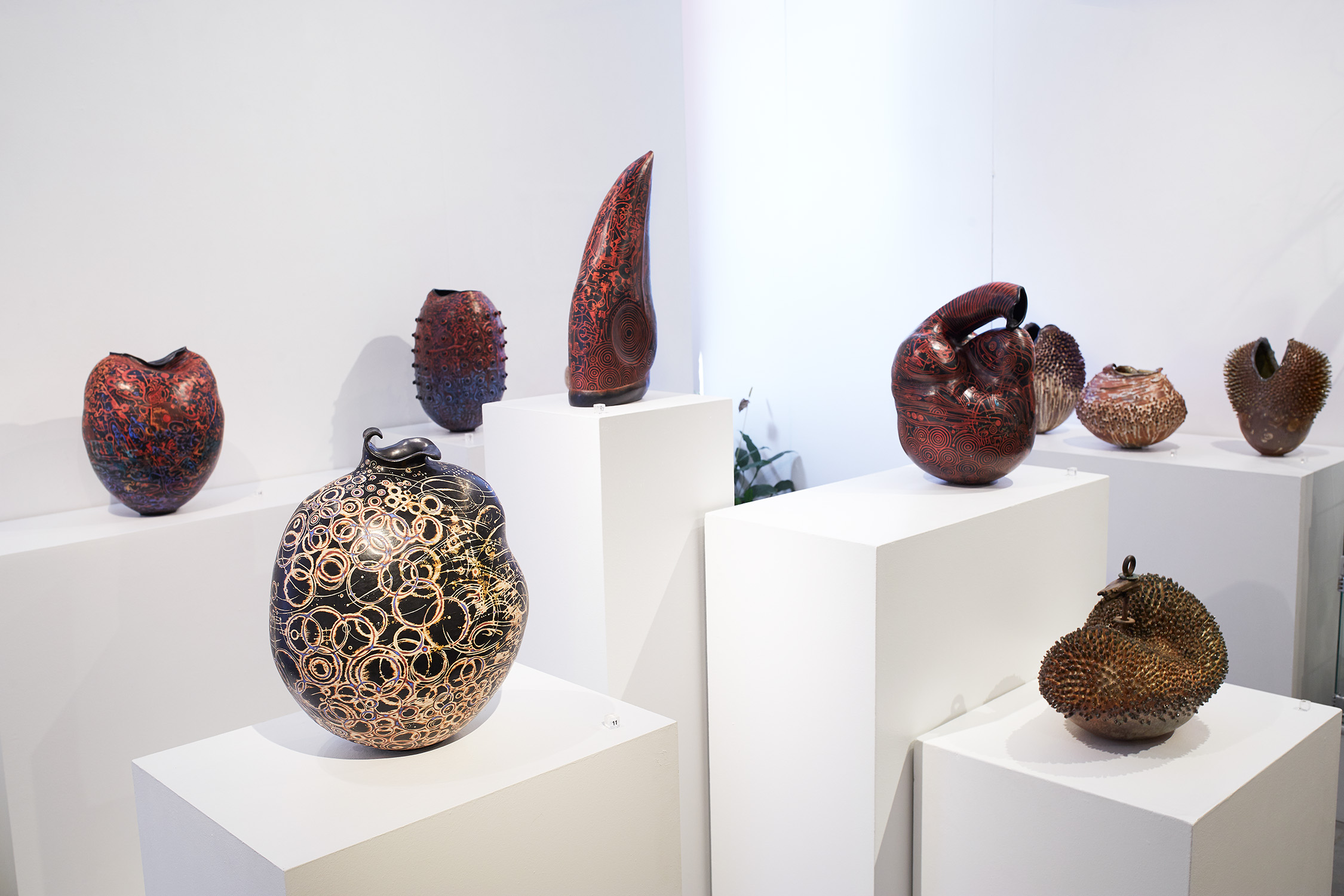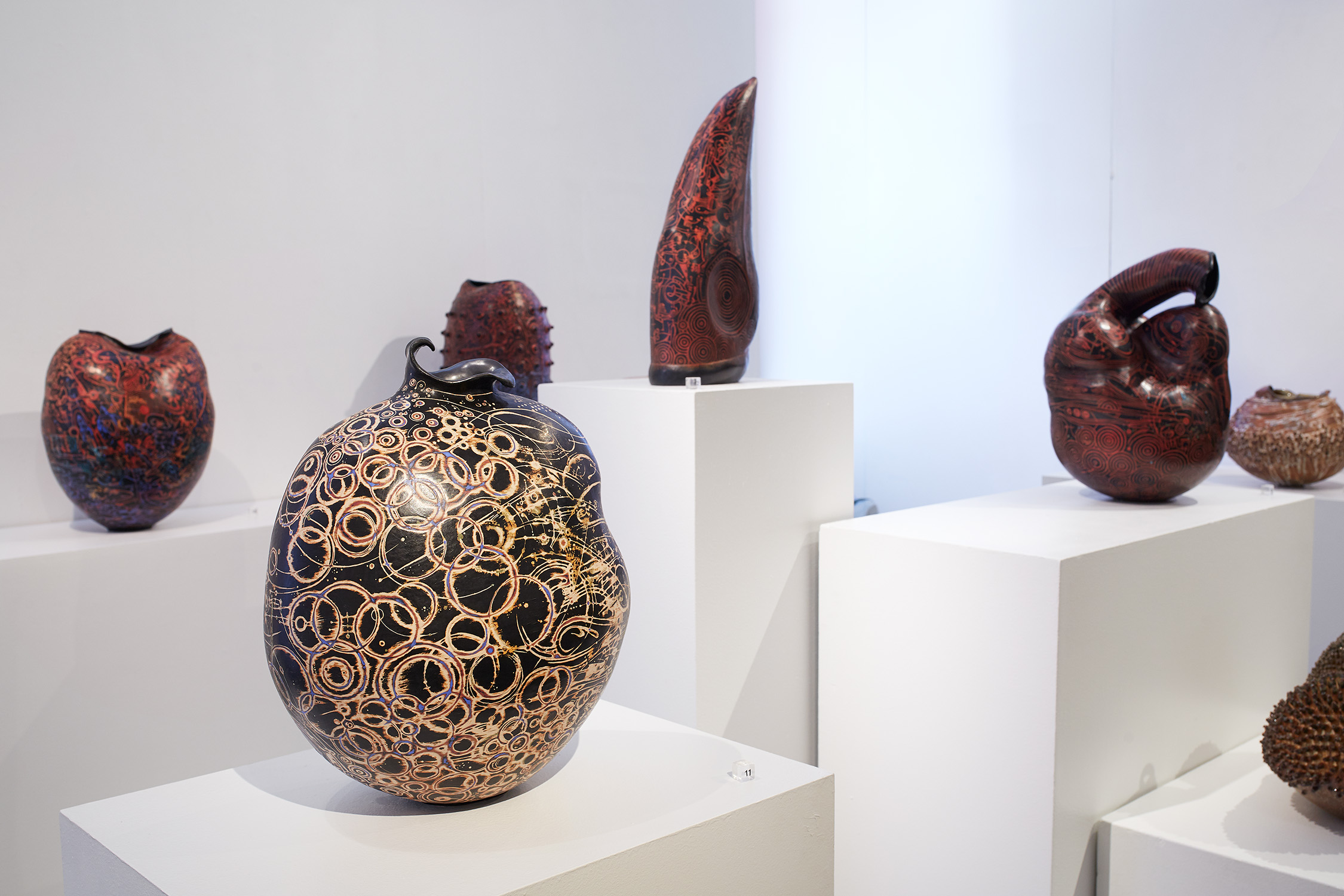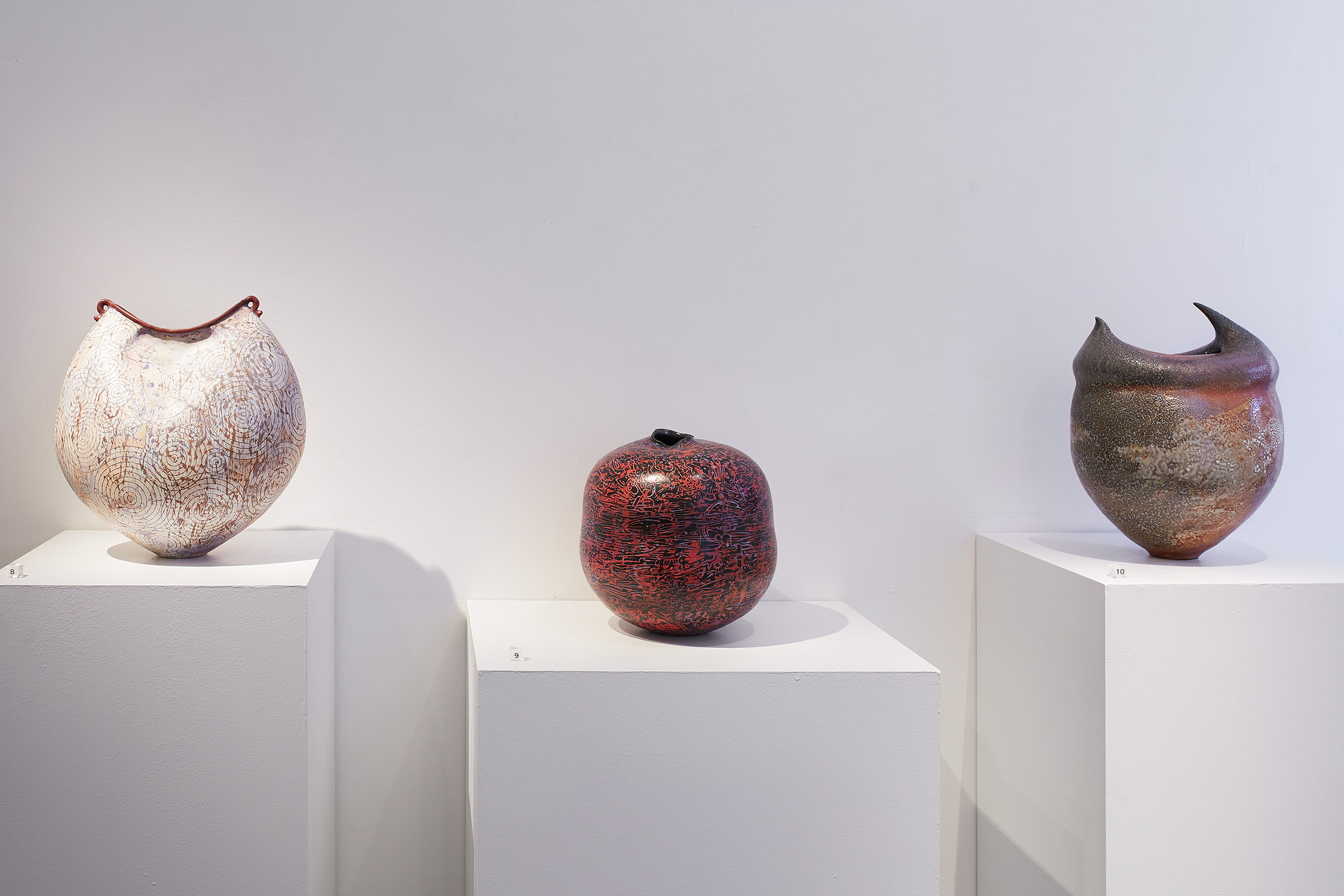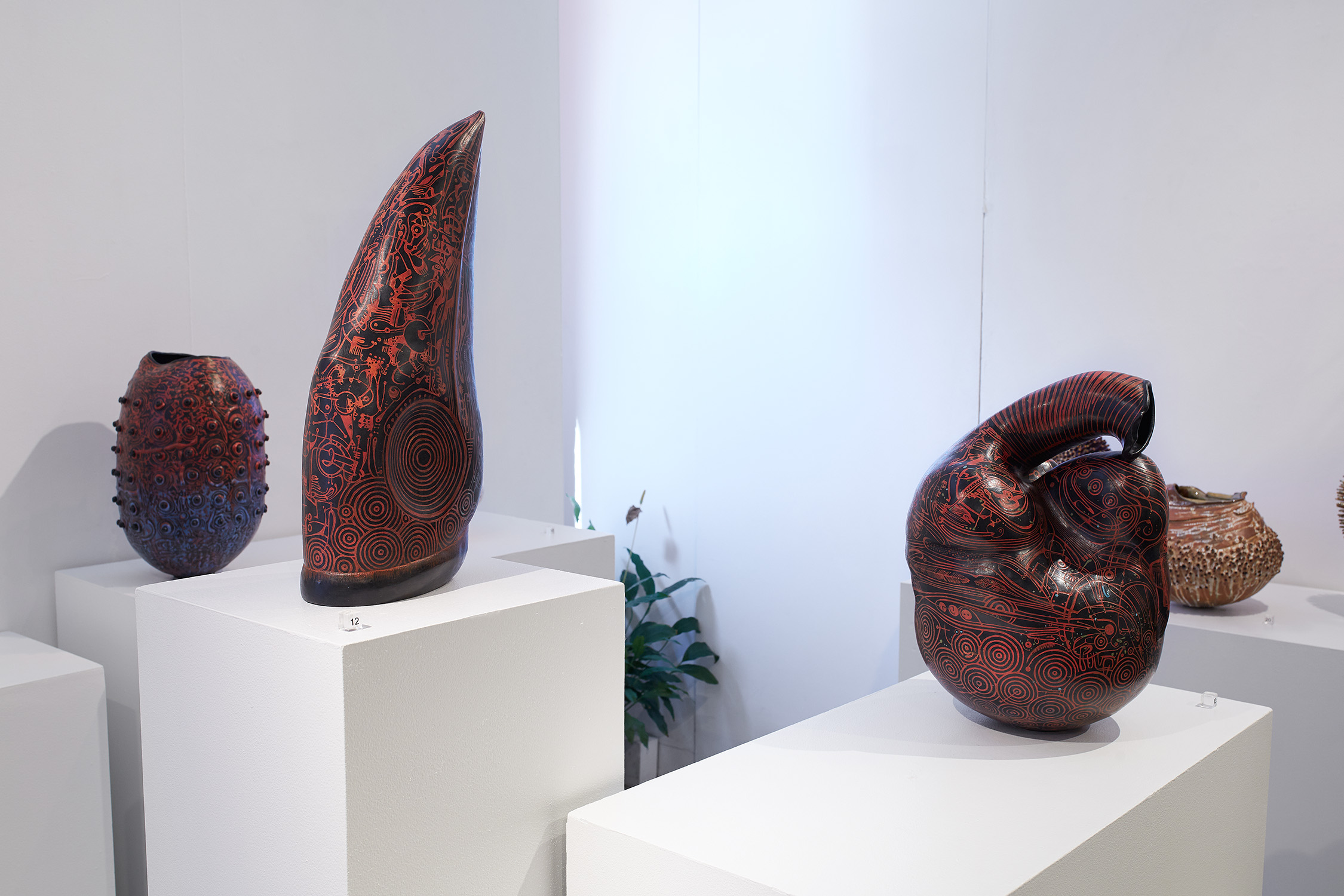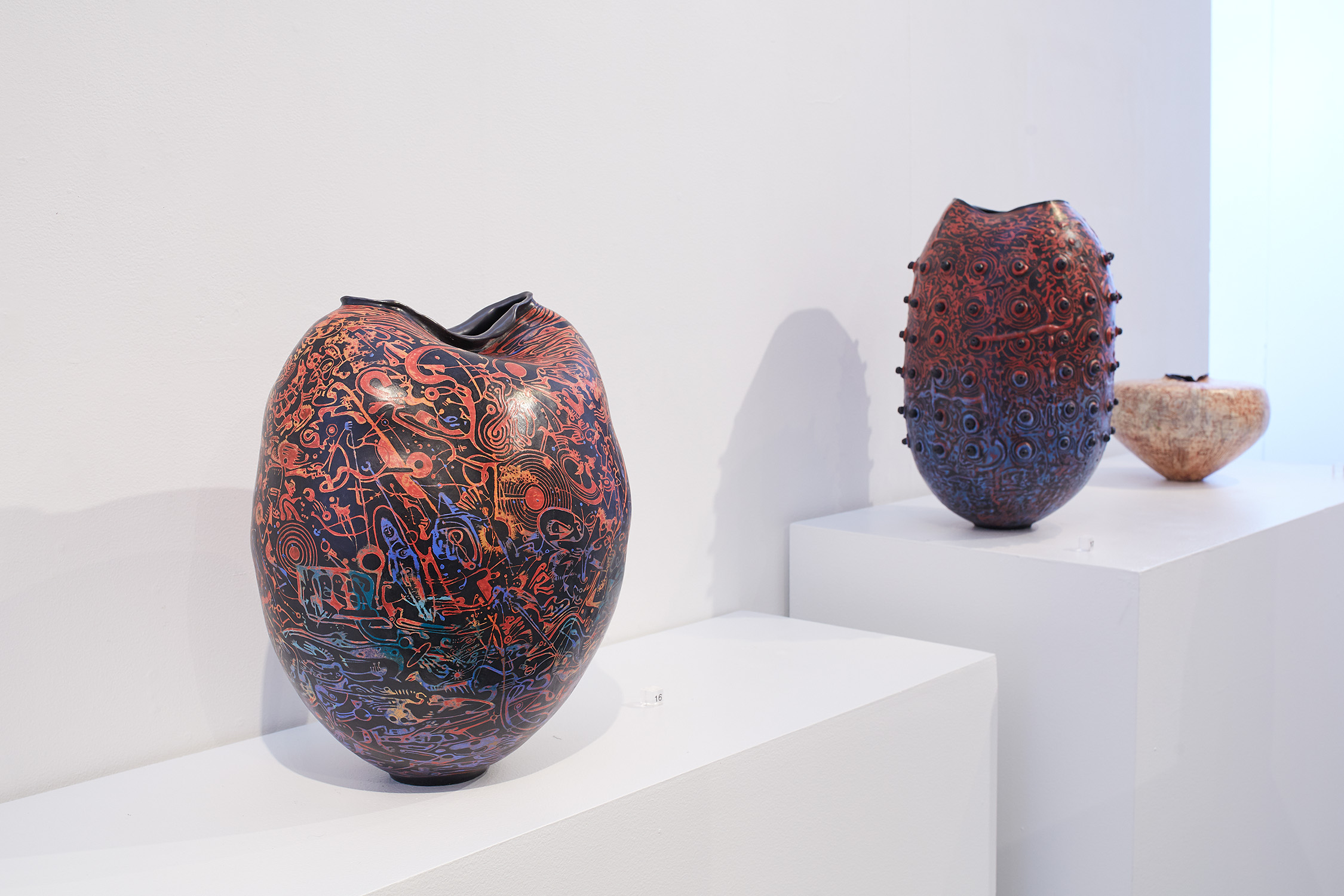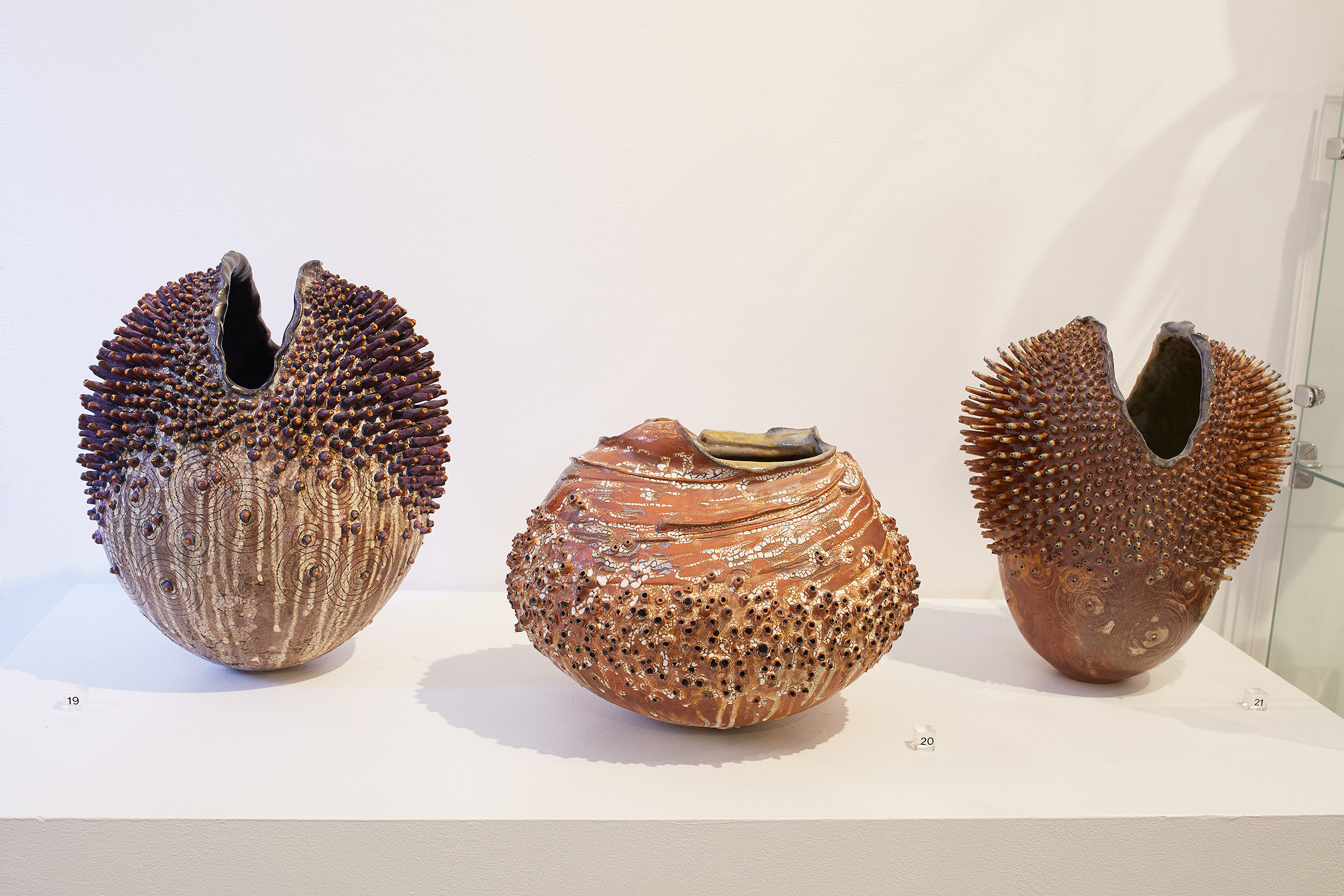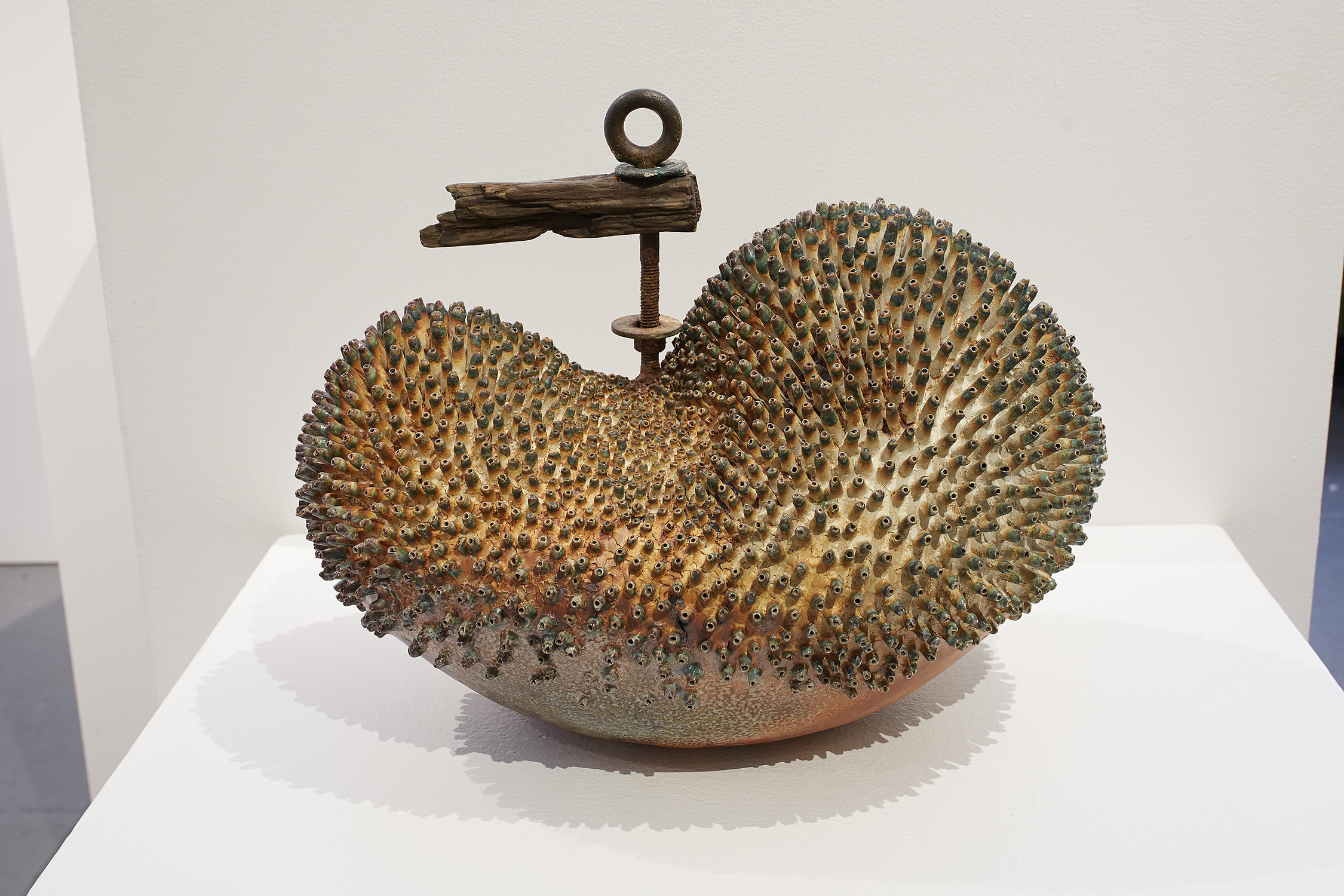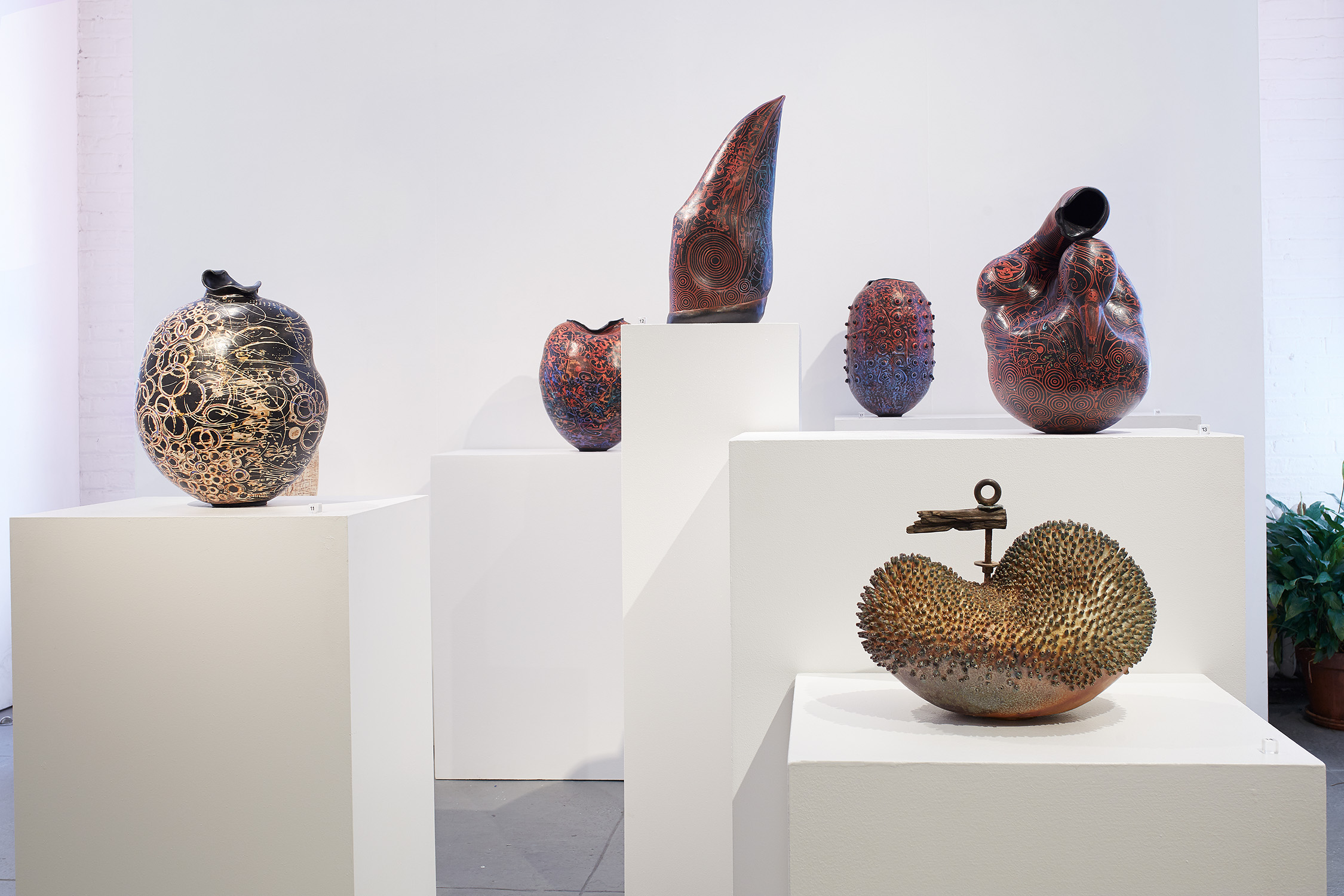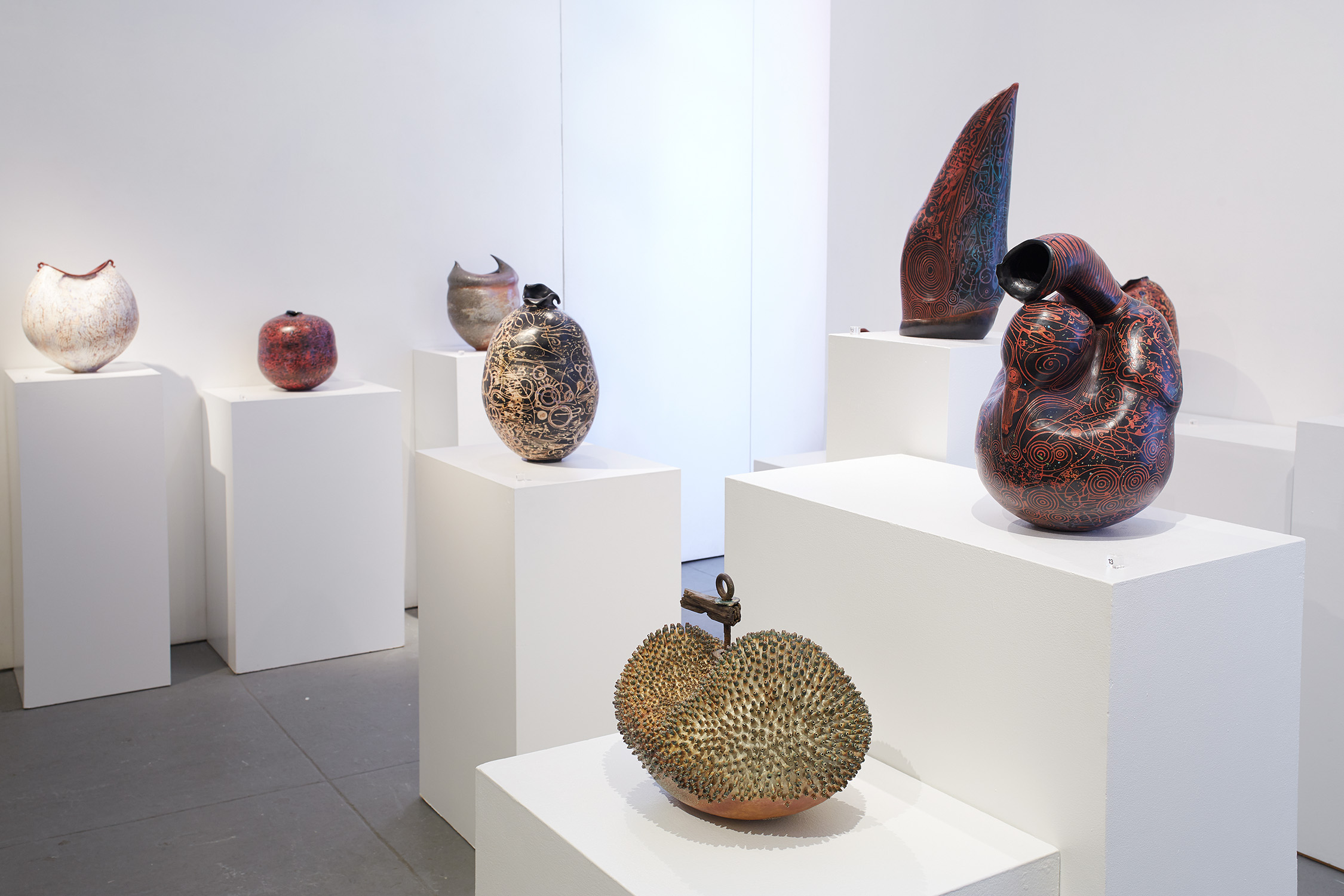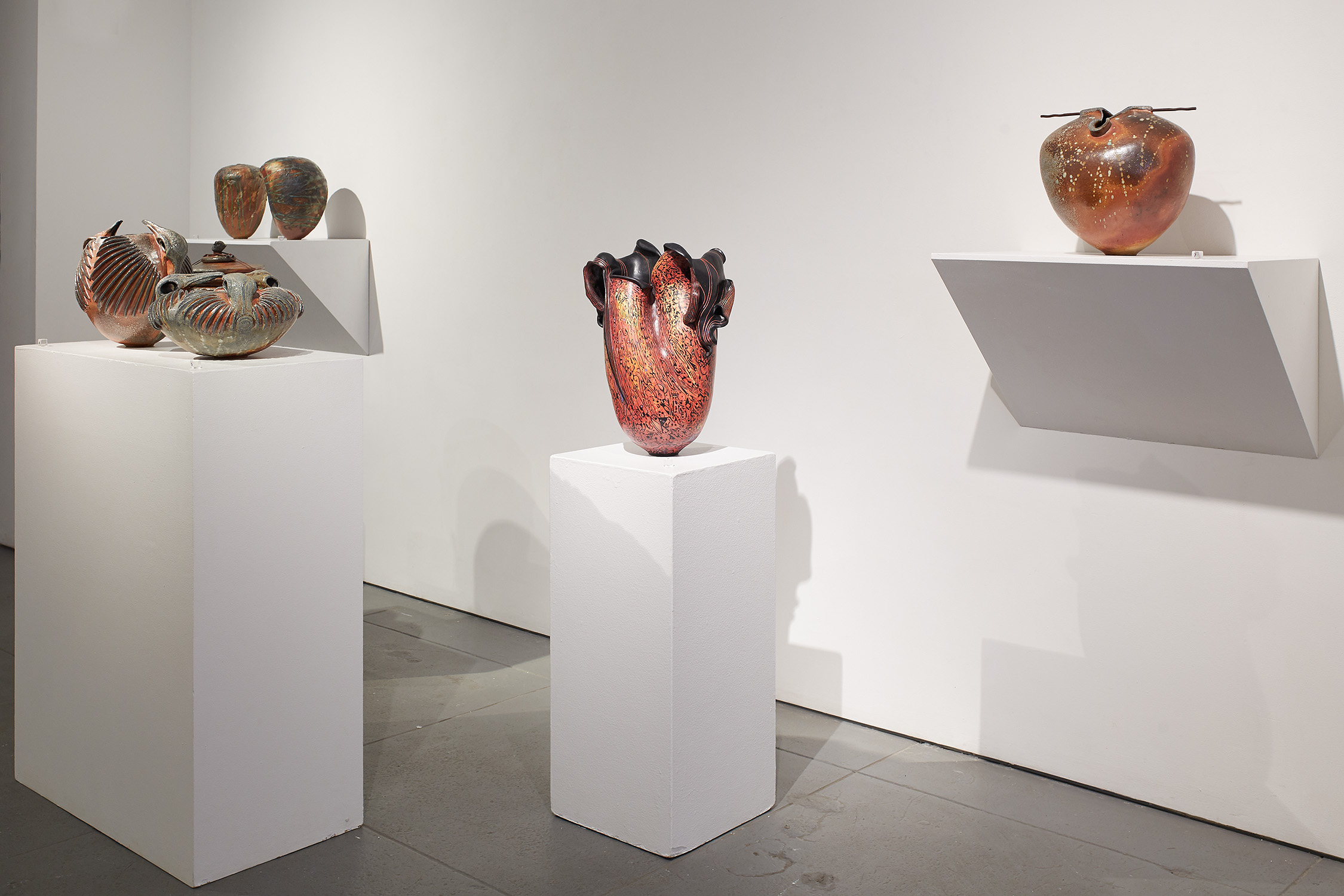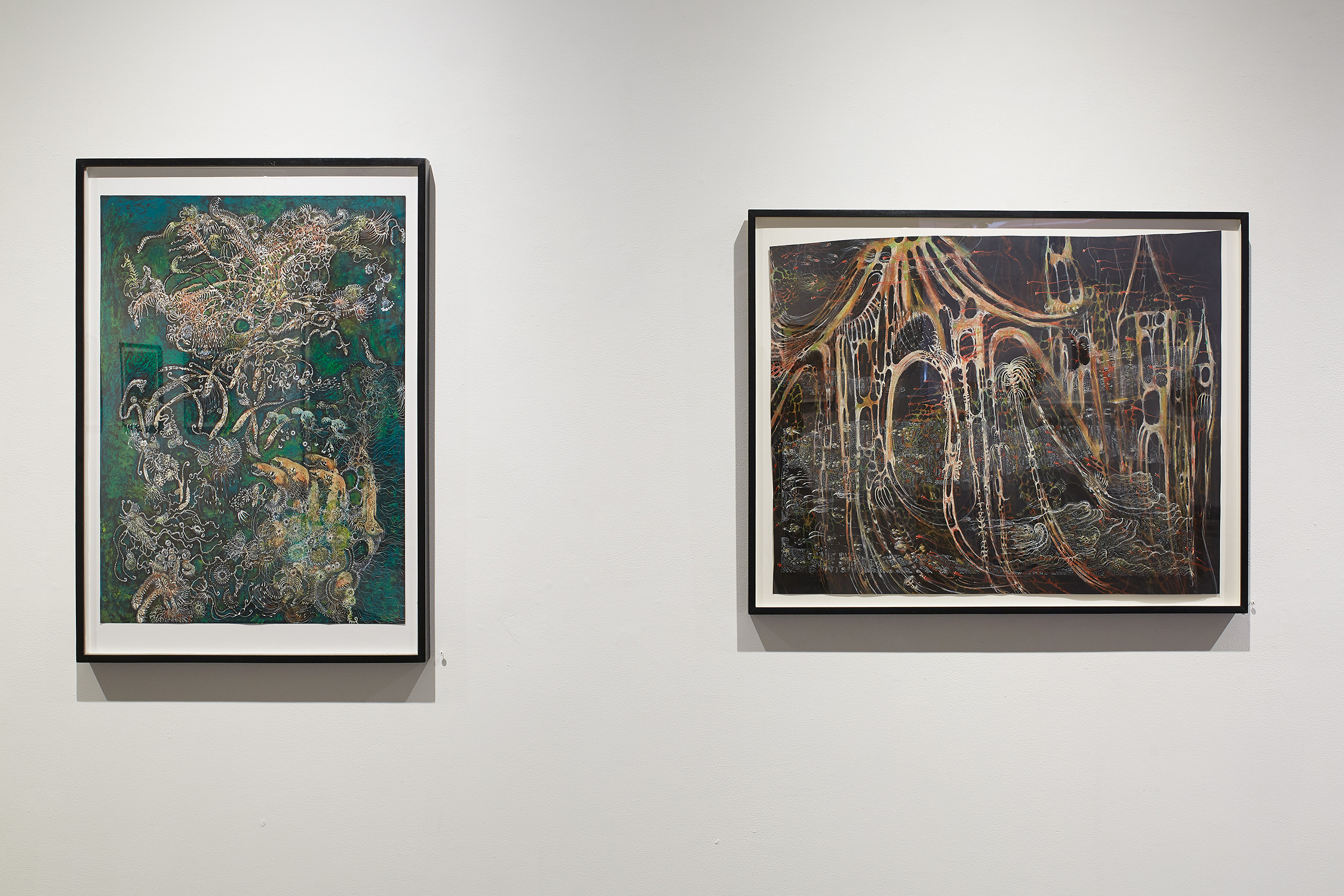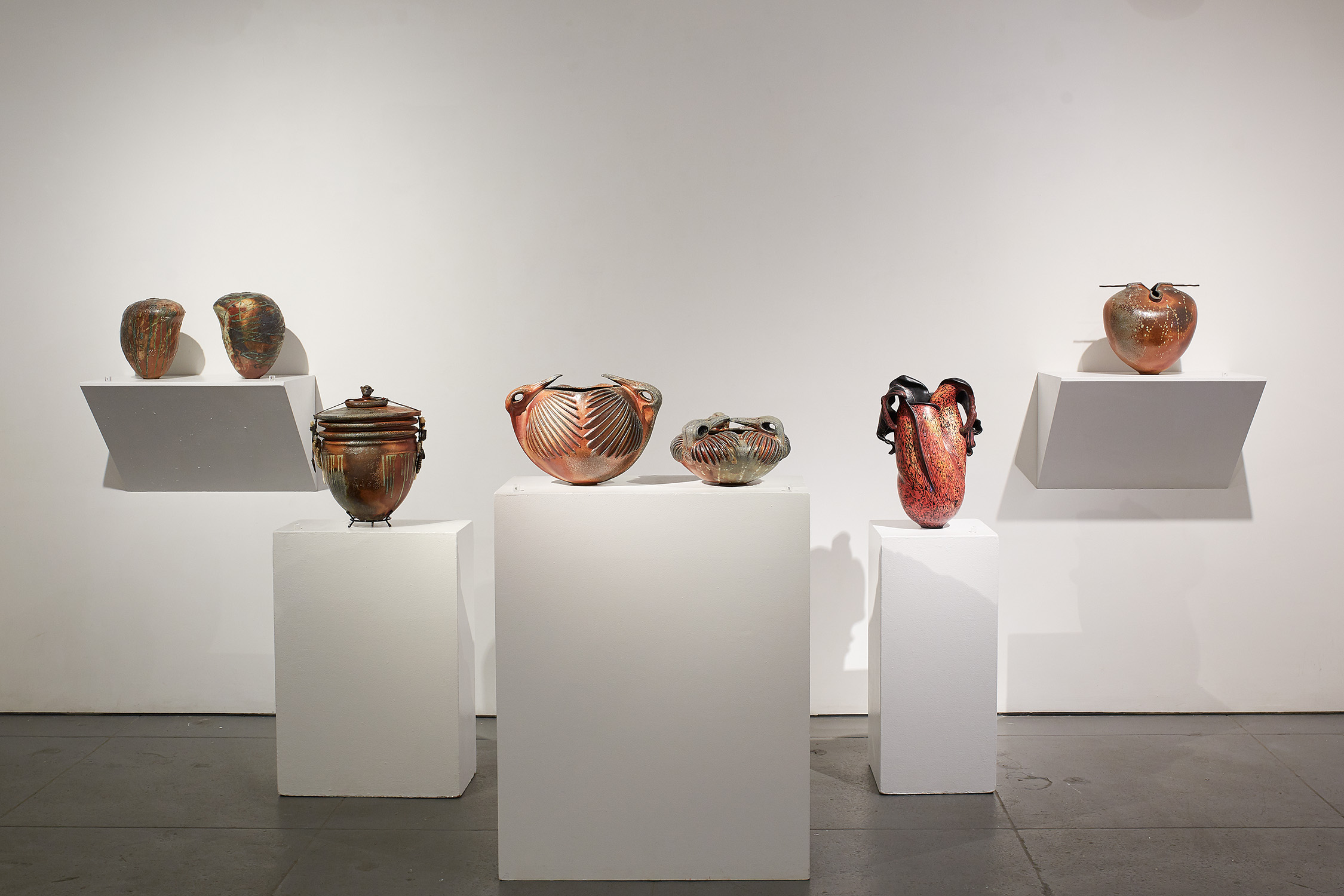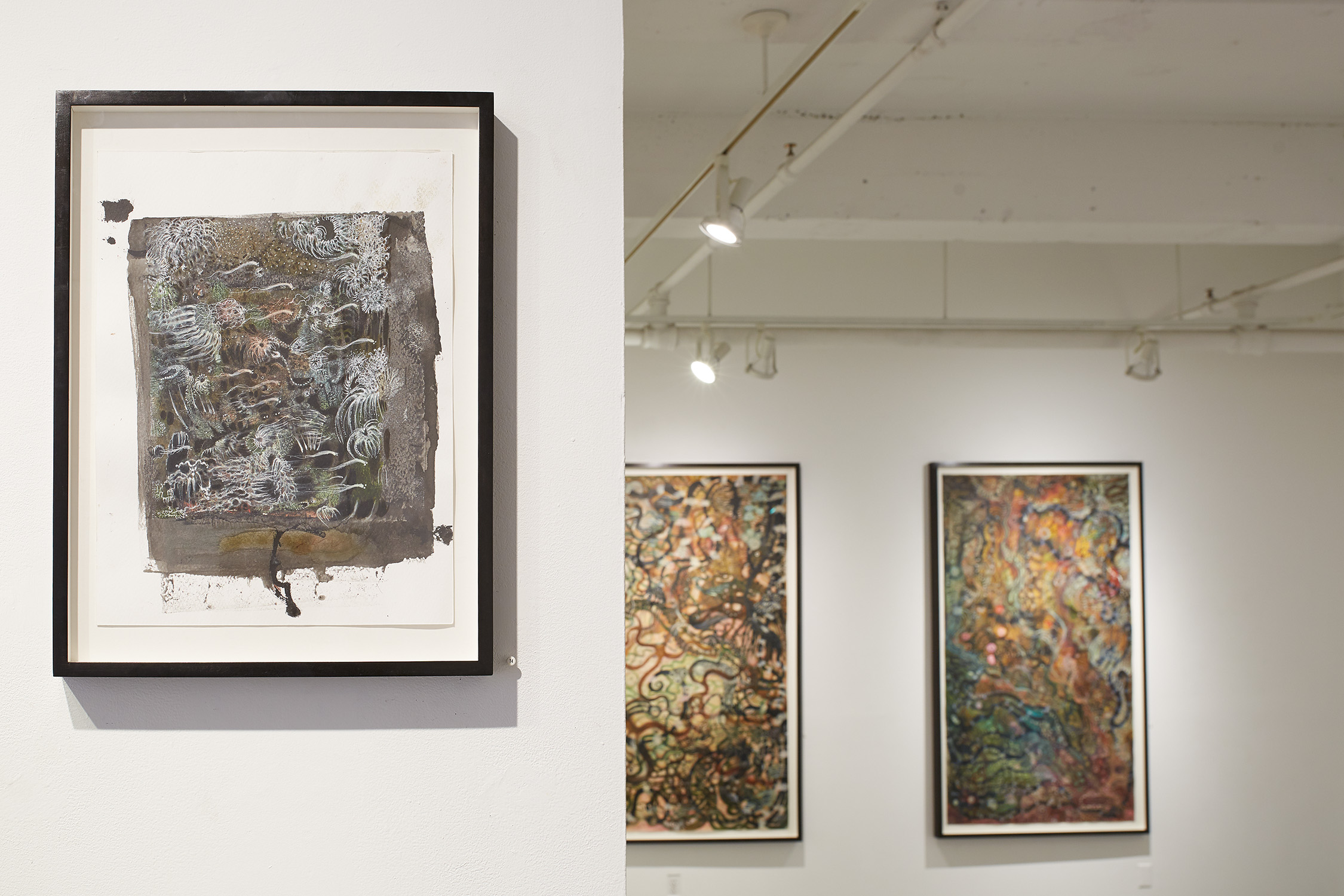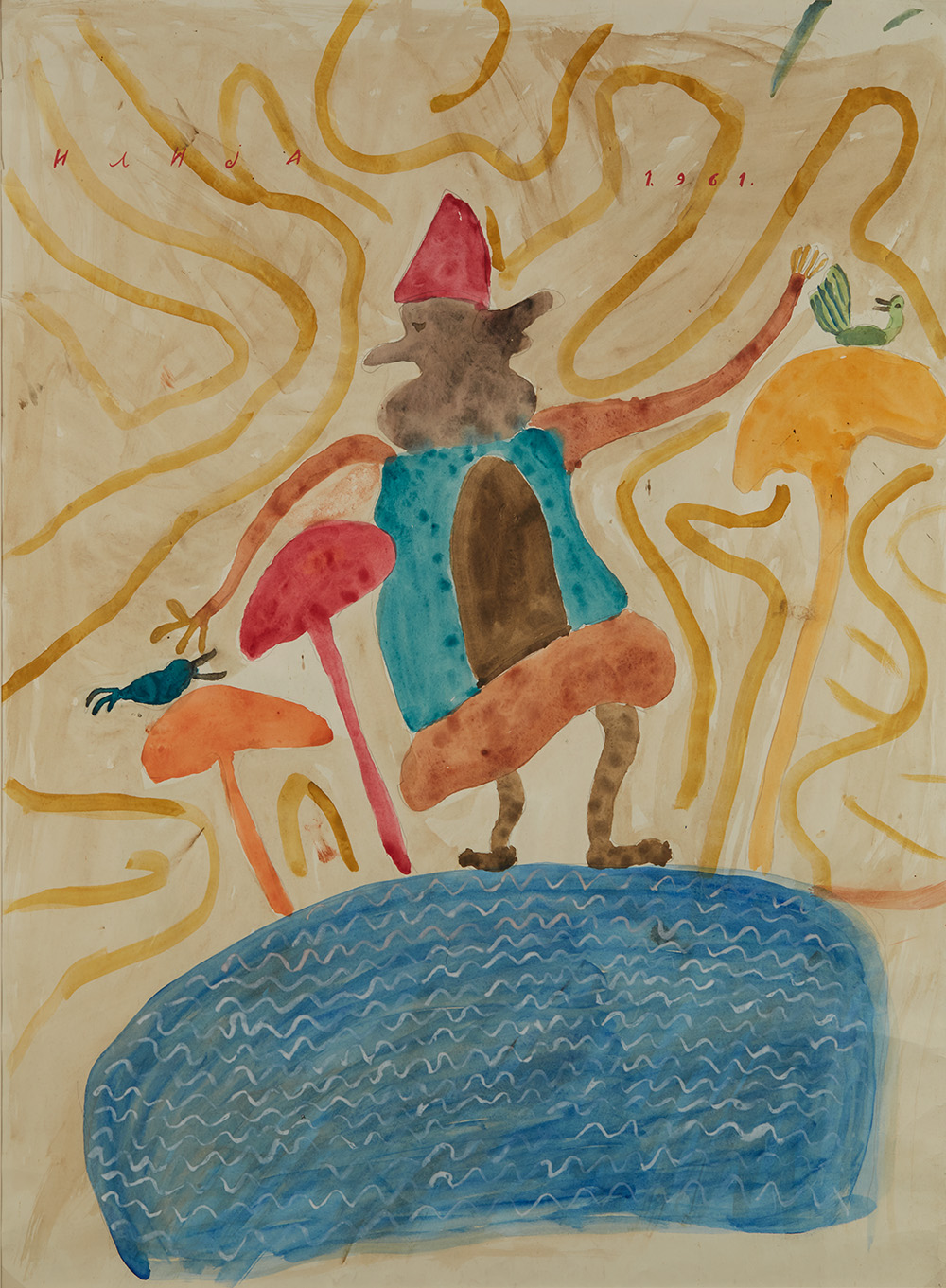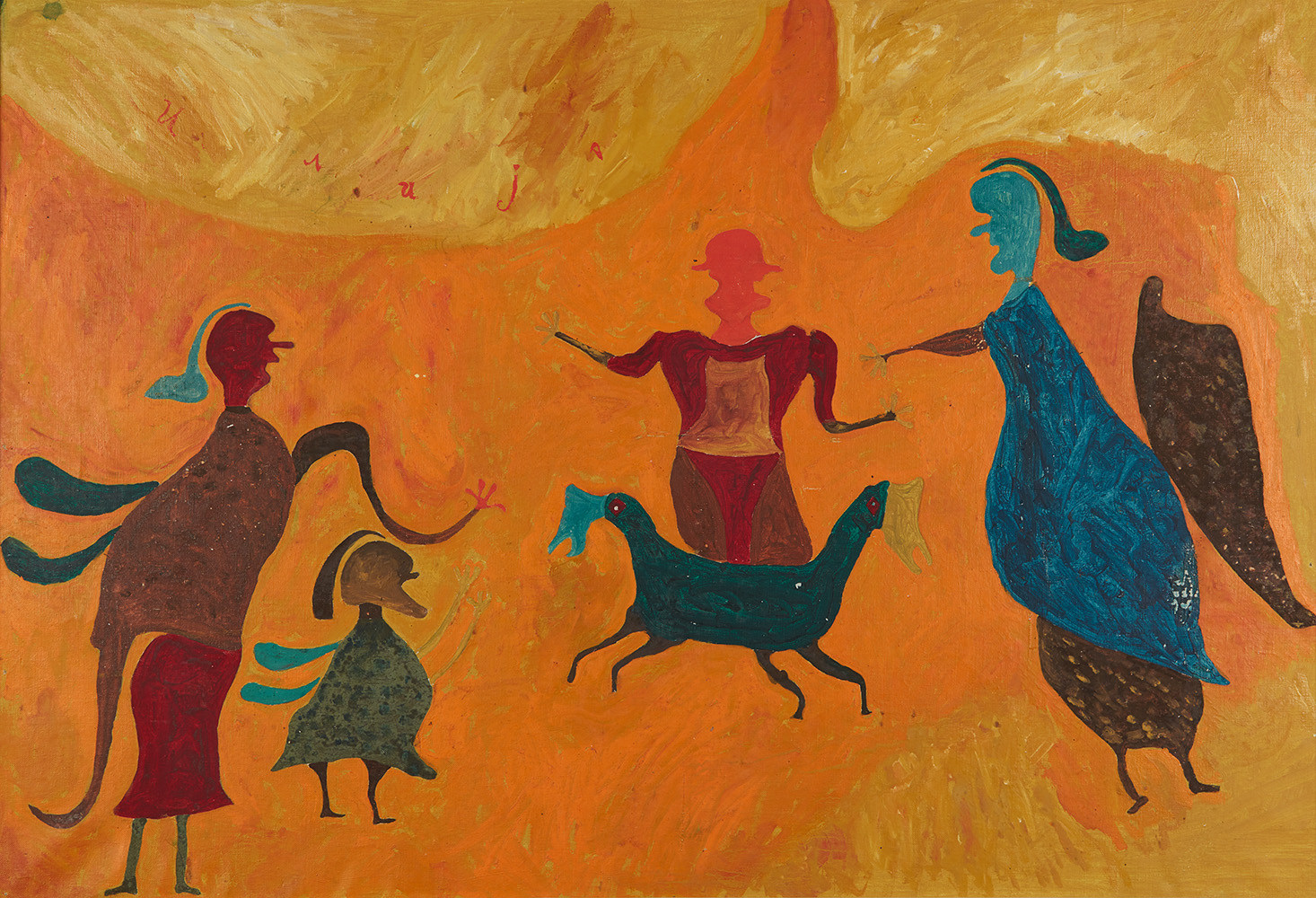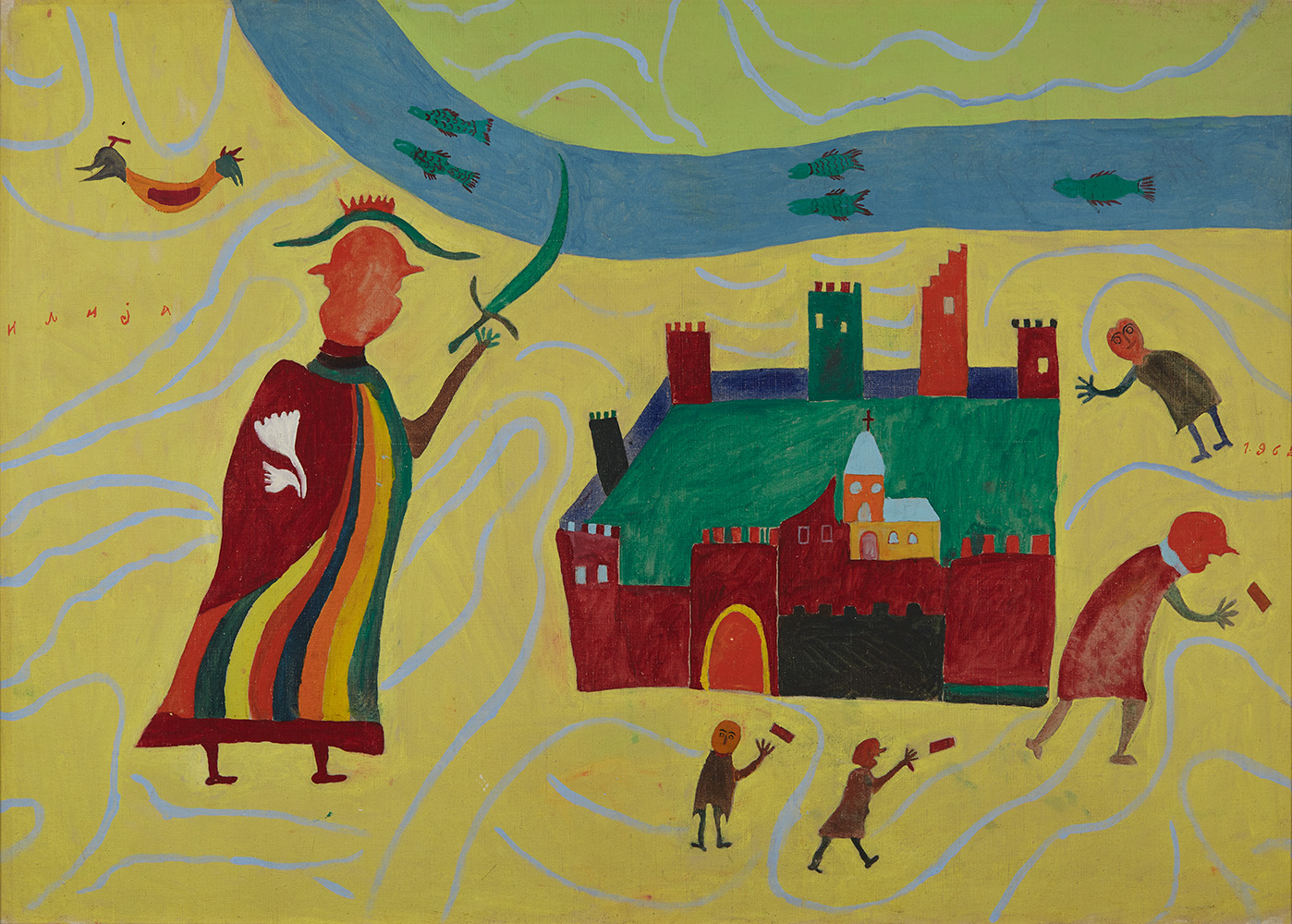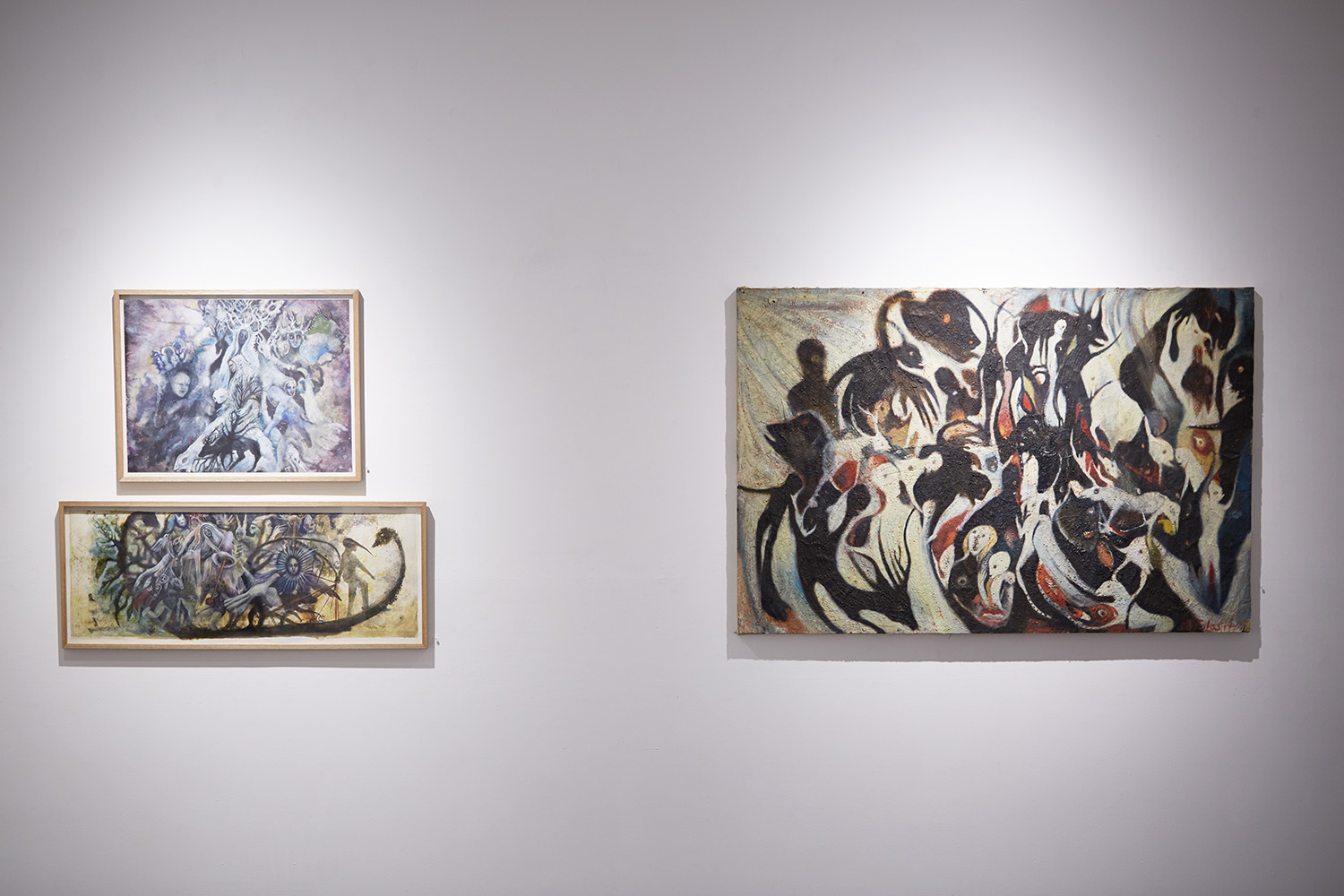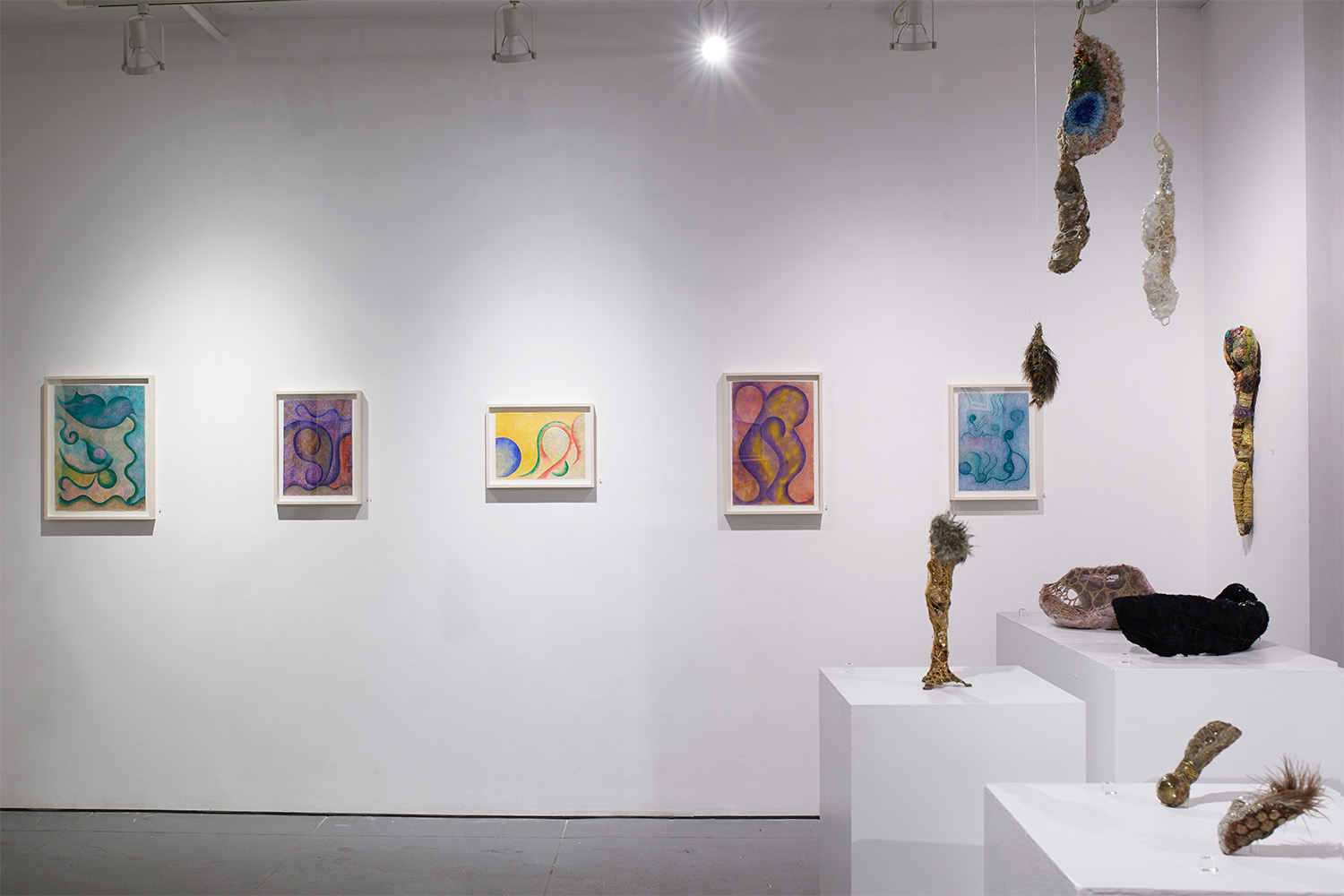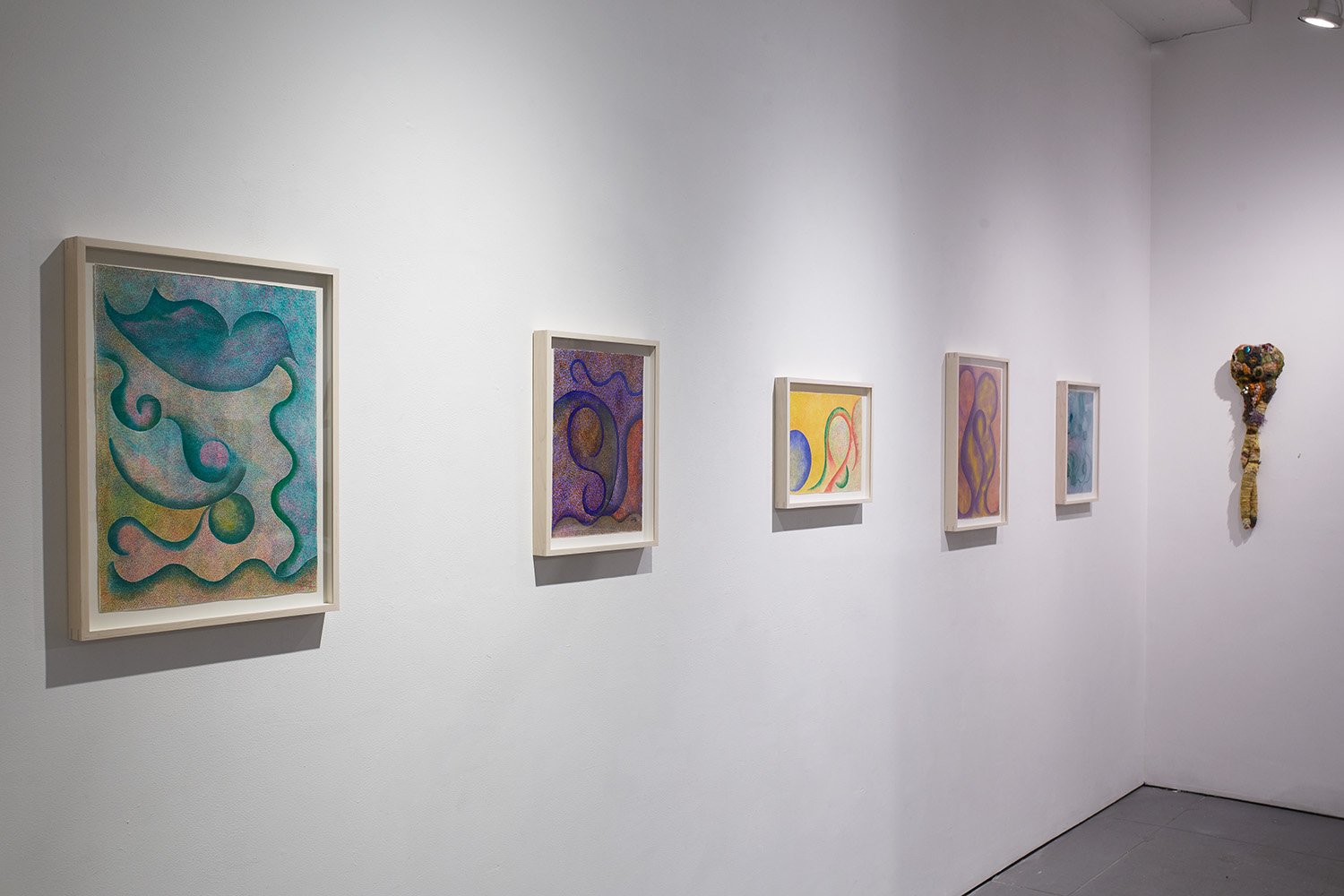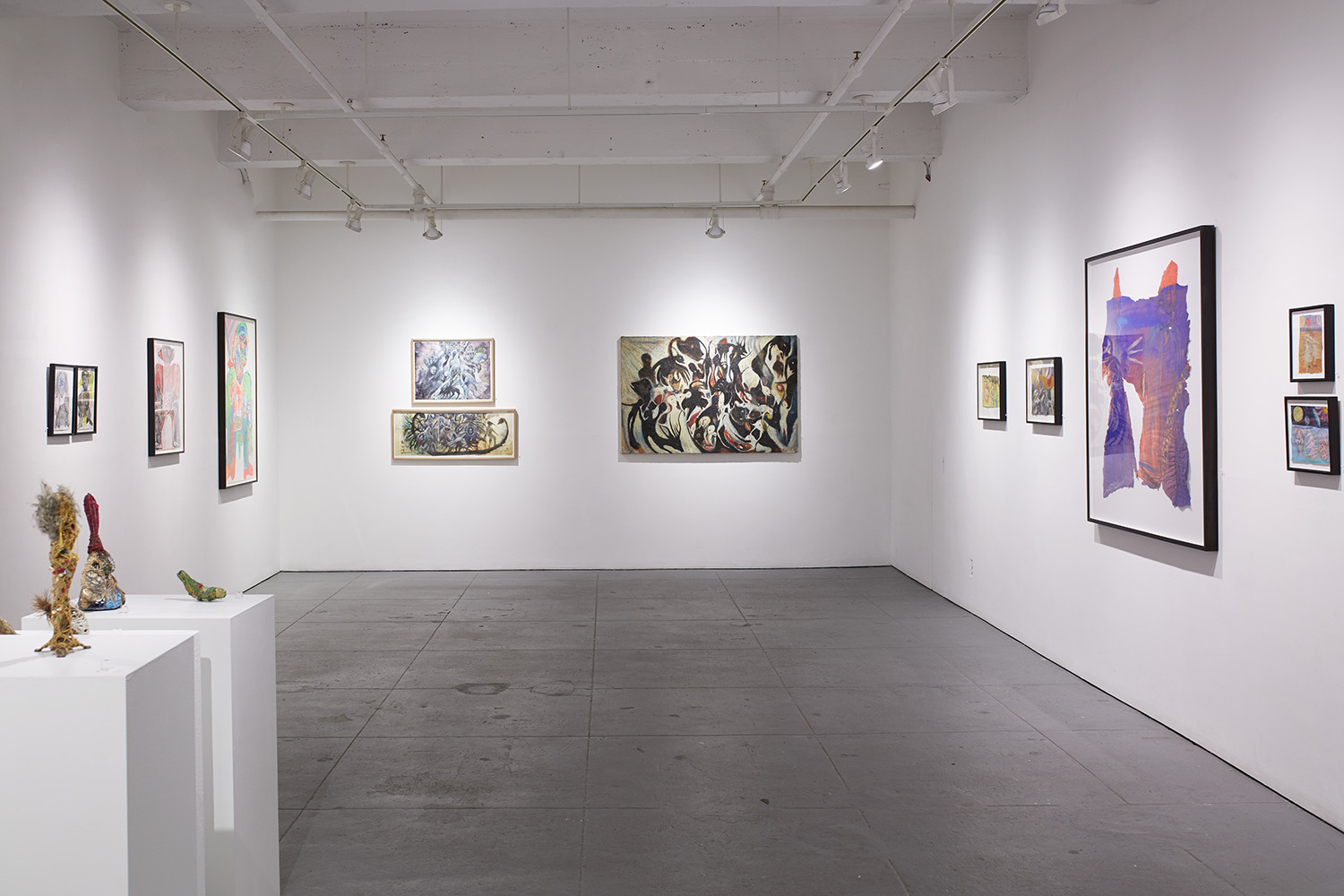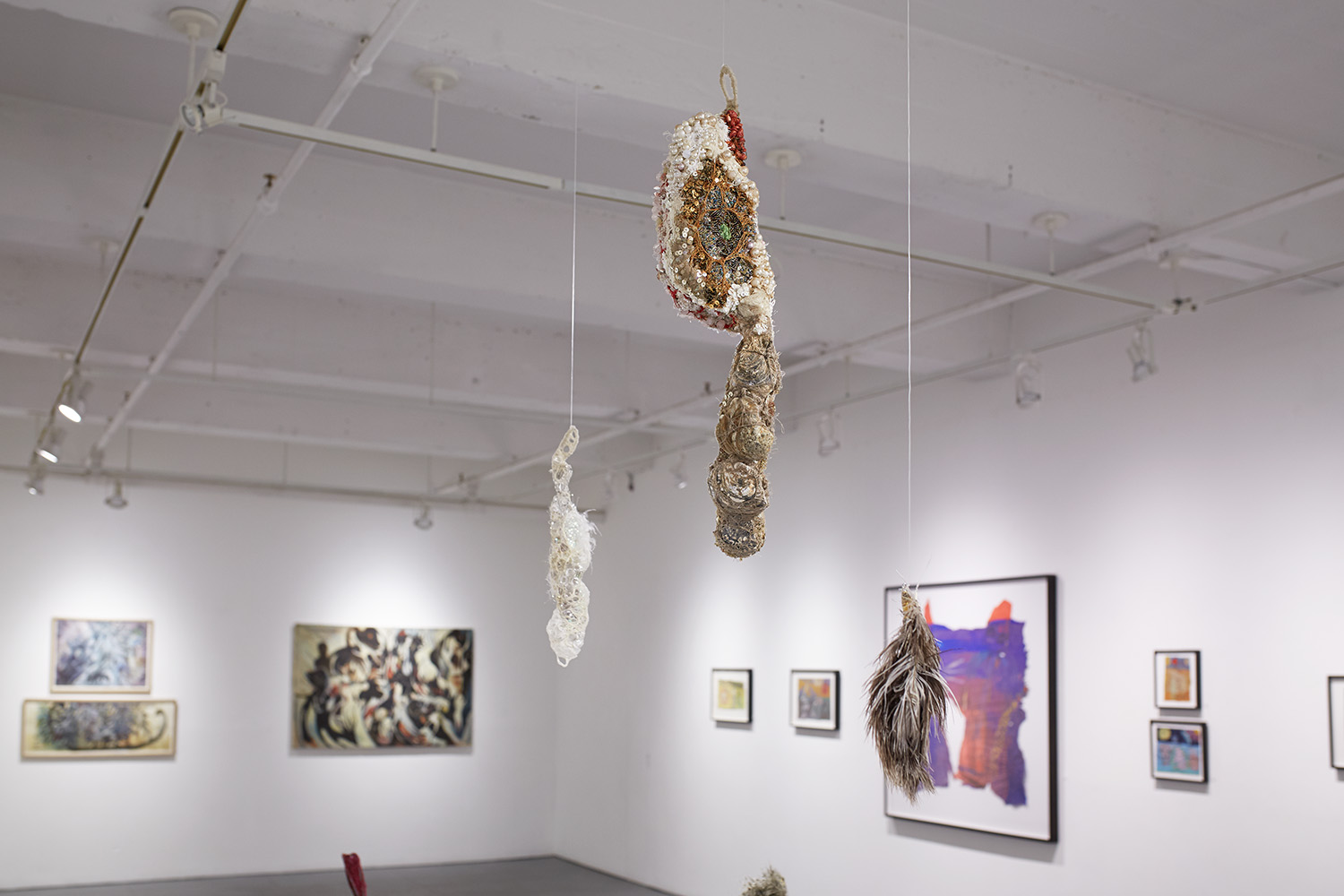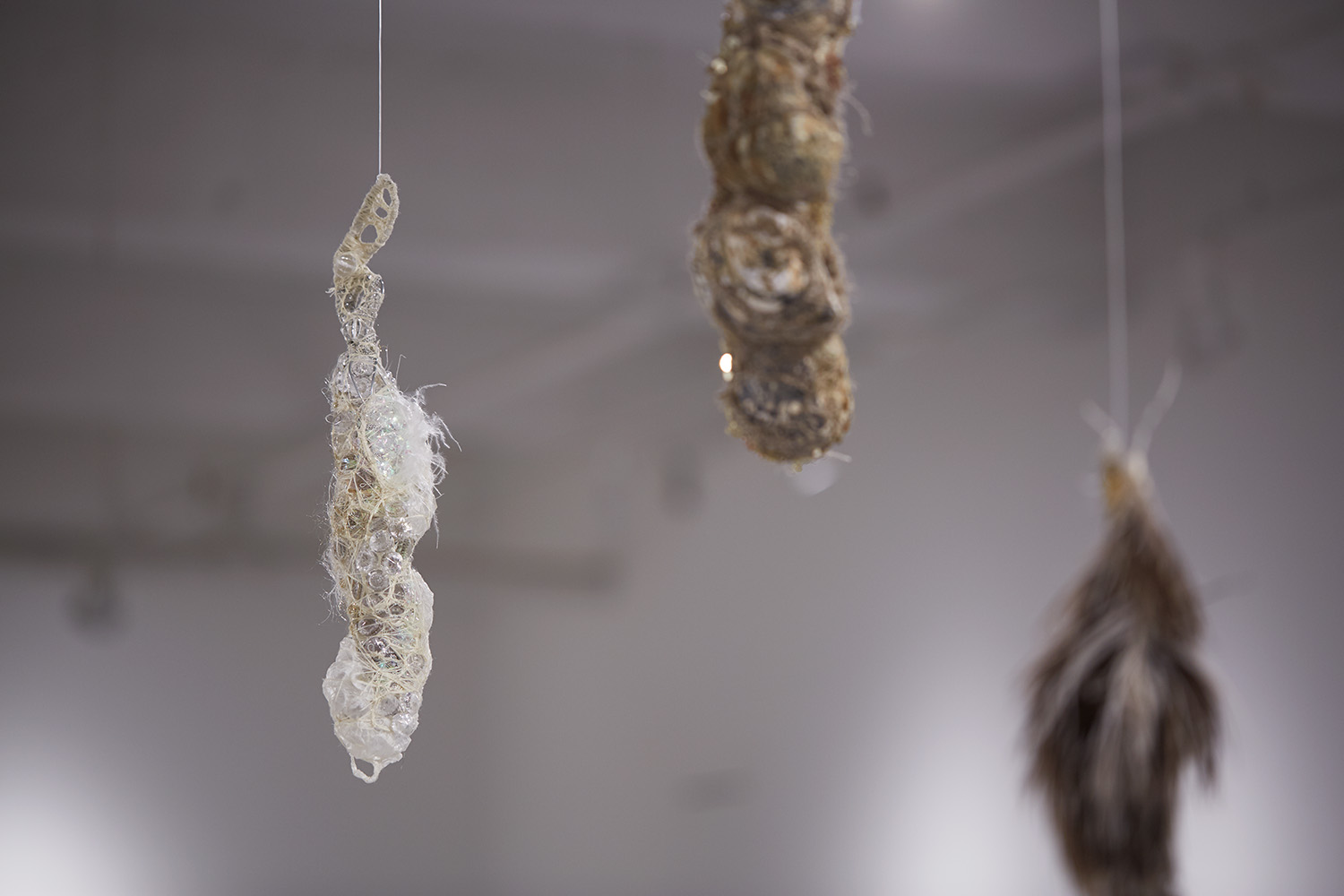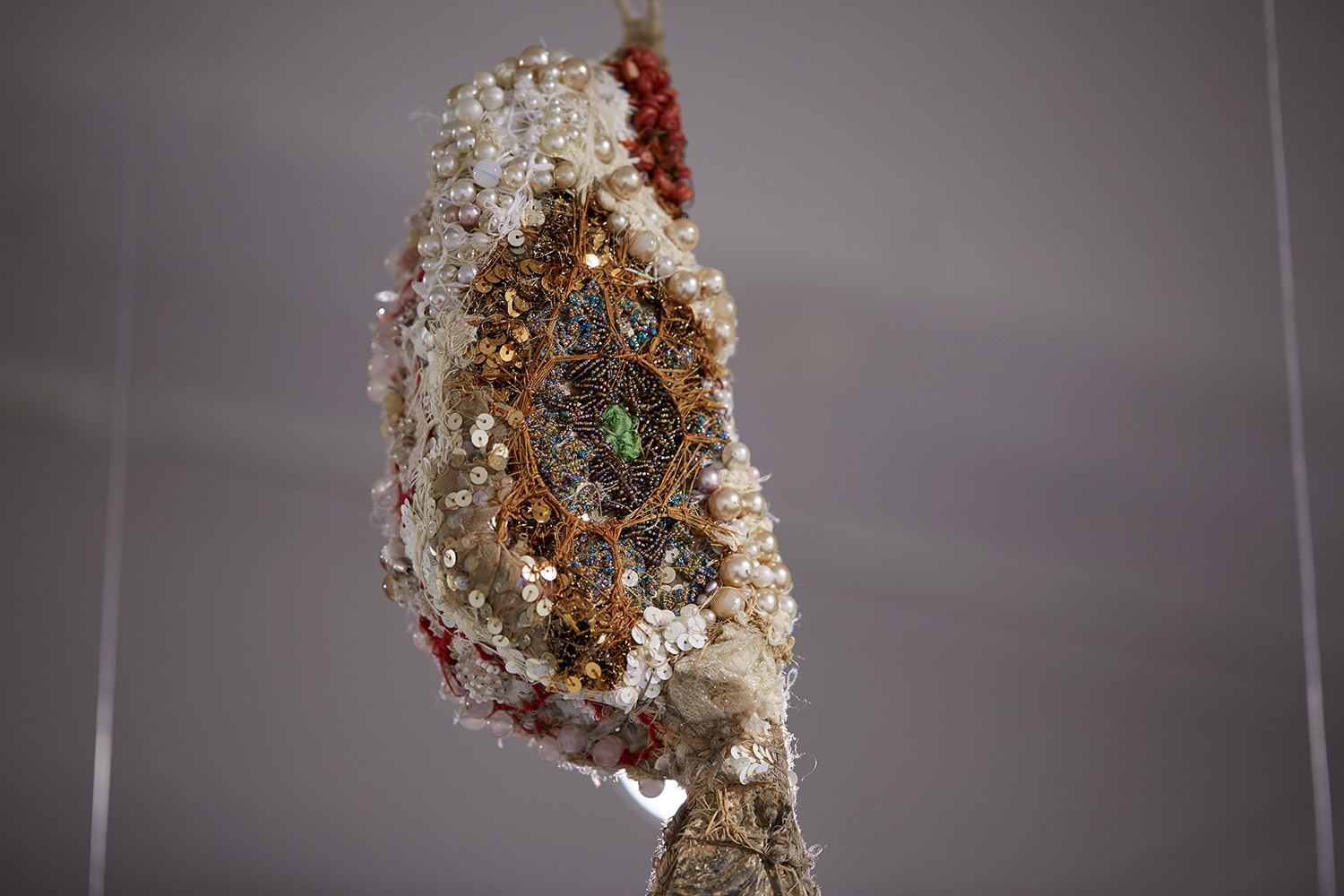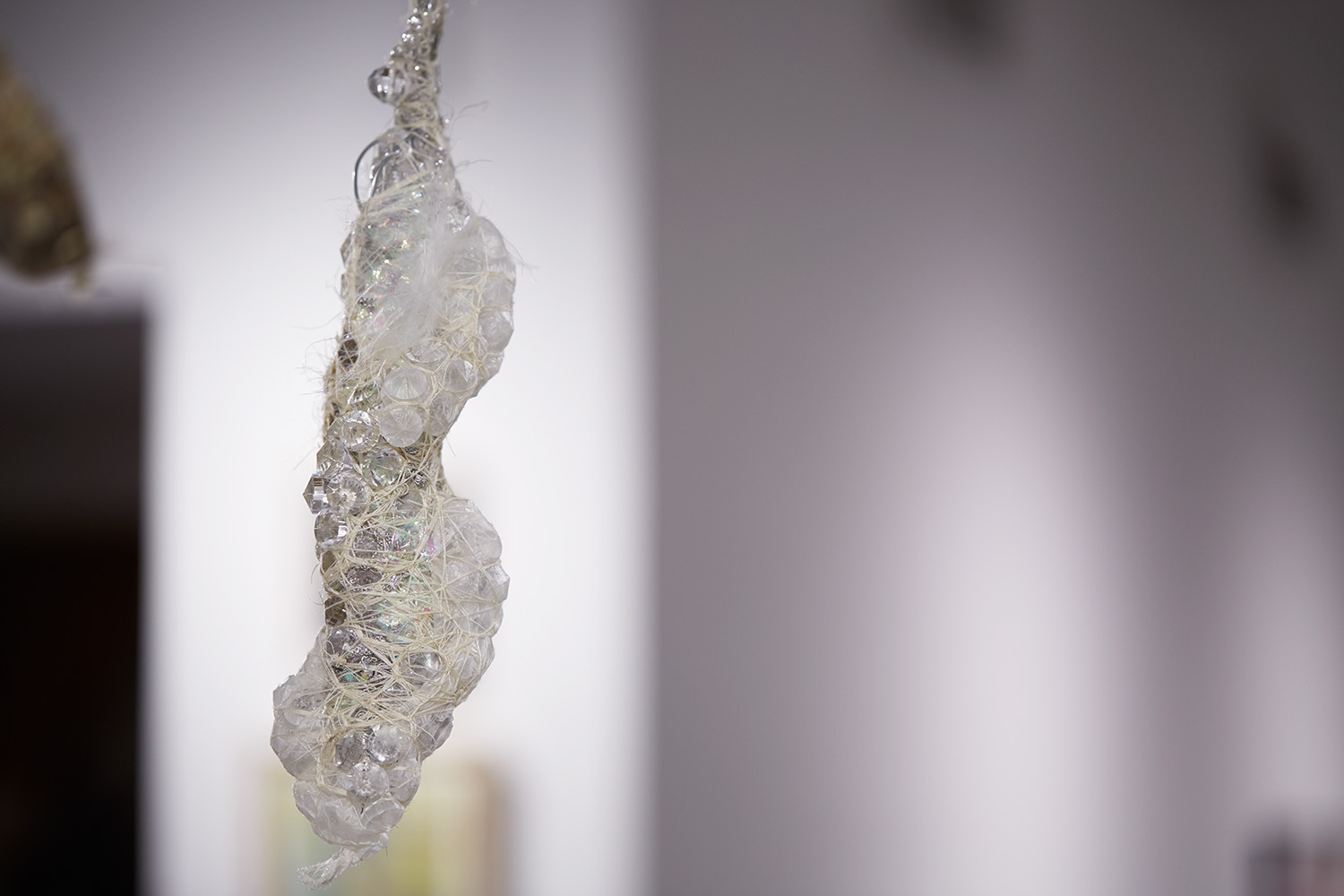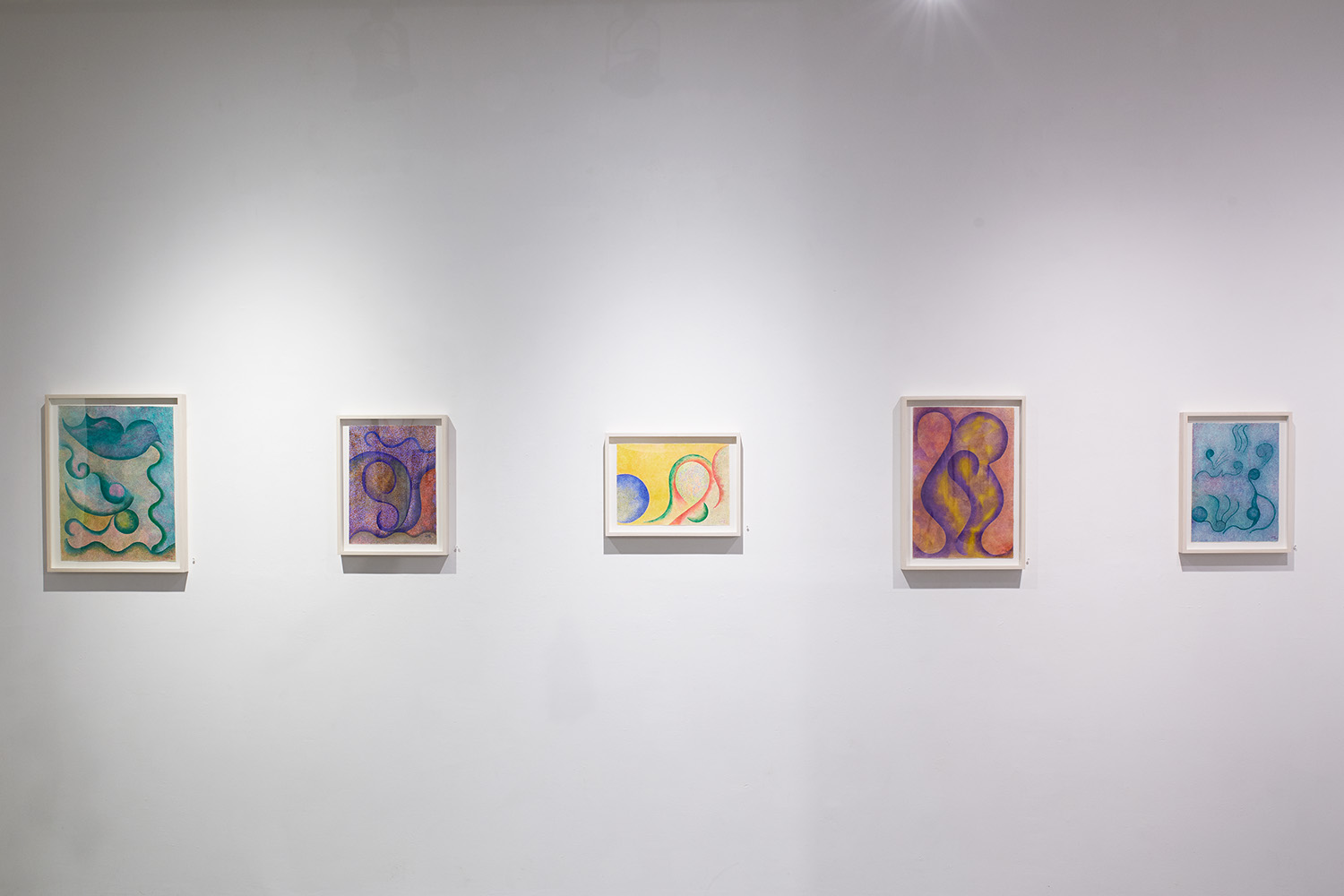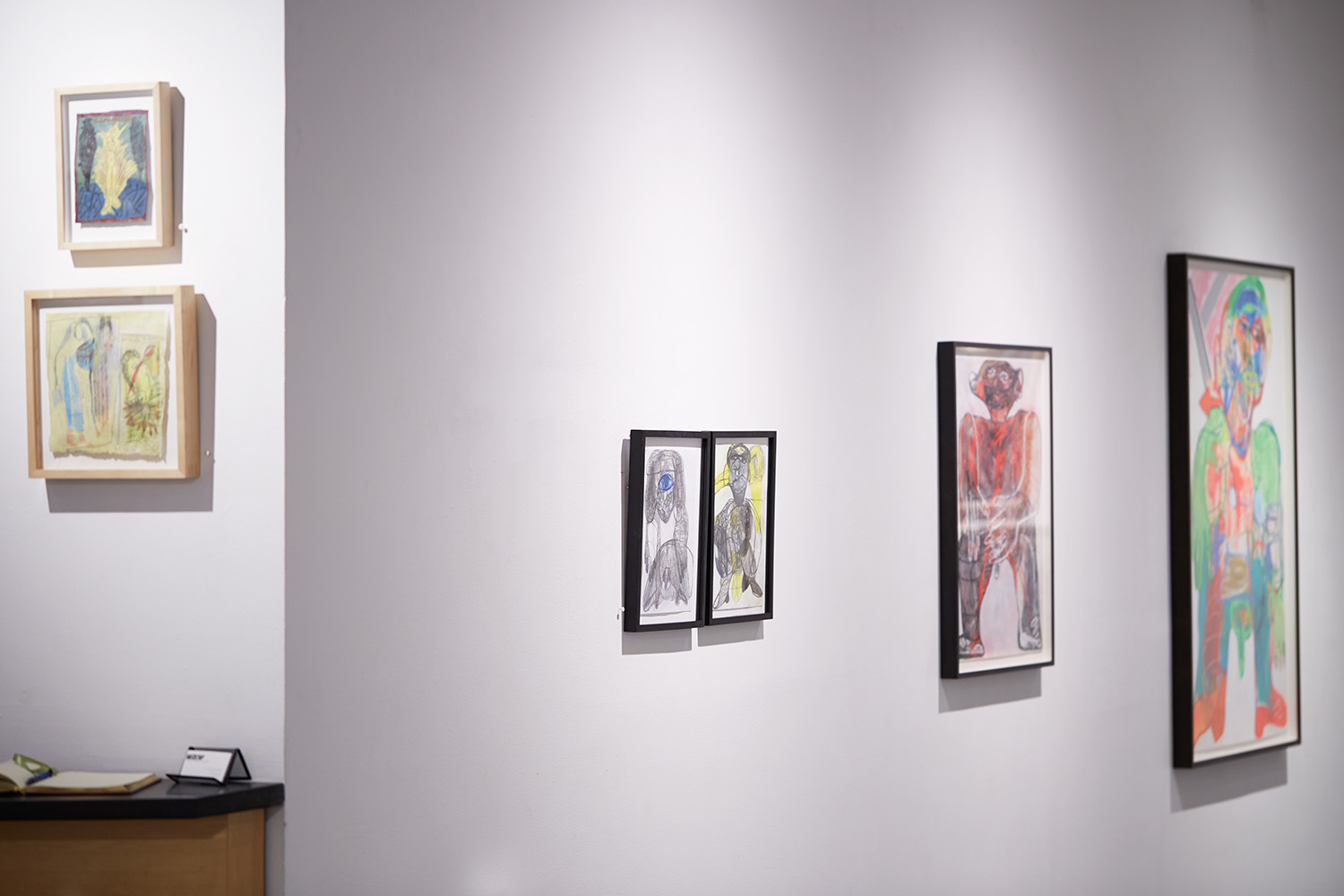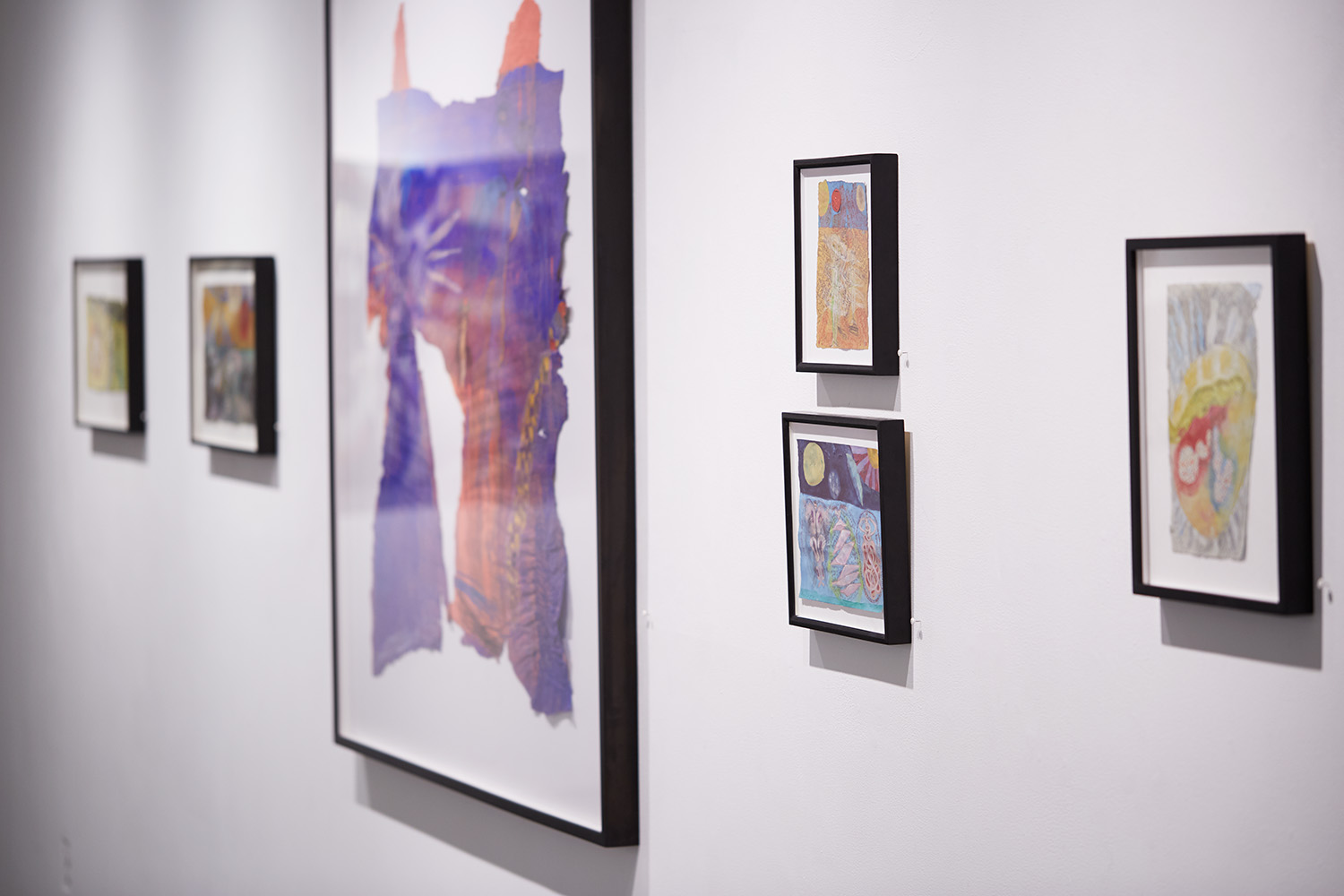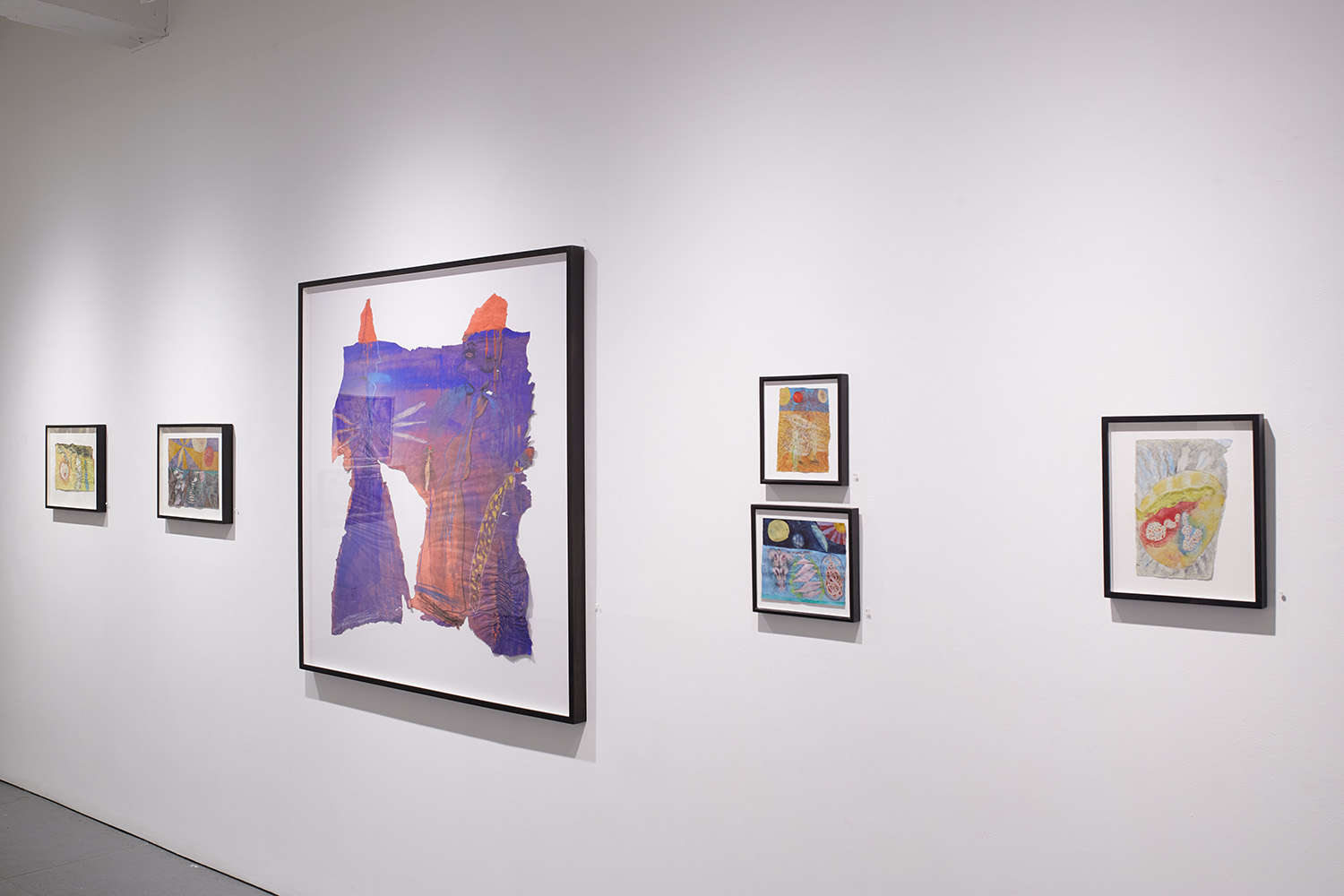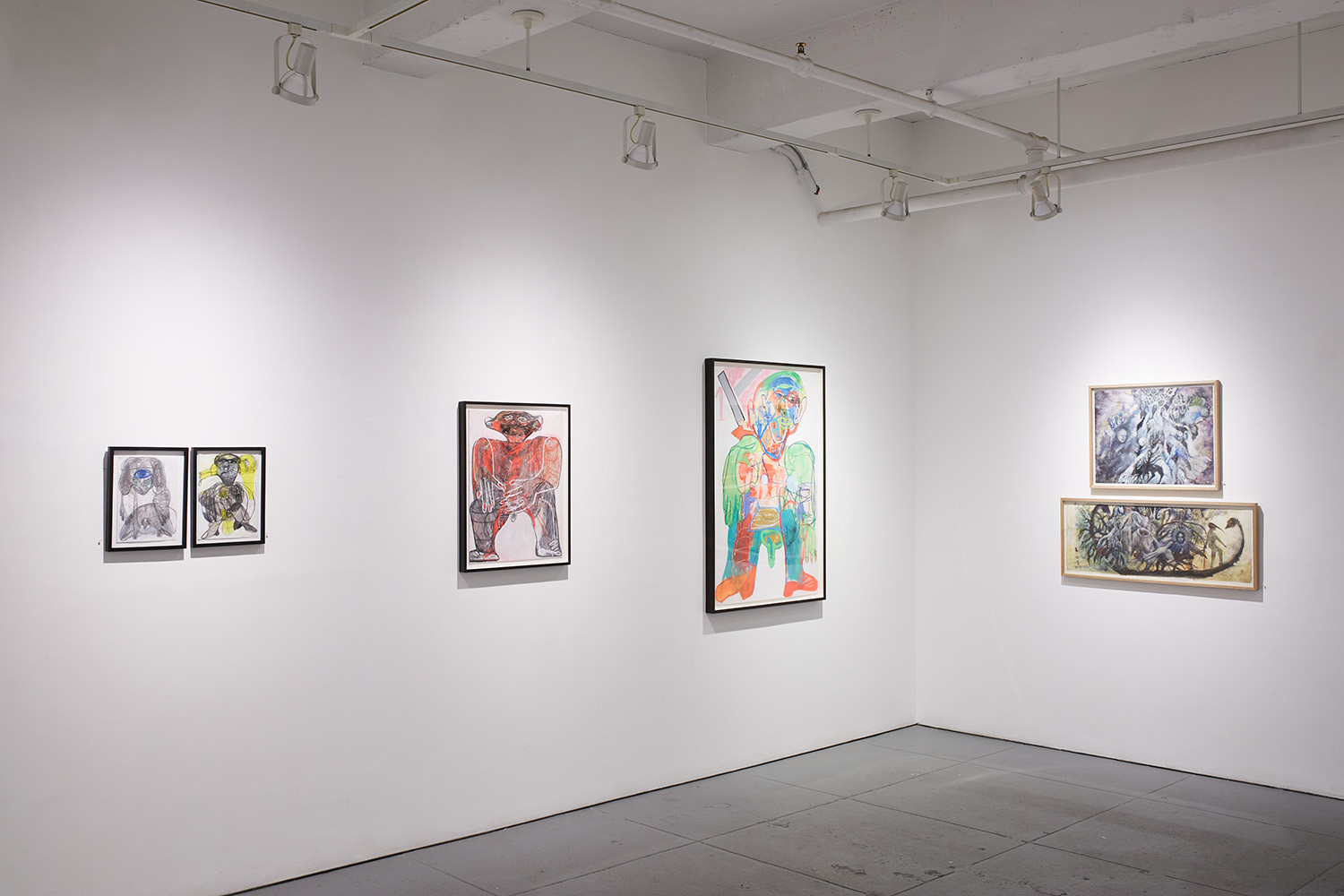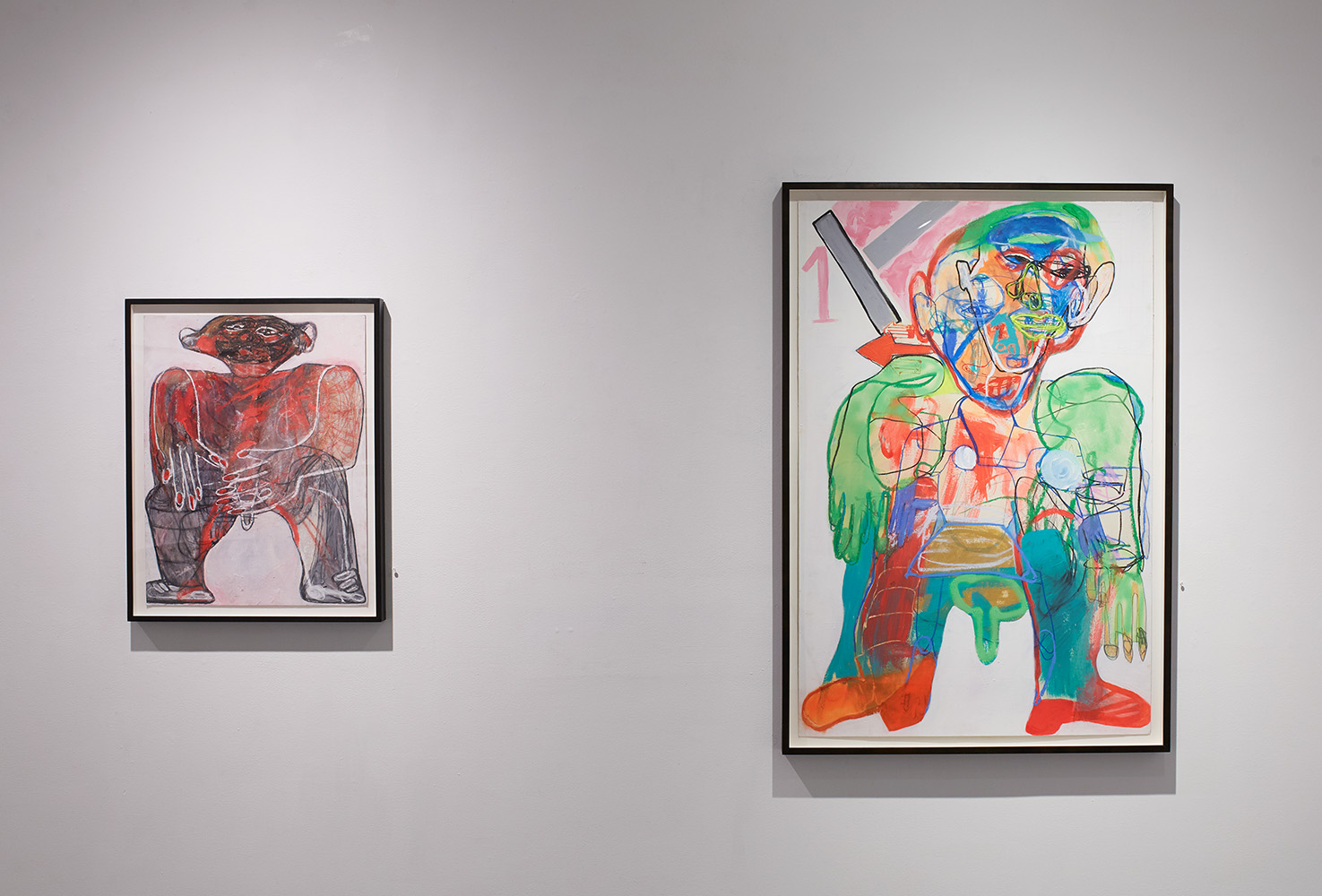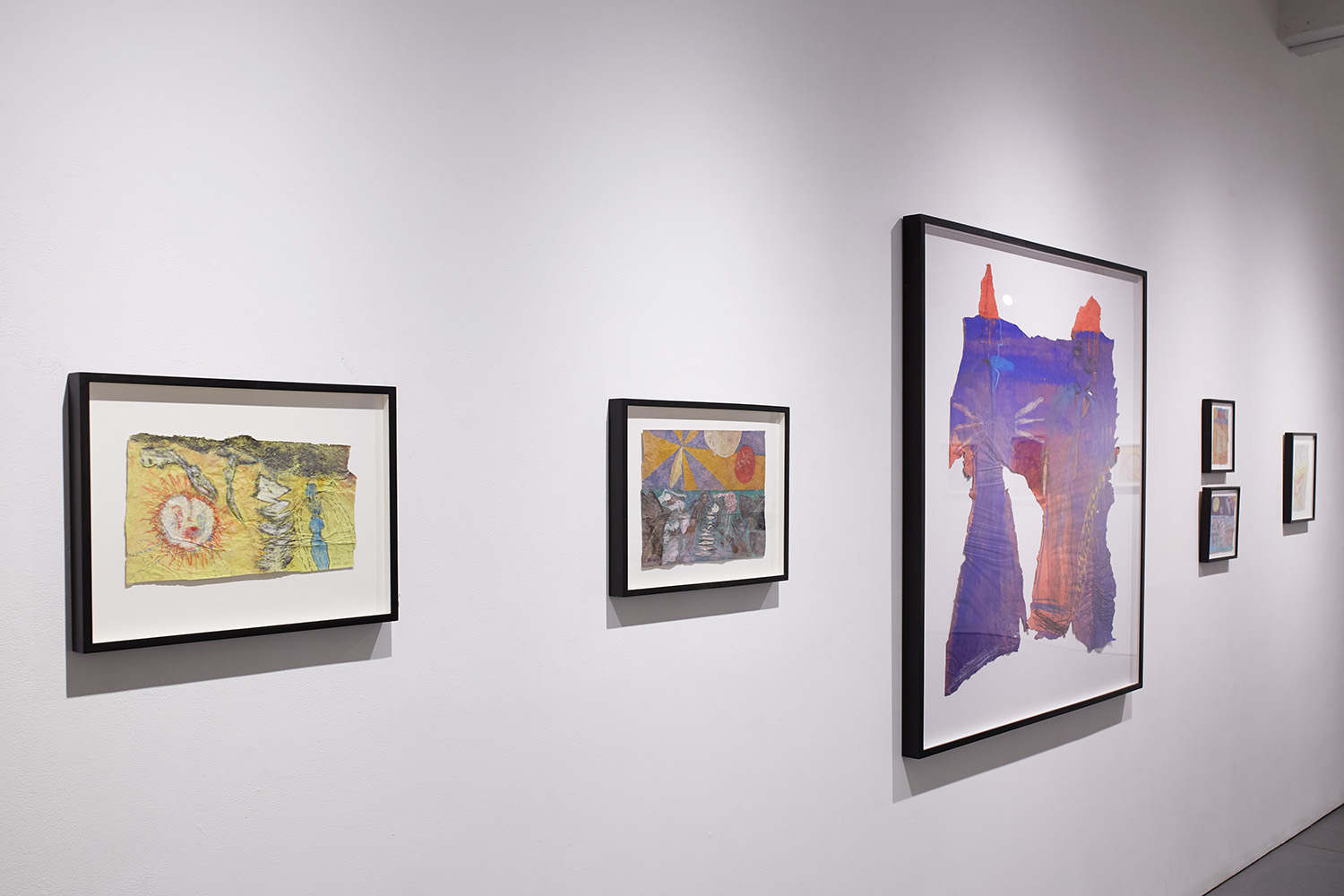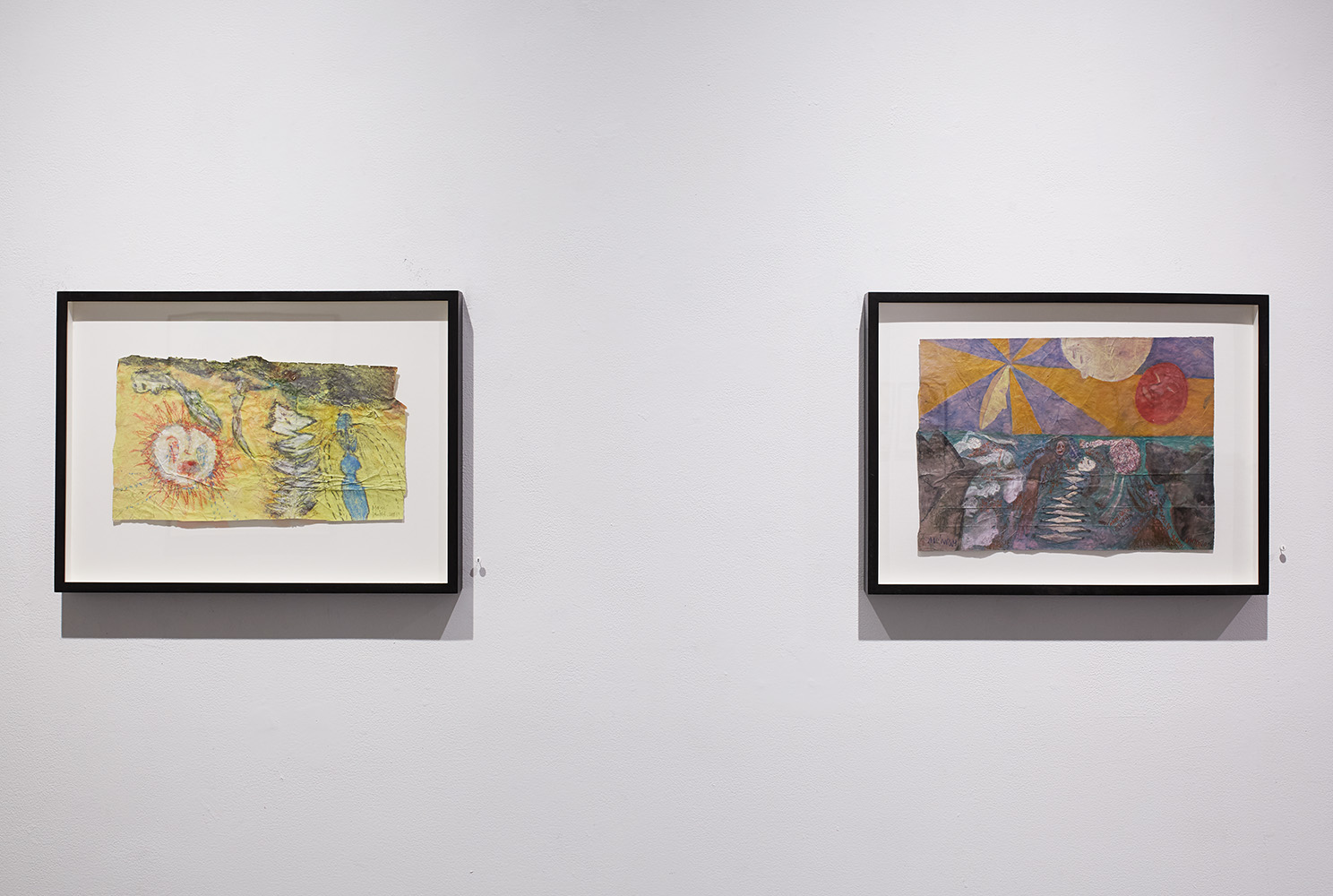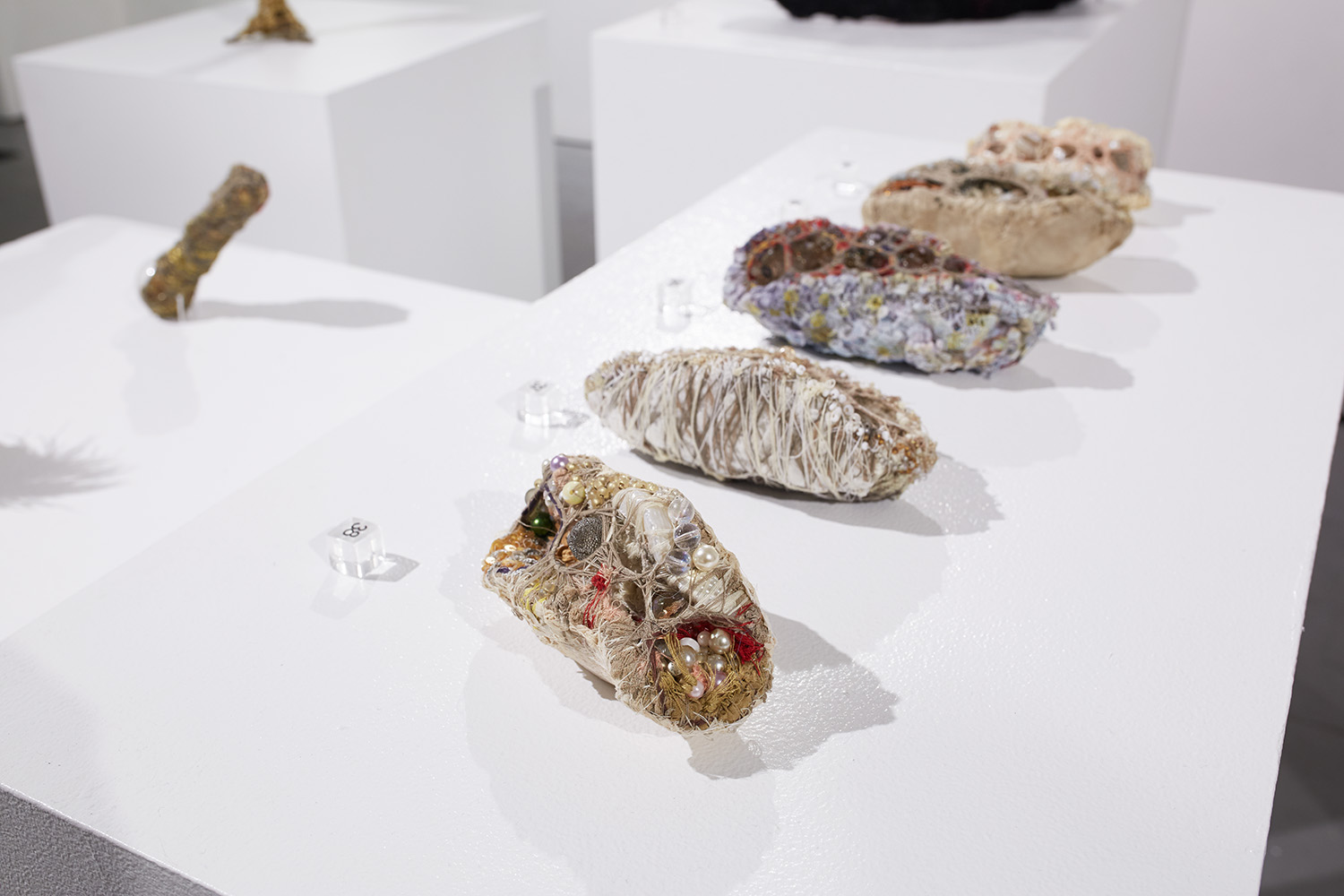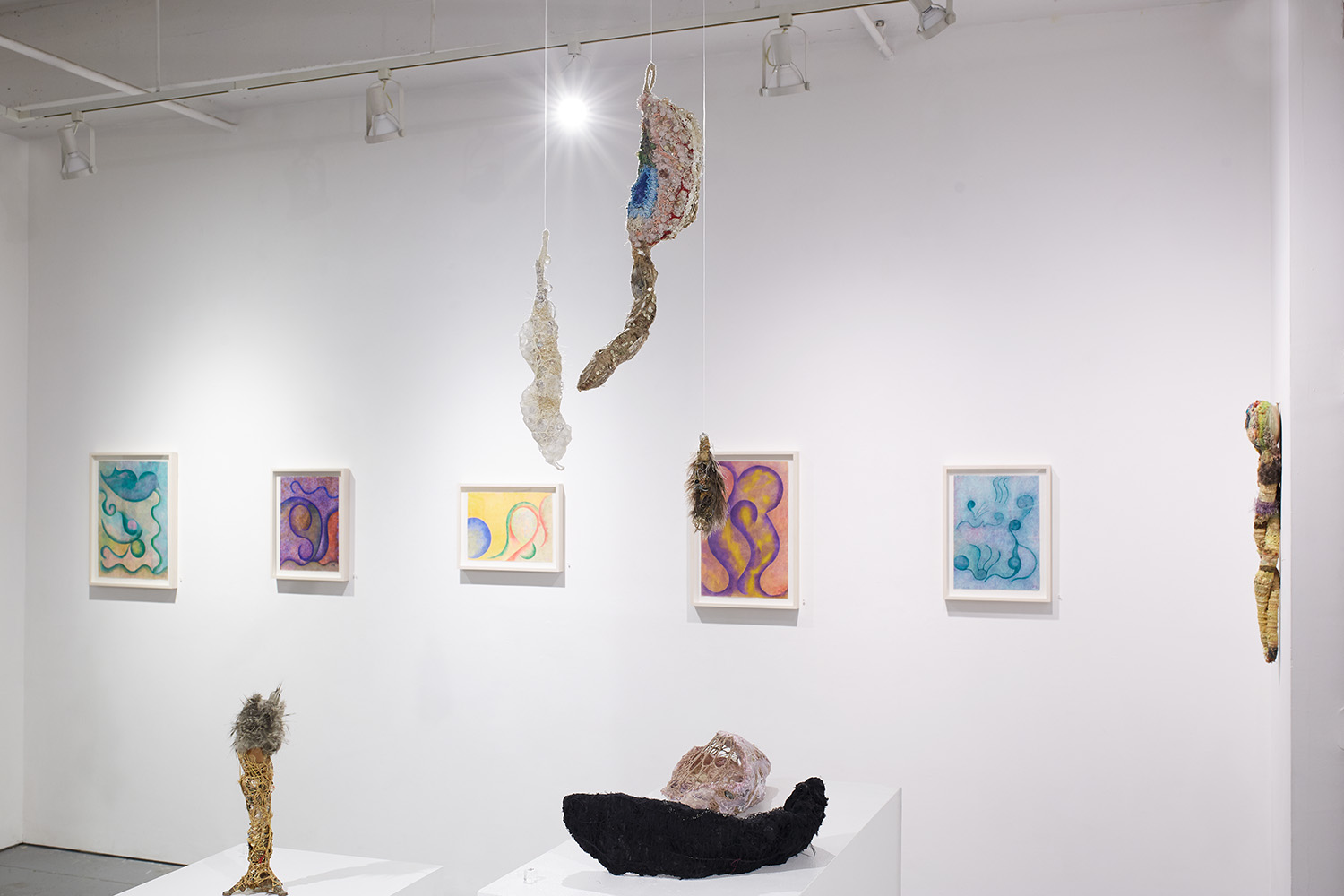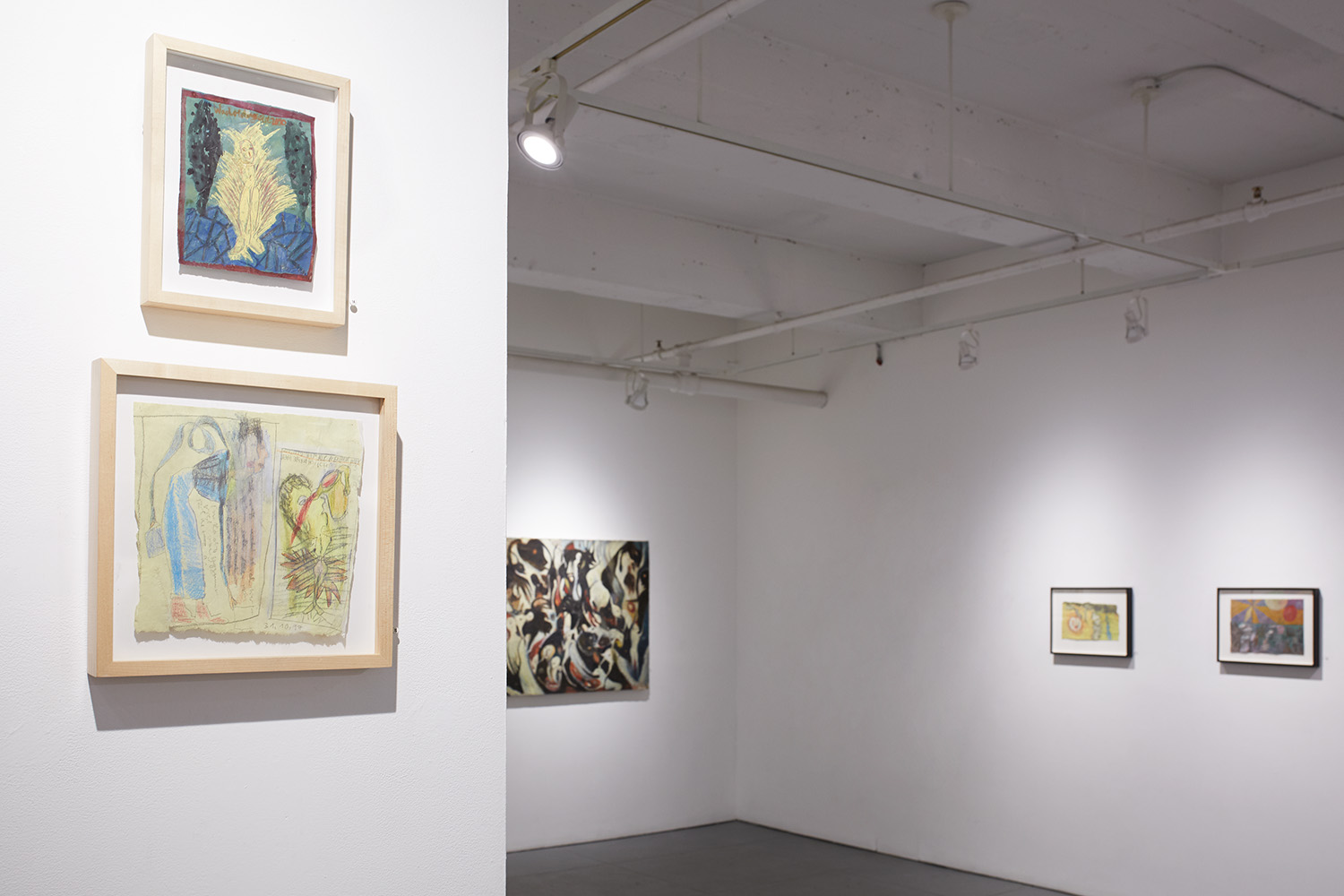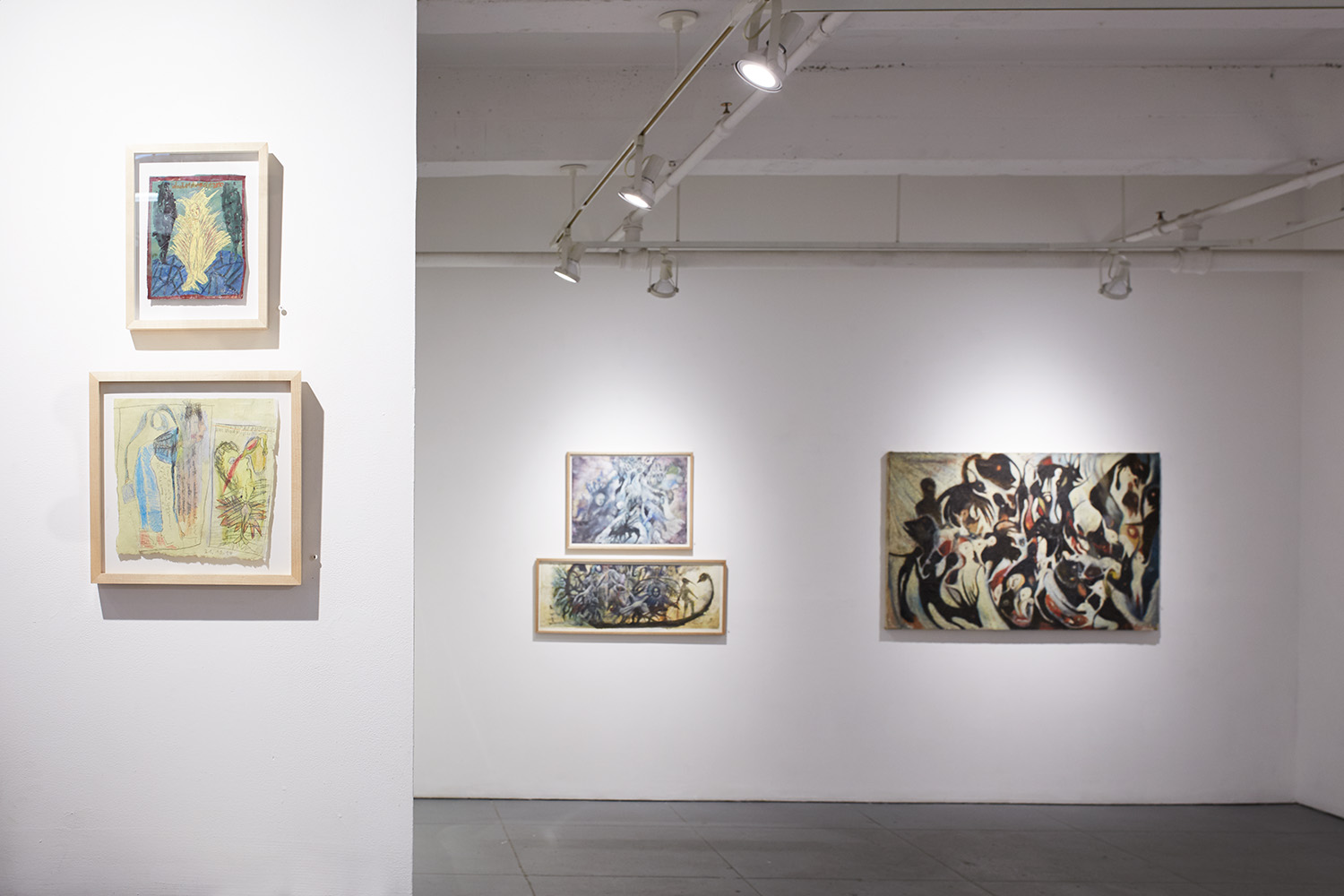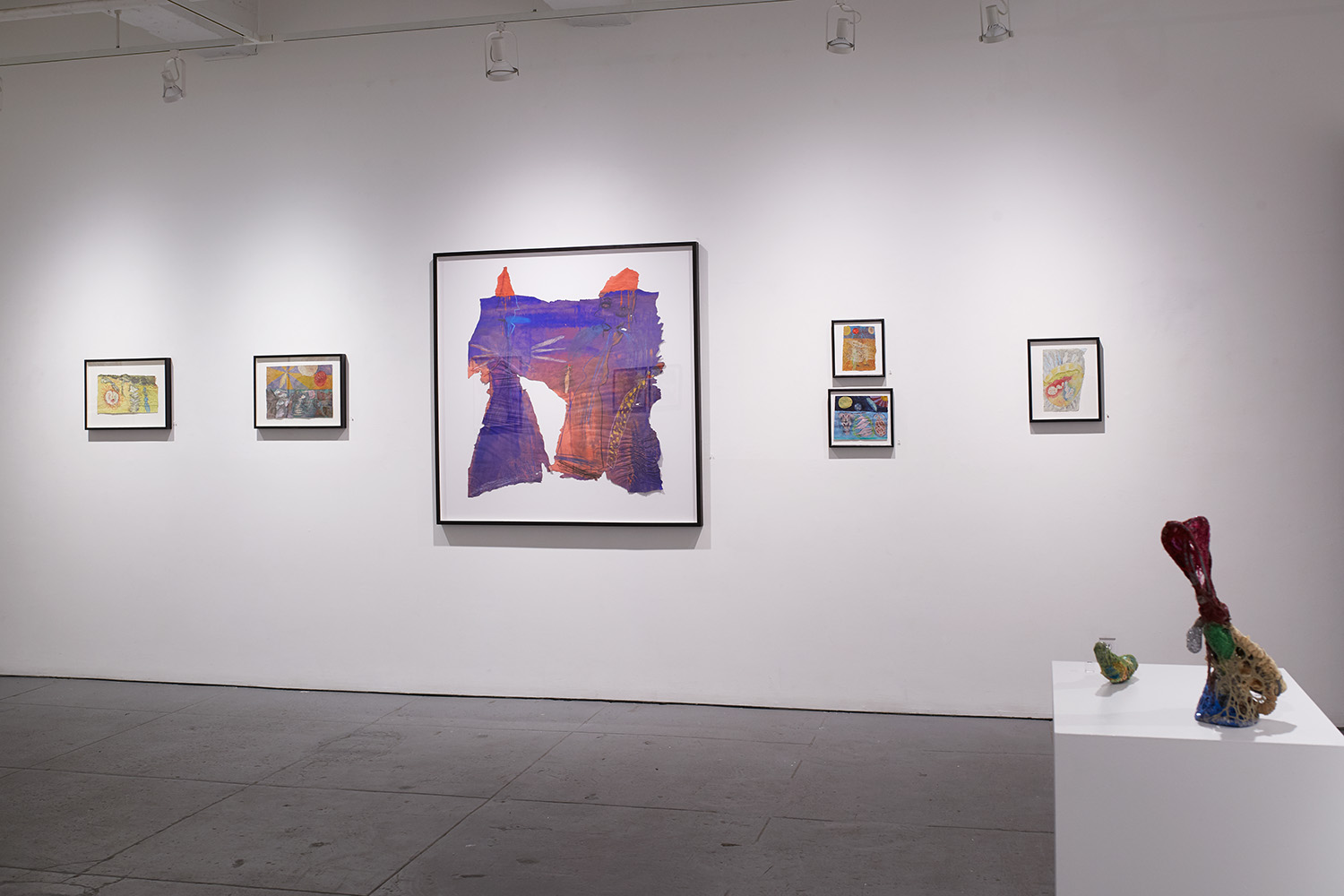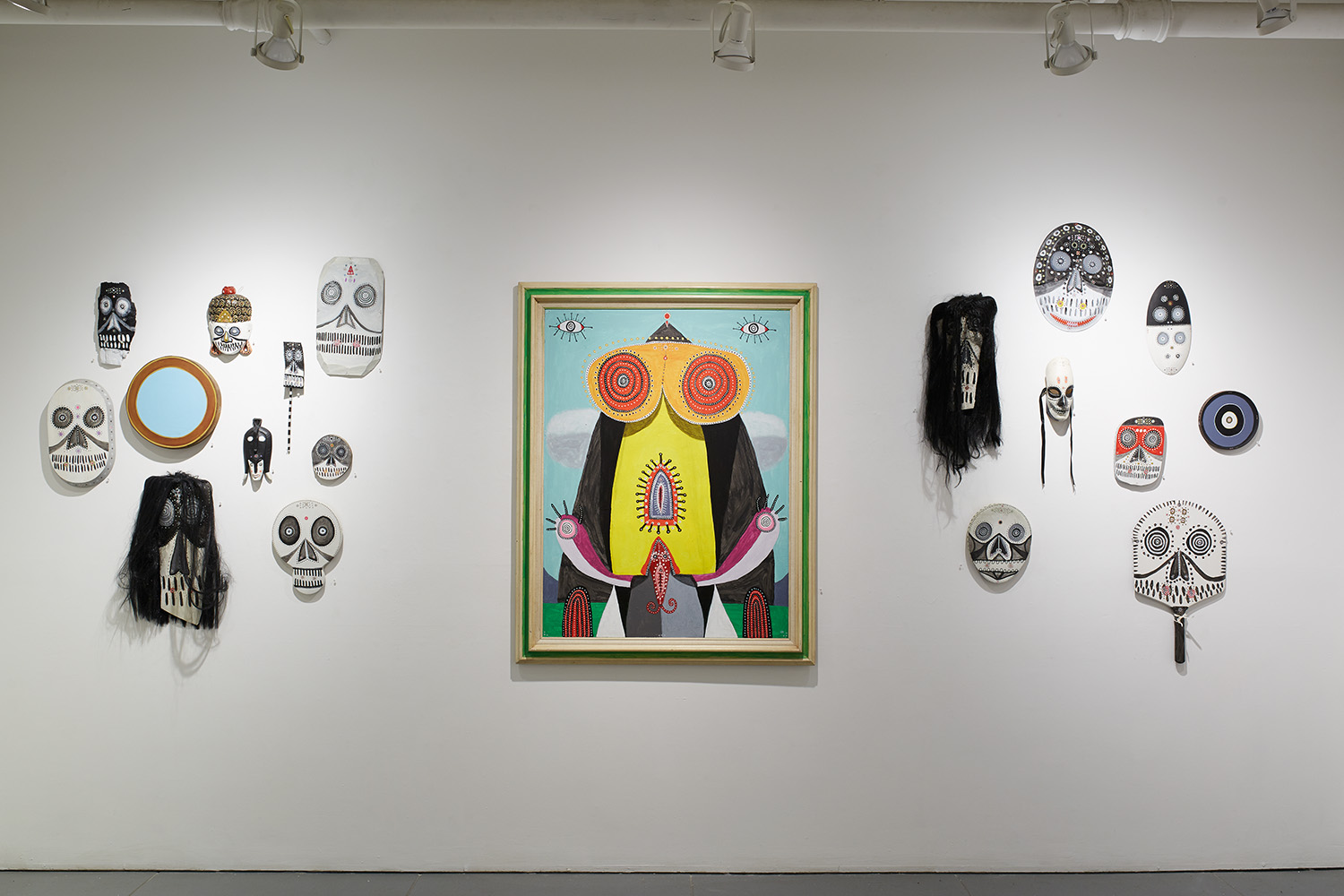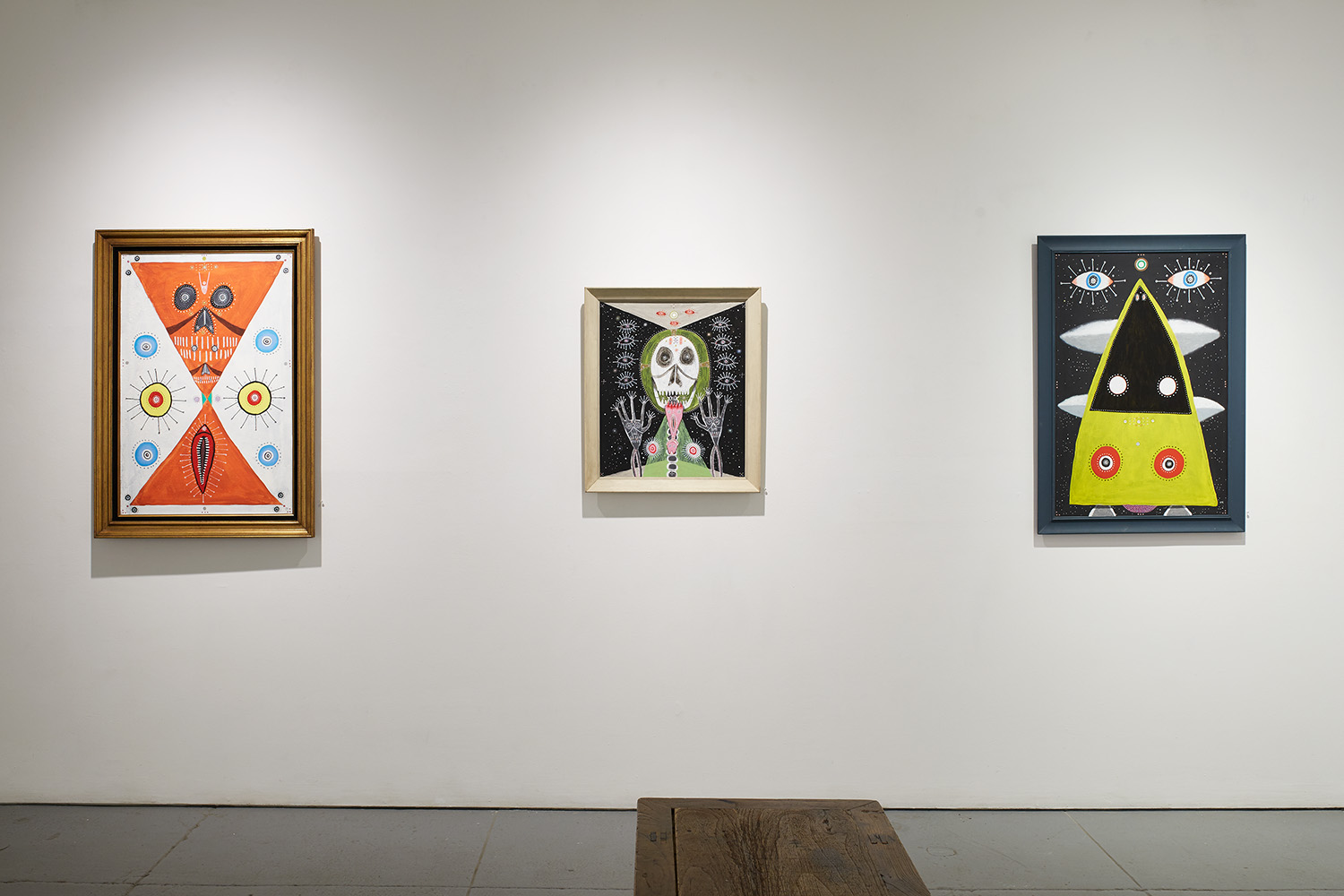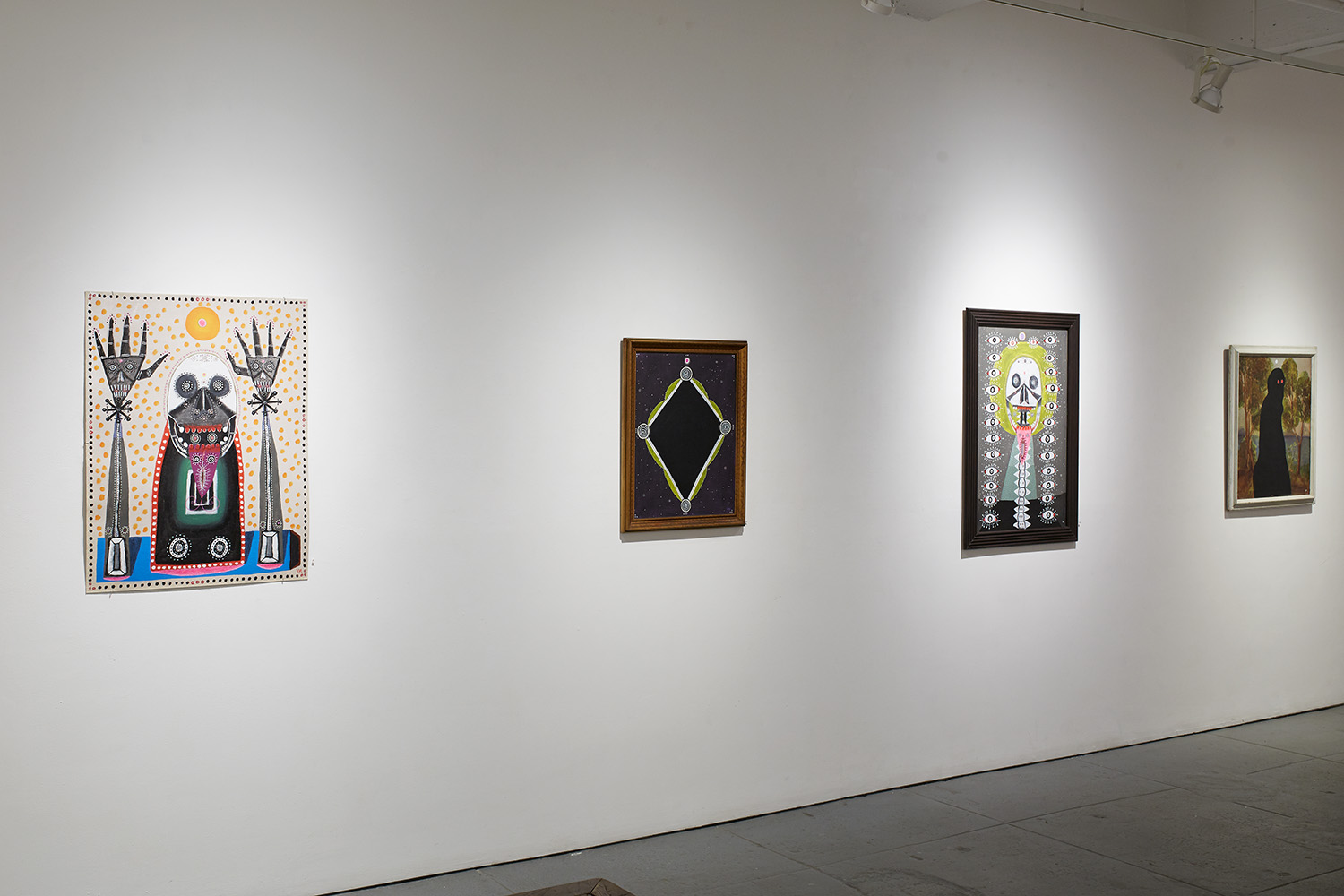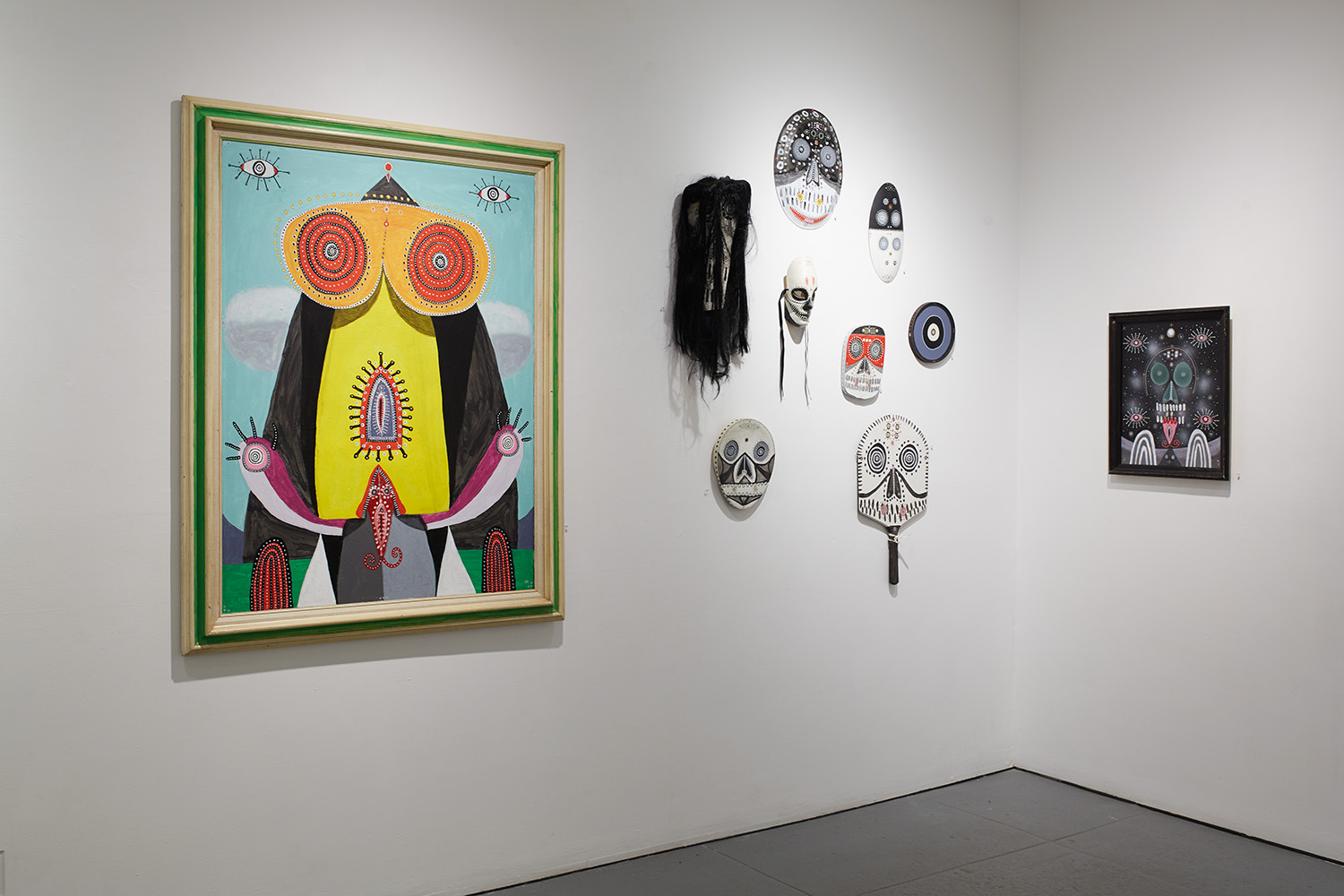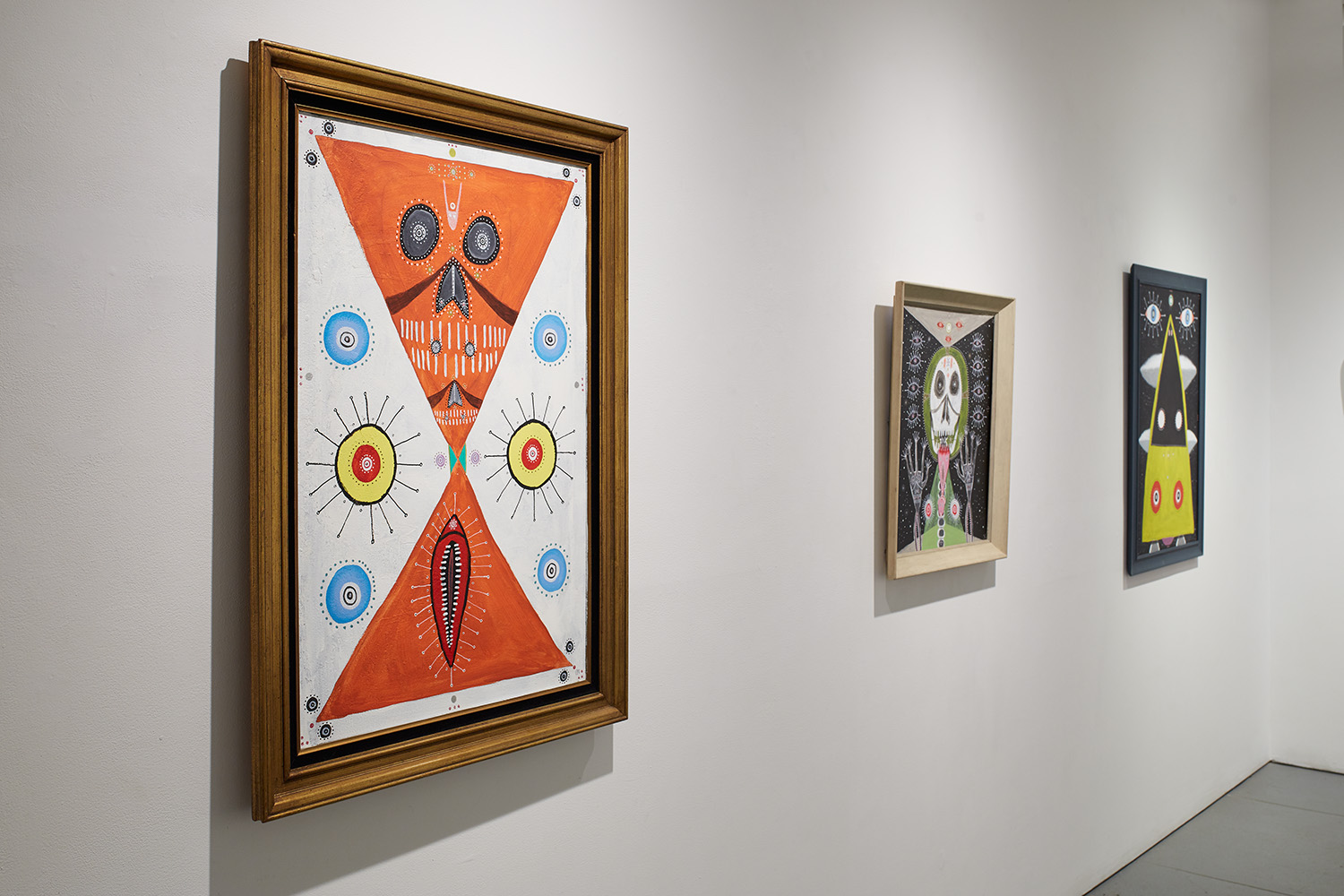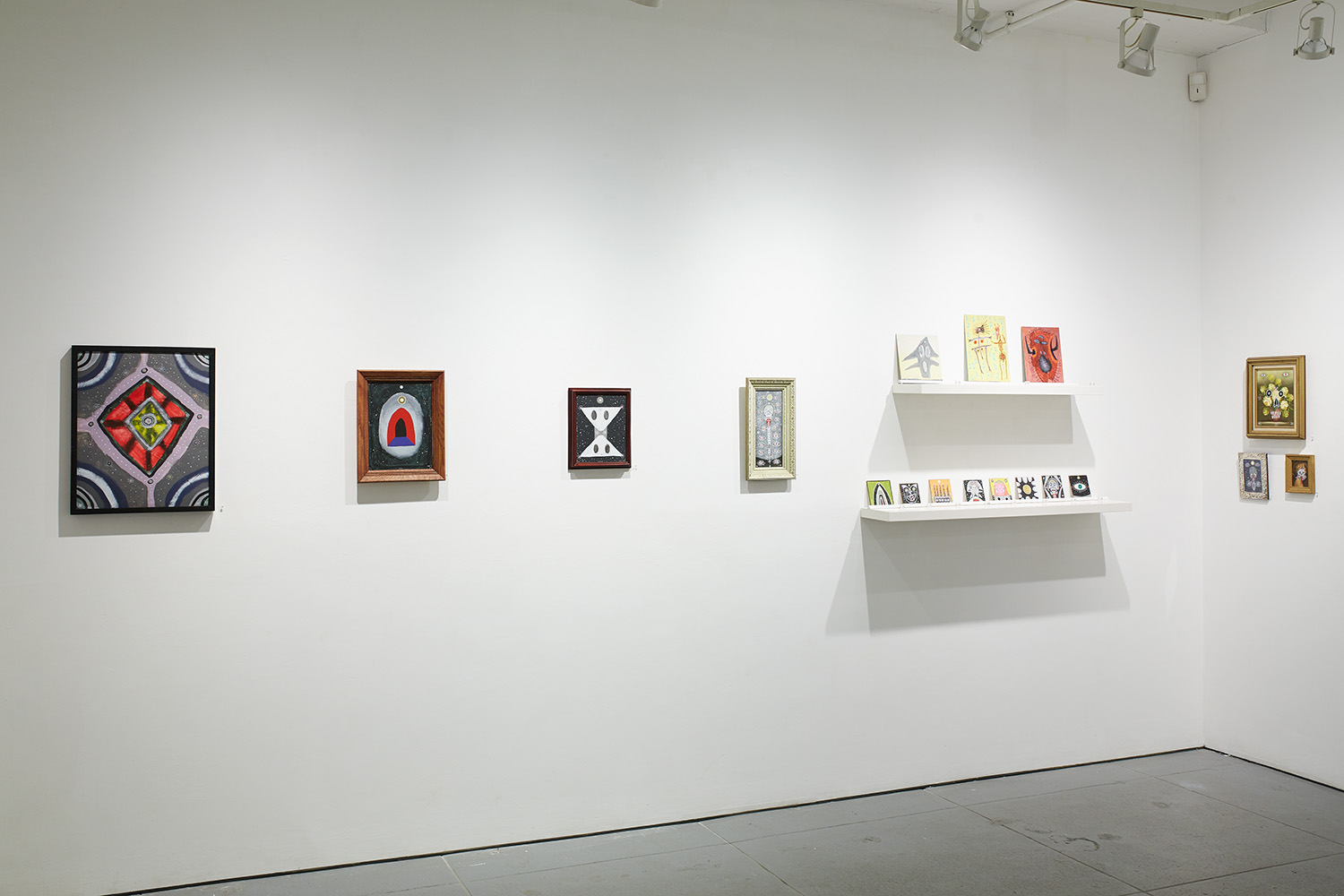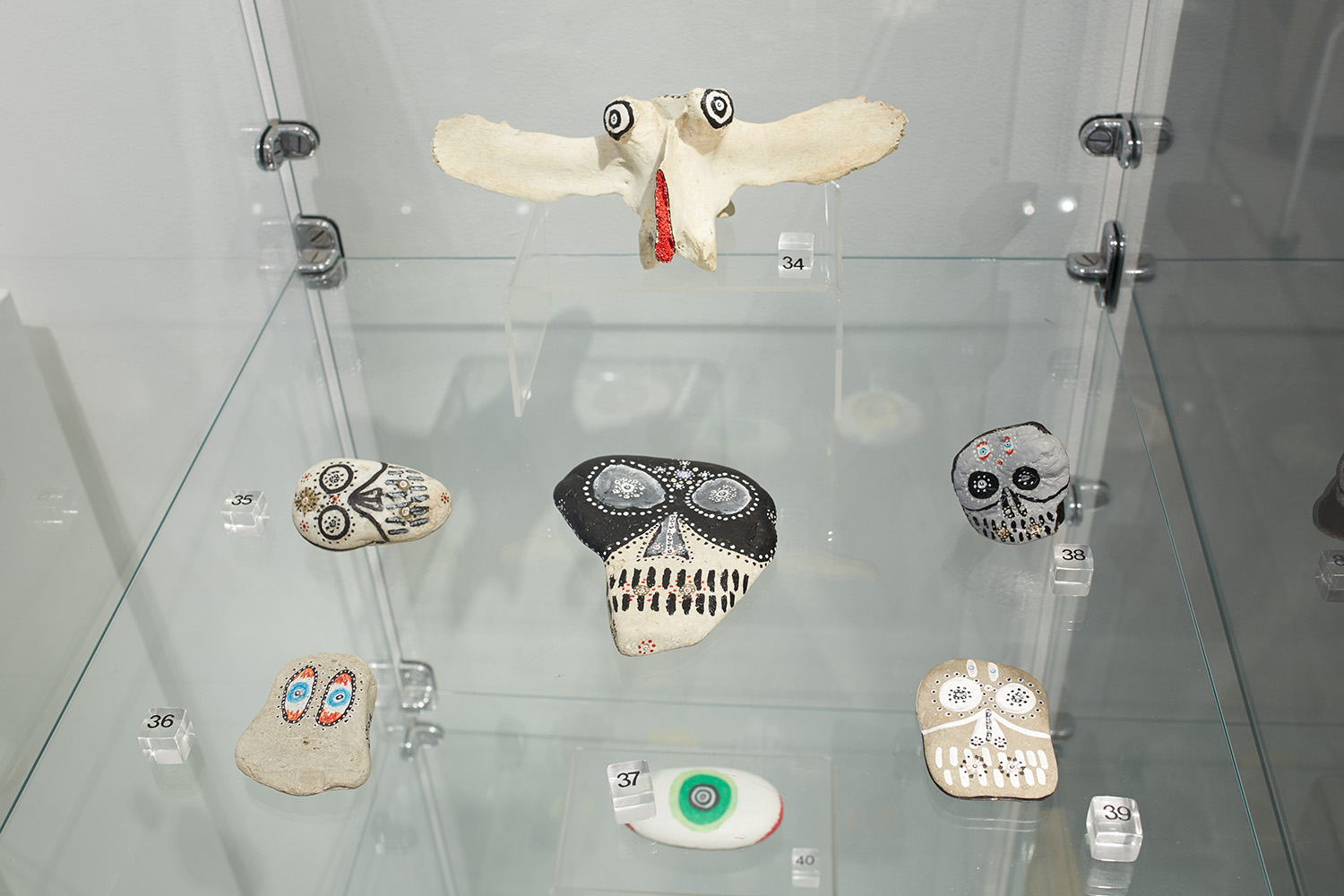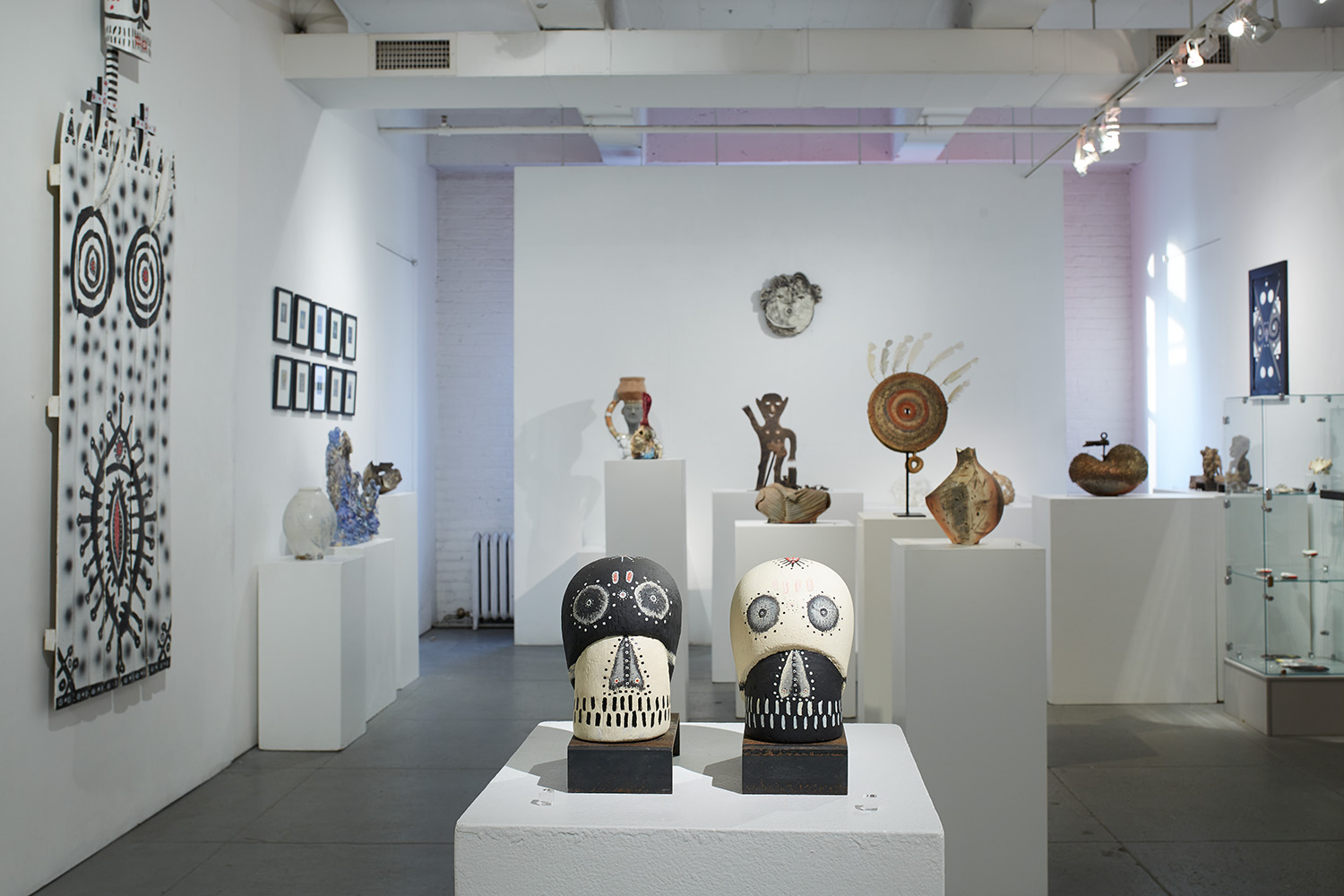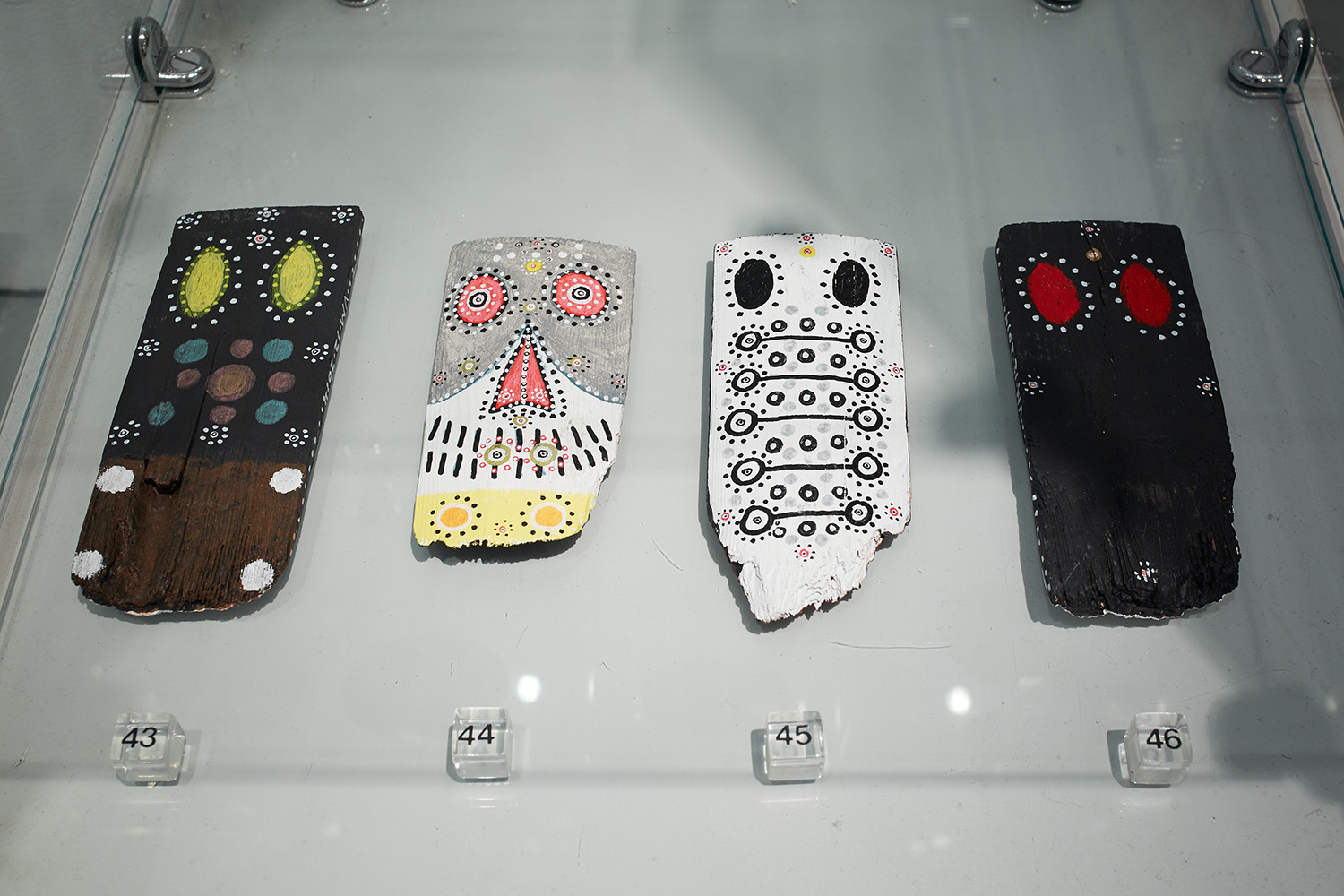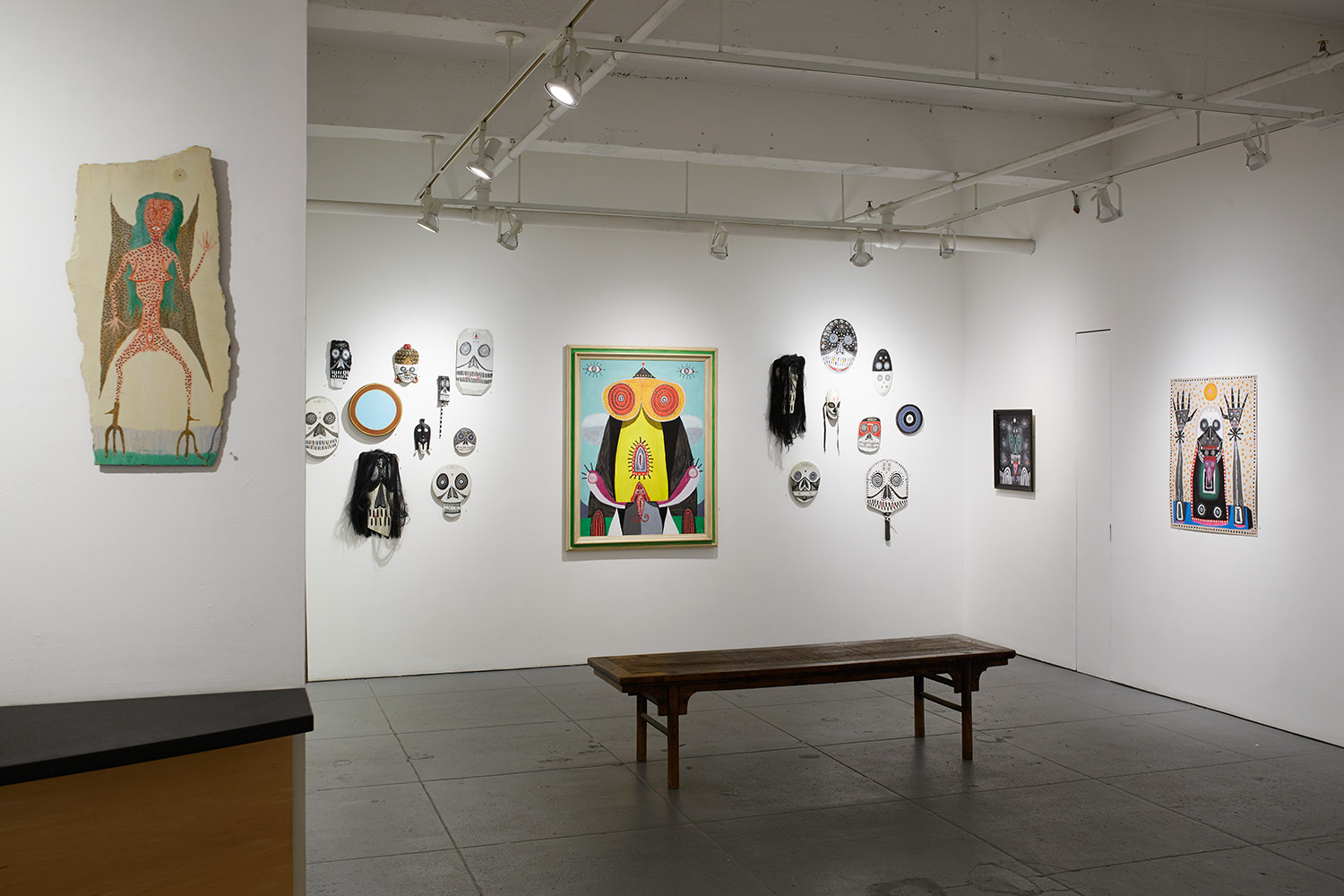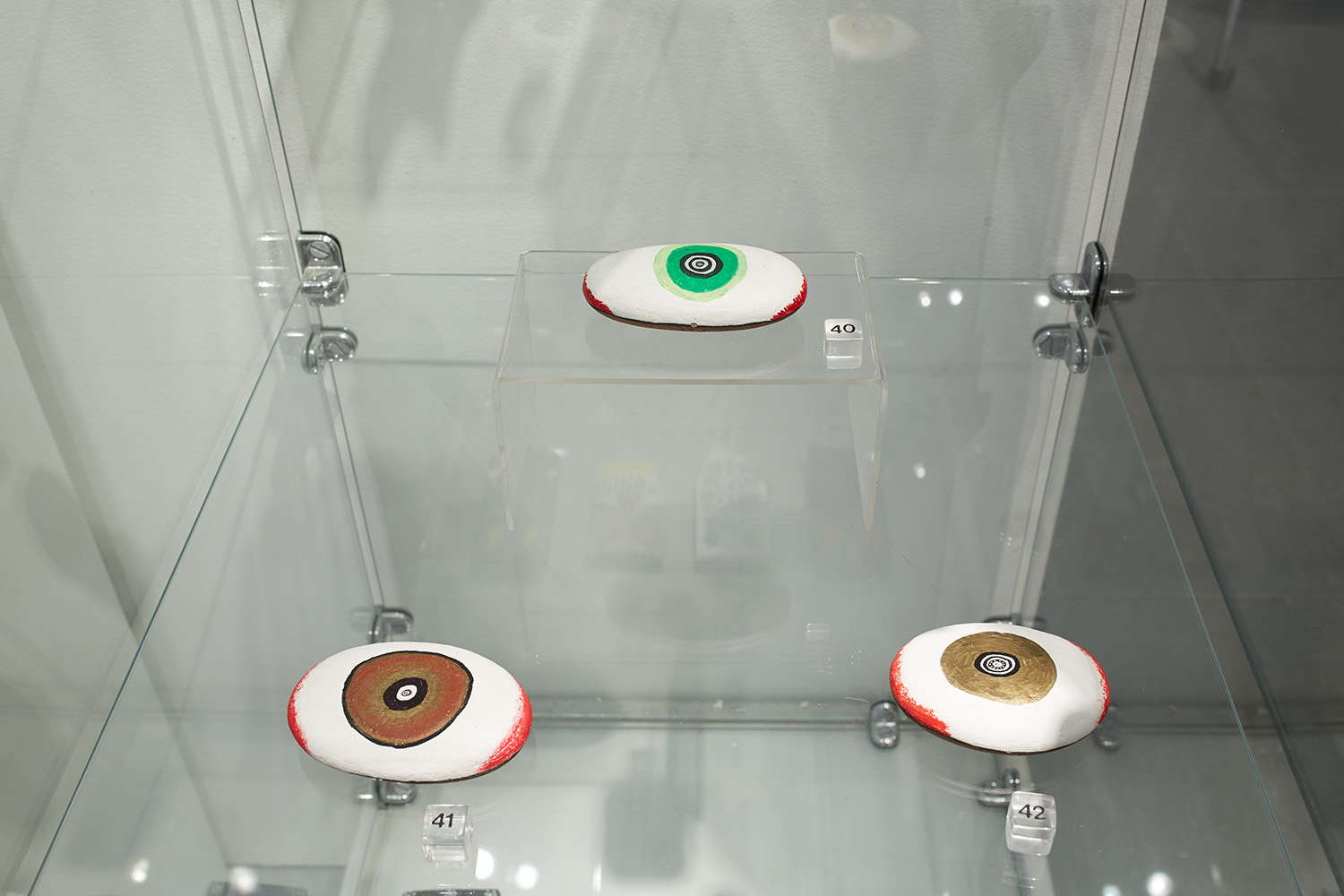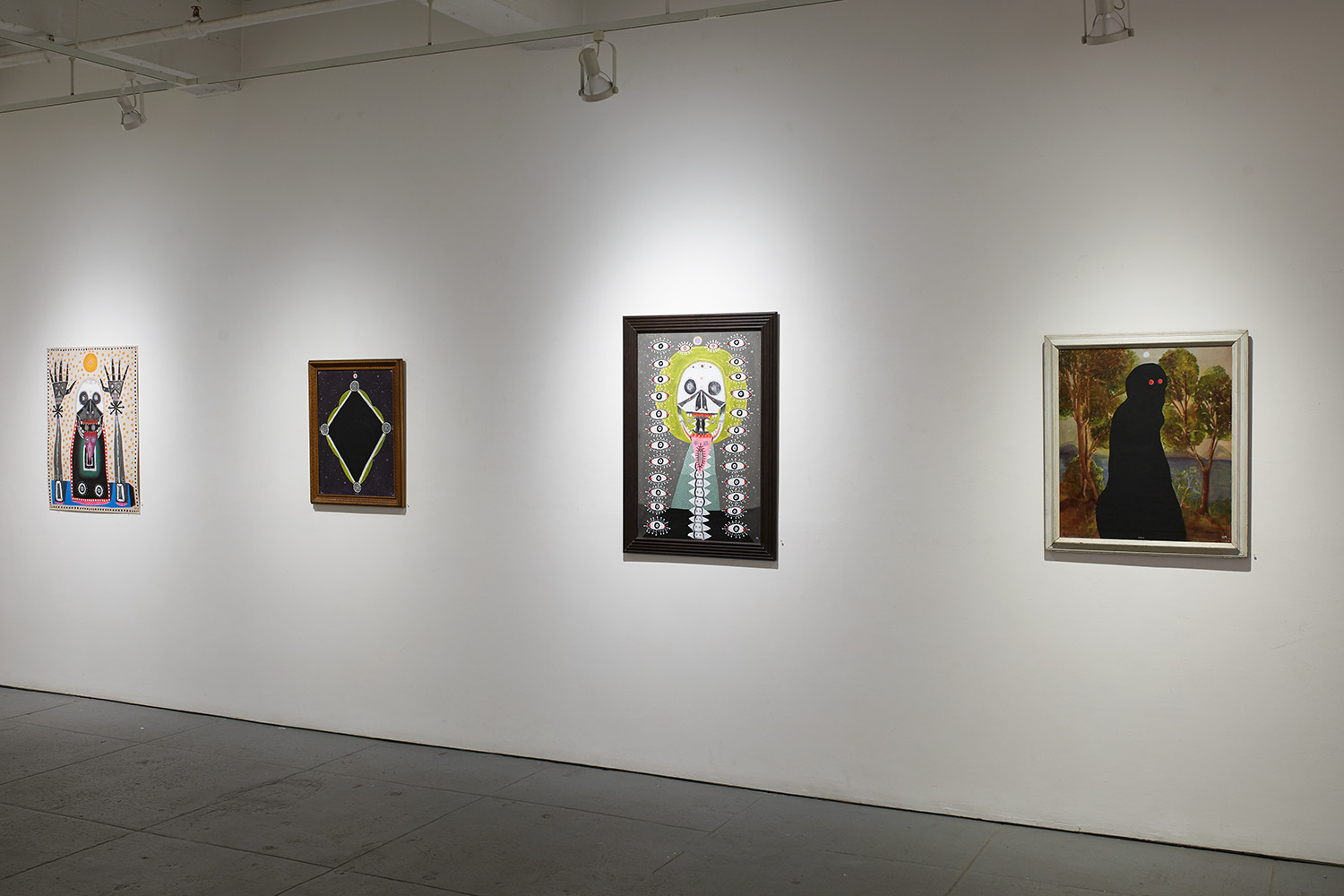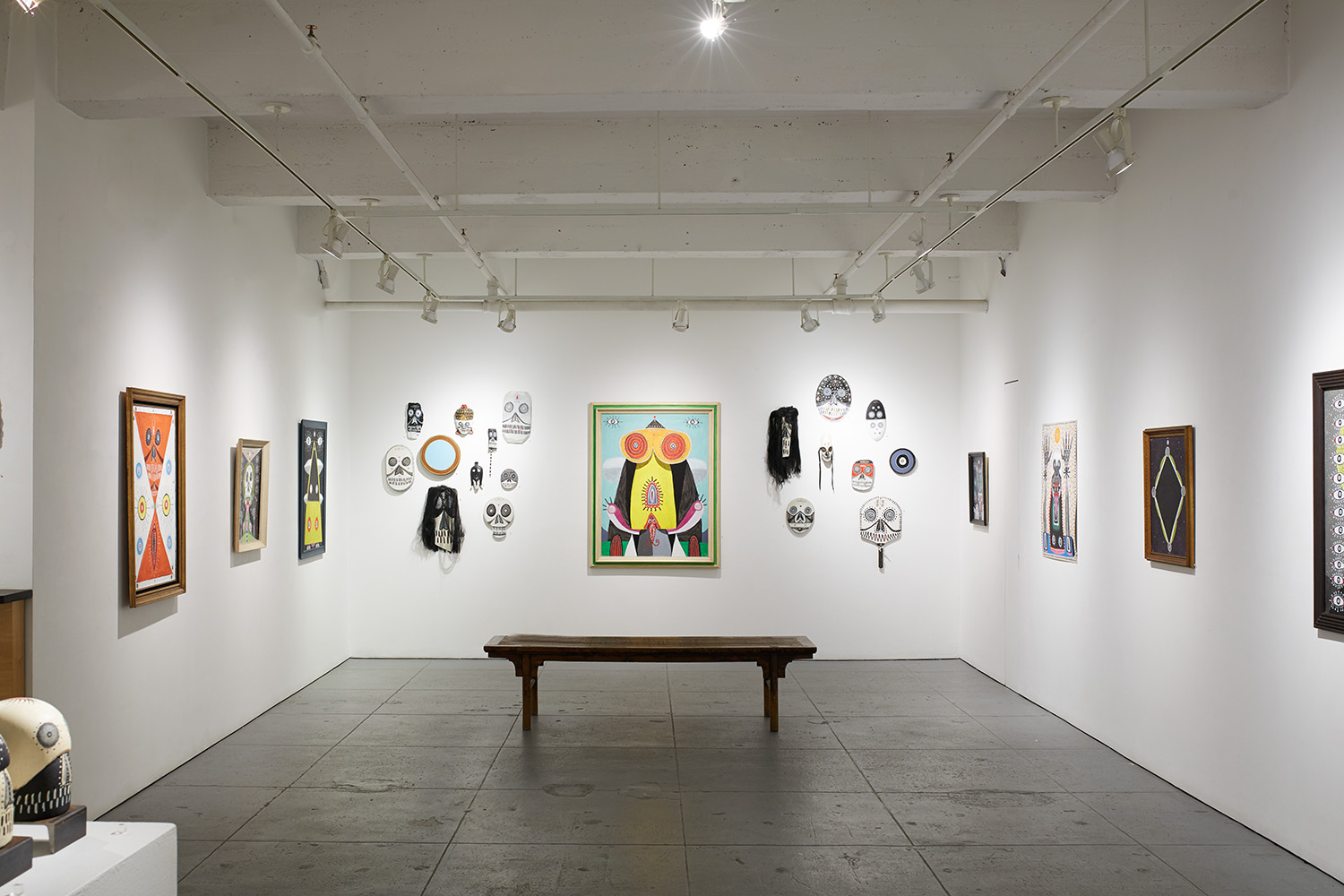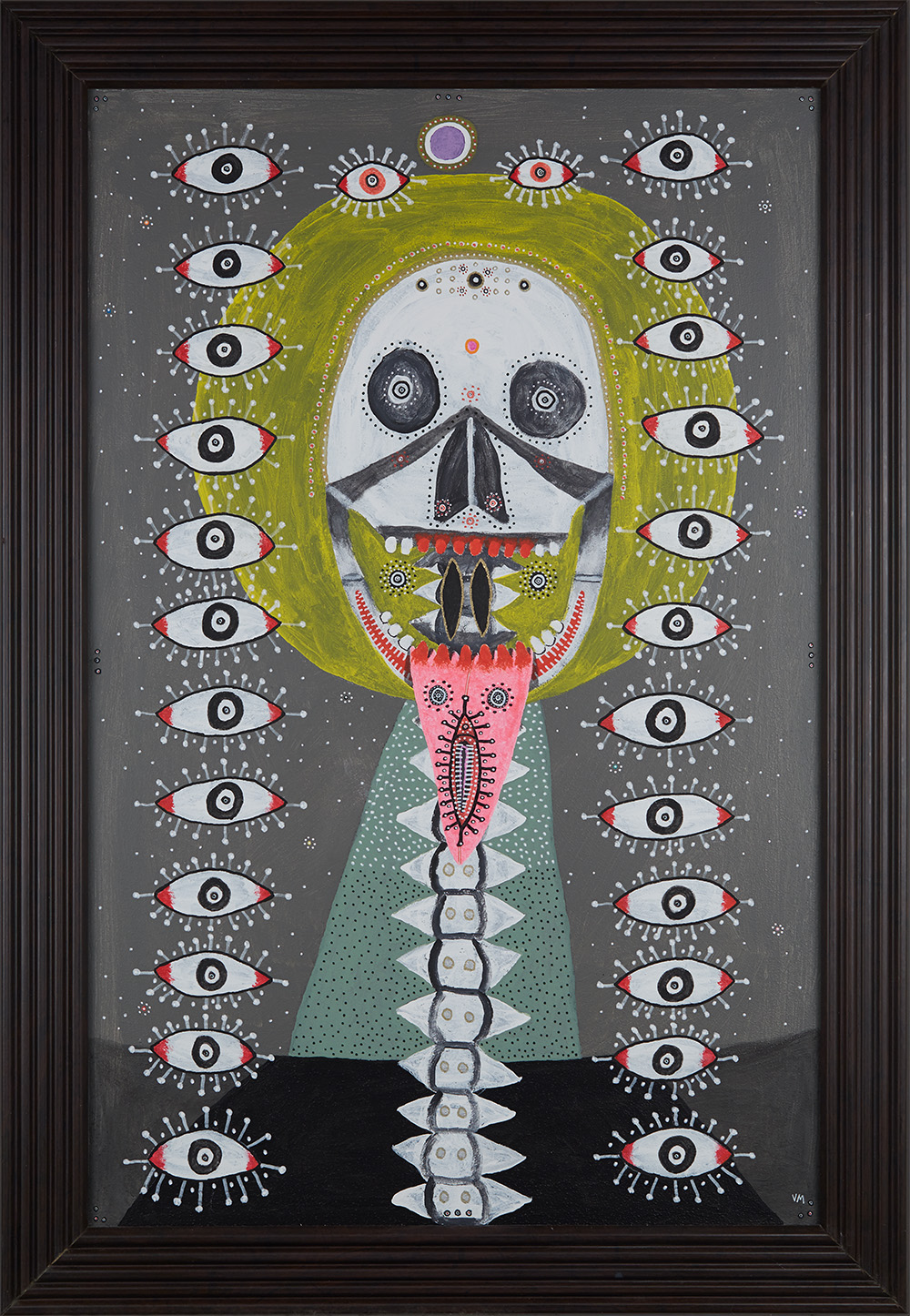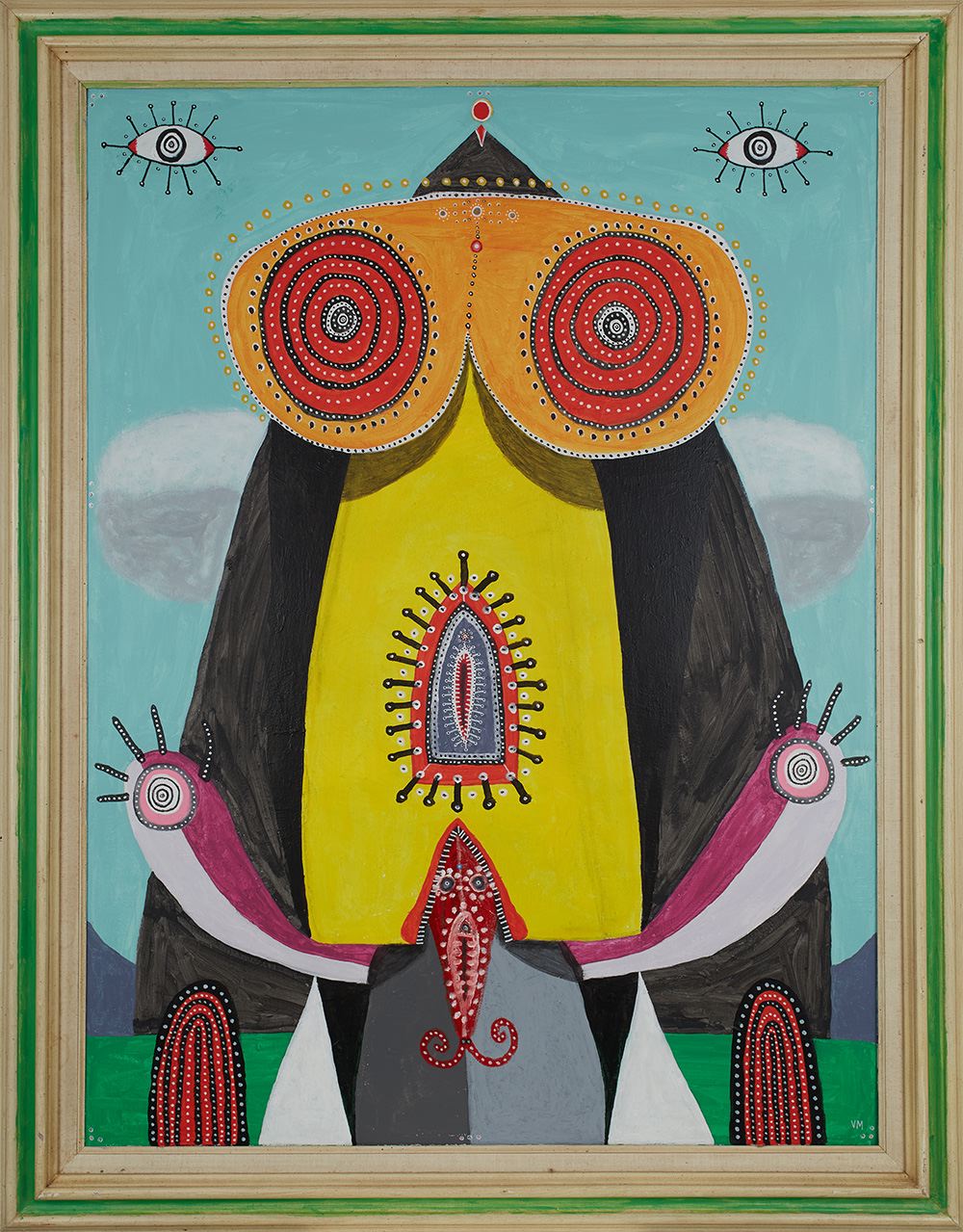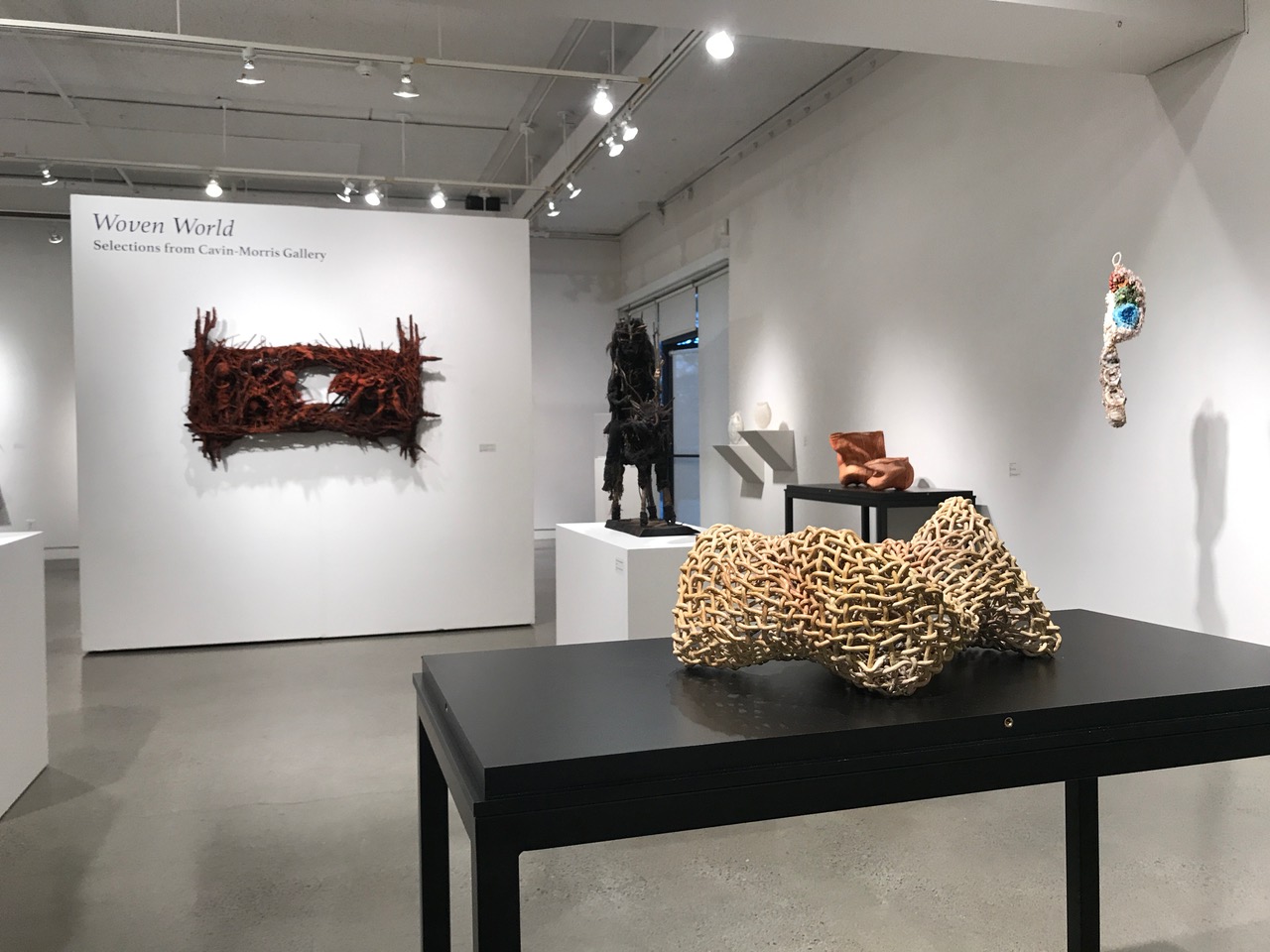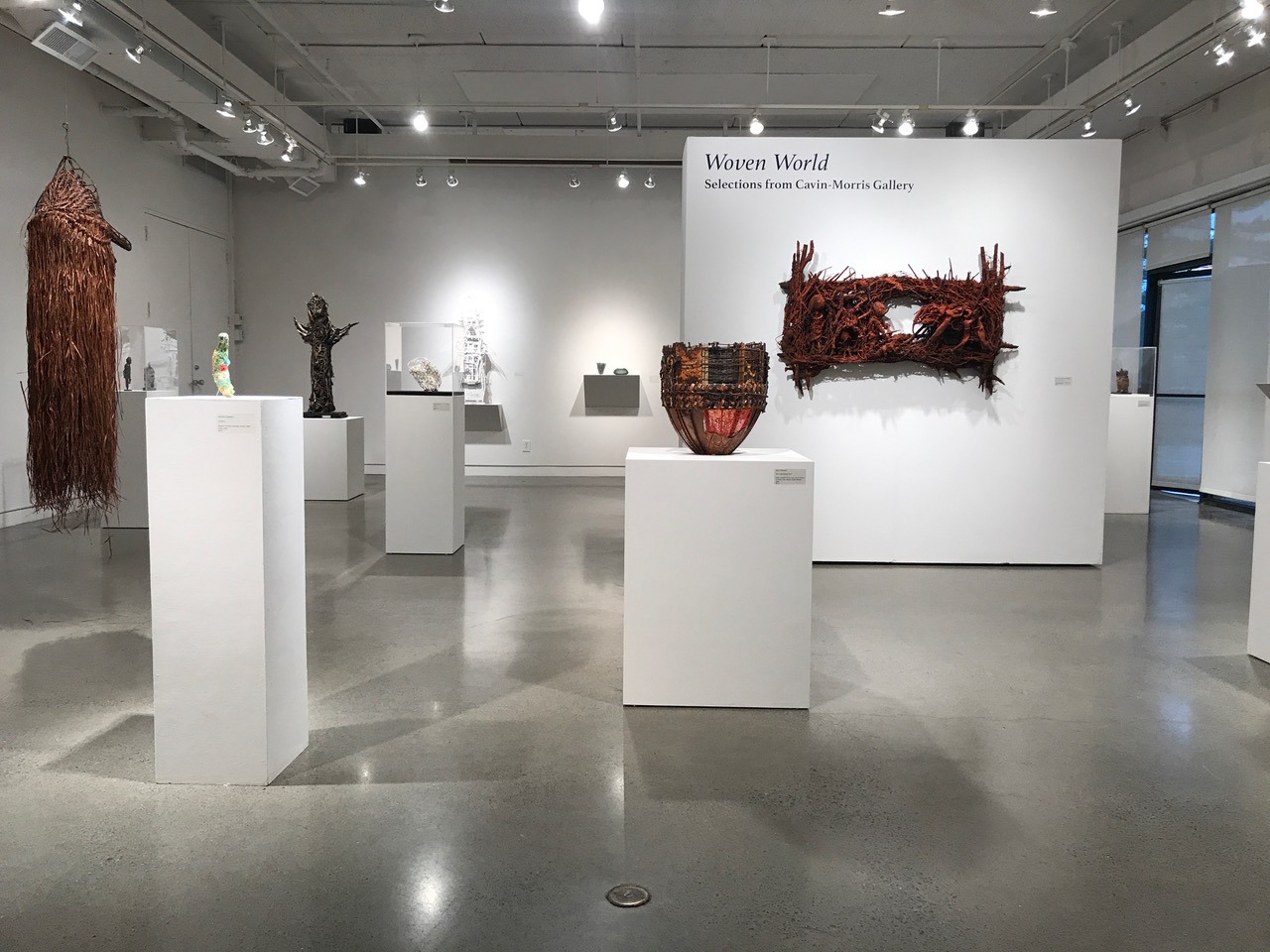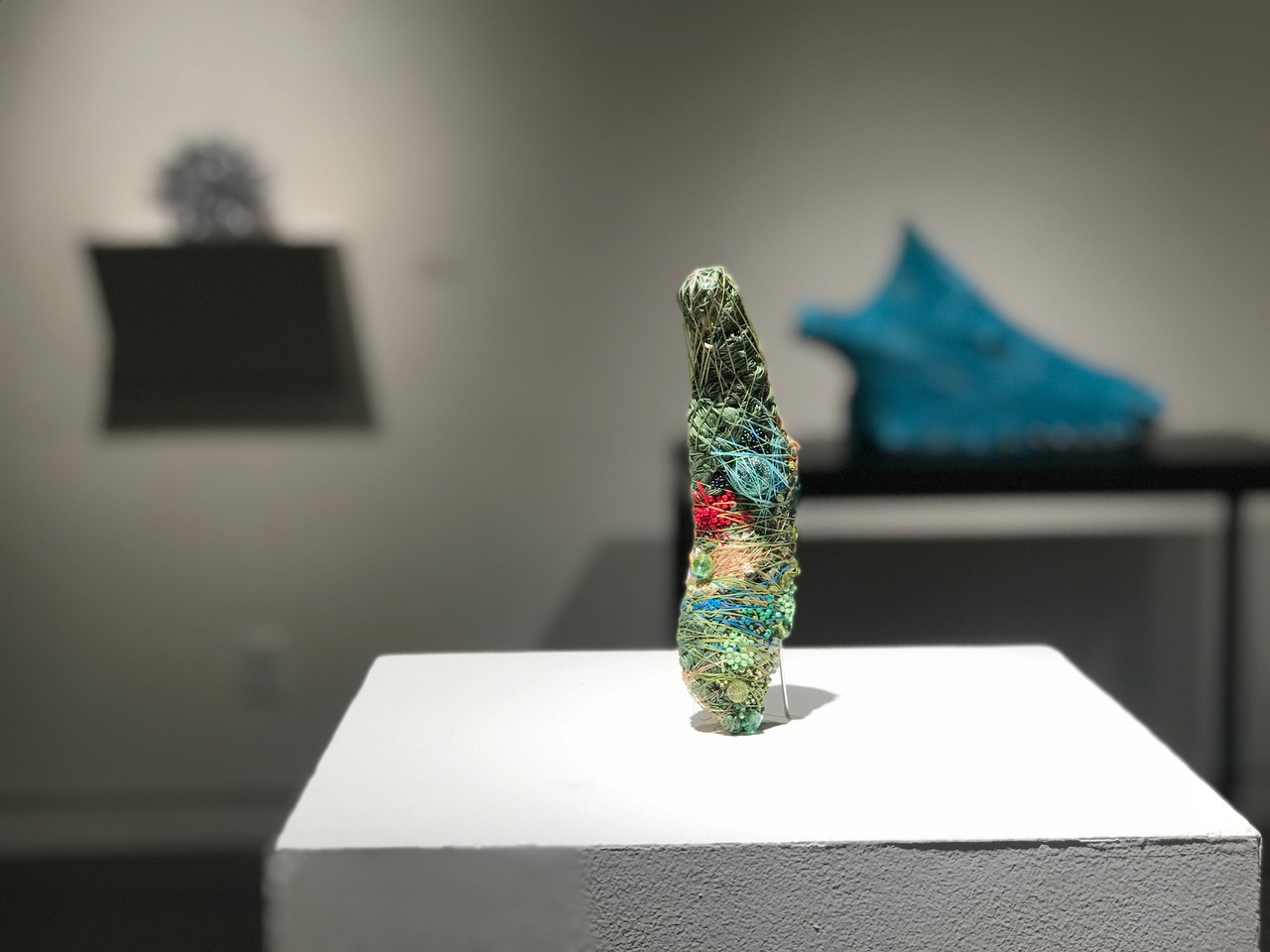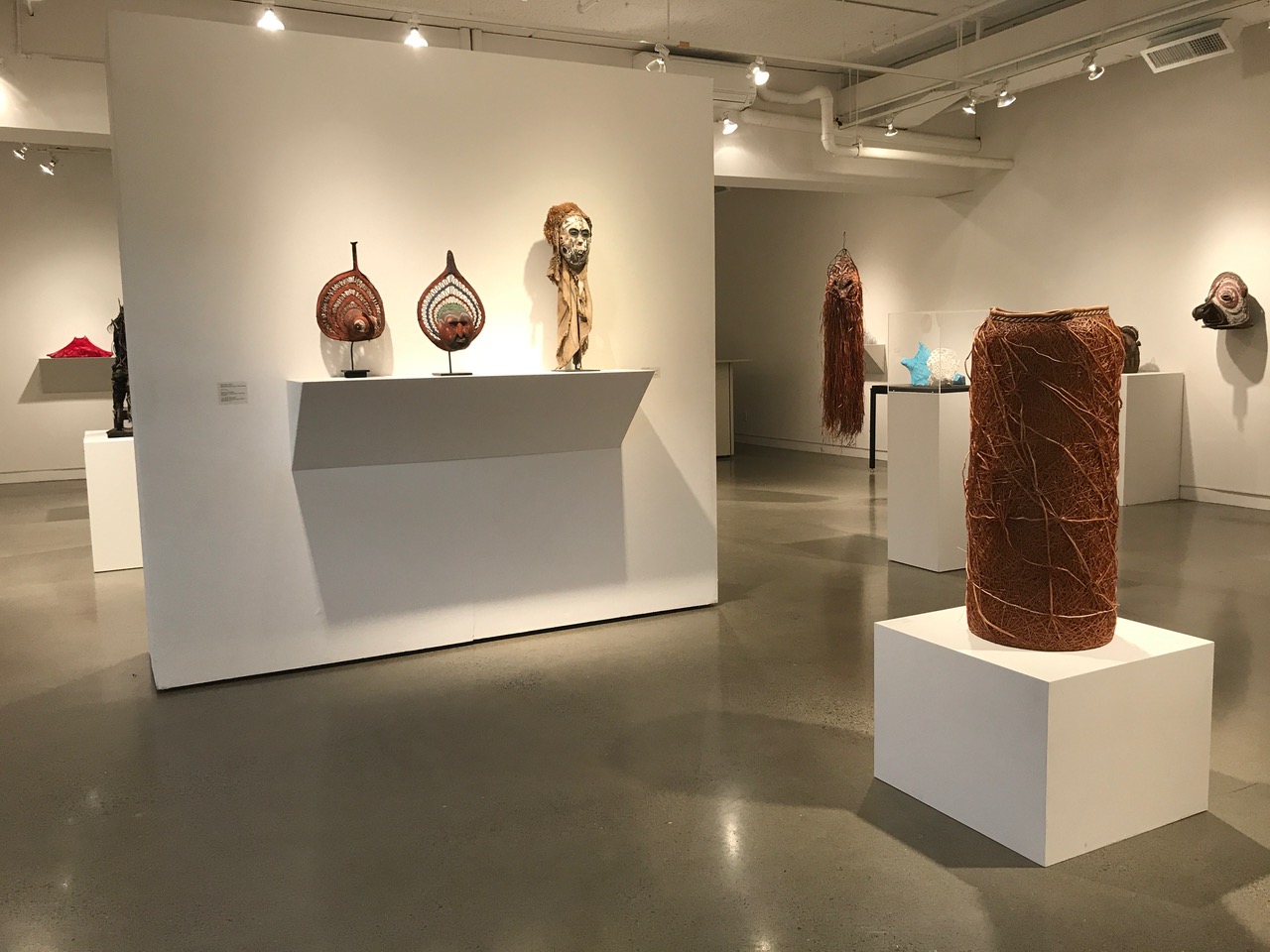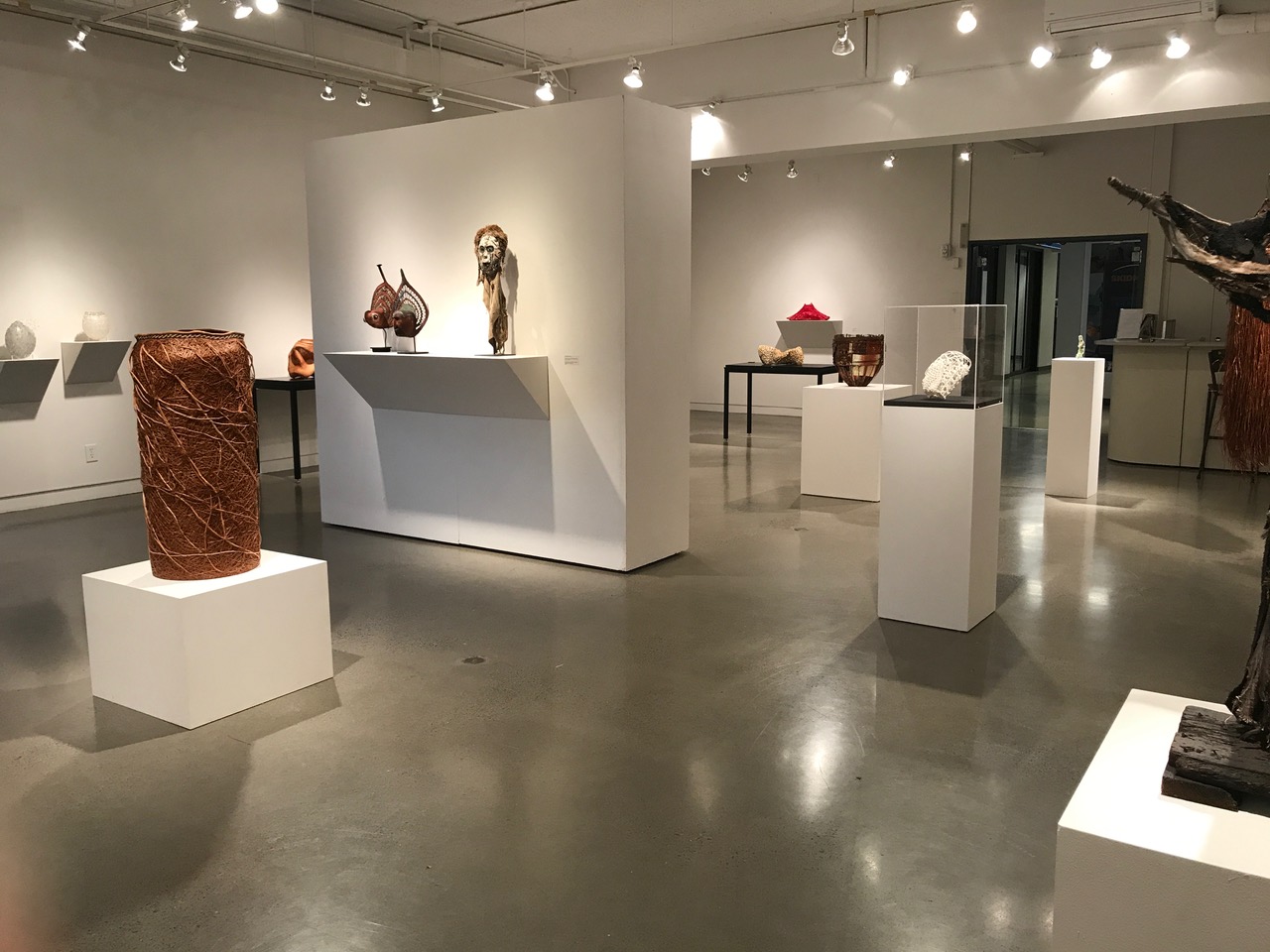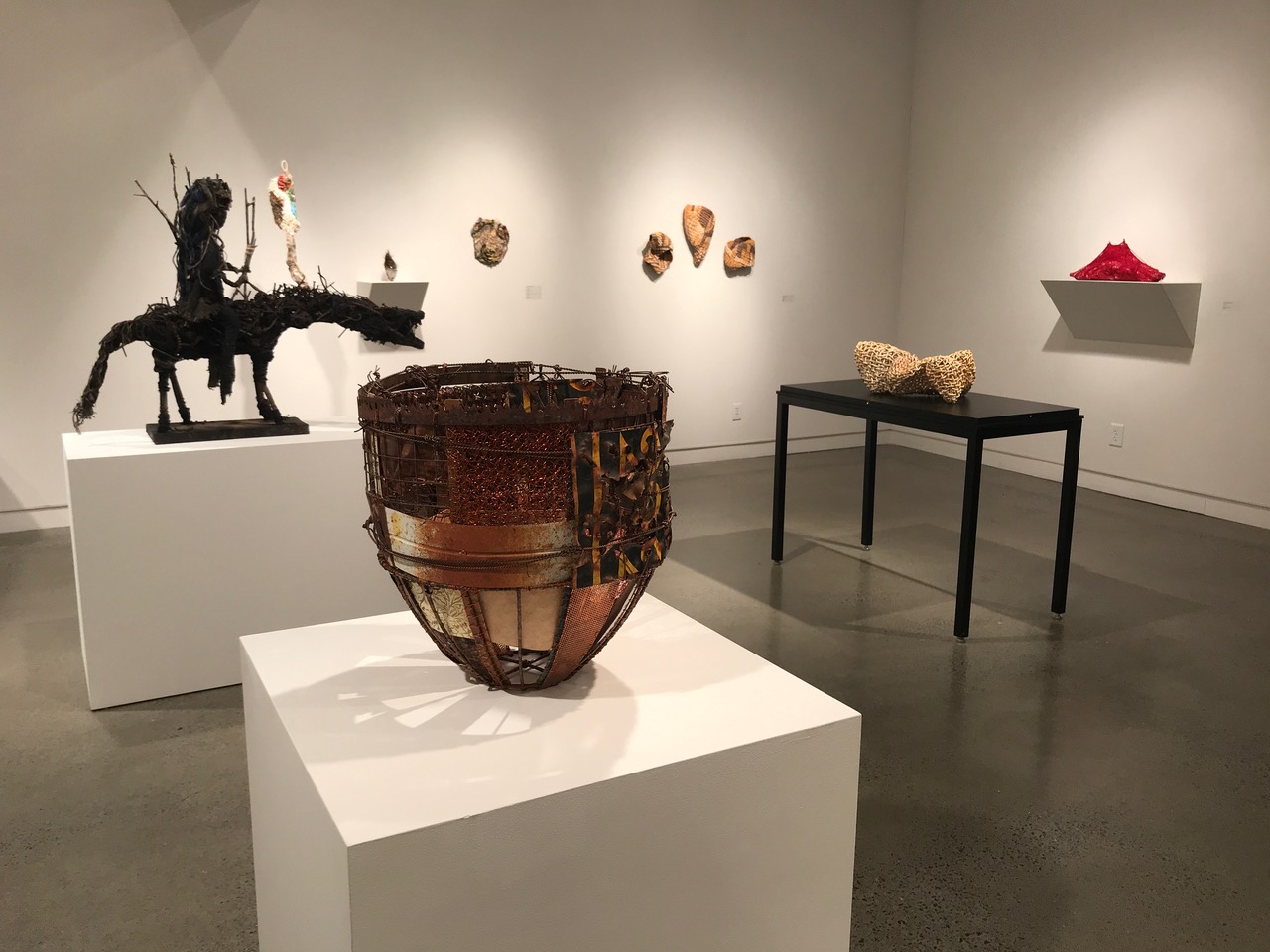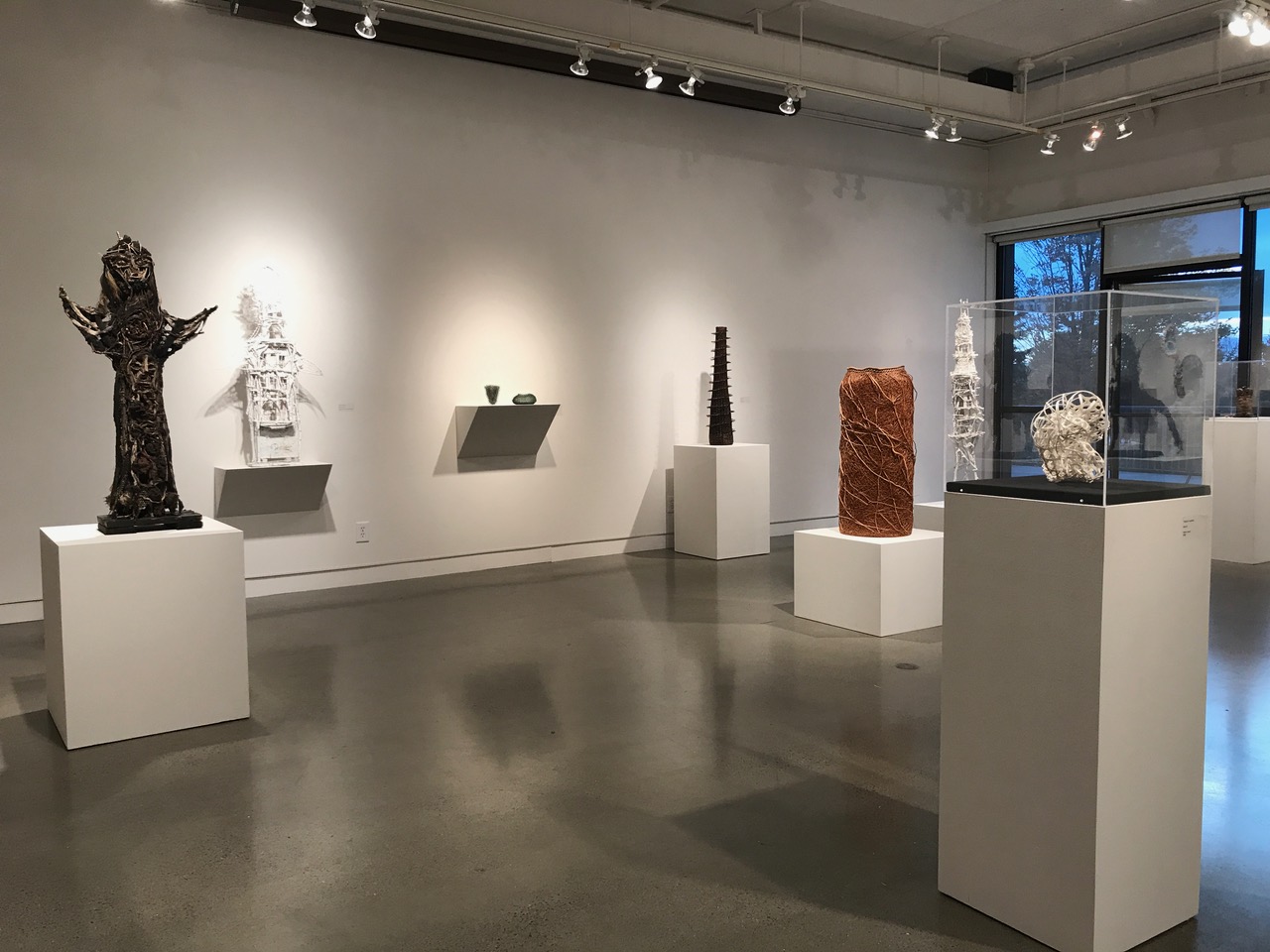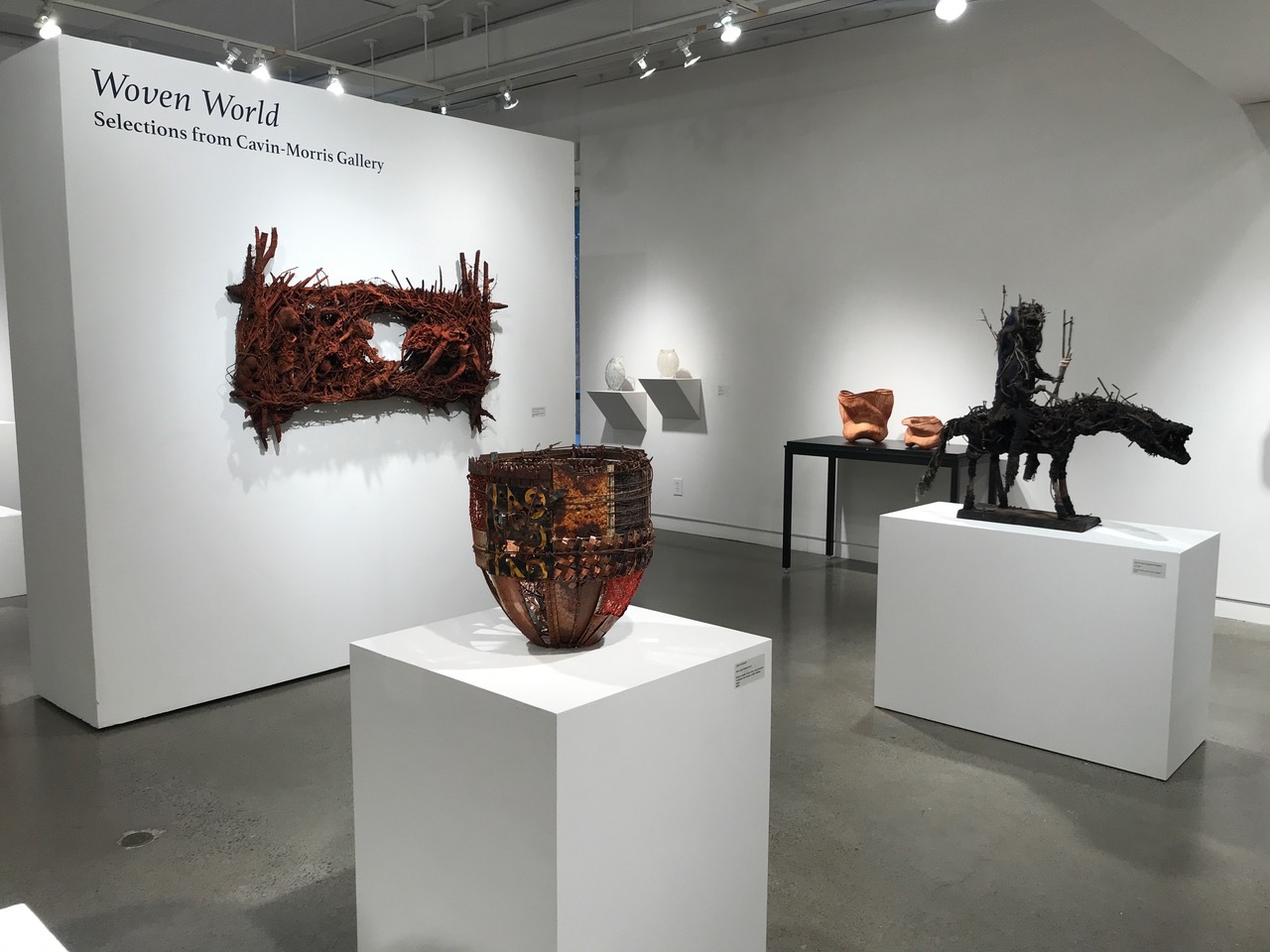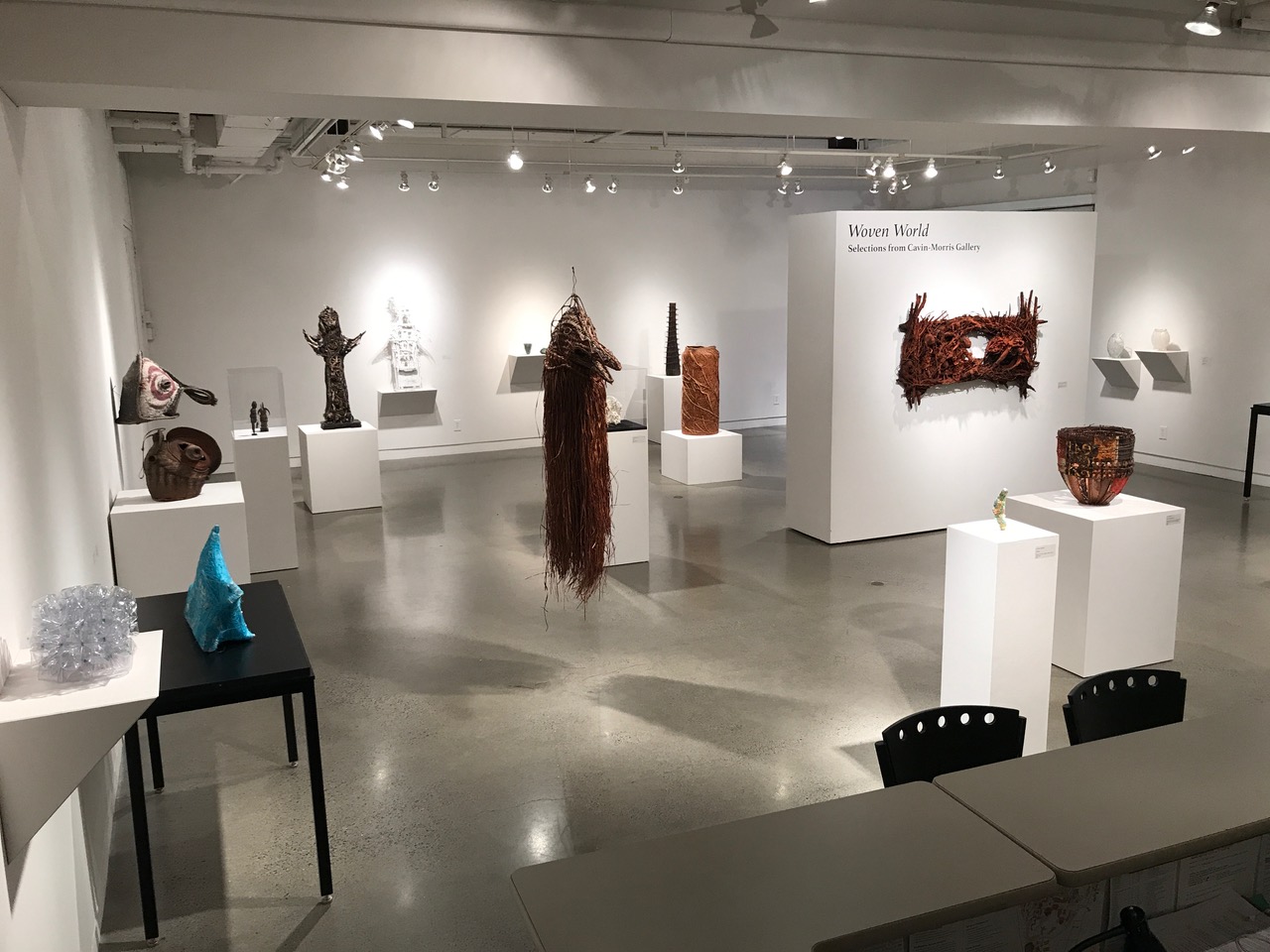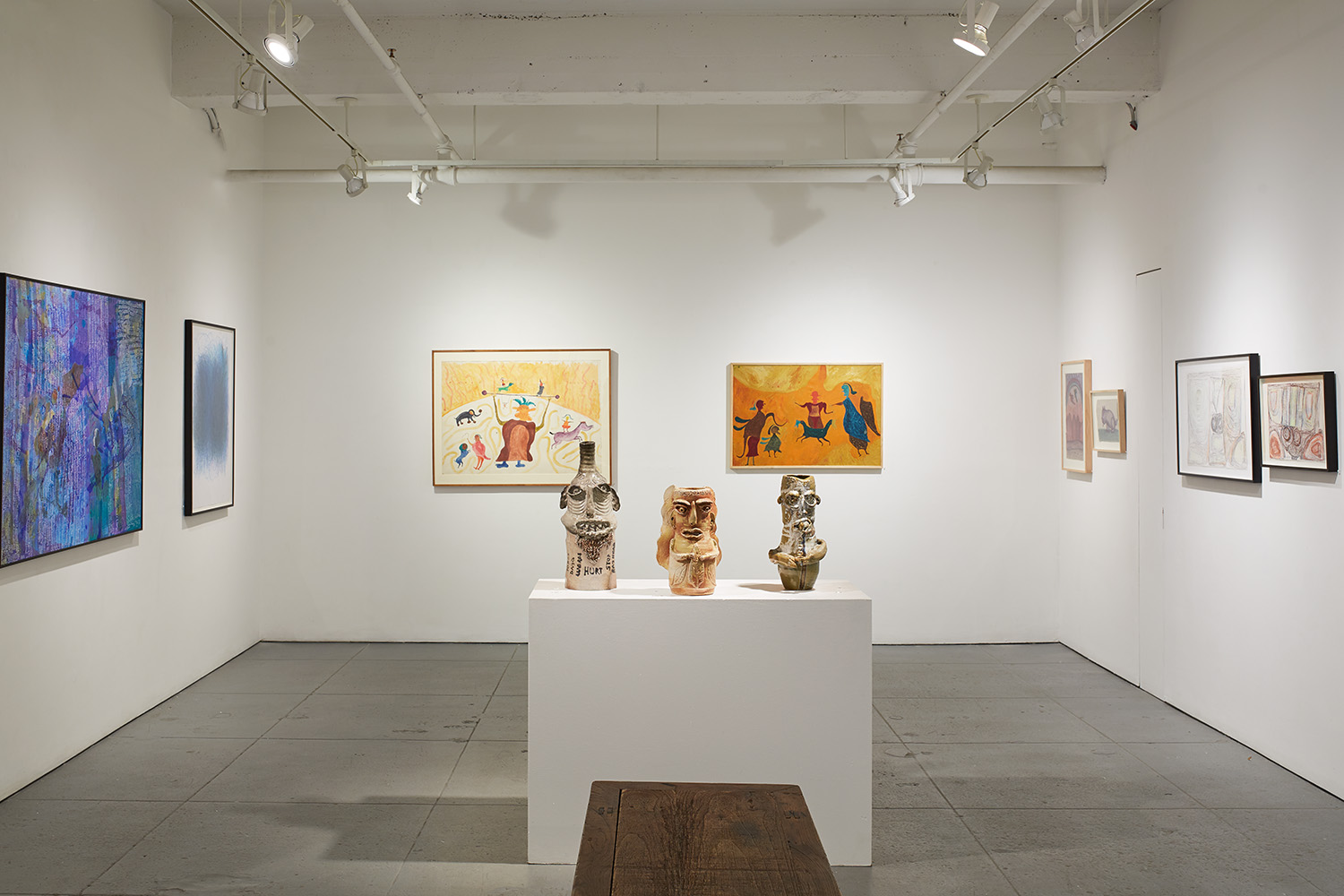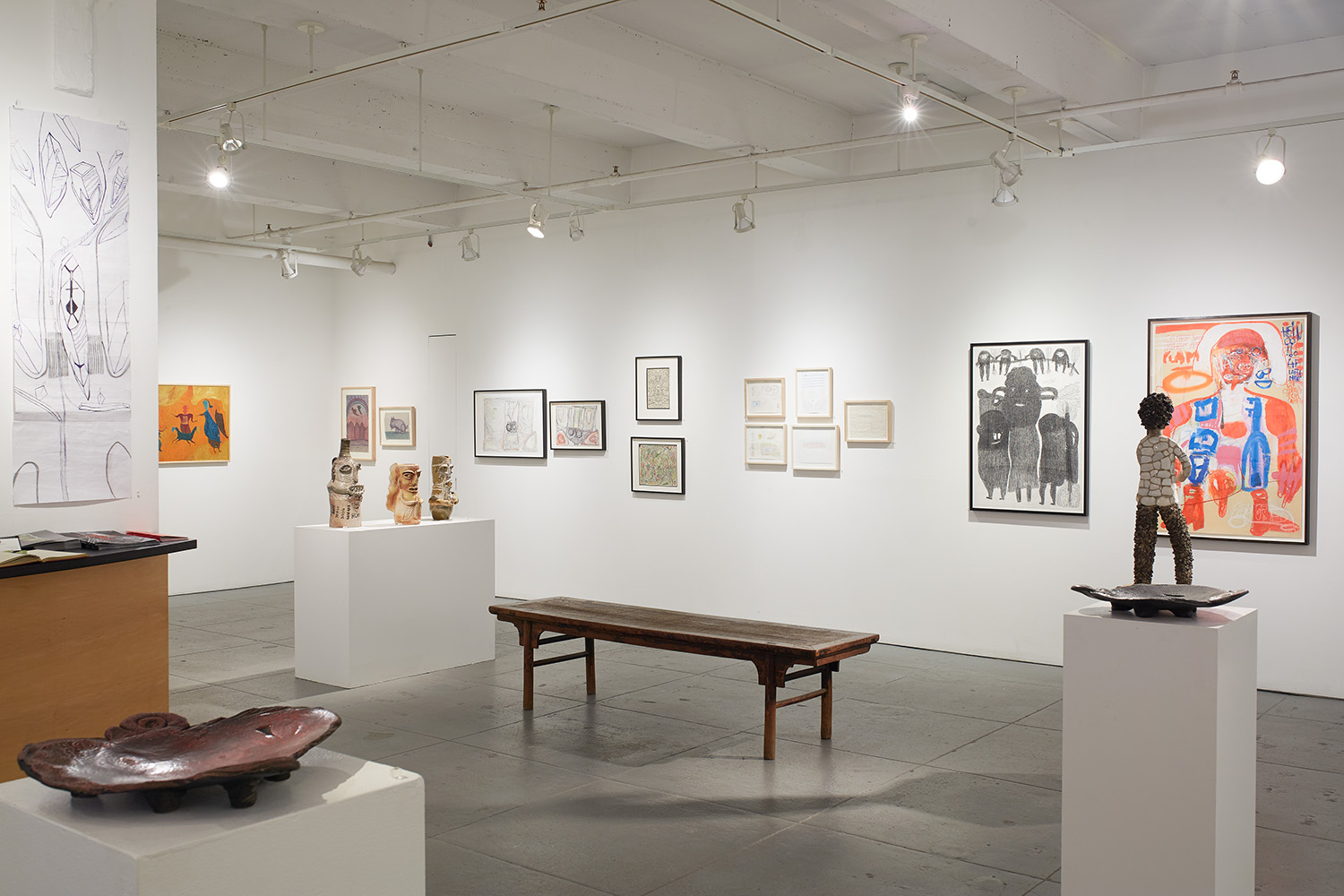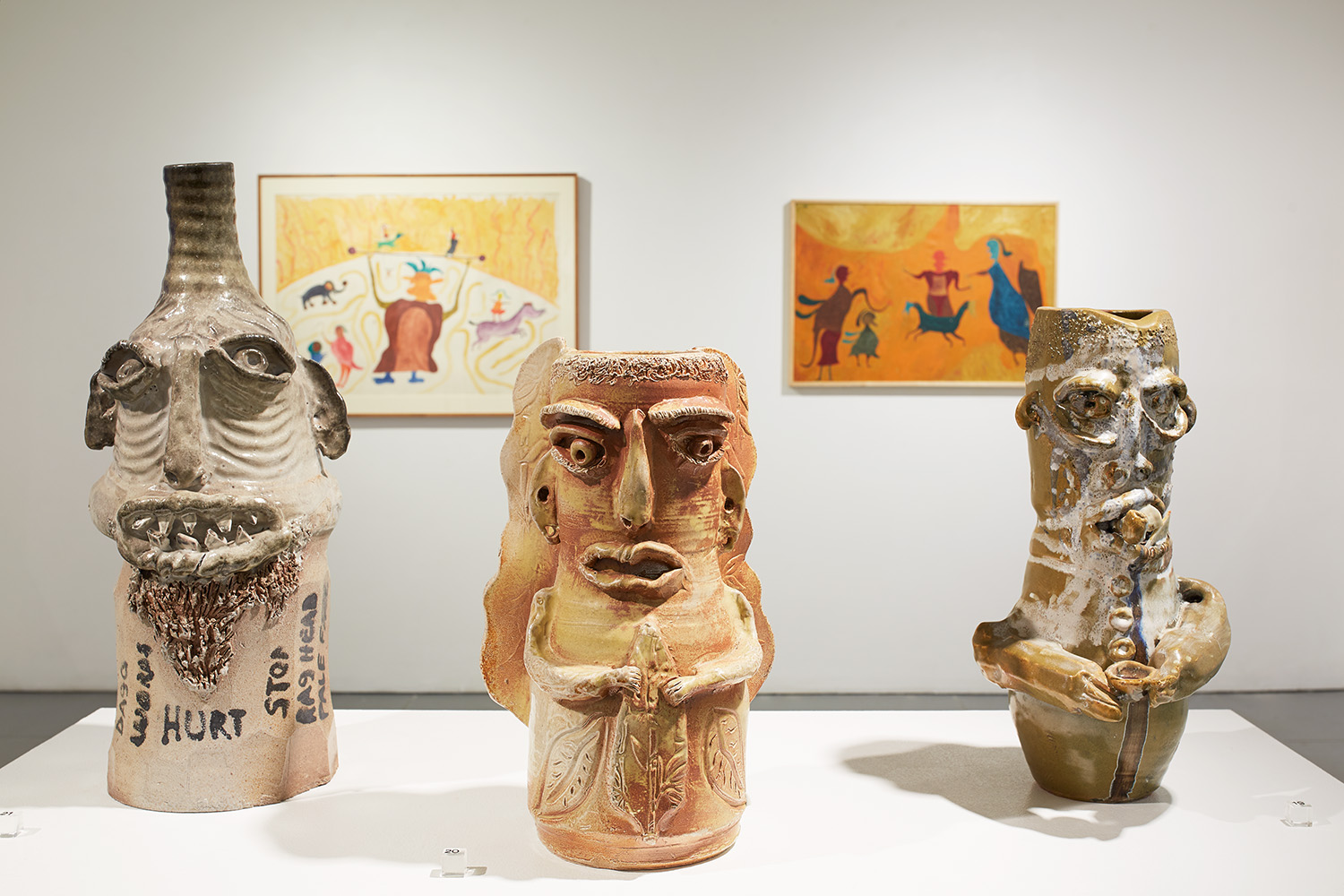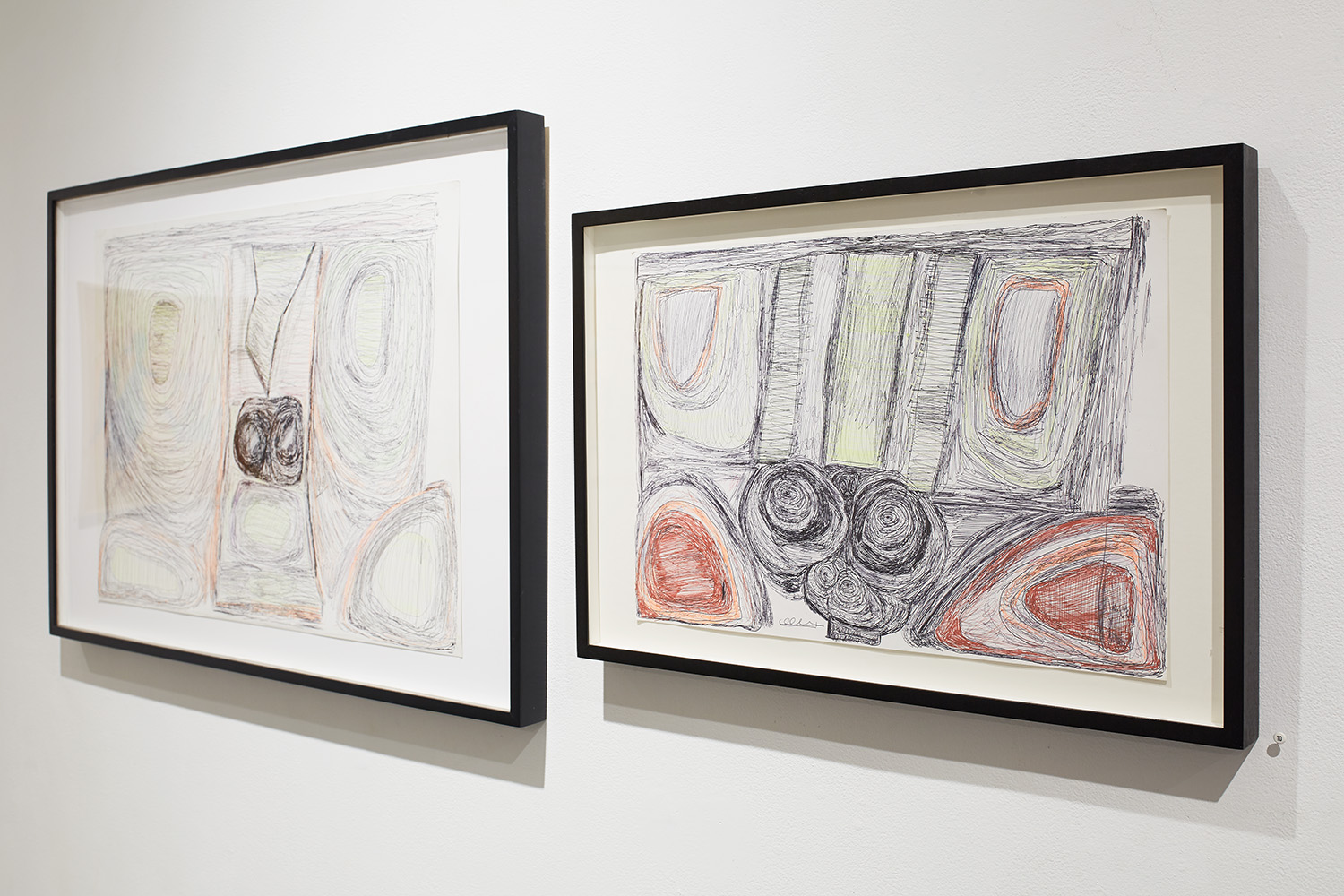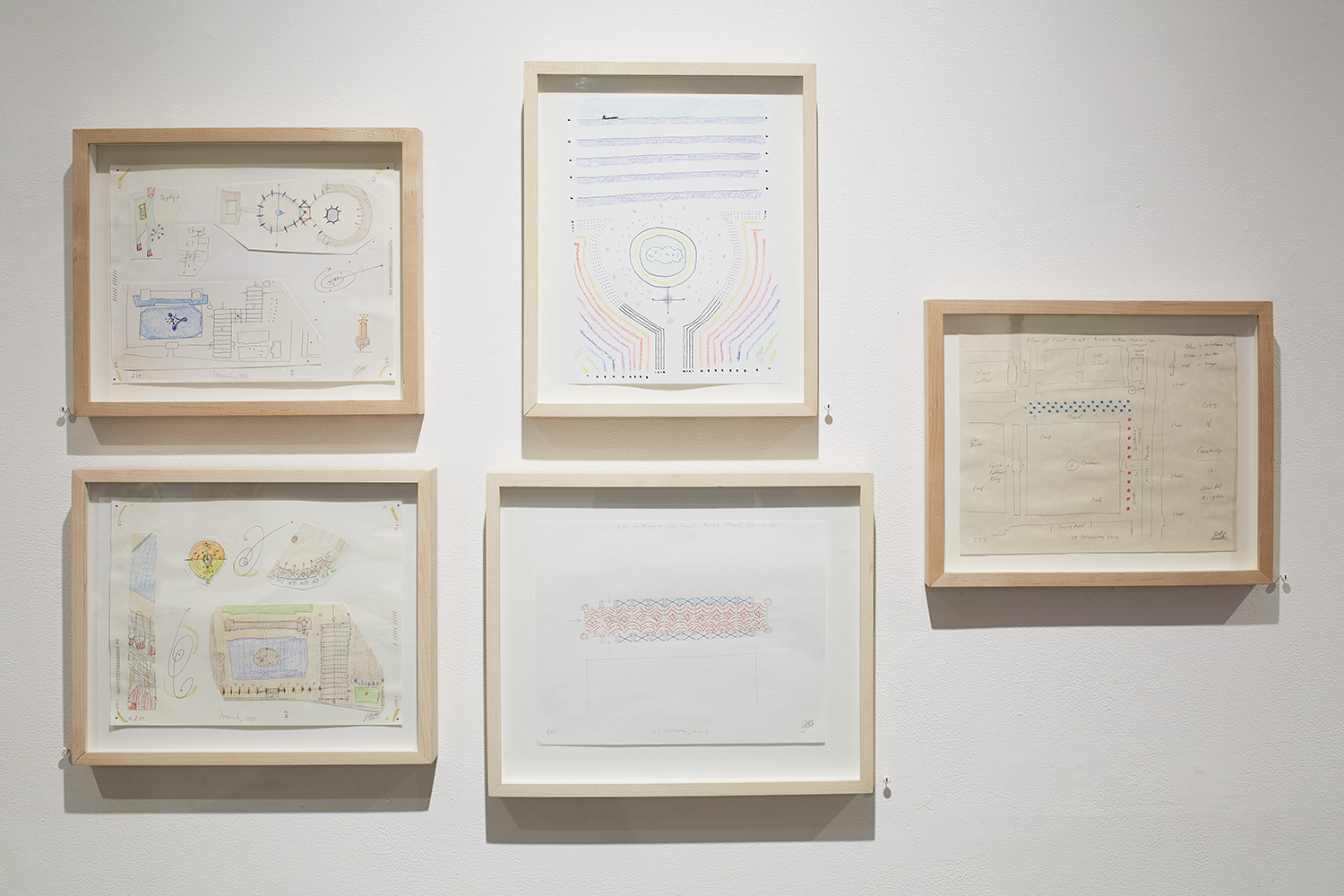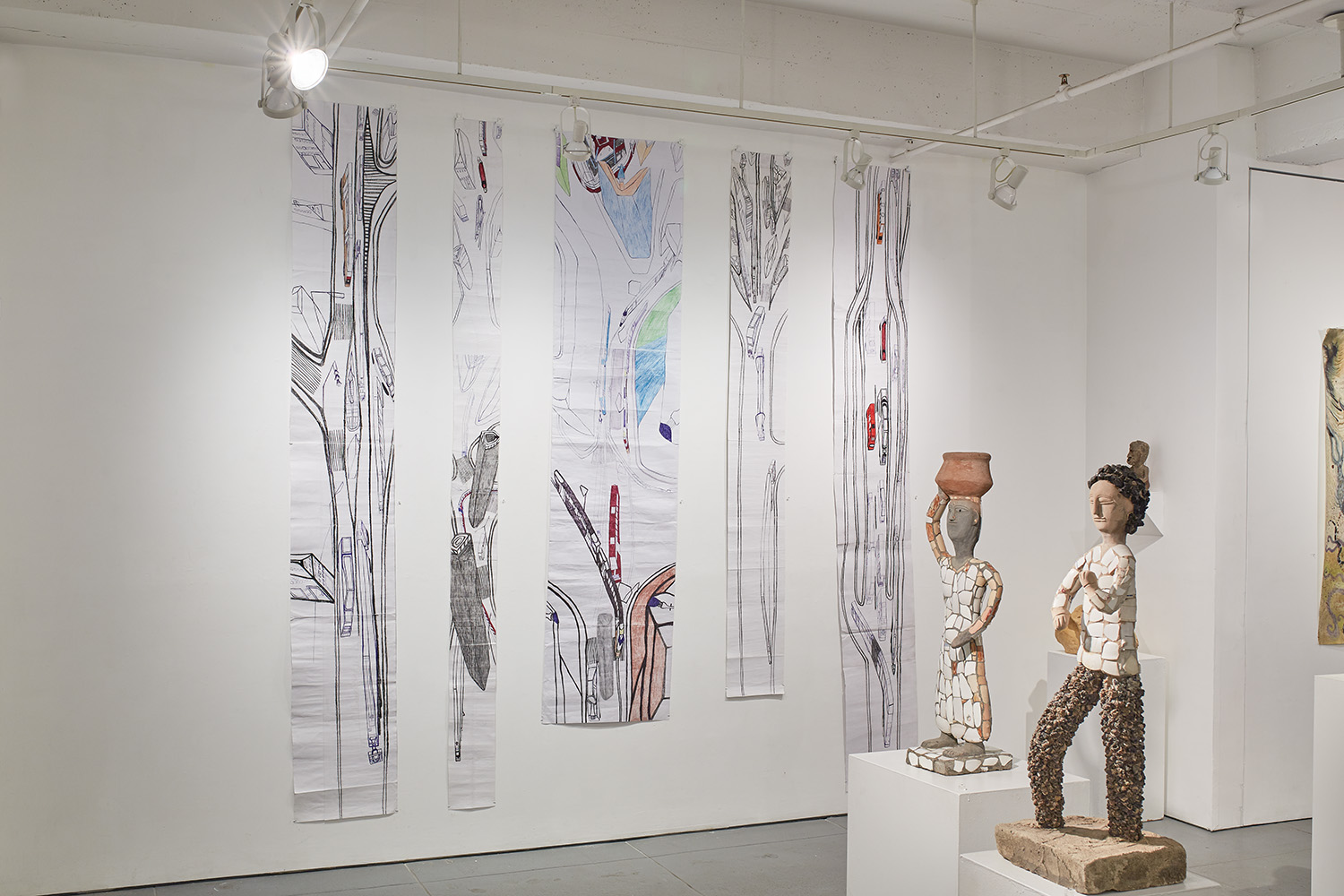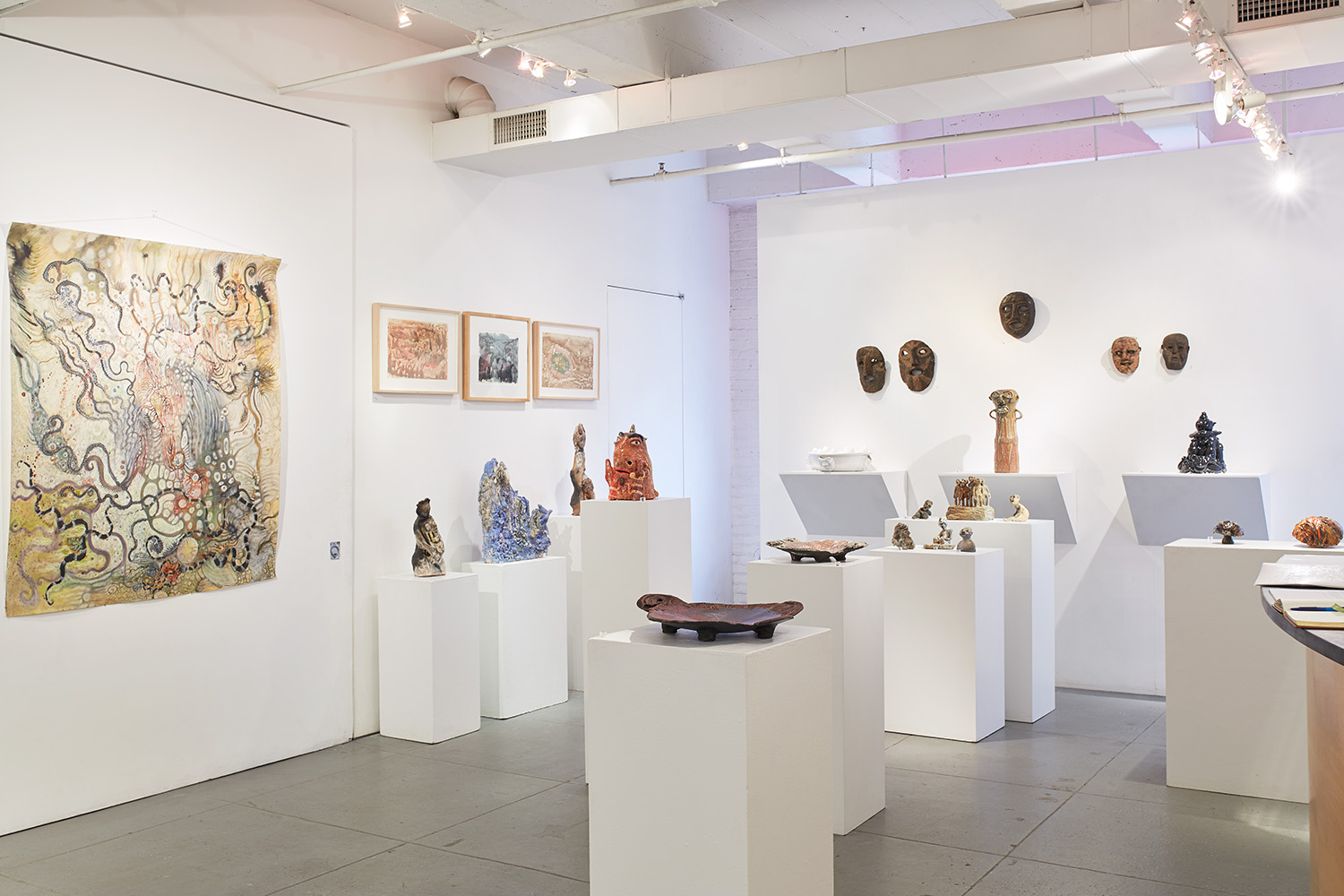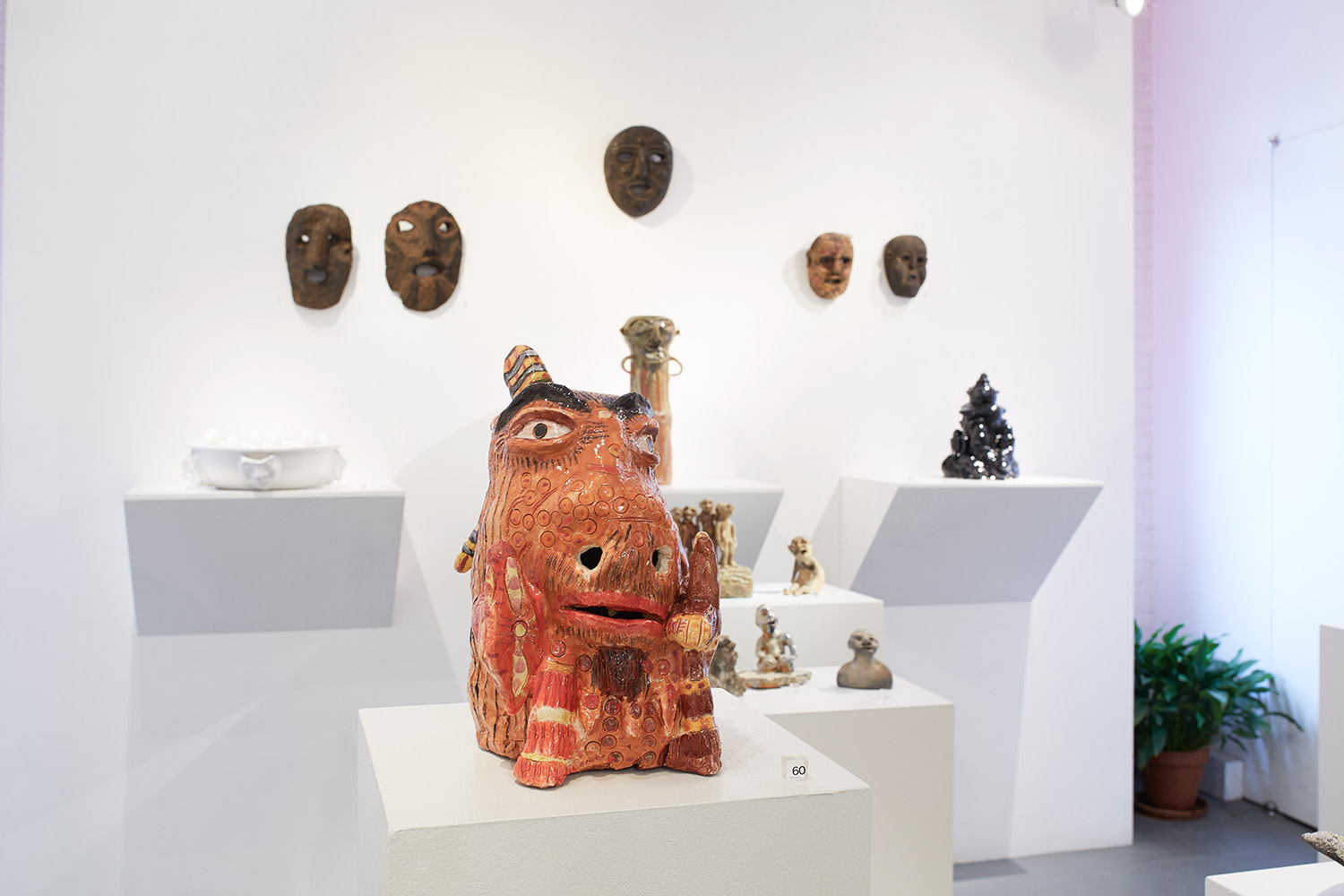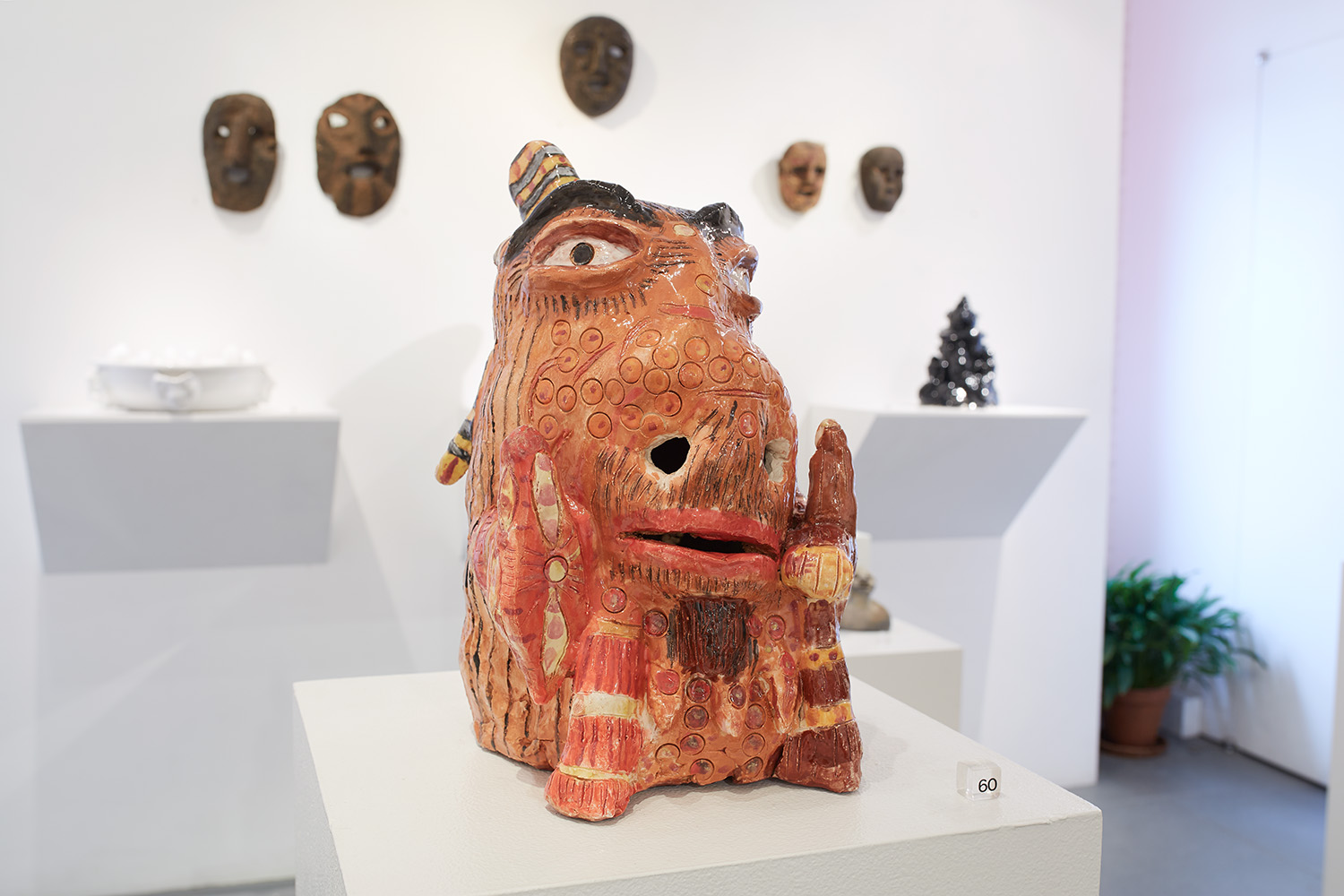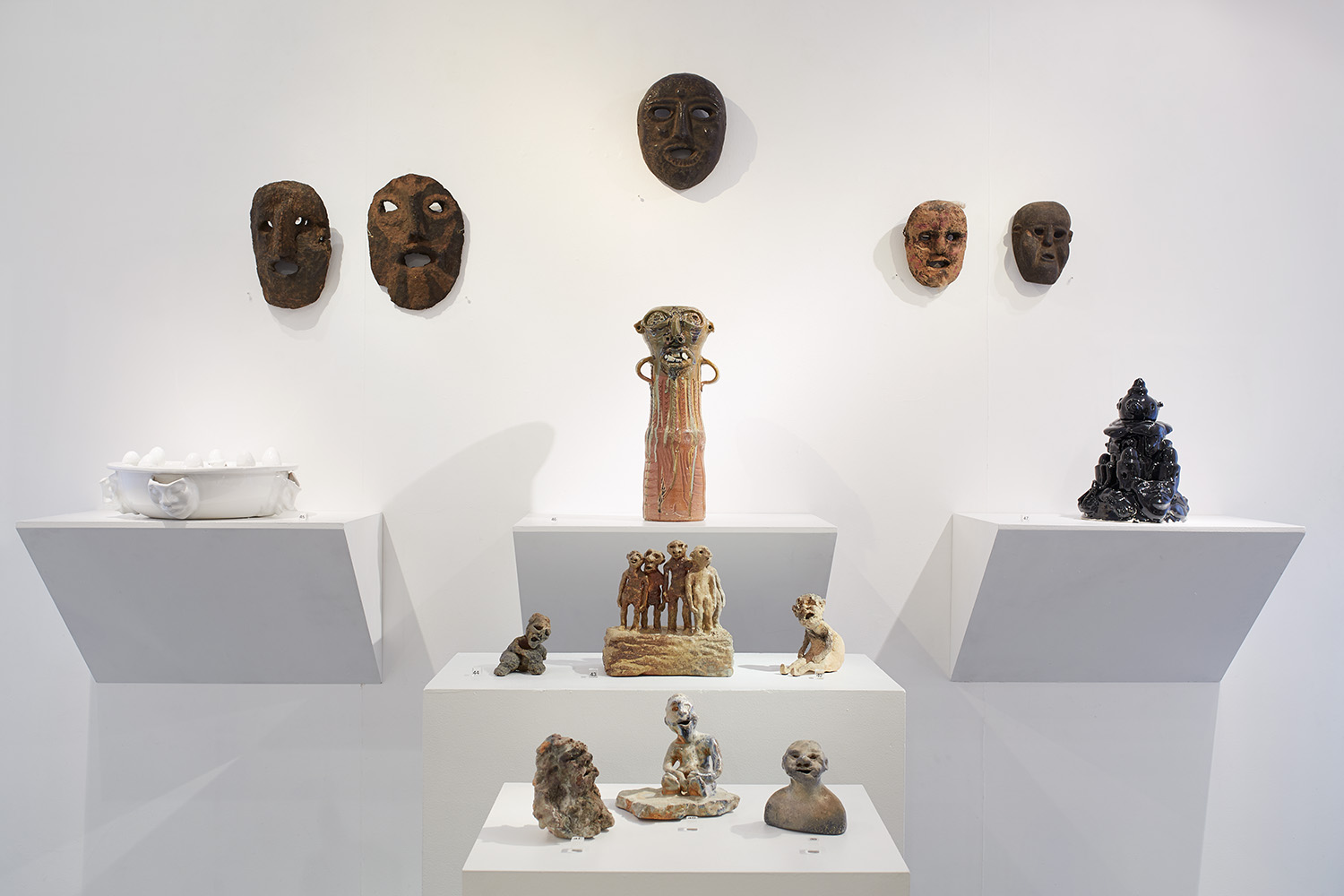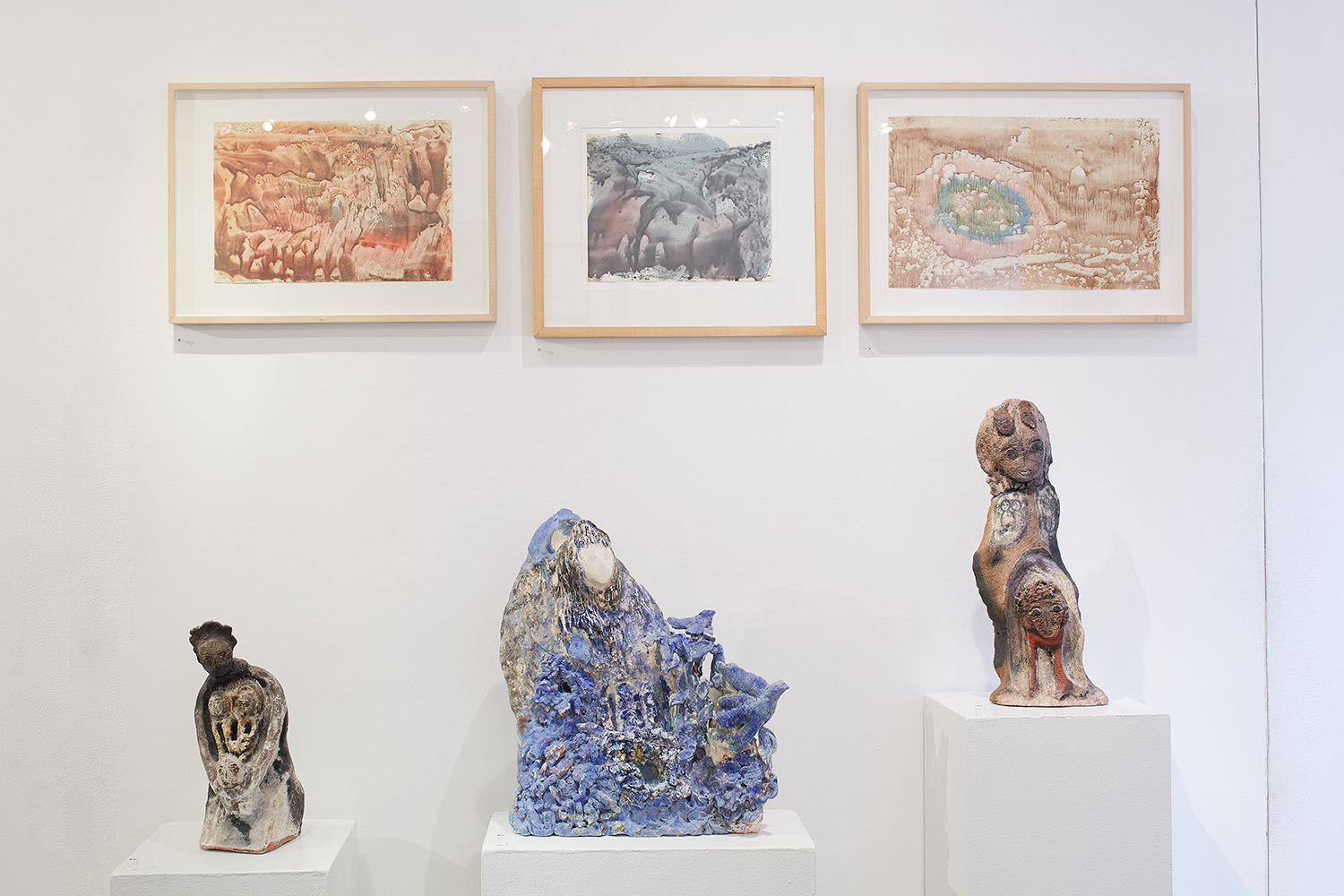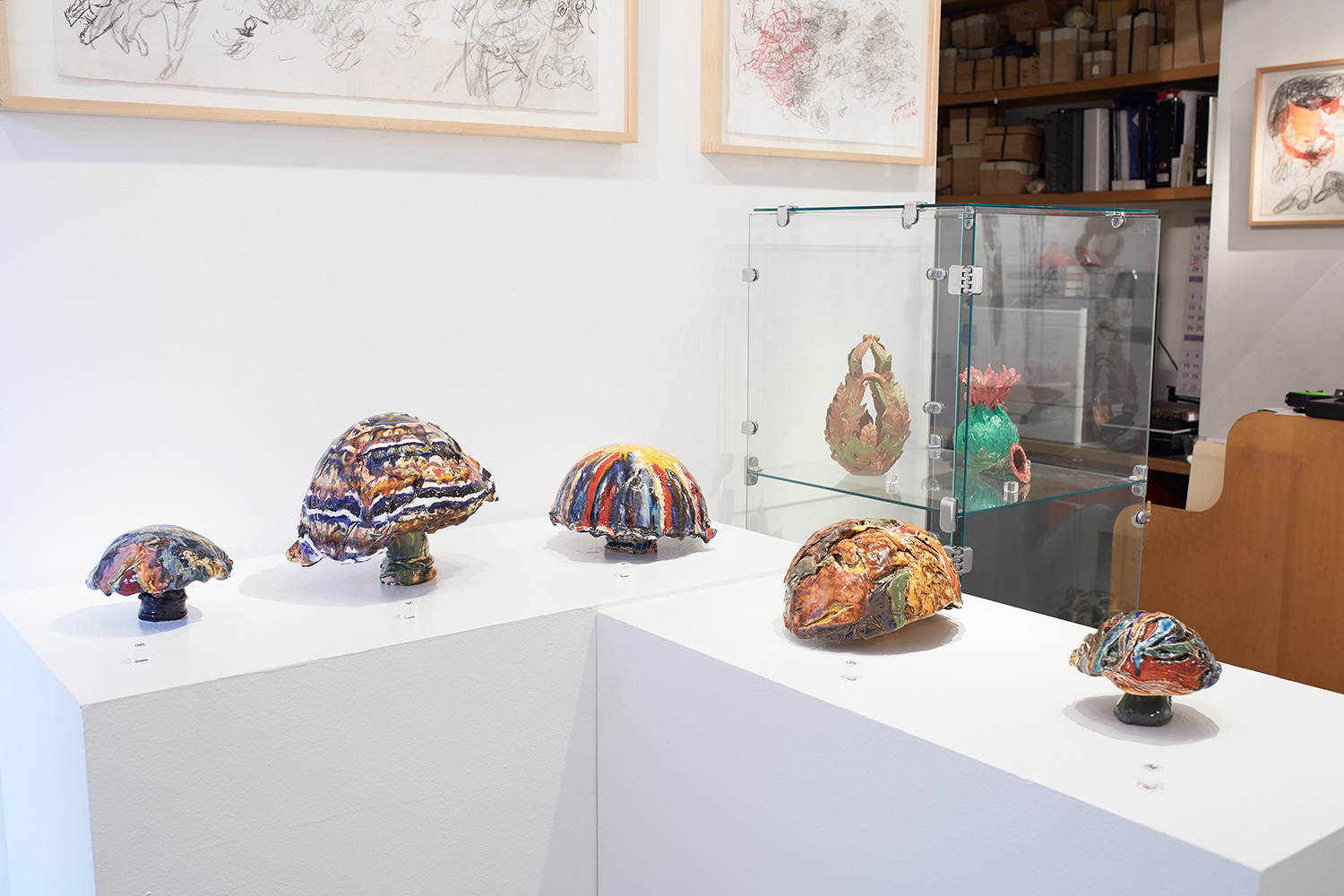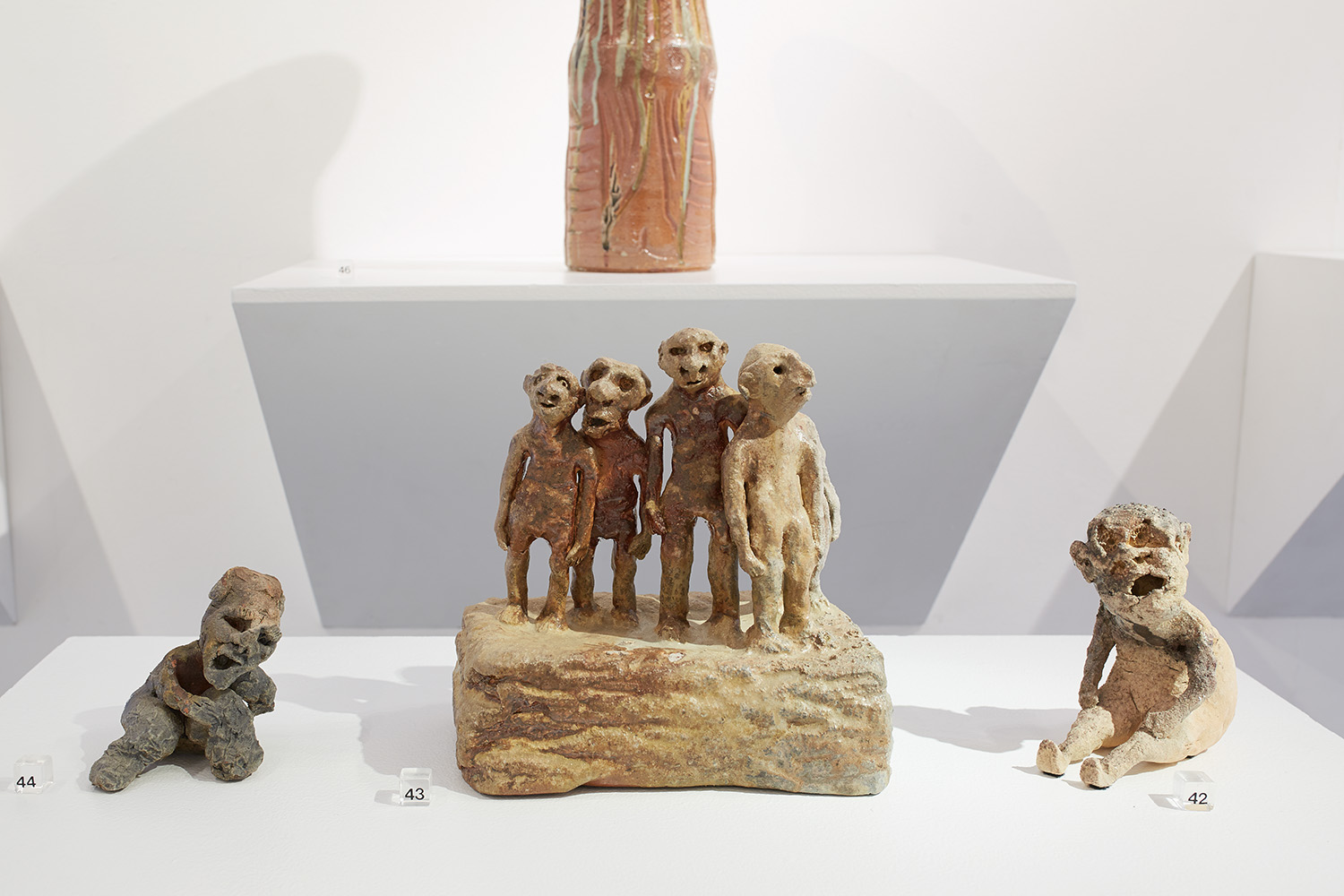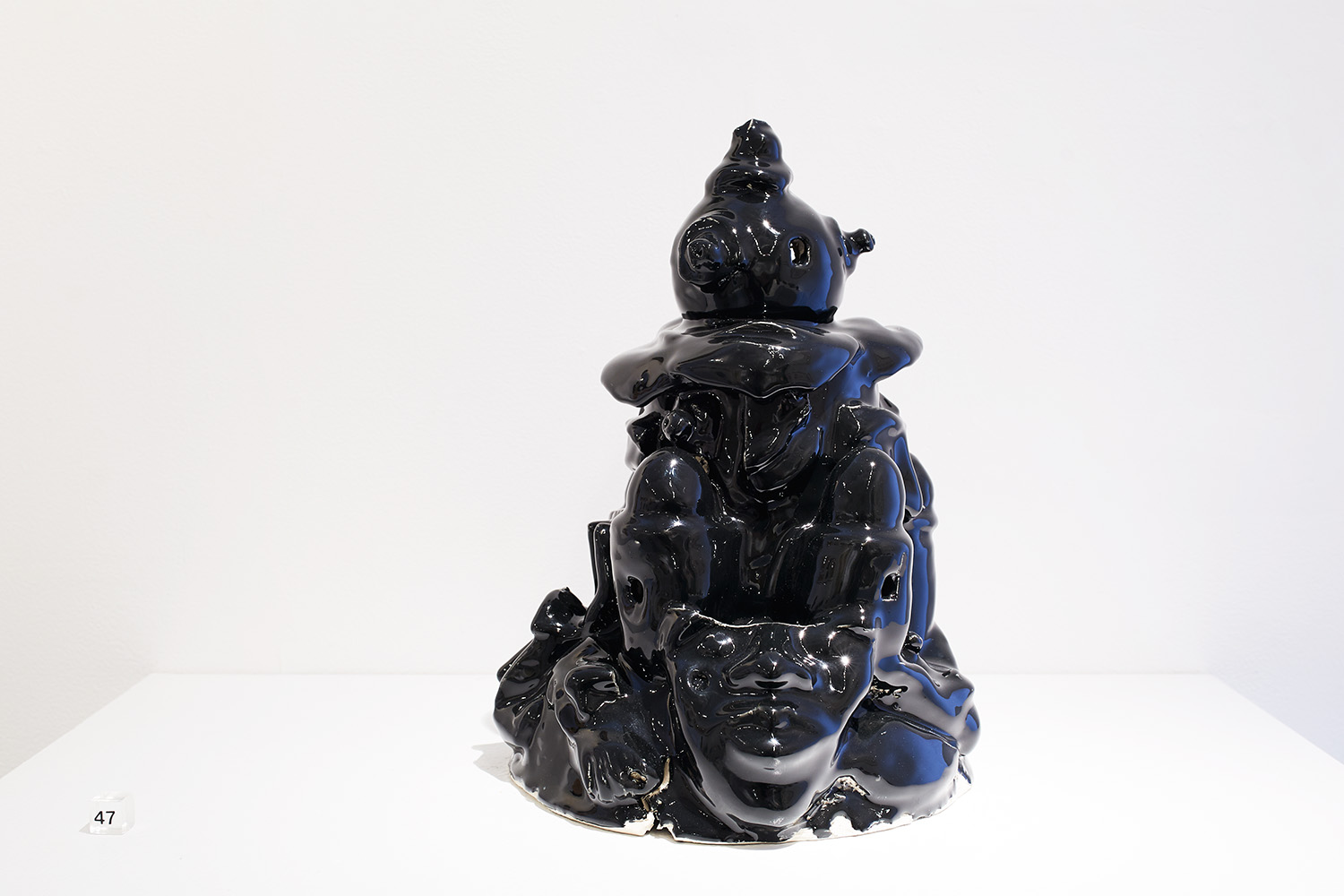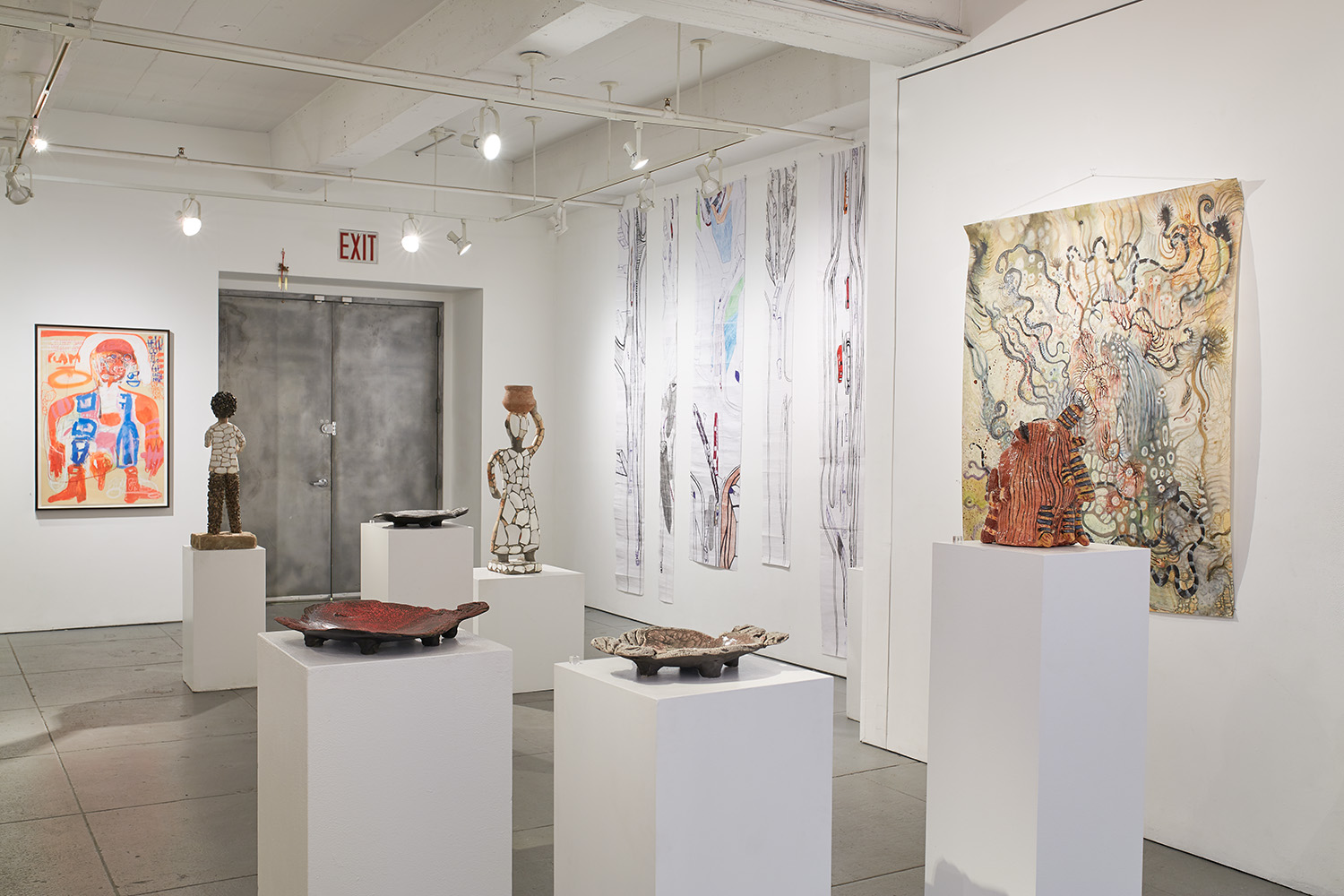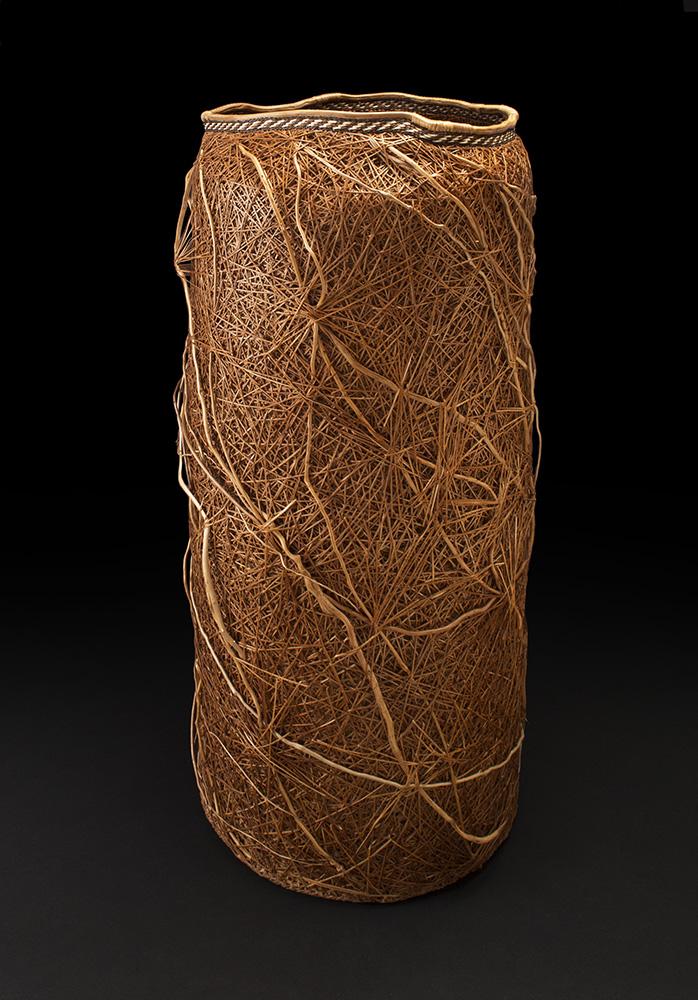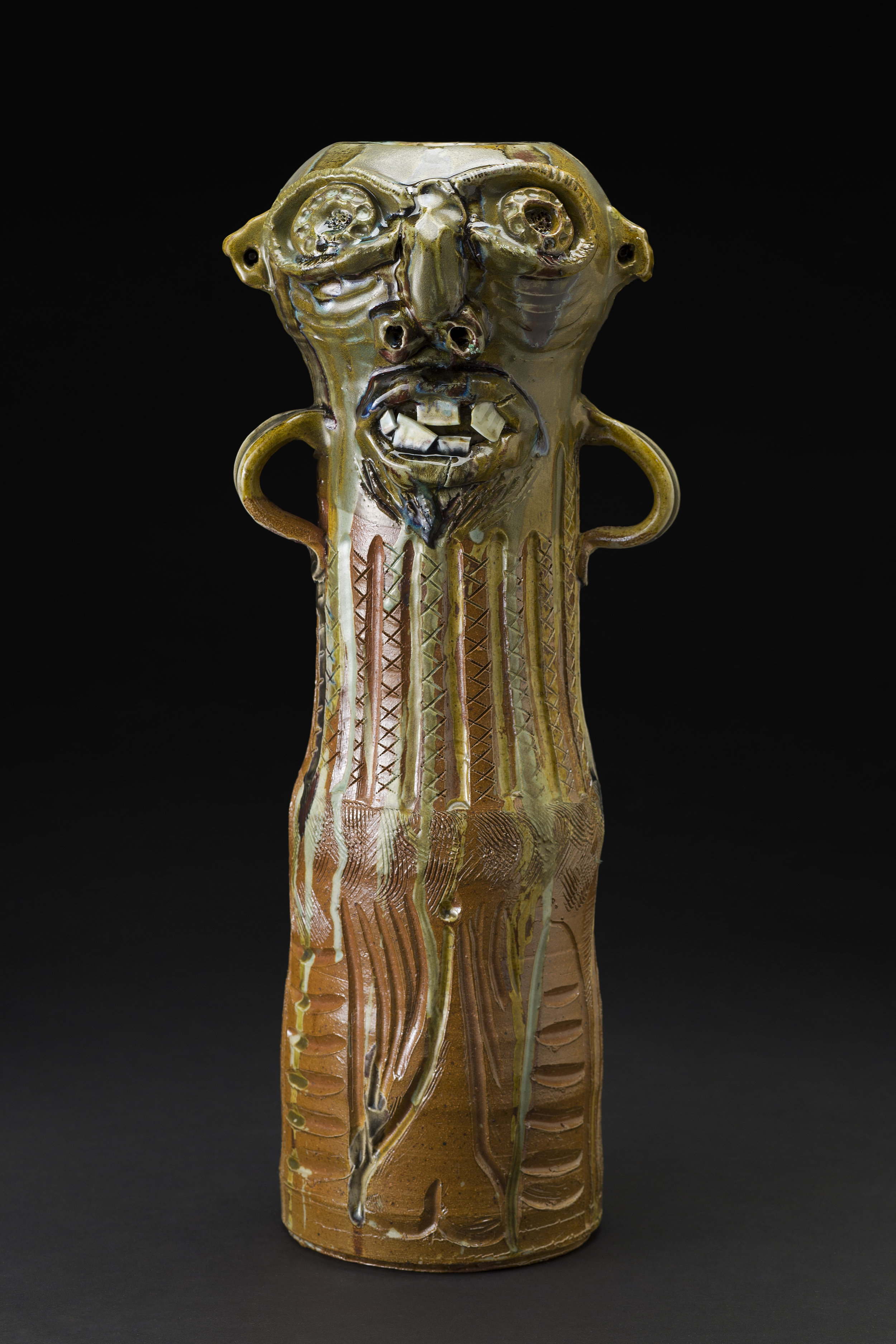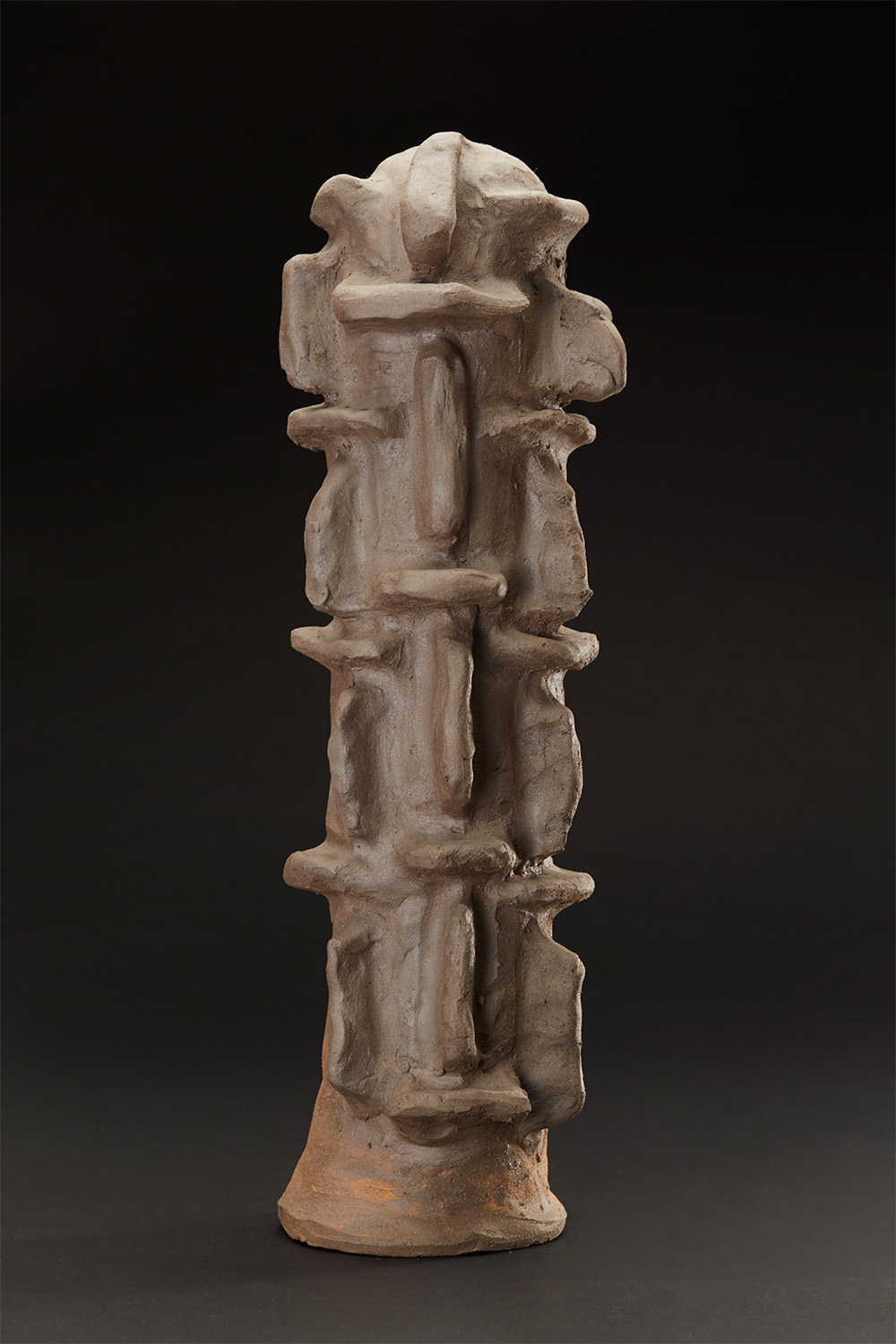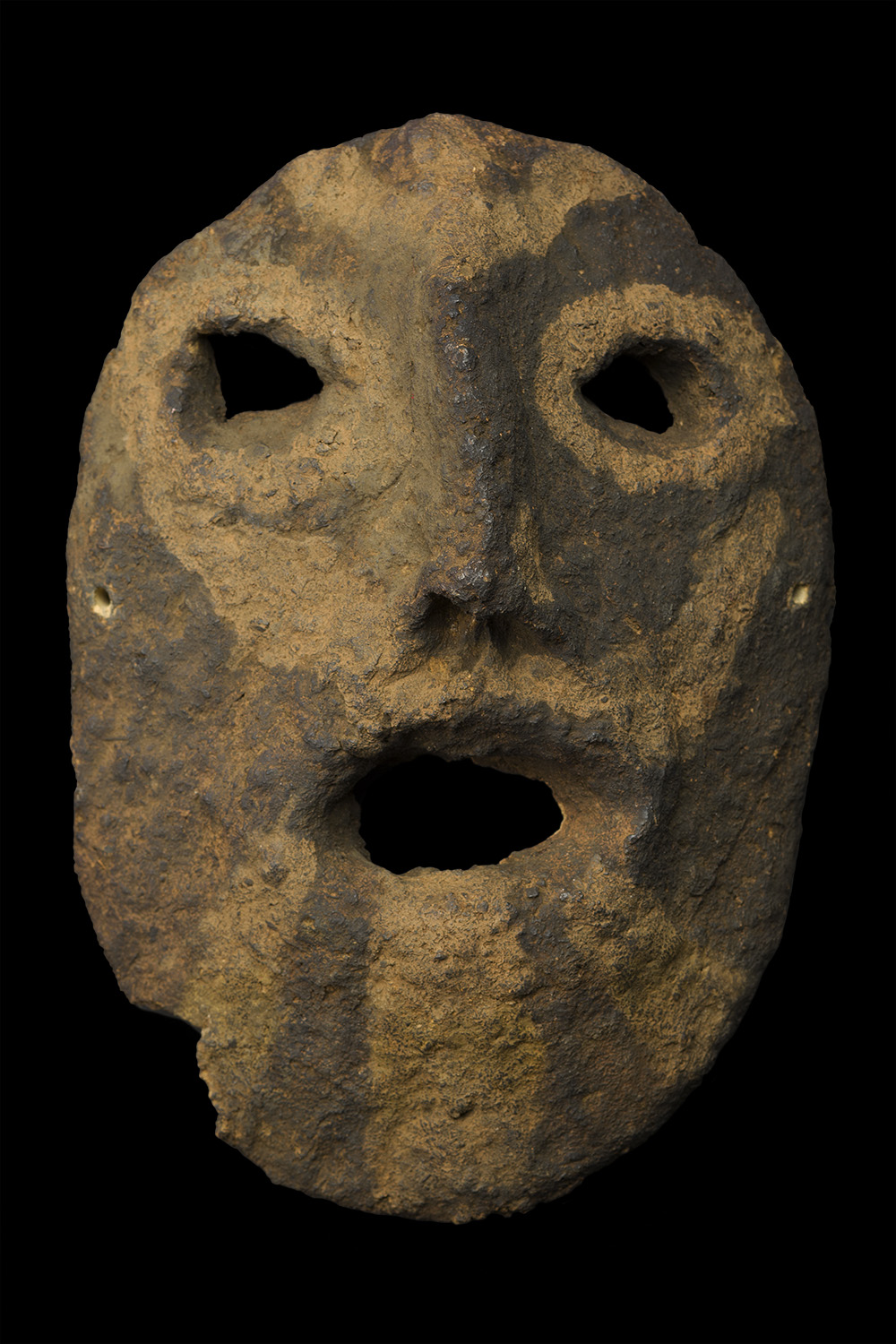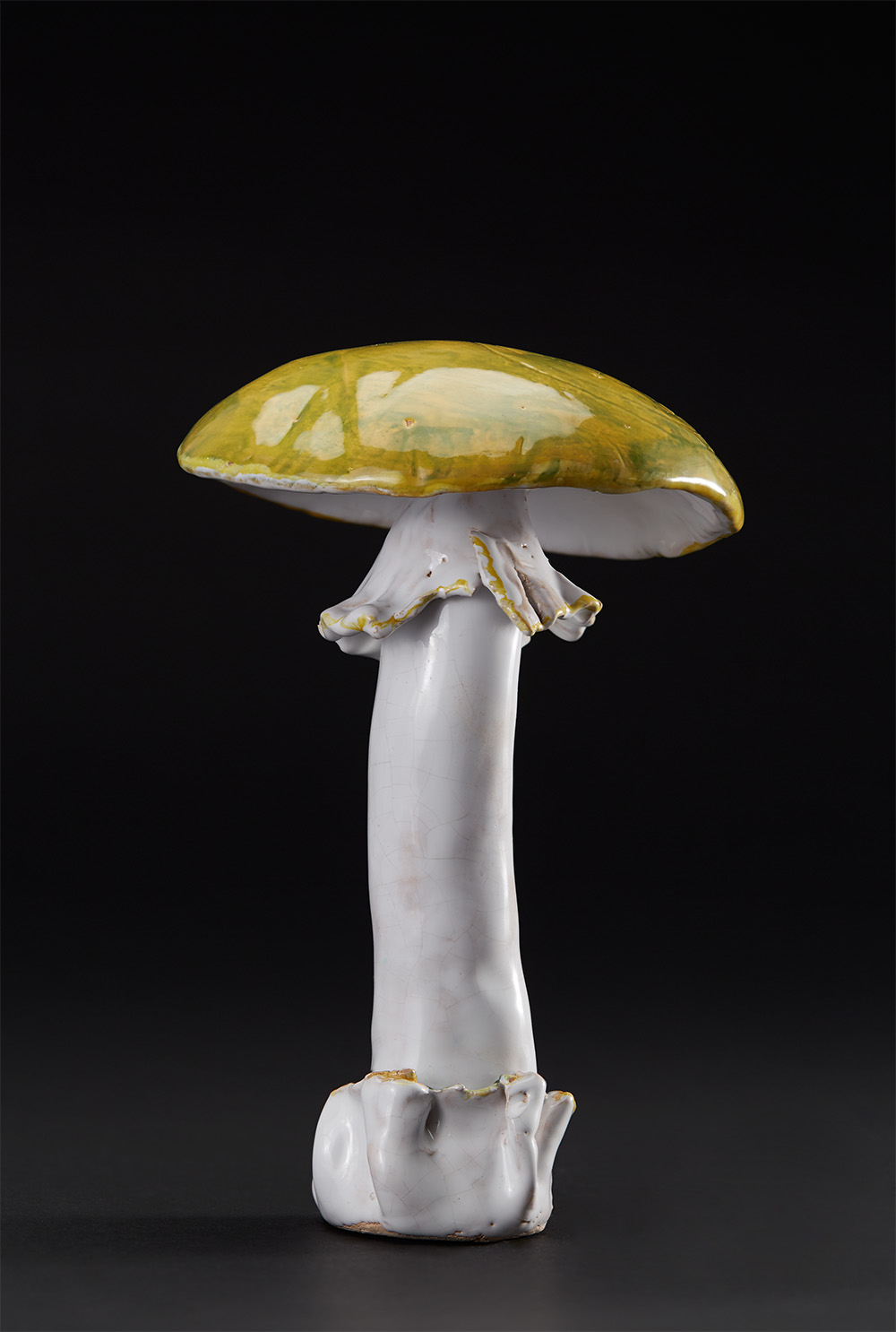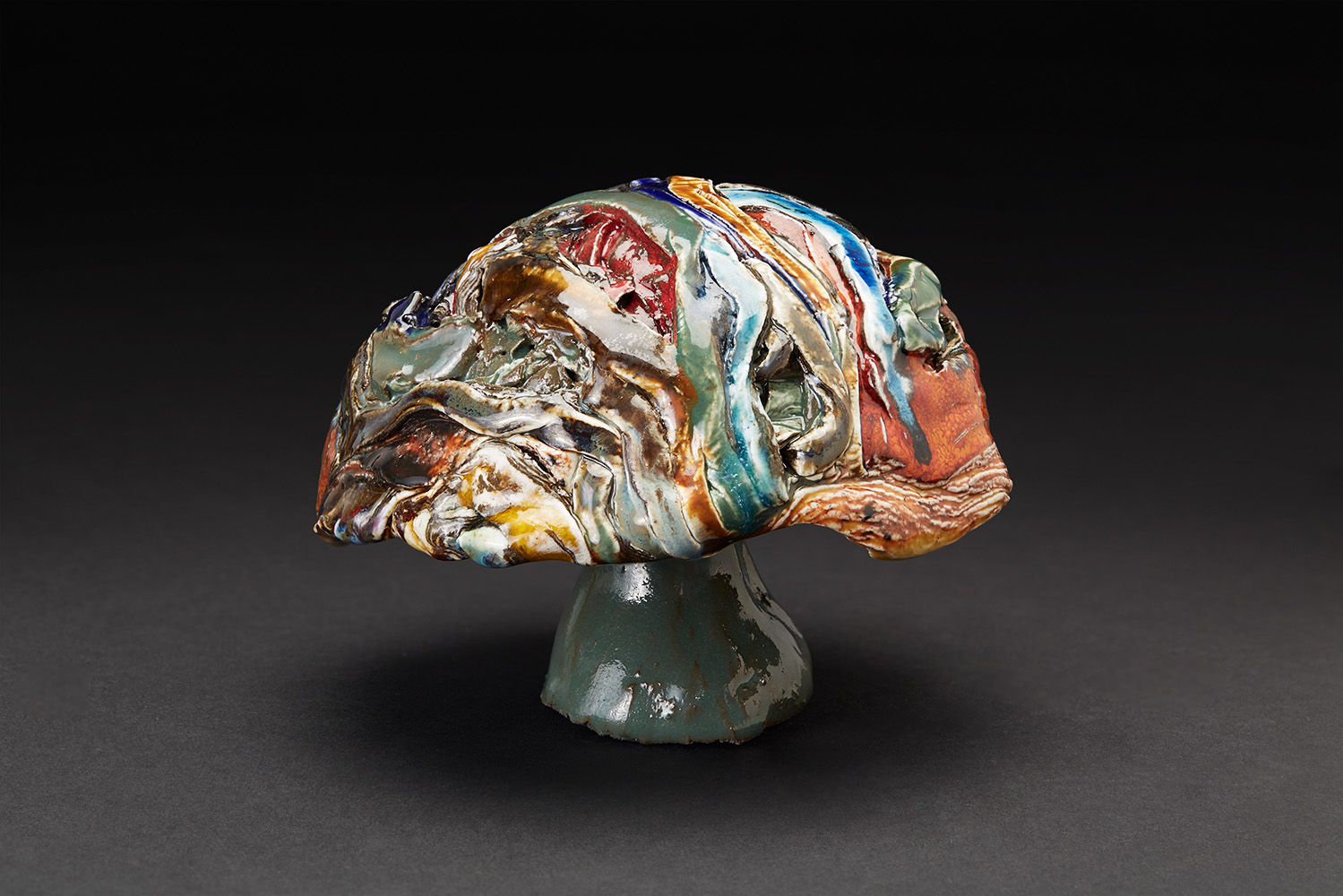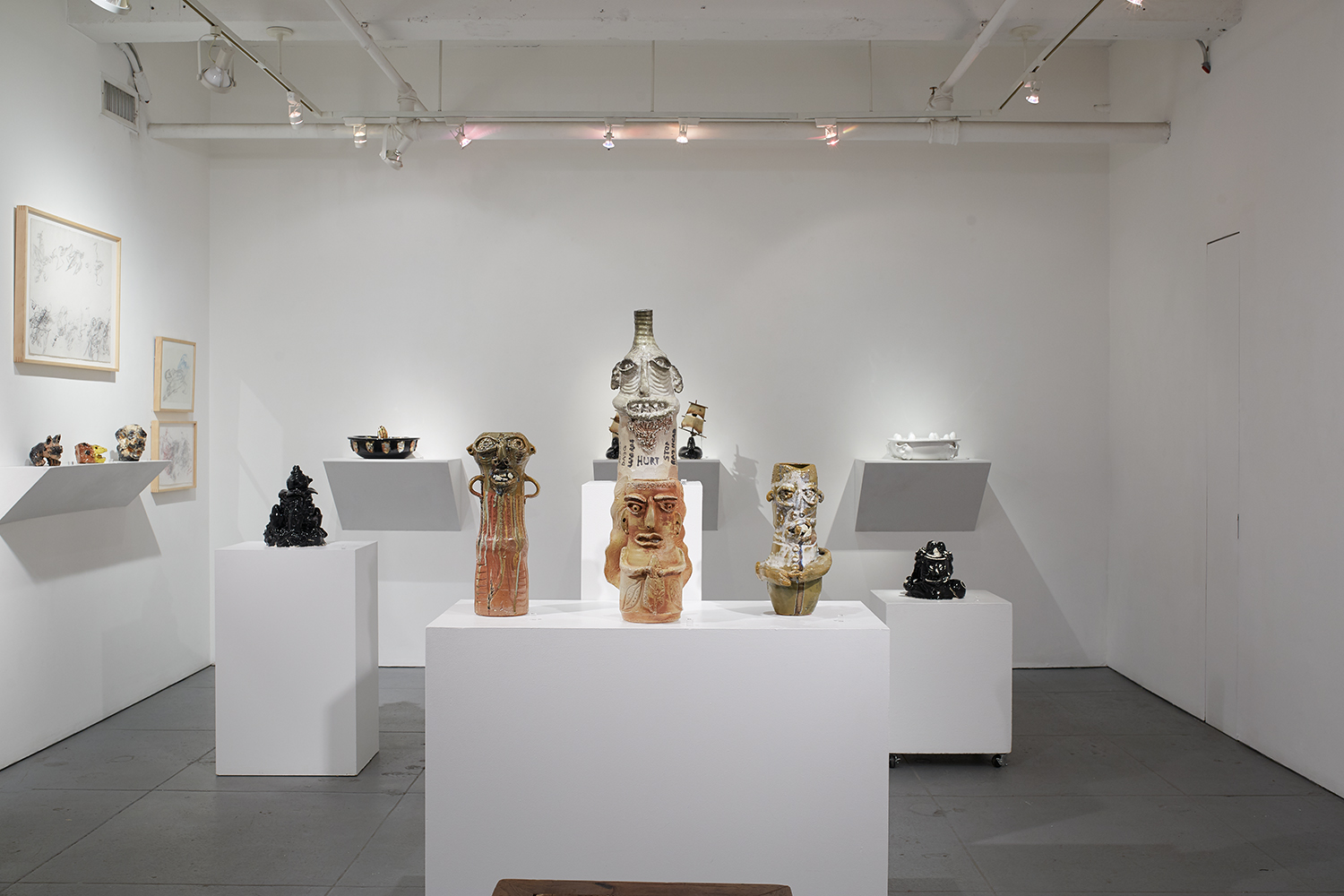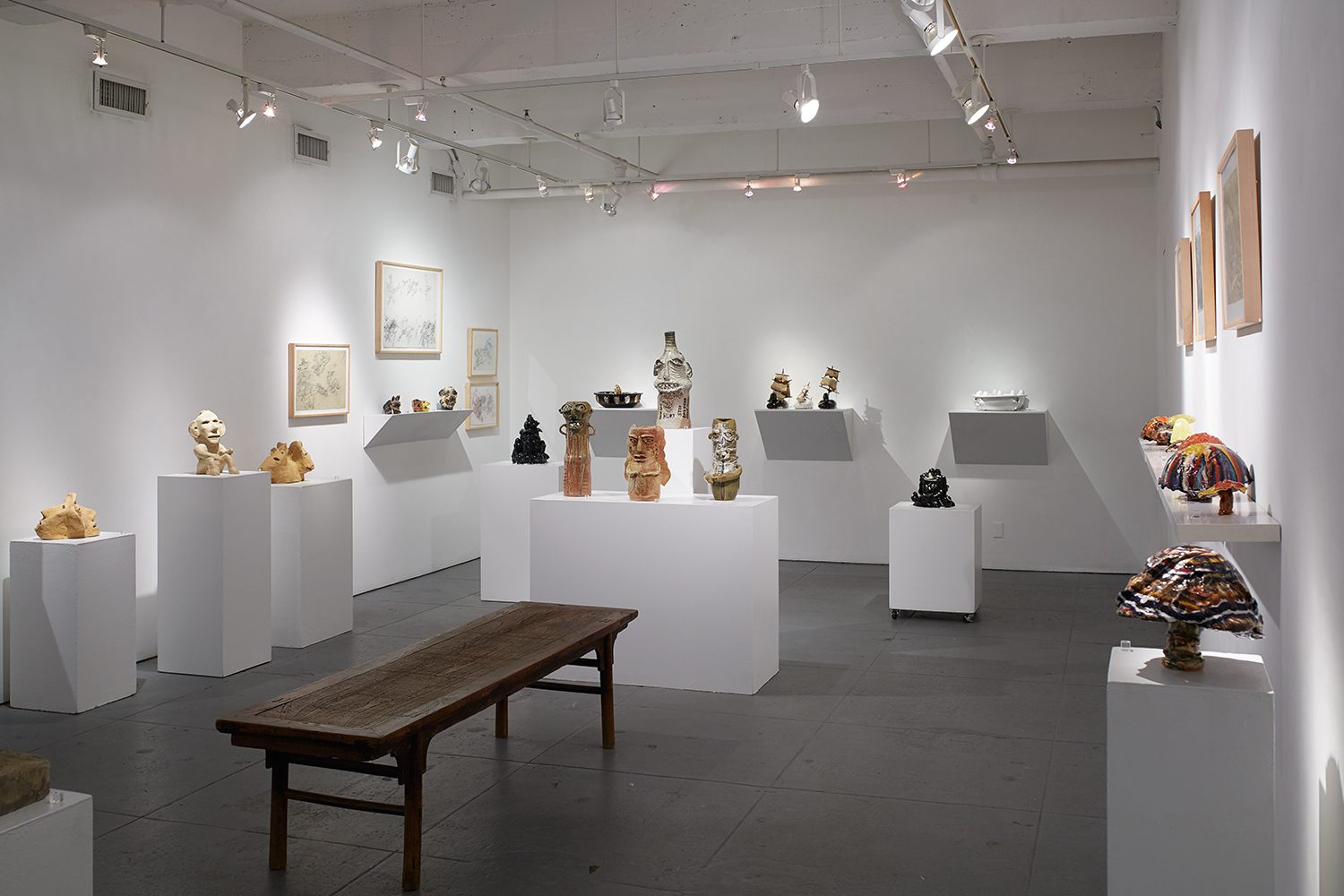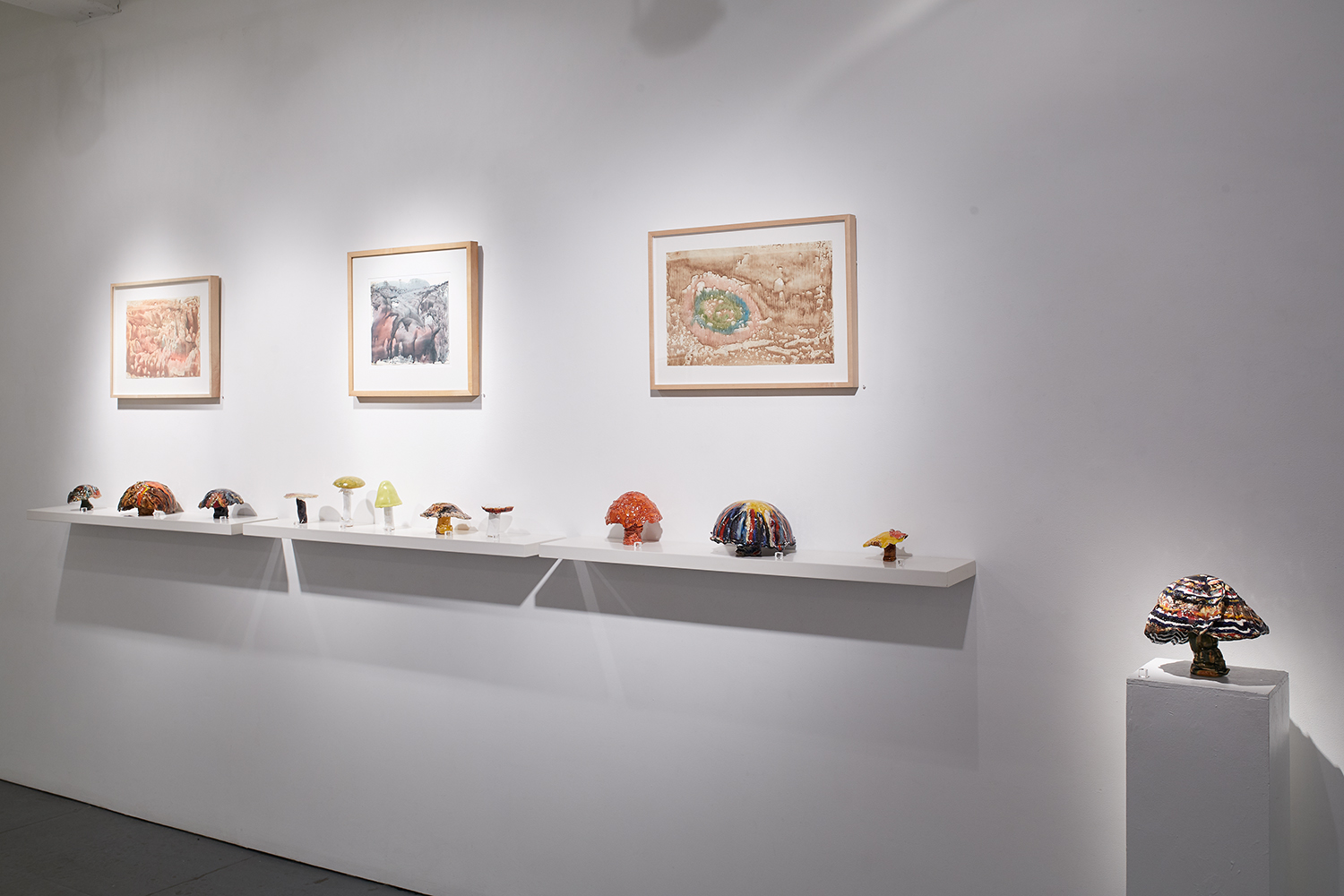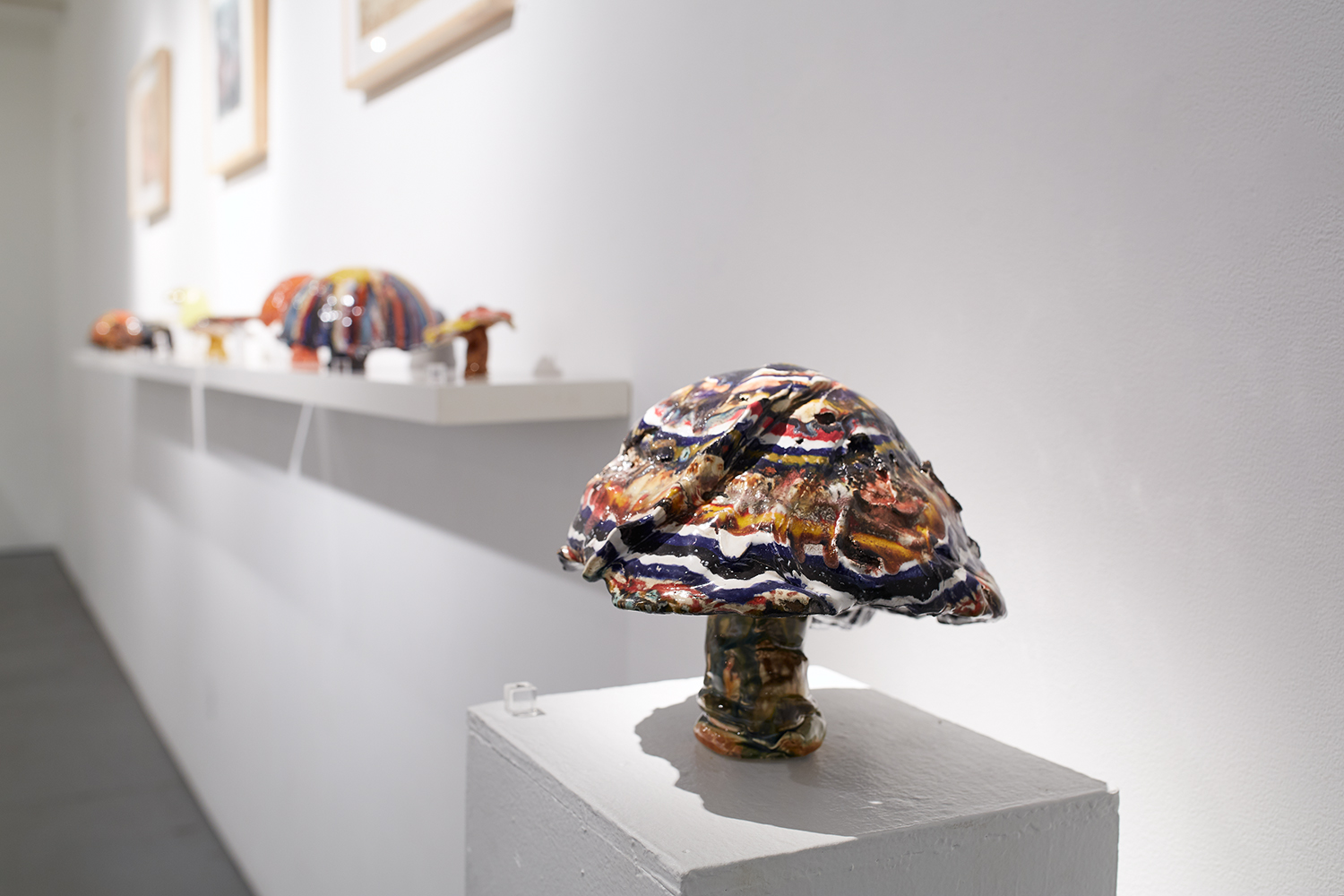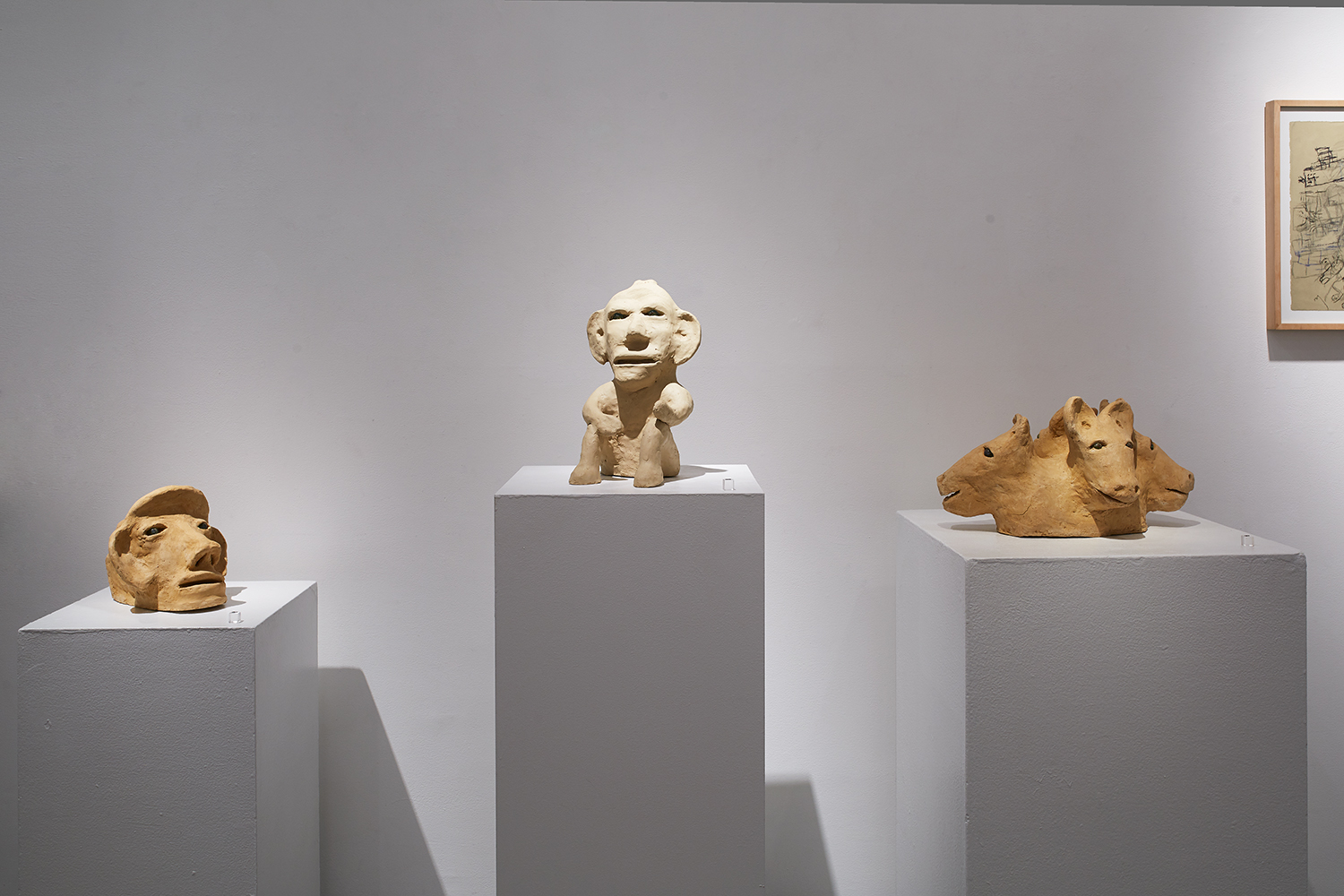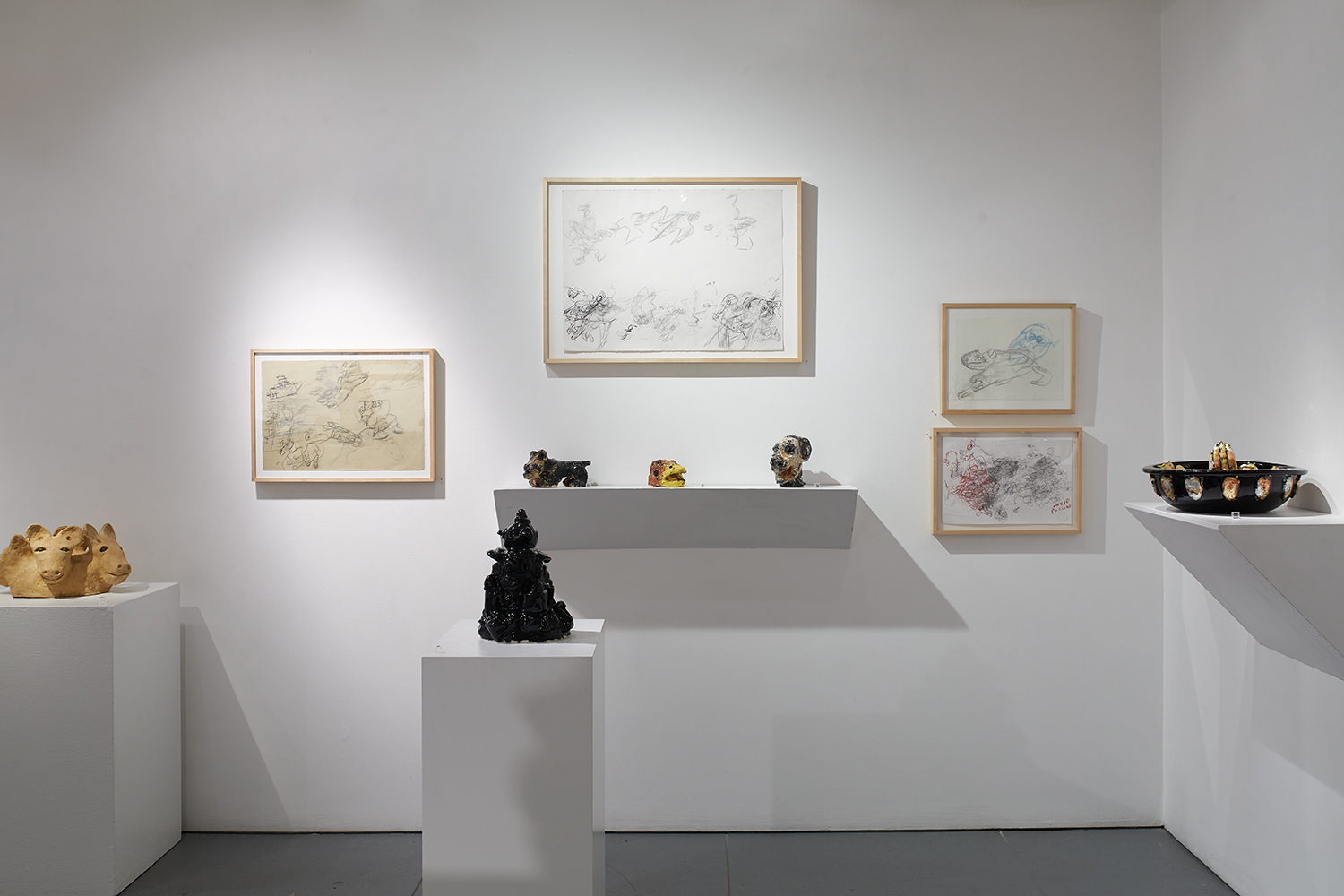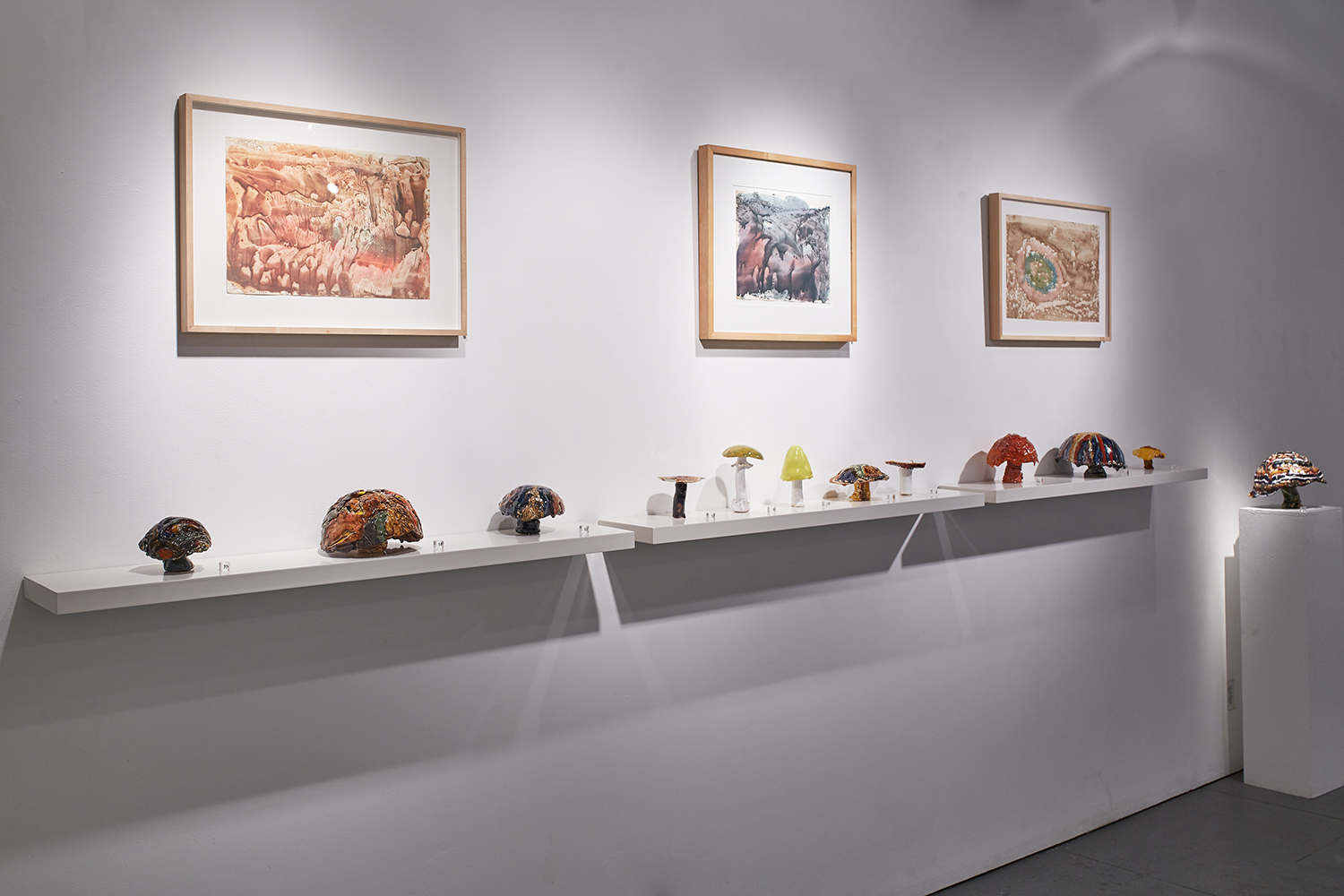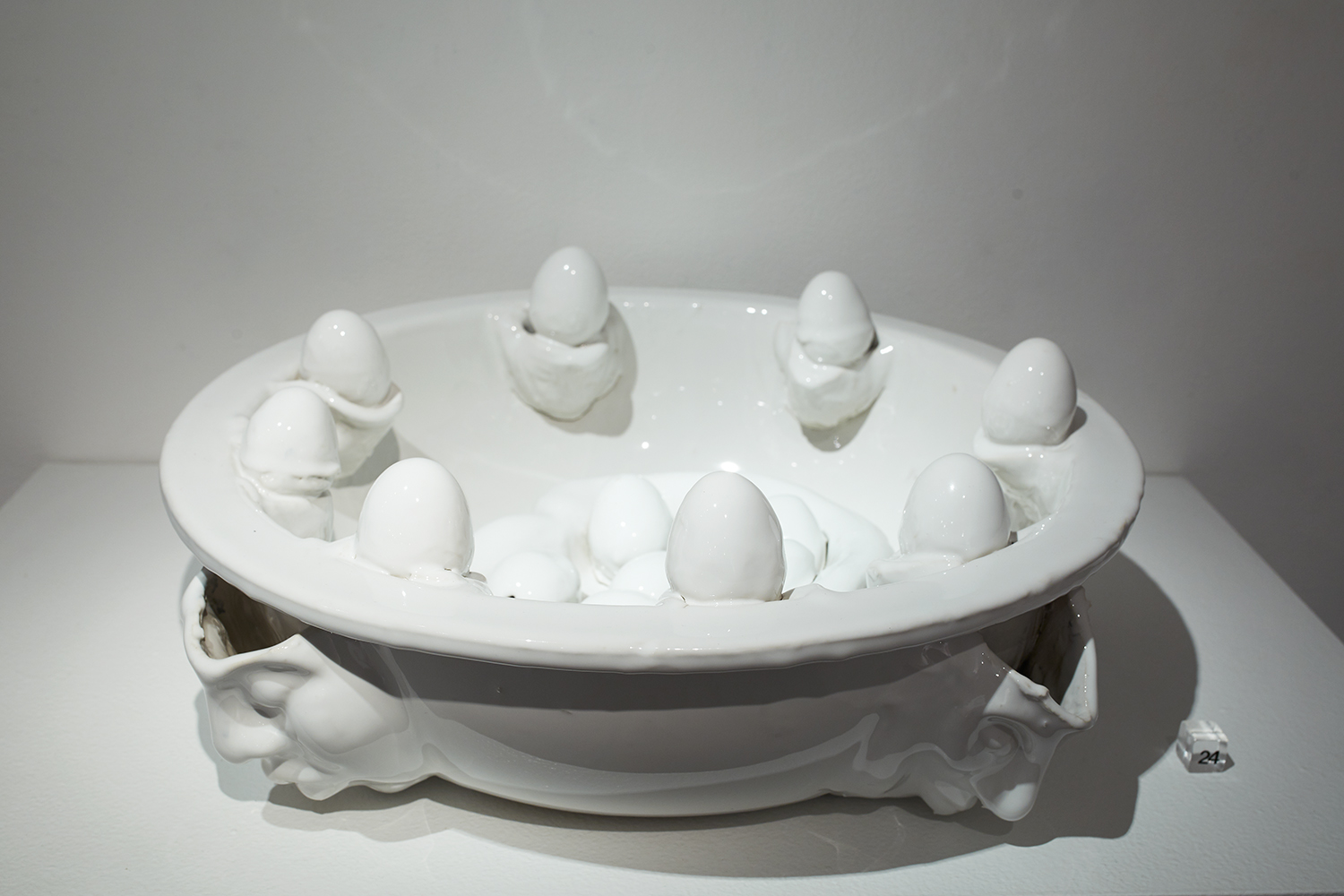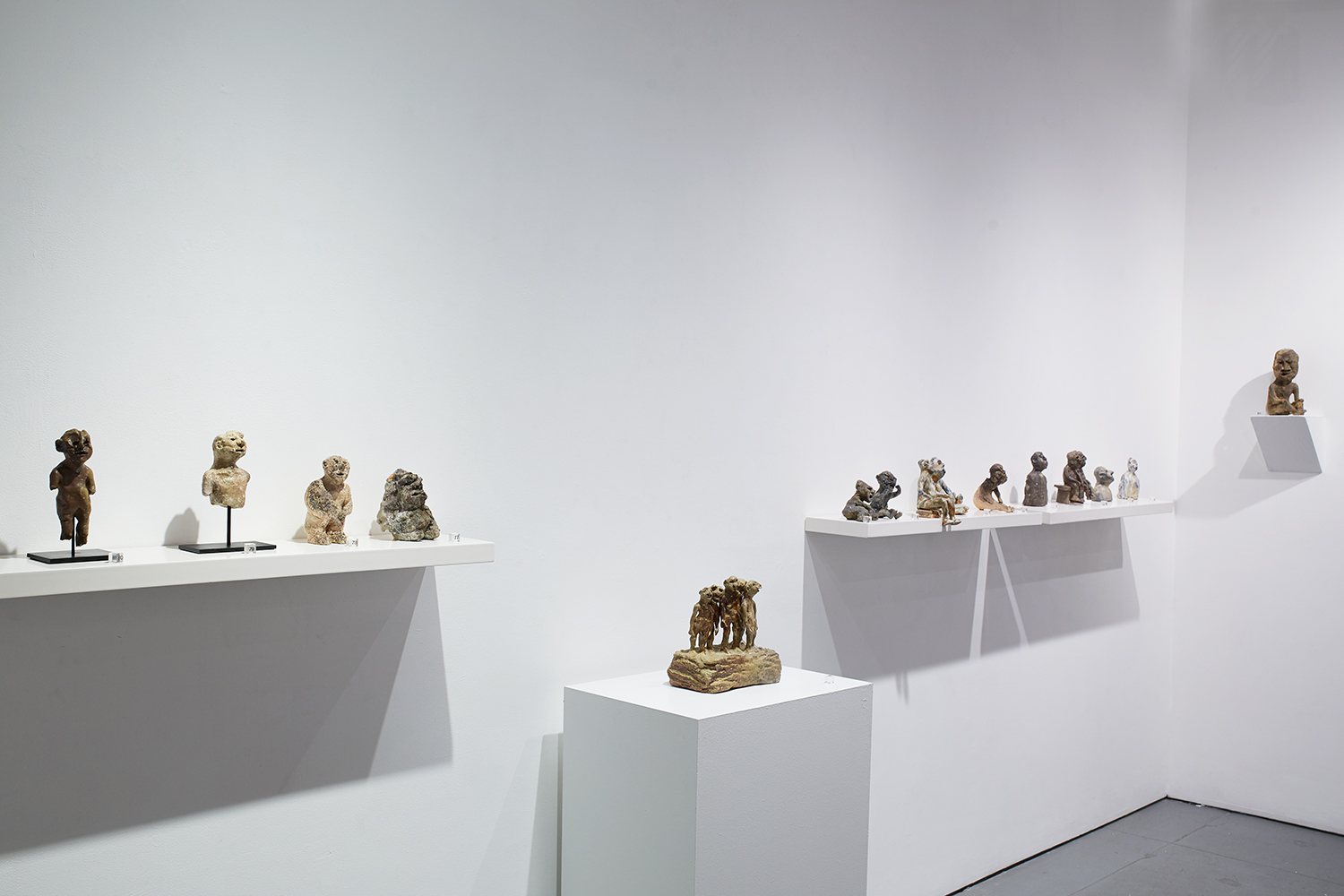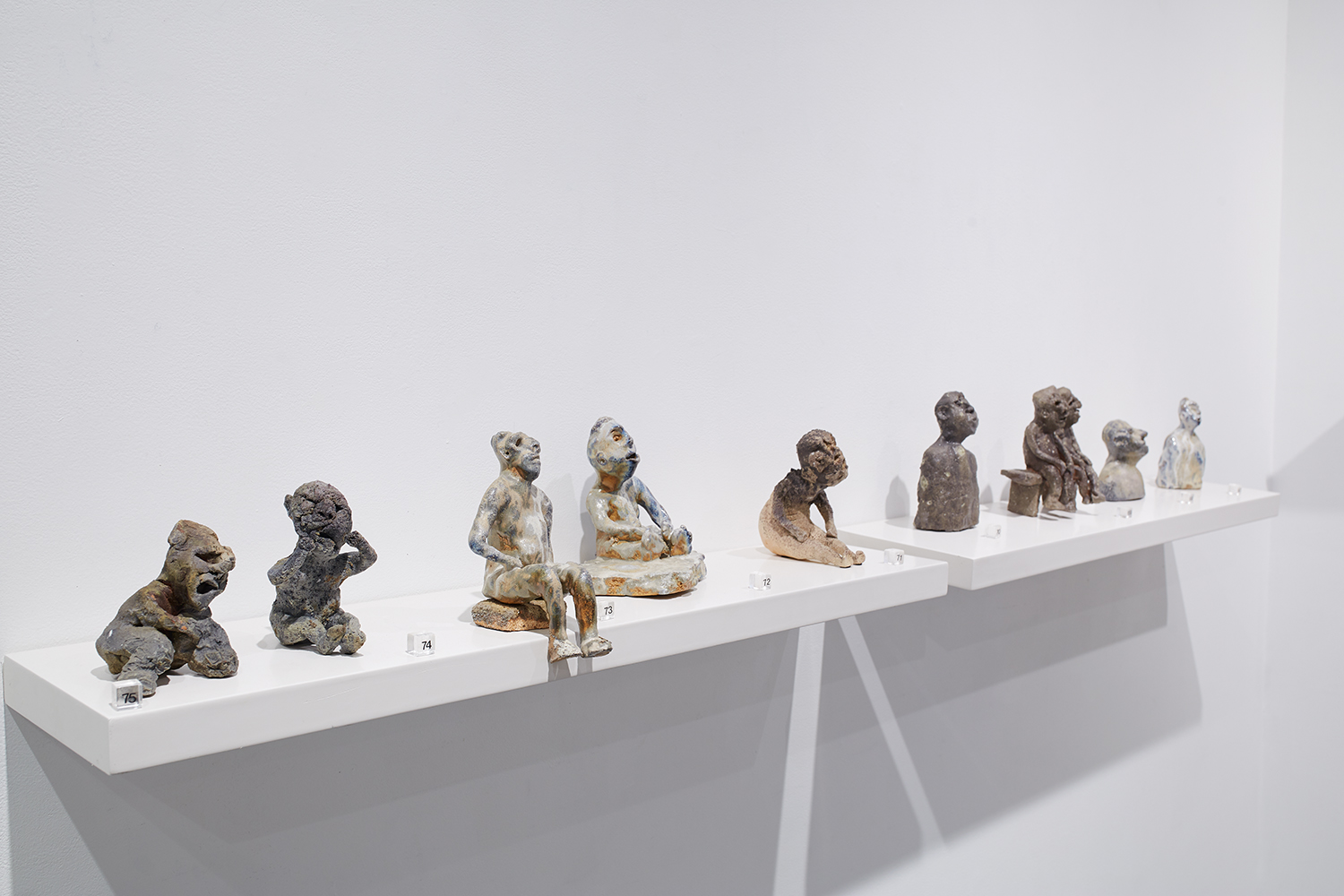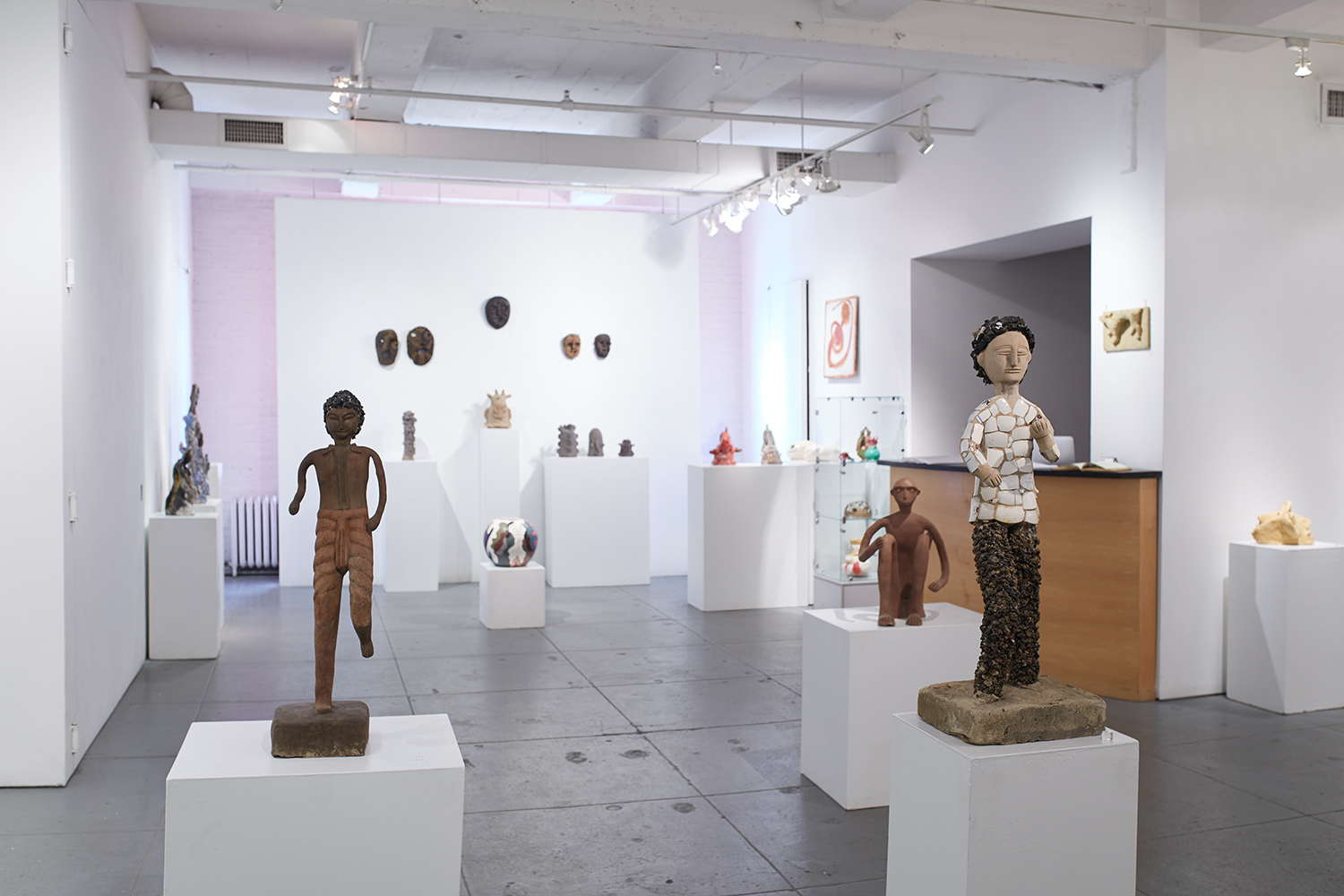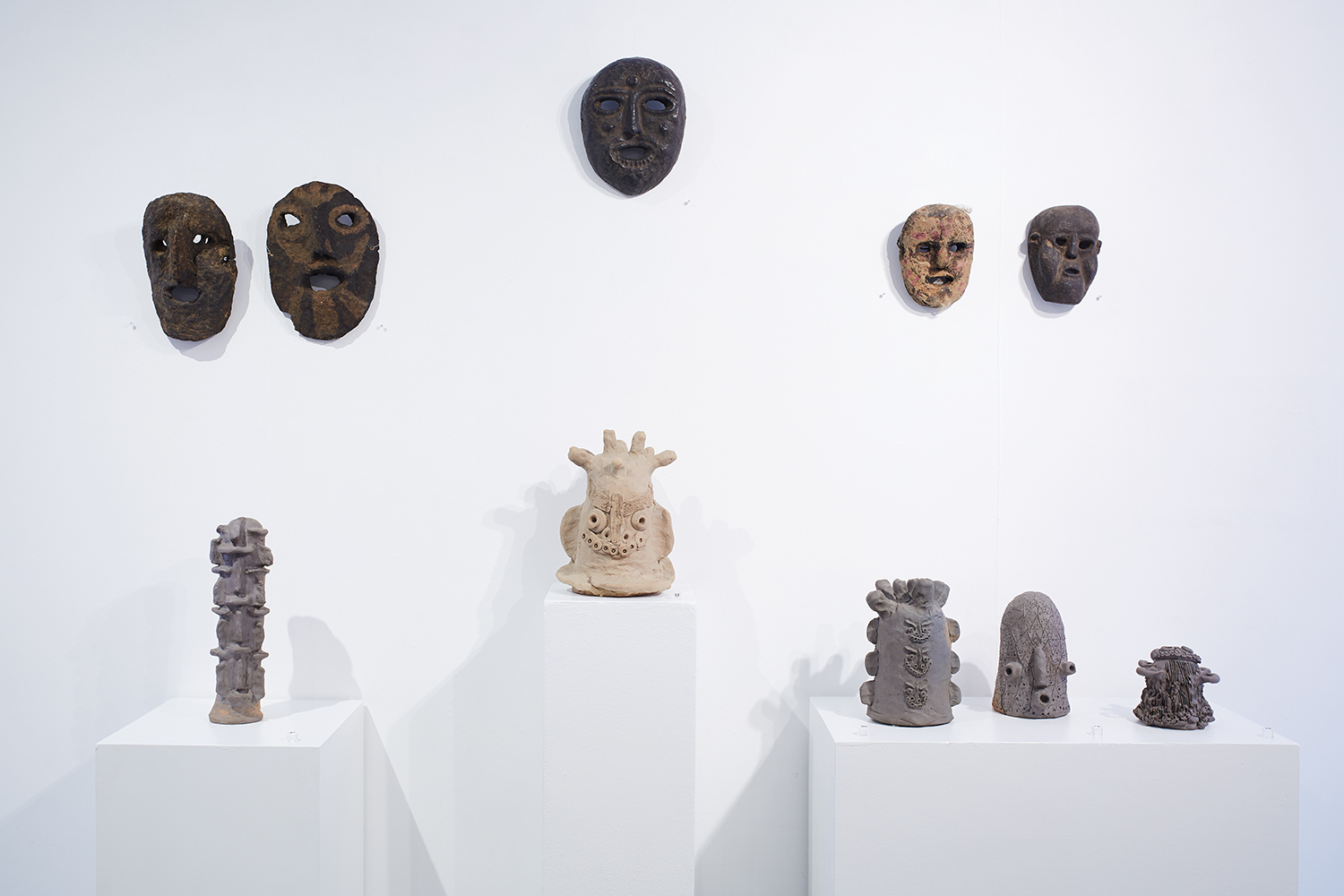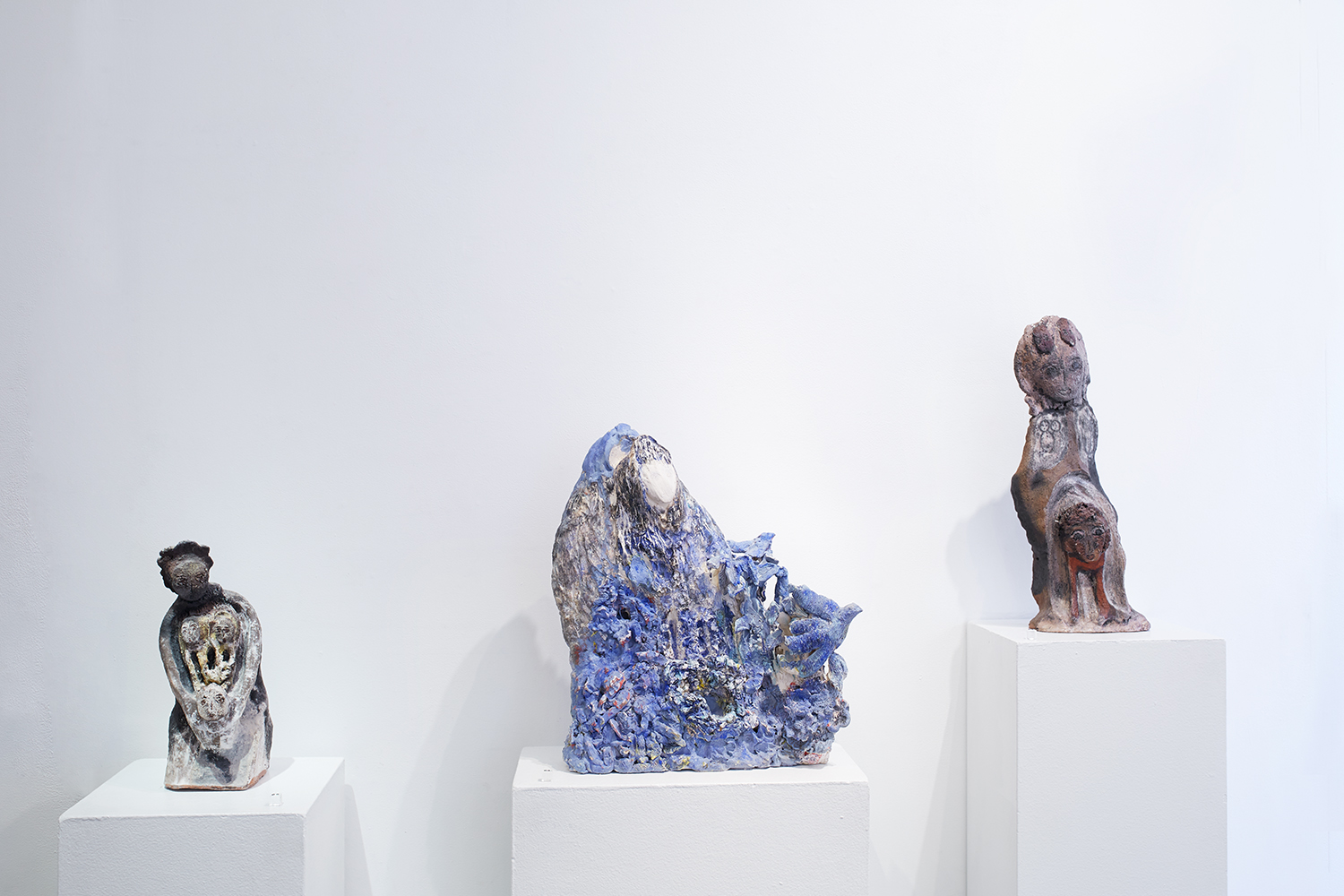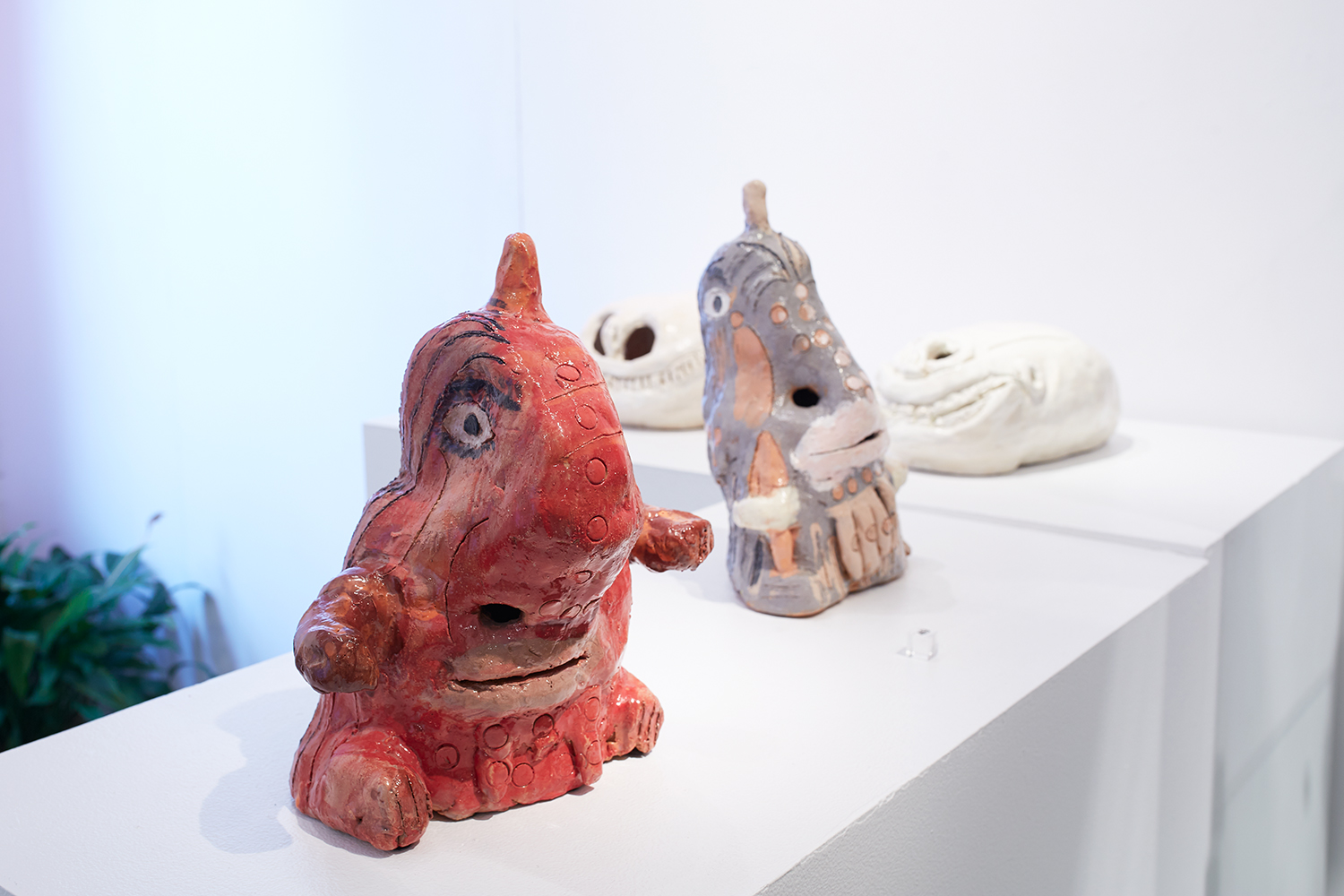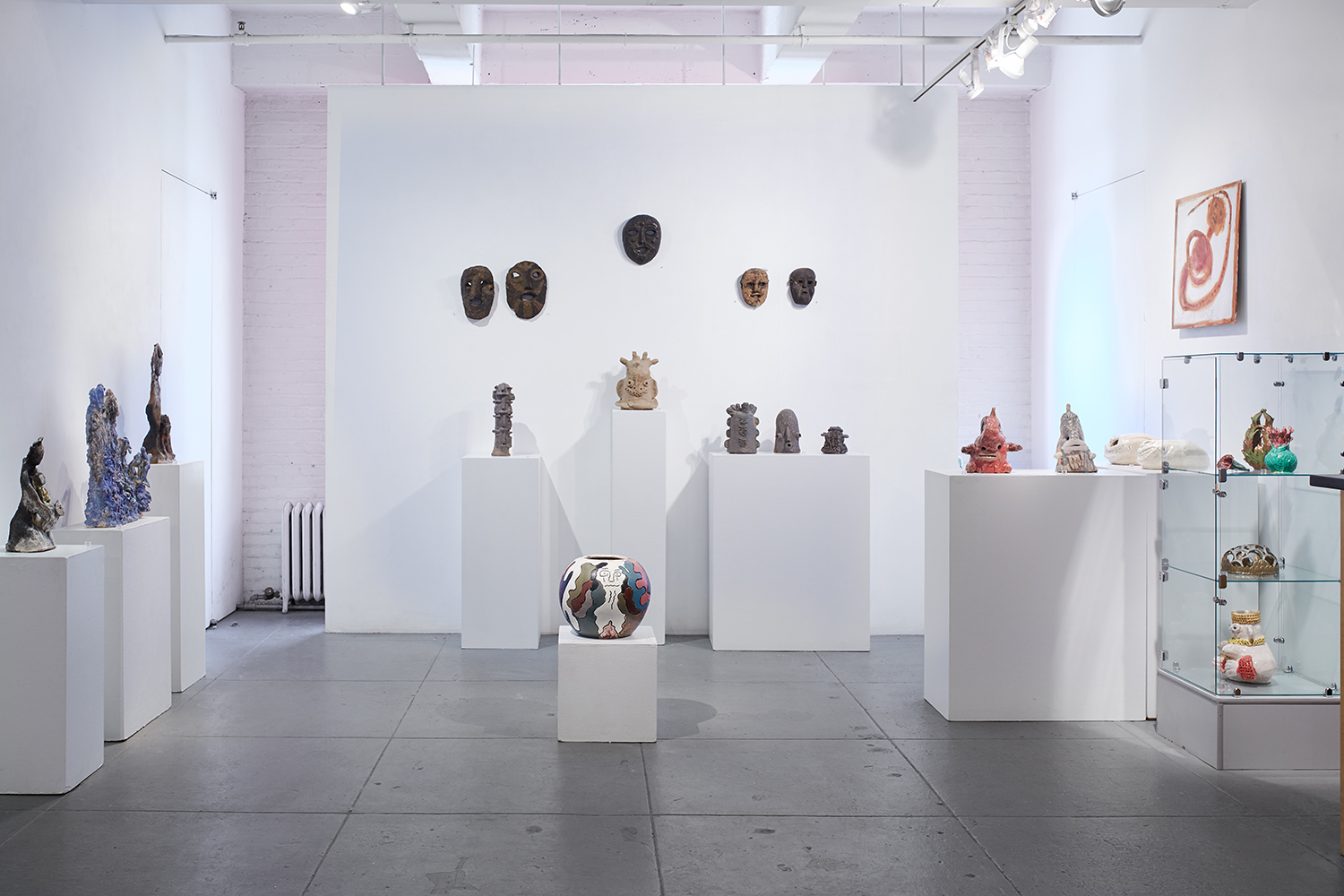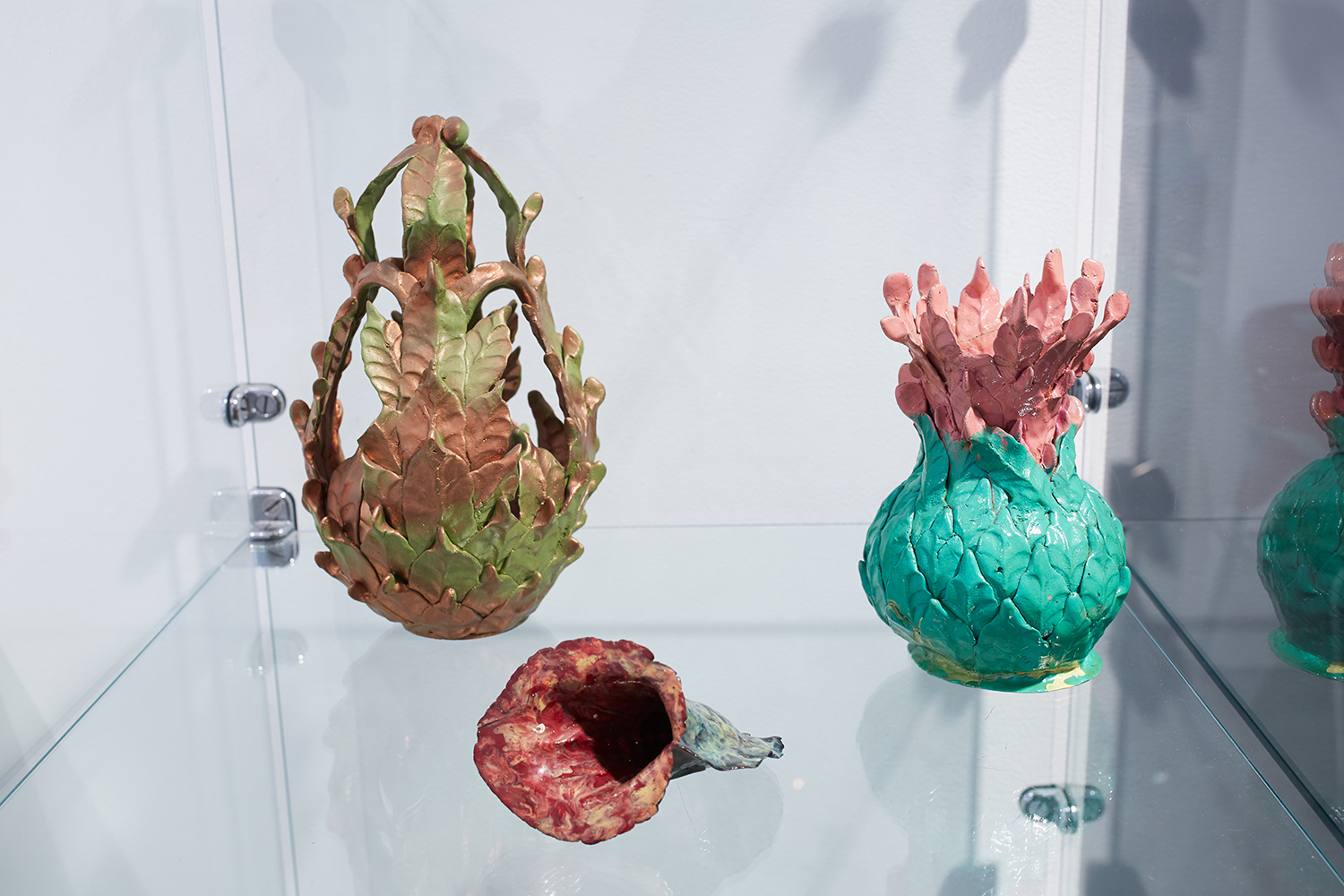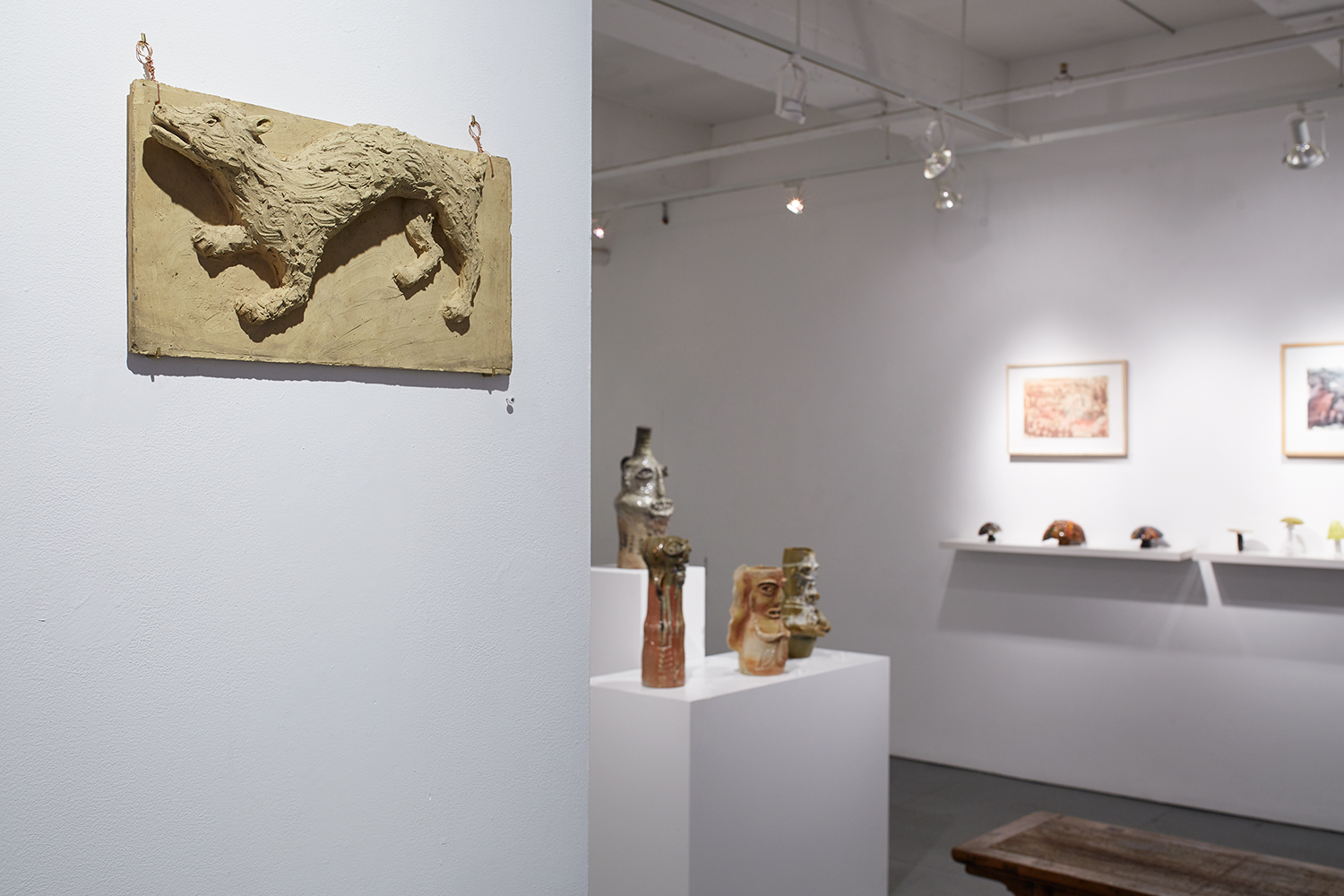Check out our new online chawan exhibition!
ONLINE CATALOG: Welcoming The Two Faced Rider: Paintings by Ilija Bosilj Bašičević
Welcoming The Two Faced Rider: Paintings by Ilija Bosilj Bašičević
Welcoming The Two Faced Rider: Paintings by Ilija Bosilj Bašičević
WELCOMING THE TWO-FACED RIDER: PAINTINGS BY ILIJA BOSILJ BAŠIČEVIĆ
February 15 - March 17, 2018
Ilija Bosilj Bašičević was born in Sid, in what is now Serbia in 1895, and died in 1972 in the same town. His parents were peasants and he spent most of his life as a farmer, having been forced to drop out of school after four years. He resisted conscription during World Wars I and II as a protest against totalitarianism. When he began to paint, he assumed the name Bosilj. Although there were attempts to link him with some of the generic painters of the “naïve” movement in Yugoslavia, his work was marginal if at all relevant to that limited movement. Certainly there is nothing naïve about it. Like many non-western artists he used his own traditional folklore as a jumping off point and visionary bedrock for his own imagery.
His work's themes touched upon what Jane Kallir describes as: “Biblical stories, scenes from the Apocalypse, episodes from myth and history, depictions of local animals, birds, and the Dzigura (Sid's main street), and most idiosyncratically, images of winged people and an idyllic parallel universe called Ilijada. These subject groupings are not discreet categories but rather are interrelated. The flying people are on their ways to Ilijada. The Dzigura exists both on earth and in Ilijada. Overall, Ilijada is a paradise that balances and opposes the horrors of the Apocalypse. Given the evil that Ilija had witnessed in his own life, it is understandable that he was obsessed with such dichotomies. His paintings are full of double-headed and two-faced creatures, which represent dualisms, not just of good and evil, but of truth and lies, kindness and aggression, the conscious and the unconscious, the outer and the inner”.
He used a golden background for a special series of paintings he called the Iliad Cycle, based not upon Homer but his own journey through life. A selection of these paintings will be included in this exhibition.
Ilija Bosilj’s paintings are in the permanent collection of the Centre Georges Pompidou, Paris; MNU Ilijanum, Sid, Serbia; Collection de l’art brut, Lausanne; Museum of Everything, London; Museum of Contemporary Art of Vojvodina, Novi Sad; Museum of Contemporary Art, Belgrade; Museum of Naive Art, Zagreb, the Rockefeller Collection and the Carlo Ponti collection. His paintings are currently featured in an exhibition at Halle St. Pierre, Paris, titled Turbulences dans les Balkans (Turbulence in the Balkans) with a catalog of the same name, until July 31st of this year. Cavin-Morris Gallery is pleased to be working with Galerie St. Etienne and the Ilija & Mangelos Foundation, which represents Bašičević Estate, to honor this important and truly visionary work.
There will be an online catalog to document the exhibition and work in the gallery.
For further information please contact us at info@cavinmorris.com or call 212-226-3768.
Visit us at the Outsider Art Fair this weekend at Booth #43
The 2018 Outsider Art Fair, a Preview
RINGS AROUND THE MOON
RINGS AROUND THE MOON
(January 4 - February 10, 2018)
Cavin-Morris Gallery is honored to present Rings Around The Moon, a group exhibition featuring Caroline Demangel, Monika Maurer-Morgenstern, Christine Sefolosha, Sandra Sheehy and Henriette Zéphir. These five artists are emblematic of the gallery's devotion to exhibiting visionary work that transcends the mainstream.
Caroline Demangel is a French artist whose strong gestural painting style and bold use of color express a raw and volatile inner world. Her work conveys a range of emotions in each depiction, allowing the viewer to access a glimpse into her complex inner landscape.
Working out of Germany, Monika Maurer-Morgenstern's intimate, highly detailed, mixed-media works are both playful and enigmatic. She uses a combination of drawing, collage and text techniques to convey visions of earthly and spiritual realms.
Christine Sefolosha's paintings create a rich dreamlike world that are simultaneously dark, hopeful and mysterious. Her motifs give a sense of timelessness working to create a space of mythical intrigue. Her work is informed by her time spent in Switzerland and by her many years of living in South Africa during the system of Apartheid.
Sandra Sheehy is a British artist who creates sculptures from found materials. She uses thread, fabric, shells, beads, sequins and a multitude of other materials to make dense and fantastic objects. The intense meticulousness coupled with the magical nature of these amuletic sculptures seem to come from an inexplicable urge to find cathartic release through physical manifestation.
Henriette Zéphir (1920-2012) is a French artist whose abstract drawings were hailed by Jean Dubuffet. She began drawing on May 3, 1961 when she first felt the influence of a guiding hand. She subjected herself to repeated encounters with this spiritual force, who not only instructed her in proper breathing techniques to practice while drawing, but also which pen and which inks to use in her drawings. She described herself as a channel through which certain spirits travel, and not a medium. The work is both ideologically intricate and formally enthralling.
This group of five artists use the poetry of their visual language to unearth hidden interiors and intangible realms. Through the integrity of their work and the sacredness of their visions we can briefly glimpse the universality of their interior worlds.
For further information please contact us at info@cavinmorris.com or call 212-226-3768.
THE WOLF RETURNS: GREGORY VAN MAANEN
THE WOLF RETURNS: GREGORY VAN MAANEN
Gregory Van Maanen, Untitled, 8/29/2015, Acrylic on canvas, 47 x 35 inches, GVM 2577
THE WOLF RETURNS: GREGORY VAN MAANEN
(November 30 - December 23, 2017)
Gregory Van Maanen has been reborn many times in this lifetime. Each time presented itself as a transition into another kind of life. Each time pushed him into his unique art more deeply.
The first and most significant rebirth was his war experience in Vietnam in which he was seriously wounded. Essentially, he rose above the tragic and bloody tunnels and battlefield. In his own words he was sent back to earth, having been told by a Voice that it was not his time yet, and to continue with his life. He was still a teenager.
This near death experience became his muse. He arrived back in the United States, became a pacifist, and began making art. He took advantage of the free GI Bill program, which landed him in Mexico for a while. Through his art-making he struggled to avoid the terrible post-war traumas so many of his fellow vets were going through. His work became a journal of his forgiveness of war’s demonic violence and energies.
War takes one beneath the veneer of civilizations’ shallow politesse. Van Maanen was opened to universal worlds of spirits, raw emotions and the harsh realities of the Natural world.
He moved to Paterson, New Jersey where he lived hermetically, filling his studio with hundreds of fierce and beautiful sculptures and paintings. His studio became a cave in the concrete jungle.
In the mid-1980’s Cavin-Morris Gallery began to represent Gregory Van Maanen. For us he broke the existing canon of what was then known as 20th Century Folk Art. He was no folk artist nor was he part of the art world’s mainstream. His work took us further into the idea of Art Brut, and the use of art as a pure unfettered vehicle of transcendence. It was feral.
In 2007 Kohler Foundation purchased his entire studio as an urban indoor environmental site. The studio was then gifted to John Michael Kohler Arts Center, in Sheboygan, WI, which is known for its focus on artist-built environments. Van Maanen moved to Rochester with his partner, June Avignone, and tried to get his bearings in an entirely new physical situation and community. The basement of his house became his new studio. After a year or so it began to feel like his cave again and he continued to freely push those visions forward.
This exhibition, the first since his move to Rochester, is yet another rebirth. His paintings pursue an alternative plane of existence. He is an artist for whom everything has meaning and portent, a true animist. With his art he holds the darker side at bay, and feeds his amuletic stories to the process of light and life. The variety of imagery he is able to invoke in his tight personal vocabulary speak to every world culture.
For further information info@cavinmorris.com or call 212-226-3768.
Rebel Clay catalog available online now!
Woven World: Selections from Cavin-Morris Gallery
Woven World: Selections from Cavin-Morris Gallery
October 19 - November 19, 2017
Works using weaving, wrapping, knotting, and assembling methods by twenty mainstream, self-taught, and indigenous artists.
Reception: Thursday, October 19, 2017, 5 – 7 PM
Panel Talk with Shari Cavin and Randall Morris of Cavin-Morris Gallery: Wednesday, November 15, 5:30 PM, Filene Recital Hall
The Schick Art Gallery’s newest exhibition, Woven World: Selections from Cavin-Morris Gallery, blends ancient traditions with contemporary purpose, showcasing the work of twenty mainstream, self-taught, and indigenous artists. Works range from figurative to abstract, and materials include, but are not limited to: cloth, clay, twigs, thread, reeds, wire, vinyl, paper, and found objects. All the art on view demonstrates processes of weaving, wrapping, knotting, and assembling. While diverse in origin and purpose, there is a potency, poise, and attention to detail evident throughout these works.
Woven World: Selections from Cavin-Morris Gallery is simultaneously intended to showcase the passion of gallery owners Shari Cavin and Randall Morris as collectors, scholars, art lovers, and citizens of the world. Cavin and Morris have been collecting and exhibiting self-taught, tribal, and contemporary art from around the world for over thirty years. The Cavin-Morris Gallery roster also includes an eclectic selection of contemporary weavers and ceramists who push the envelope in their expression of traditional forms.
The gallery is pleased to host Shari Cavin and Randall Morris in a dialogue about the art on view in Woven World and about their work as gallery-owners on Wednesday, November 15th, from 5:30 – 6:30 p.m. in the Filene Recital Hall.
All events at the Schick Gallery are free and open to the public.
Gallery hours:
M – Th 10 – 6, F 10 – 4, Sa / Su 12 - 4
Visit our website: www.skidmore.edu/schick or call 518-580-5049 / 518-580-5027
Edgewalkers & Worldbuilders (October 12 - November 25, 2017)
Woven World: Selections from Cavin-Morris Gallery October 19 - November 19, 2017
Dawn Walden
Works using weaving, wrapping, knotting, and assembling methods by twenty mainstream, self-taught, and indigenous artists.
Reception: Thursday, October 19, 2017, 5 – 7 PM
Panel Talk with Shari Cavin and Randall Morris of Cavin-Morris Gallery: Wednesday, November 15, 5:30 PM, Filene Recital Hall
The Schick Art Gallery’s newest exhibition, Woven World: Selections from Cavin-Morris Gallery, blends ancient traditions with contemporary purpose, showcasing the work of twenty mainstream, self-taught, and indigenous artists. Works range from figurative to abstract, and materials include, but are not limited to: cloth, clay, twigs, thread, reeds, wire, vinyl, paper, and found objects. All the art on view demonstrates processes of weaving, wrapping, knotting, and assembling. While diverse in origin and purpose, there is a potency, poise, and attention to detail evident throughout these works.
Woven World: Selections from Cavin-Morris Gallery is simultaneously intended to showcase the passion of gallery owners Shari Cavin and Randall Morris as collectors, scholars, art lovers, and citizens of the world. Cavin and Morris have been collecting and exhibiting self-taught, tribal, and contemporary art from around the world for over thirty years. The Cavin-Morris Gallery roster also includes an eclectic selection of contemporary weavers and ceramists who push the envelope in their expression of traditional forms.
The gallery is pleased to host Shari Cavin and Randall Morris in a dialogue about the art on view in Woven World and about their work as gallery-owners on Wednesday, November 15th, from 5:30 – 6:30 p.m. in the Filene Recital Hall.
All events at the Schick Gallery are free and open to the public.
Gallery hours:
M – Th 10 – 6, F 10 – 4, Sa / Su 12 - 4
http://www.skidmore.edu/schick/
EDGEWALKERS & WORLDBUILDERS
Edgewalkers and Worldbuilders: New Artists at Cavin-Morris Gallery
October 12 - November 25, 2017
The last two years have been rich and rewarding in our gallery’s collaborations with art brut and non-mainstream artists from around the world. We designed this exhibition to introduce and showcase some of those artists and estates we’ve begun working with recently.
We are pleased to be working with Gallery St. Etienne and the family of Serbian old master Ilija Bosilj, in presenting his paintings in this exhibition, and at the Paris and New York Outsider Art Fairs.
Along with Bosilij, our exhibition will include works by Herman Bossert from the Netherlands, Kashinath Chawan from India, Caroline Demangel and Izabella Ortiz from France, Éric Derkenne and Éric Derochette from Belgium, John Devlin from Canada, Frantisek Dymáček and Ota Prouza from the Czech Republic, Davood Koochaki from Iran, and Ryuhei Shibata, Katsuo Tokunaga and Kyoko Arita from Japan.
These artists align with our gallery because each has created a personal universe in their art. The work is not made for an art world agenda, but rather created by private motivations. These artists represent a compelling international presence of creators content to work out of the spotlight. The excellence of their oeuvre insists that they come forward.
For further information info@cavinmorris.com or call 212-226-3768.
Ryuhei Shibata
Title deleted, 2015
Gel pen, acrylic on Japanese paper
44.41 x 57.72 inches
112.8 x 146.6 cm
RtSh 3
Tony Pedemonte in the studio
REBEL CLAY
FOR IMMEDIATE RELEASE
REBEL CLAY (September 7 - October 7, 2017)
Cavin-Morris Gallery is pleased to present an exhibition of non-mainstream ceramics titled REBEL CLAY. This exhibition will be the first of its kind in the country.
Clay is a direct way for the artist to sing his or her ideas directly with no traditional references. The clay becomes language, a voice of individual intentionalities, a narrative device. The stylistic range is very wide, from the whimsical to the mysterious, from cultural resistance to spirit and conjure, from Art Brut to beyond mainstream.
Jim McDowell has made utilitarian ceramics in addition to pursuing a not so covert ceramic form that explores his ancestral memories and legacy. His spirit jugs refer to altars and the Kongo cemetery complex before becoming sacred memorial objects made by slaves and freed men in the US and Caribbean. He is the only African-American spirit jug maker in the United States.
Sylvia Katuszewski’s pieces are raw and expressionistic yet they have an interior tenderness with dream-like subjects. She uses her glazes and pigment like paint. Her early association with the Dadists suggests an inference of symbolist poetry in the dark perfume of her subjects and colors.
Nek Chand, who sculpted in cement that he molded like clay, needs little introduction. He is known for his huge environment in Chandigarh, India with its thousands of expressive figures and exquisite architecture.
Bessie Harvey was an artist who used her working knowledge of Conjure in her more well known wooden and root sculptures of spirits. We are fortunate to have a pair of small painted ceramic figures by her from the 1980’s that will expand our understanding of her artistic capacities.
Another artist known for his creation of a deeply personal world is the American Art Brut master, Eugene Von Bruenchenhein. There is a delicious delicacy to his paganesque vases fashioned from ceramic leaves. He dug his own clay and fired his pieces in the wood-burning stove that heated his small home. Along with the vases, we will exhibit one of his crowns, some of which were worn by his wife, Marie, in the evocative photo portraits he made of her.
The sculptures of Kevin Sampson, familiar to us from what we can see in the collections of the Newark Museum, Intuit, in Chicago, and the American Folk Art Museum, would have worked well in this exhibition. Instead we will exhibit some of the results of his recent residency at the John Michael Kohler Arts and Industry program. Sampson experimented with his themes of cultural resistance and ancestral remembrance in stark black and white porcelain.
The curators first encountered the work of four Japanese Art Brut artists when we visited the Yanomami Art Center near Shigaraki Prefecture in Japan. We were intrigued by the balance of whimsy and a feral pop demonic aesthetic of Kazumi Kamae, Yukio Miyashita and Masami Yamagiwa.
Burgess Dulaney found a way to fill time in a hardscrabble life farming subsistence crops, outside the realm of literacy and schooling. His work evokes images of proto-humans, and fantasy animals. They are timeless. They have become rare and we were fortunate to find three for this exhibition.
David Parsons is a new artist to be shown at Cavin-Morris Gallery. His work pulls essential souls from his animal subjects in a gestural, visceral way. The marks of his hands are everywhere in the work, even when covered by his forceful, colorful glazes. We have also included some of his abstract drawings. We are working with Creative Growth, from Oakland, CA, in the presentation of this artist.
We are introducing for the first time the ceramic fungi of Scottish artist Straiph Wilson. The artist says:
I'm interested the relationship between ritual and power creating religious objects from these ideas. My art practice attempts to go beyond or behind customary established dogma, to experience the intersection between science, religion and belief.
Chrissy Callas creates small, intimate pieces that are sensitive and emotional, their rough or glazed surfaces reflecting inner conflicts and resolution yet maintain a sense of mystery or isolation. She comments I use clay to exploit Man’s conflicts, frailty, muscle, and wit; Art imitating real life from chunks of clay. The work speaks for itself. You either get it, or you don’t.
Also included are some drawings by Melvin Edward Nelson. He used pigmented earth that he referred to as stardust, gathered from under the runners of UFOs that landed on his property in Oregon. He wetted a sheet of paper on a board, added the earth pigments and allowed the electromagnetic energies of the Earth to create what he said were depictions of the birth of planets. He called these drawings ‘Photo Genetics’.
Ricardo Estella and Peter Cordova are both from the Phillipines. Both make their work at Creativity Explored in San Francisco. There is a strong roots feeling to their work as they give us very different imagery, from the mundane to the supernatural richness of their American and Filipino roots.
Finally we have included several old masks from Nepal modeled out of cow dung and used like clay. They are then dried and covered with a smoke patina. There is very little research done on these most basic of masks and we are glad to have four for this exhibition.
For further information please contact info@cavinmorris.com or call 212-226-3768.
Check out this video on Gregory Van Maanen:
Courtesy of Jeff Wolf





